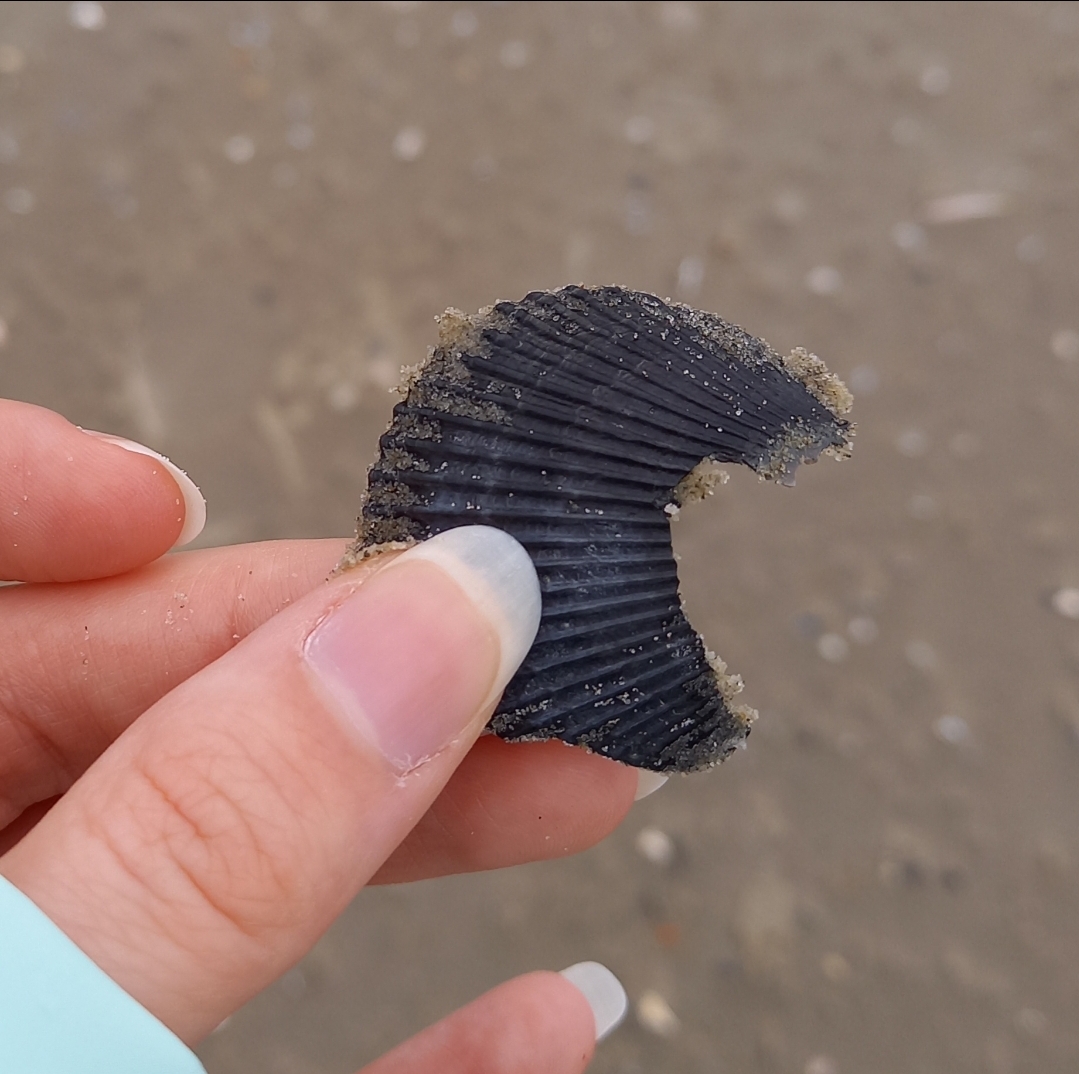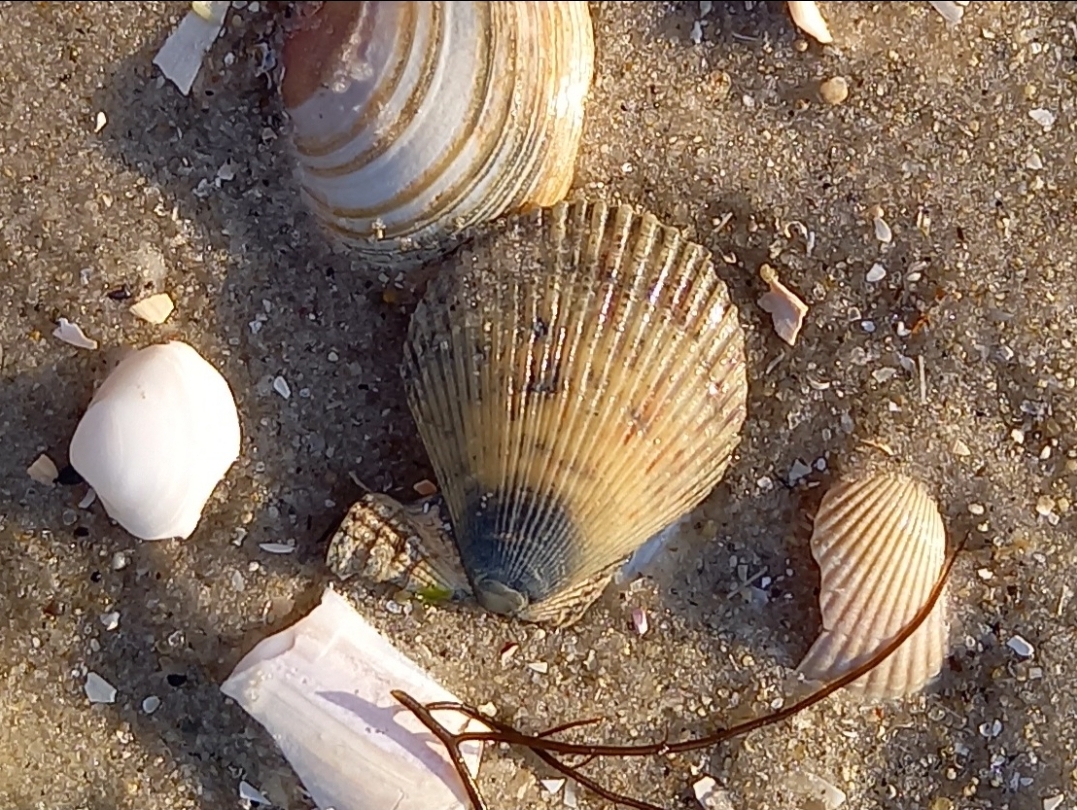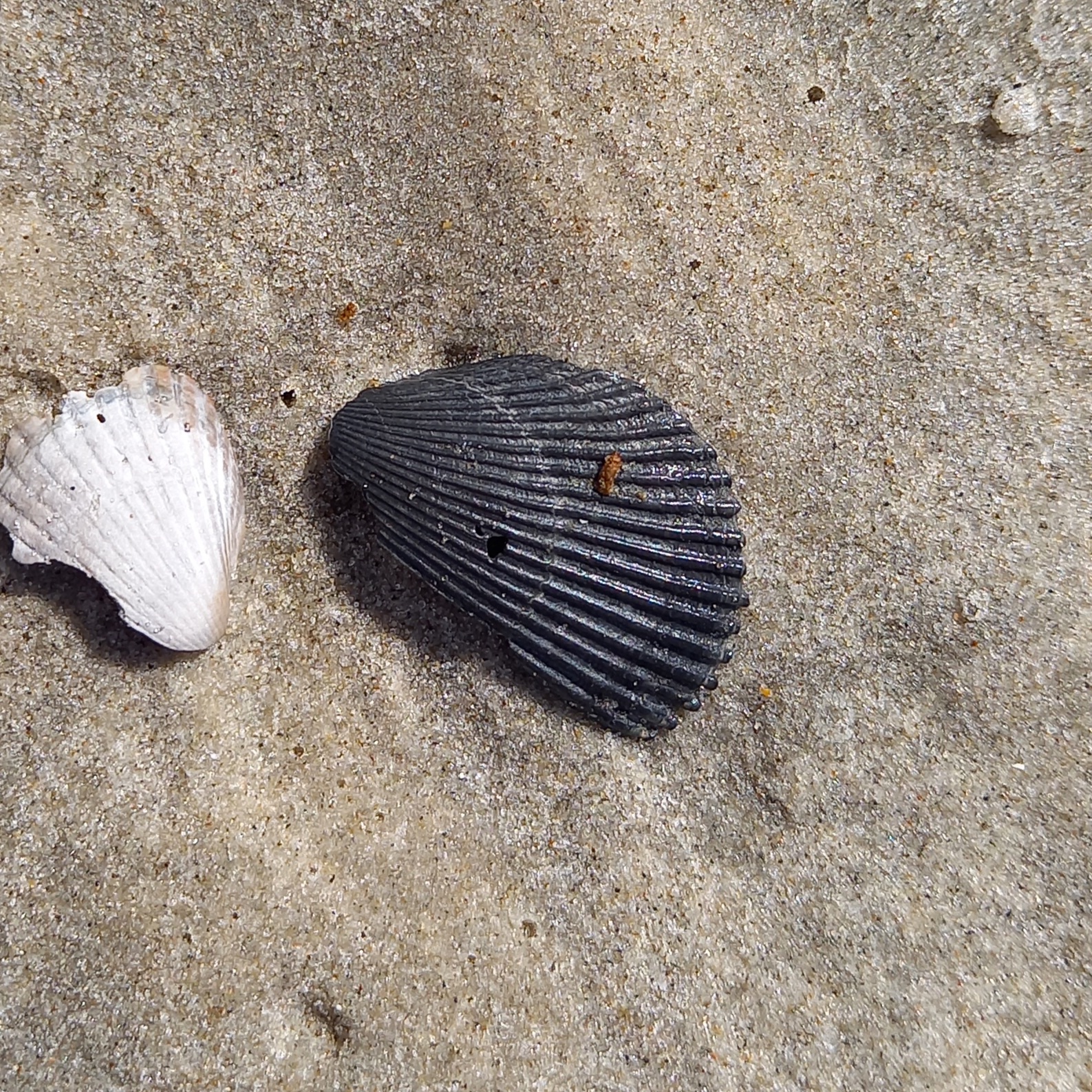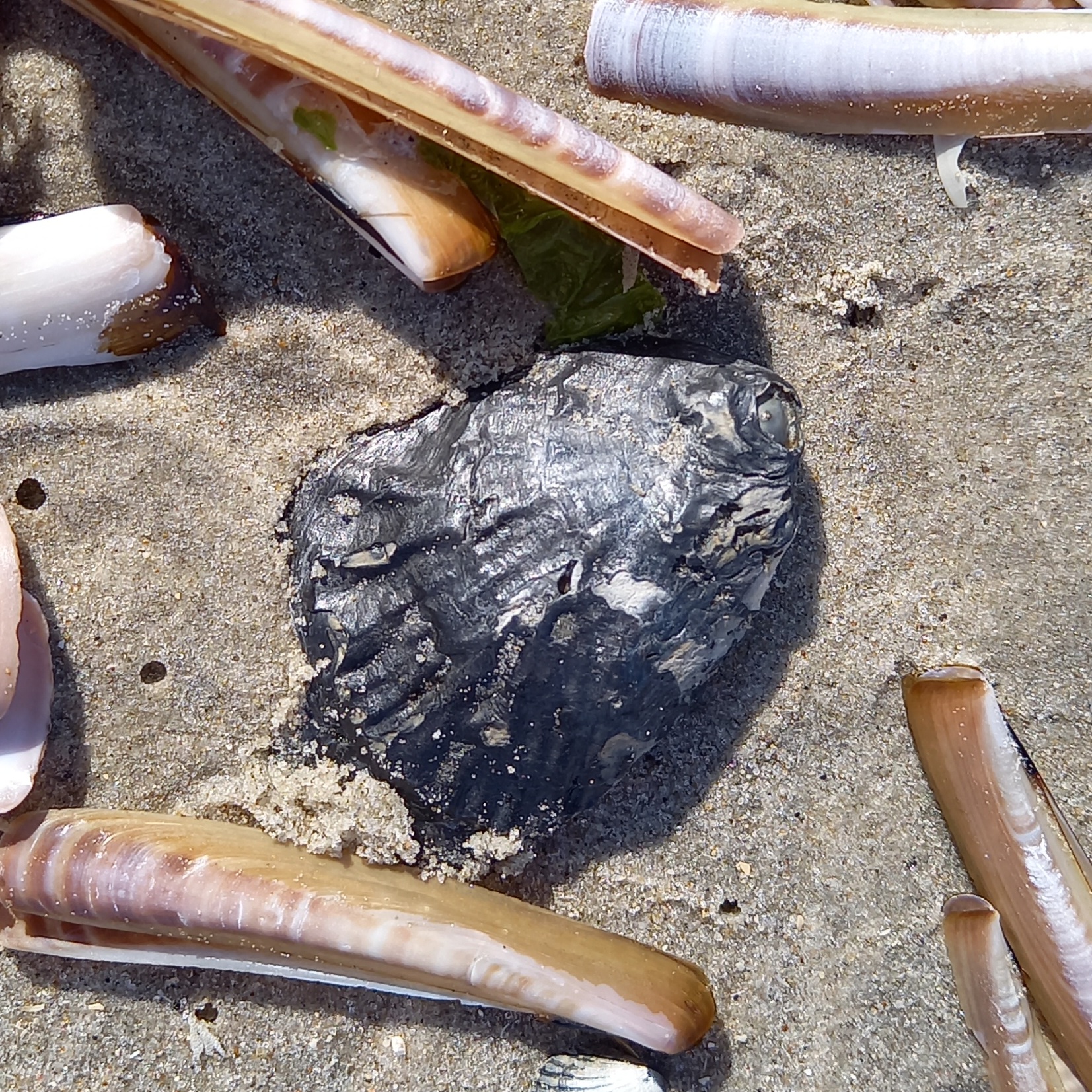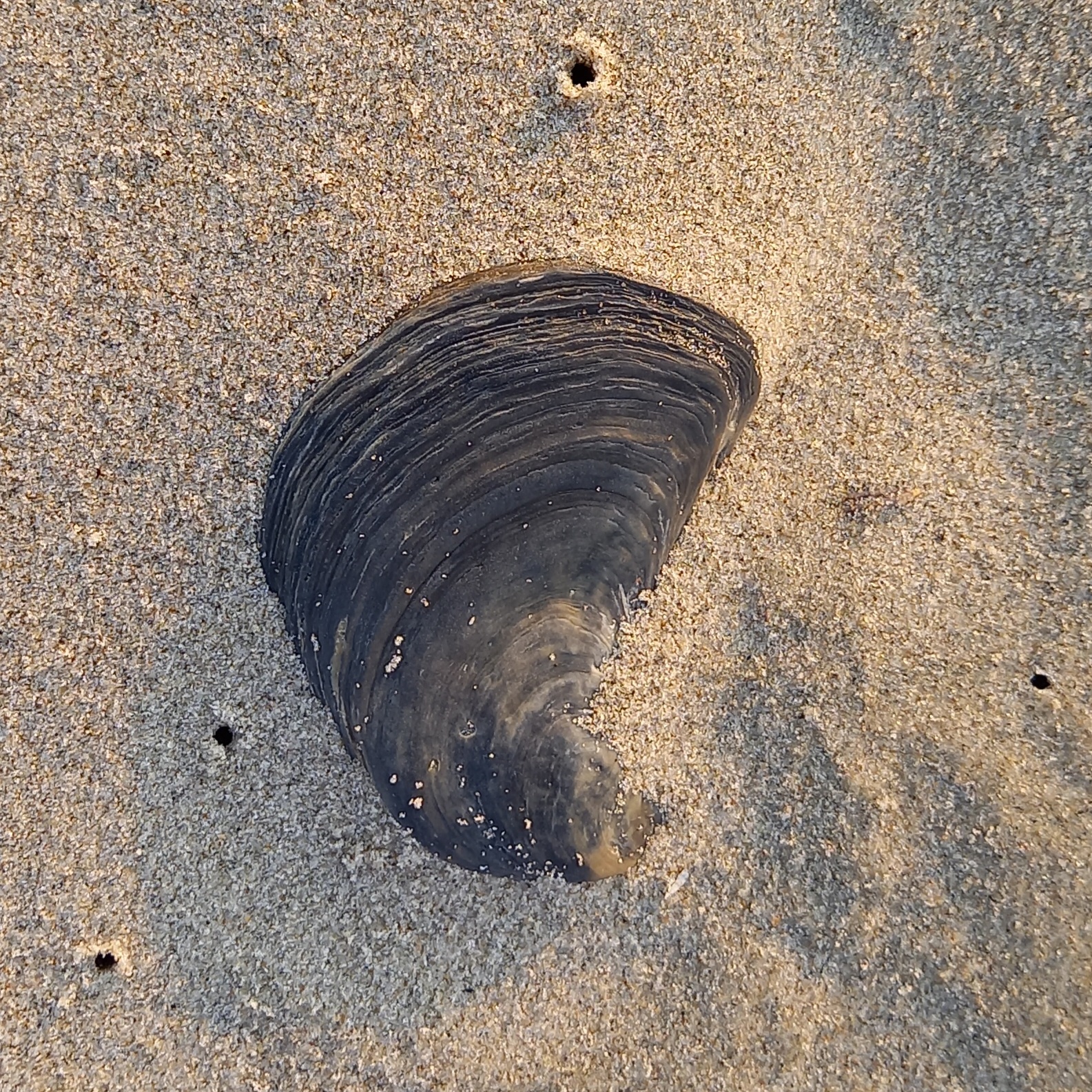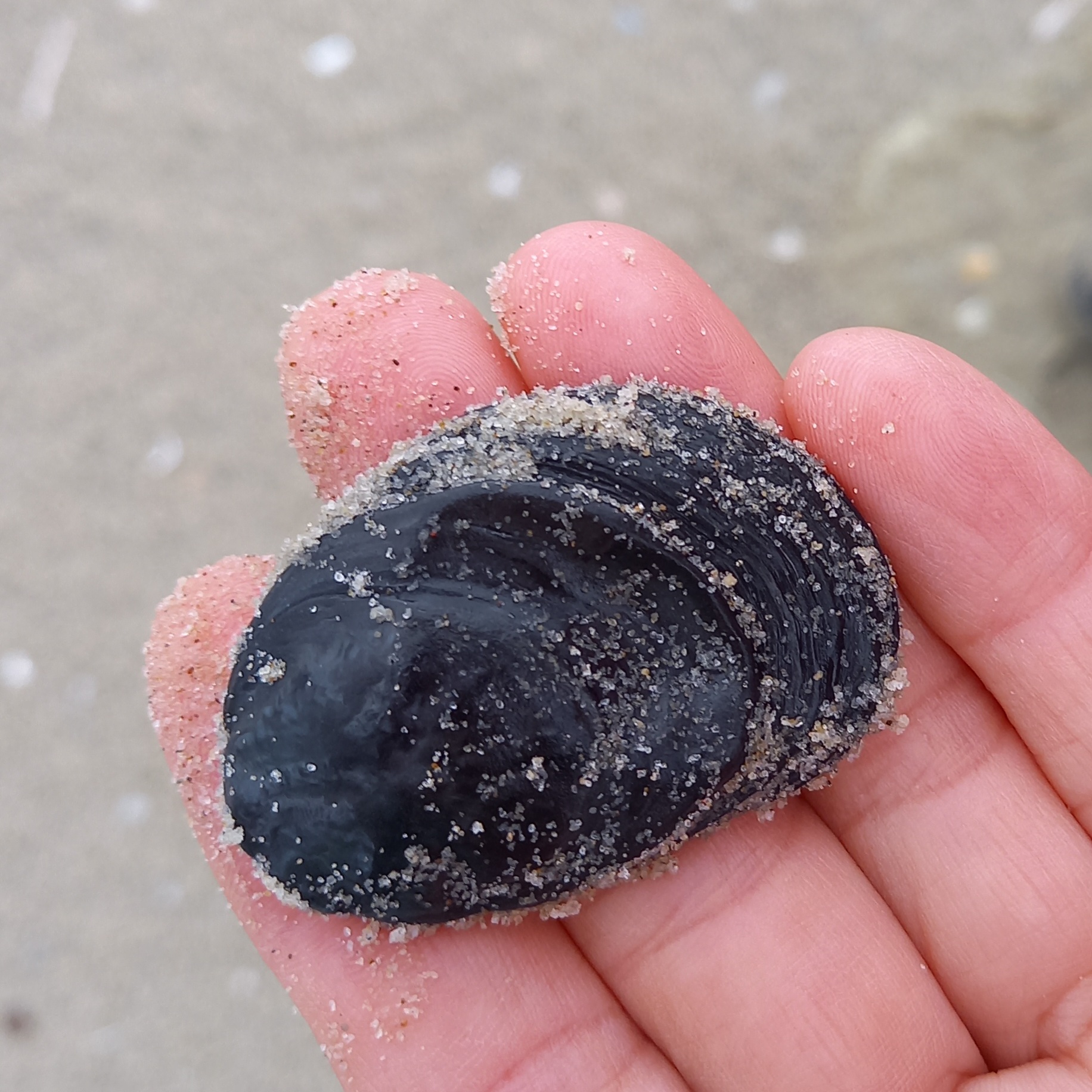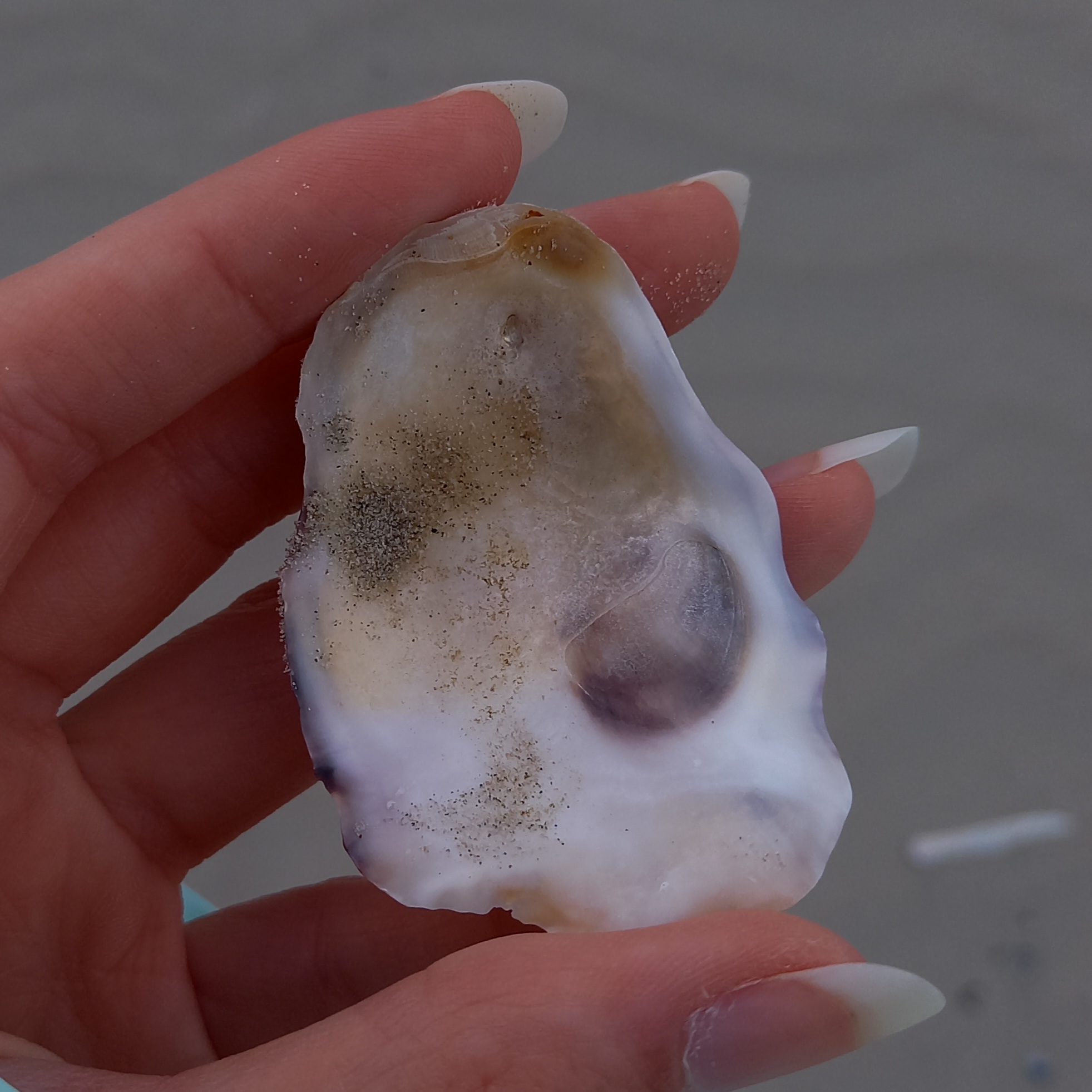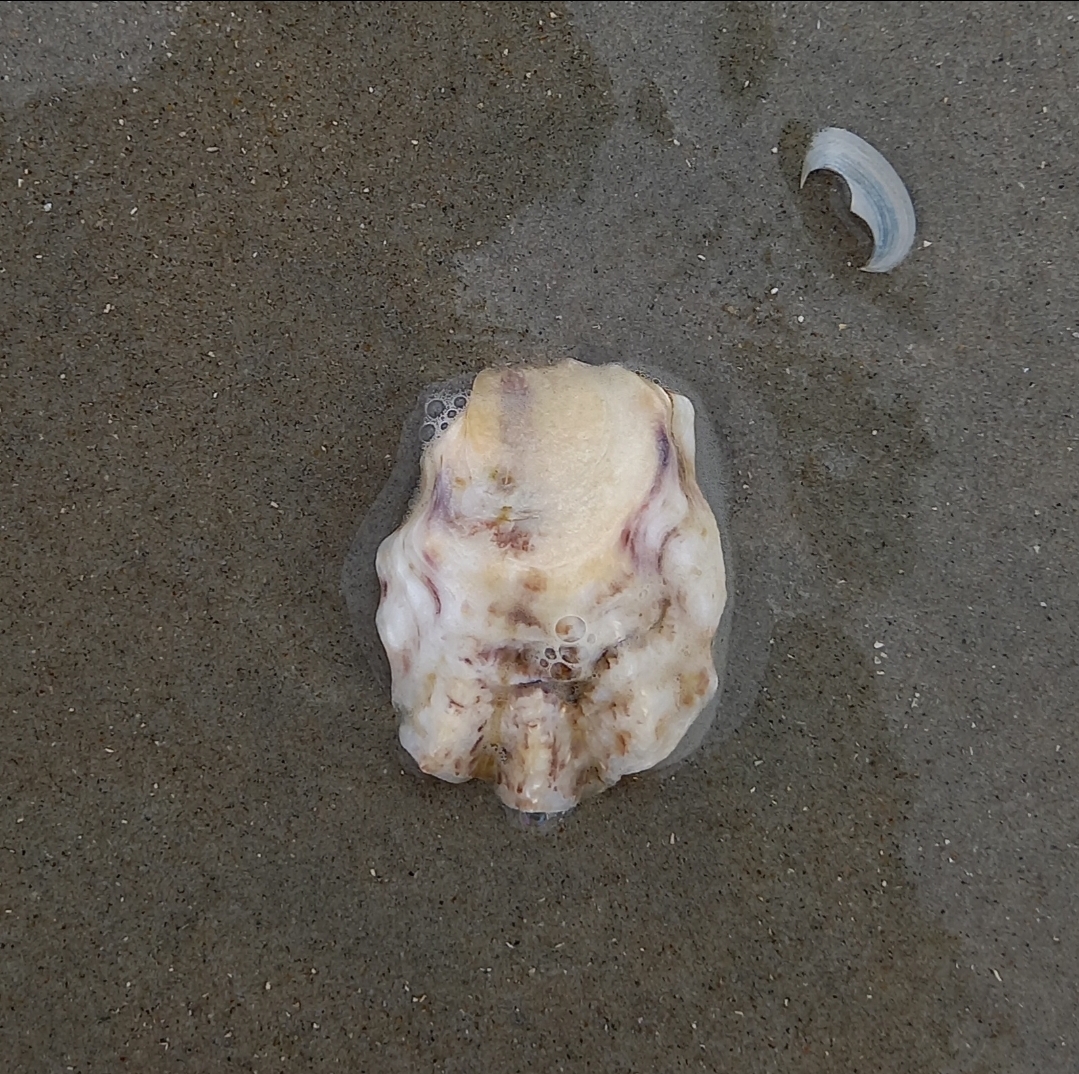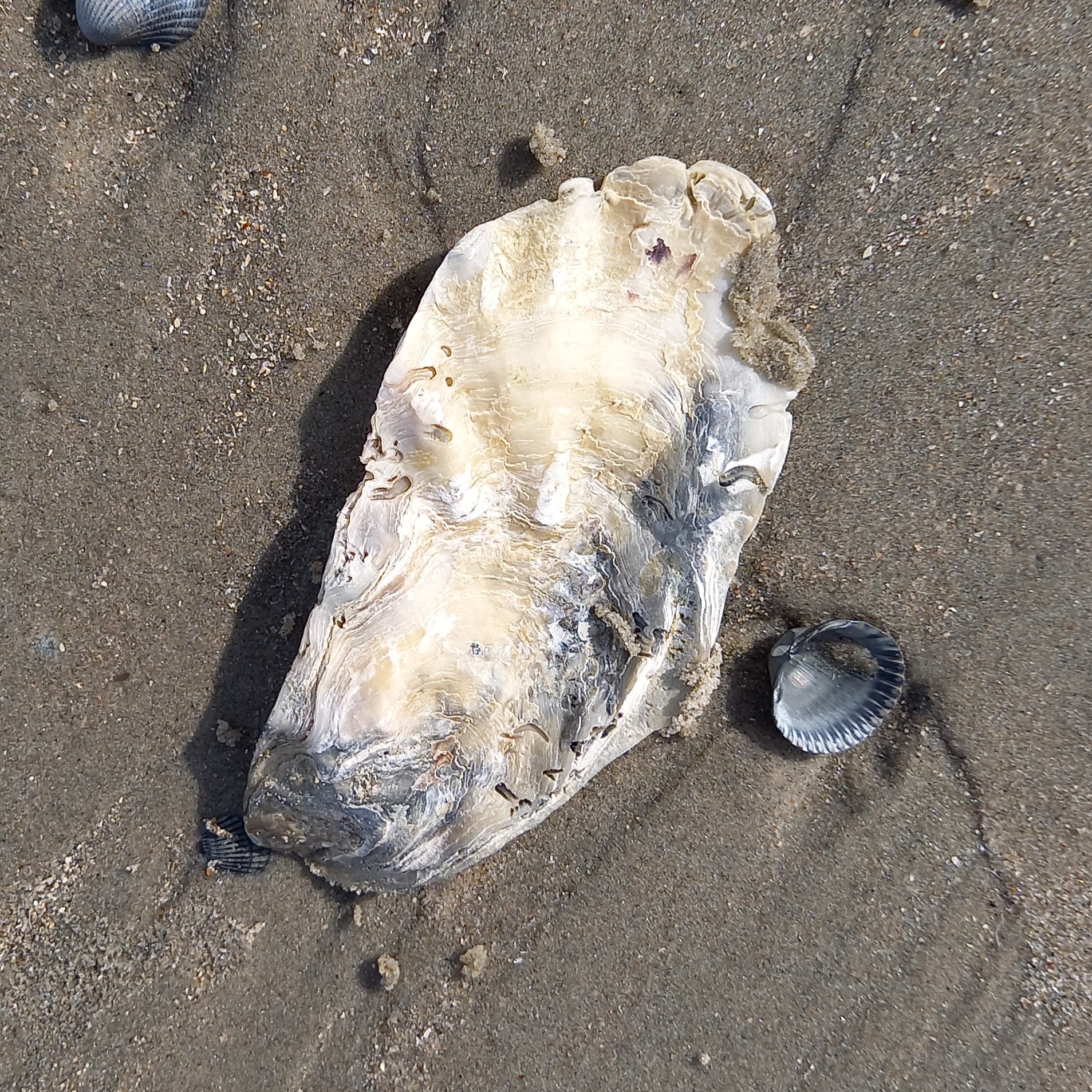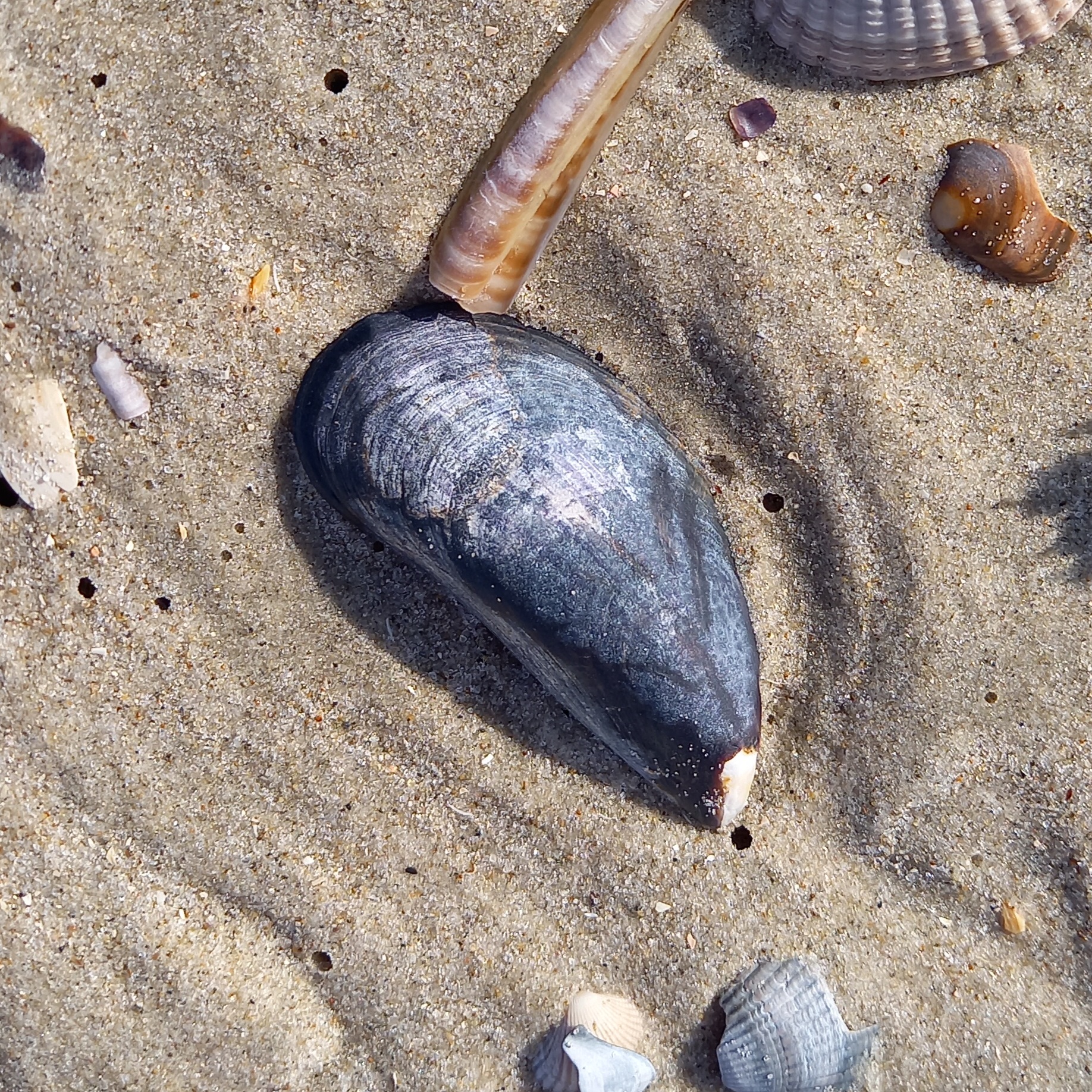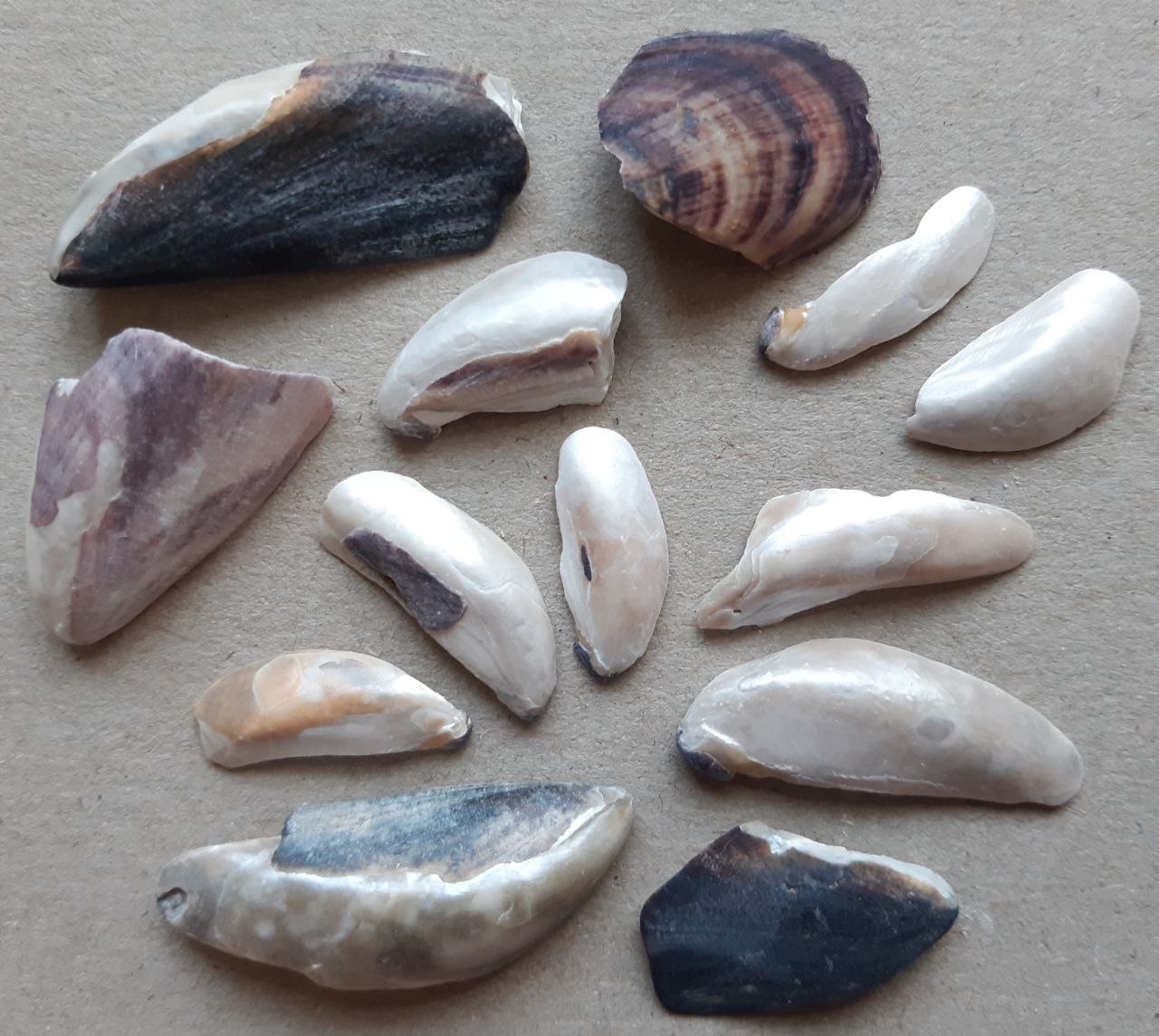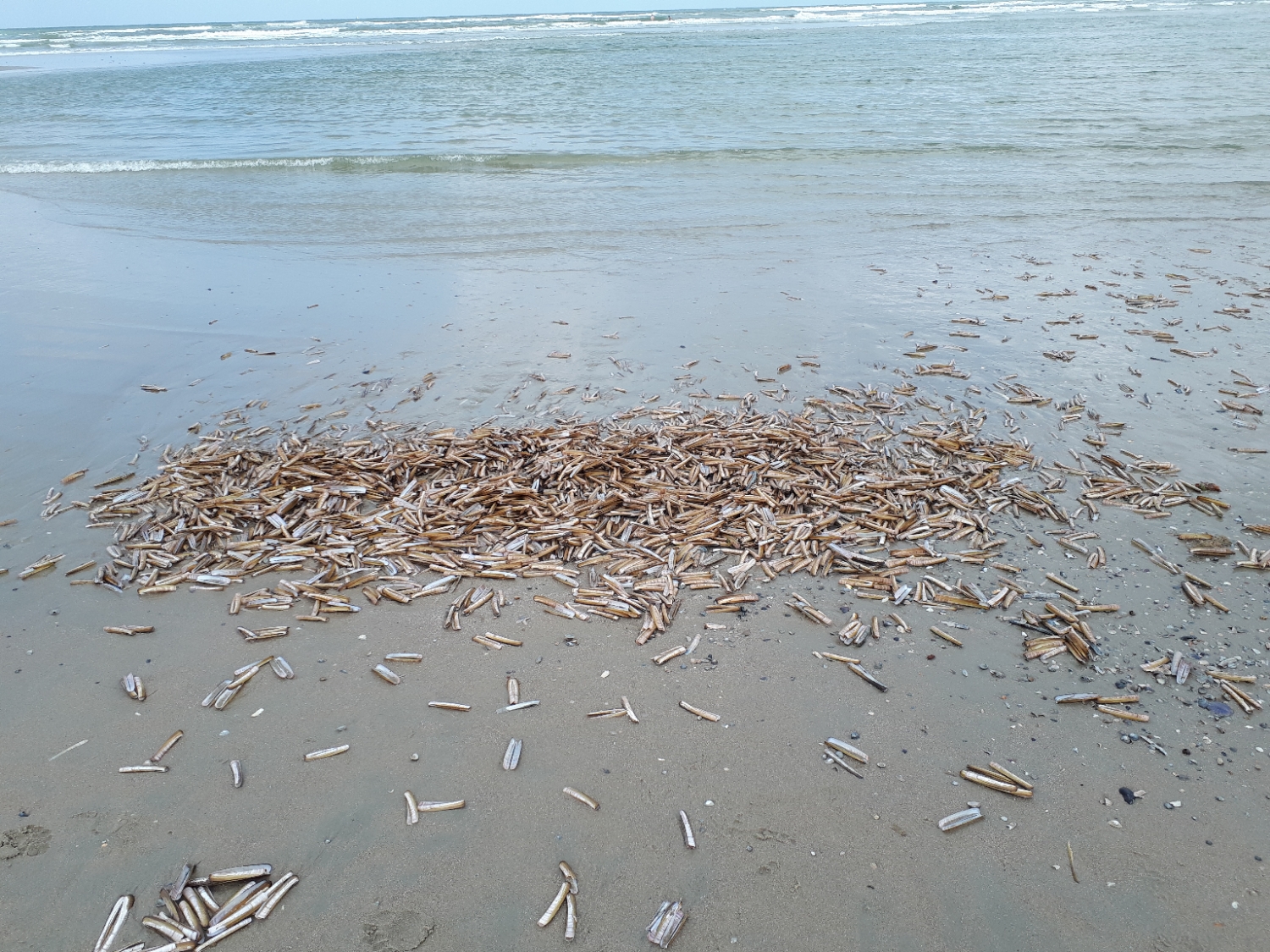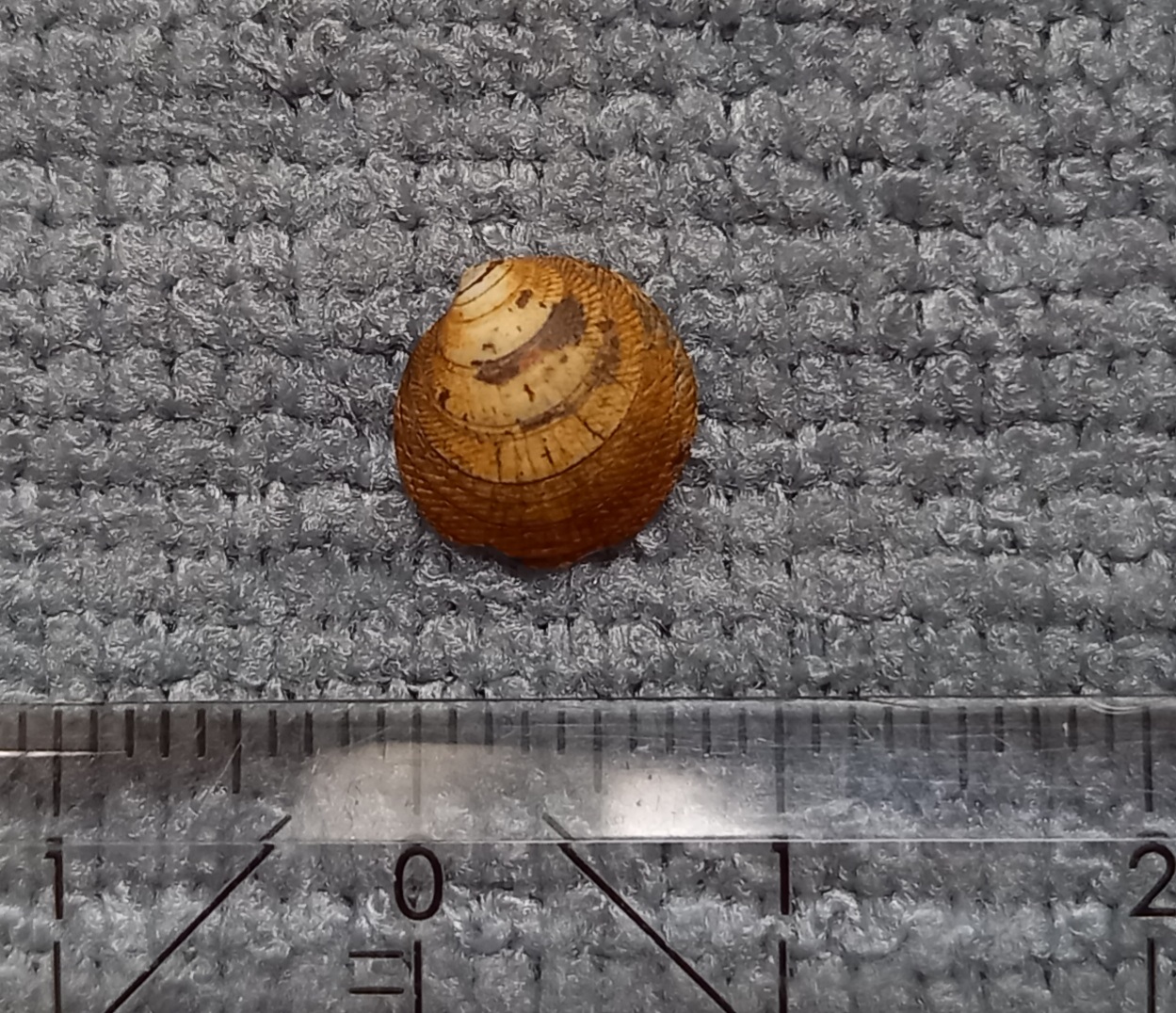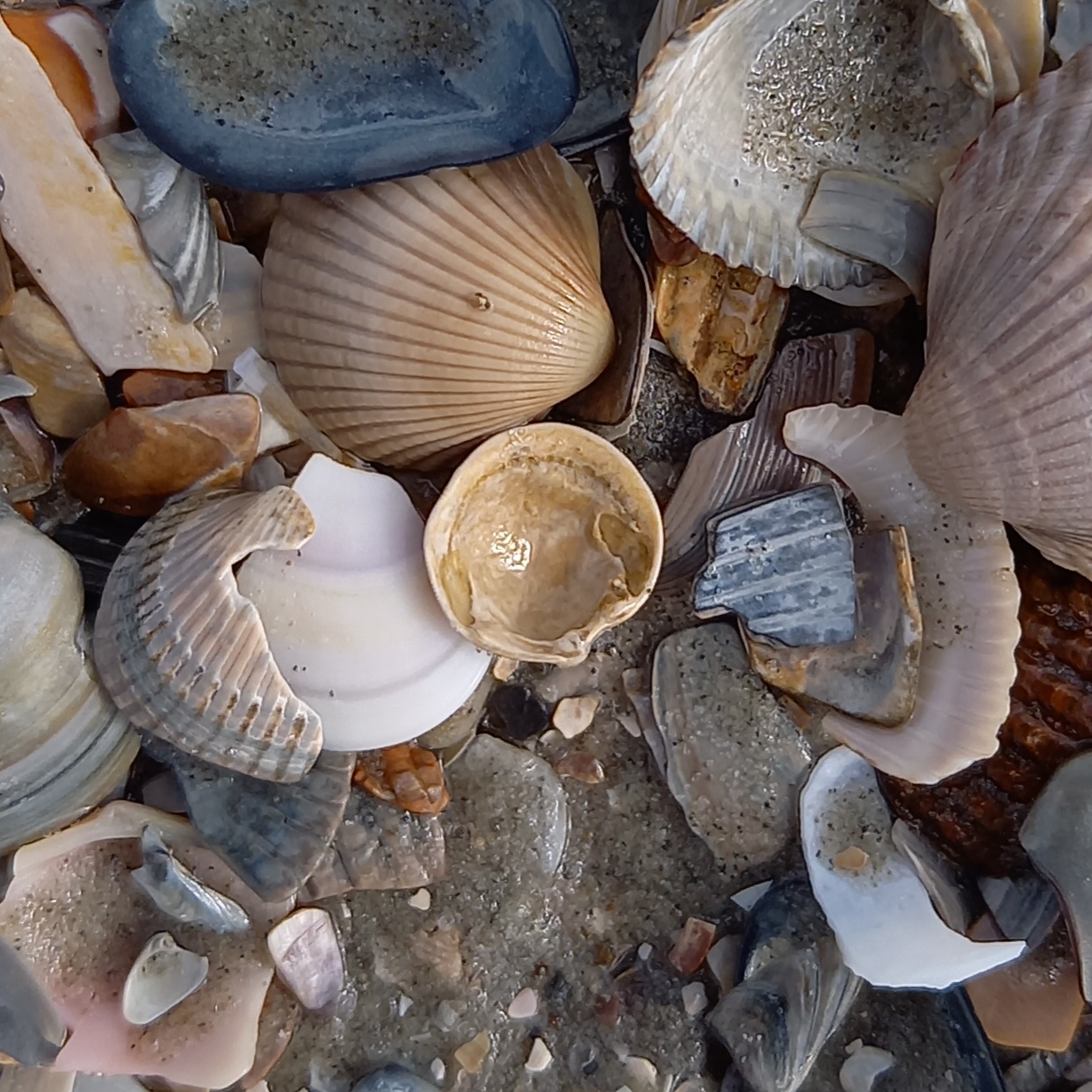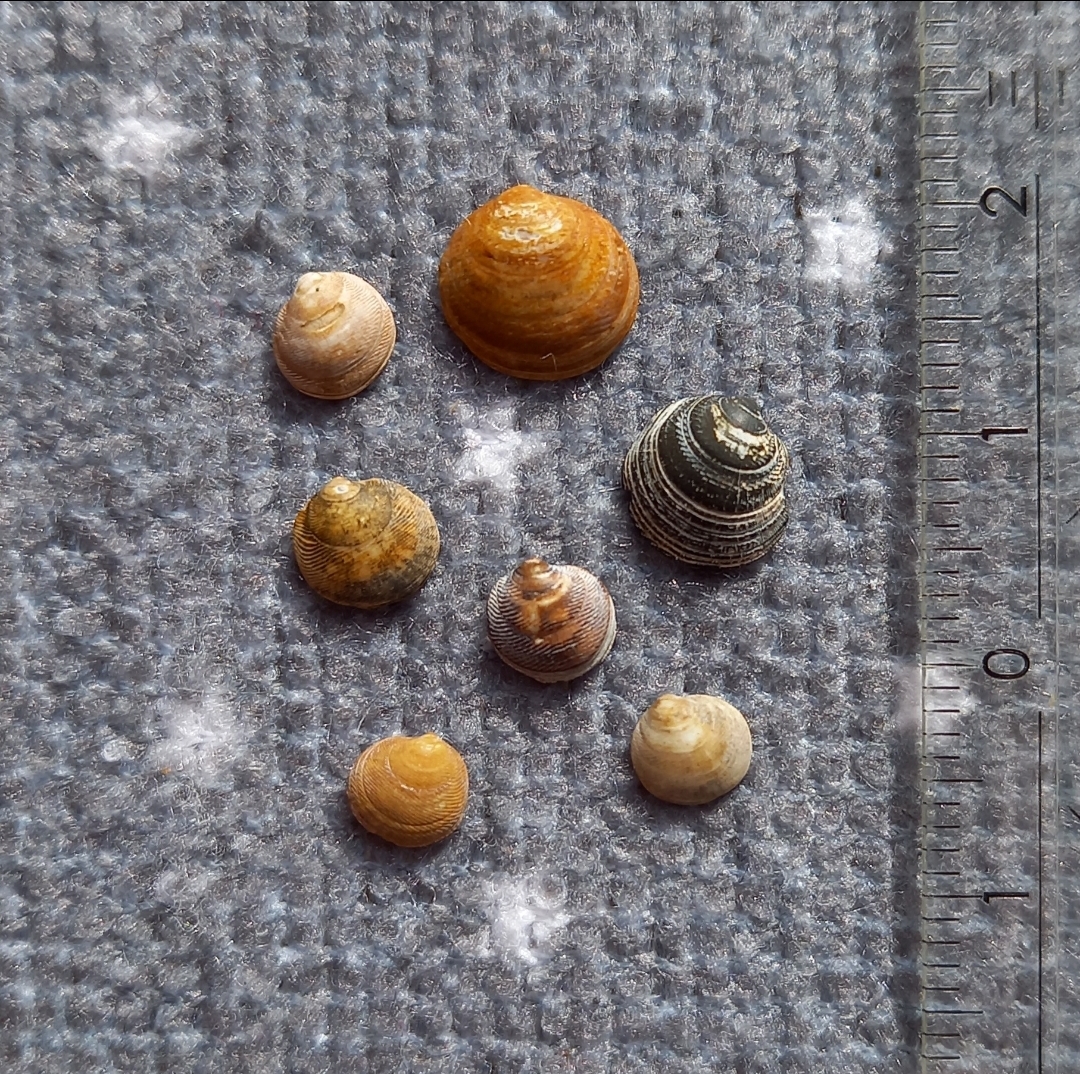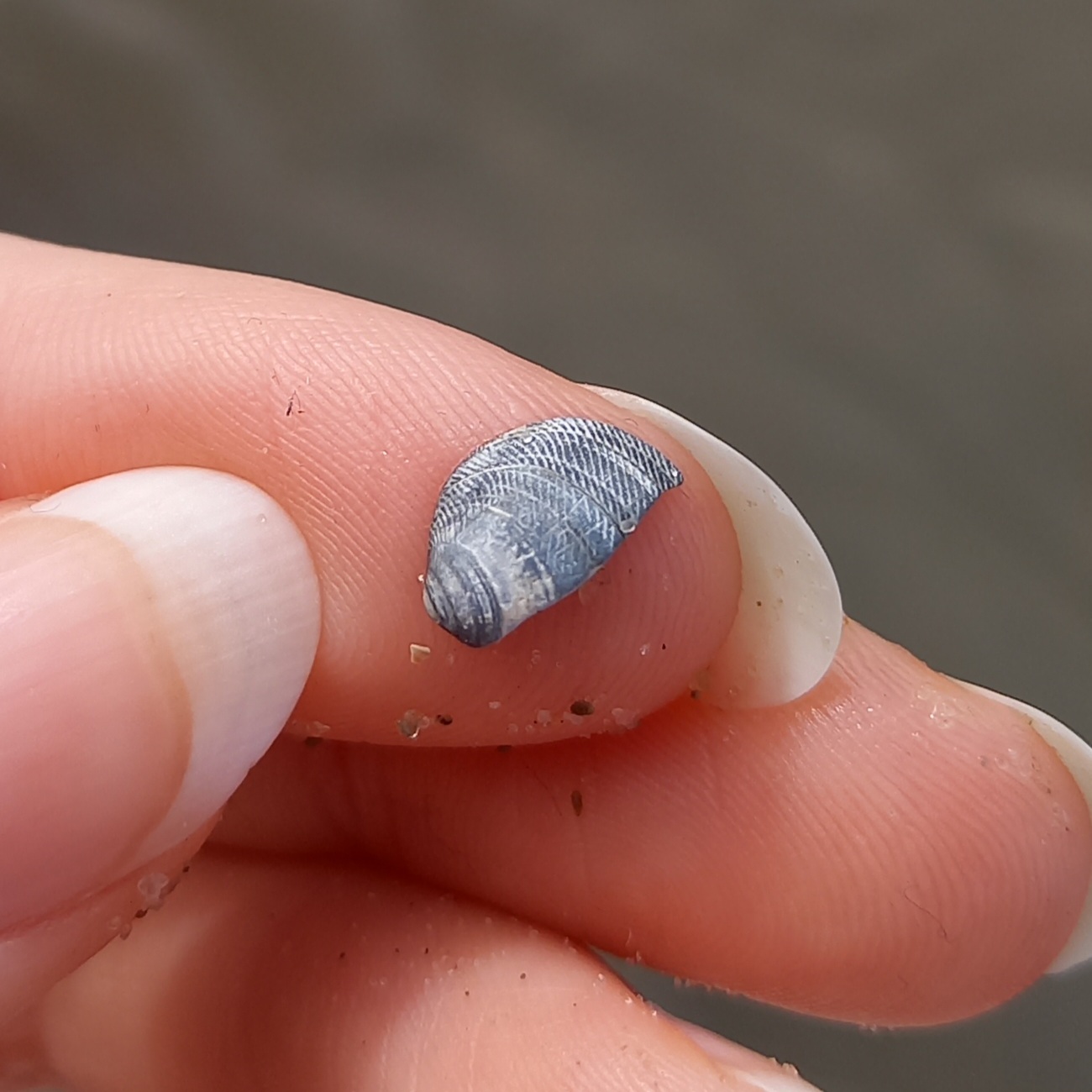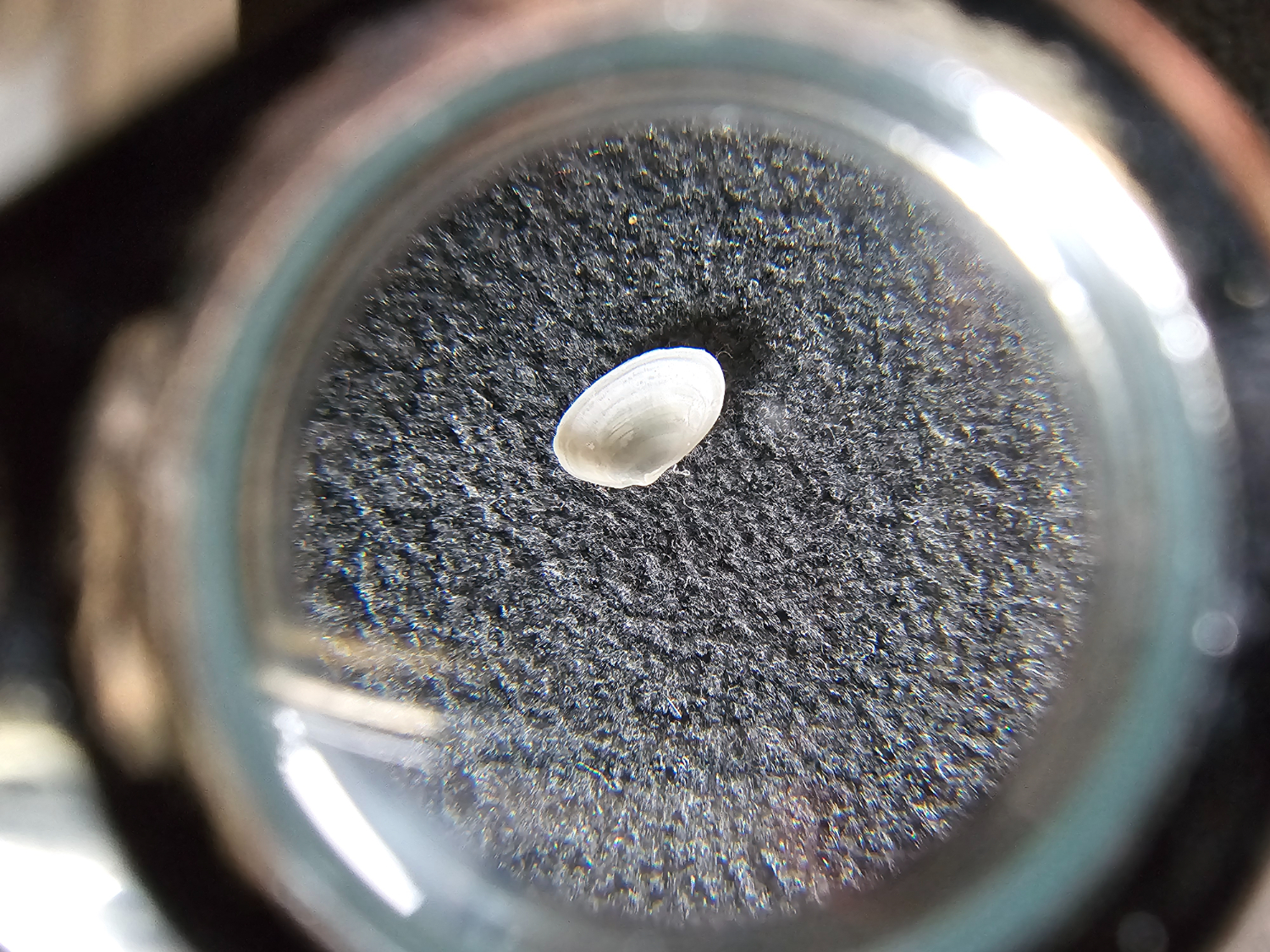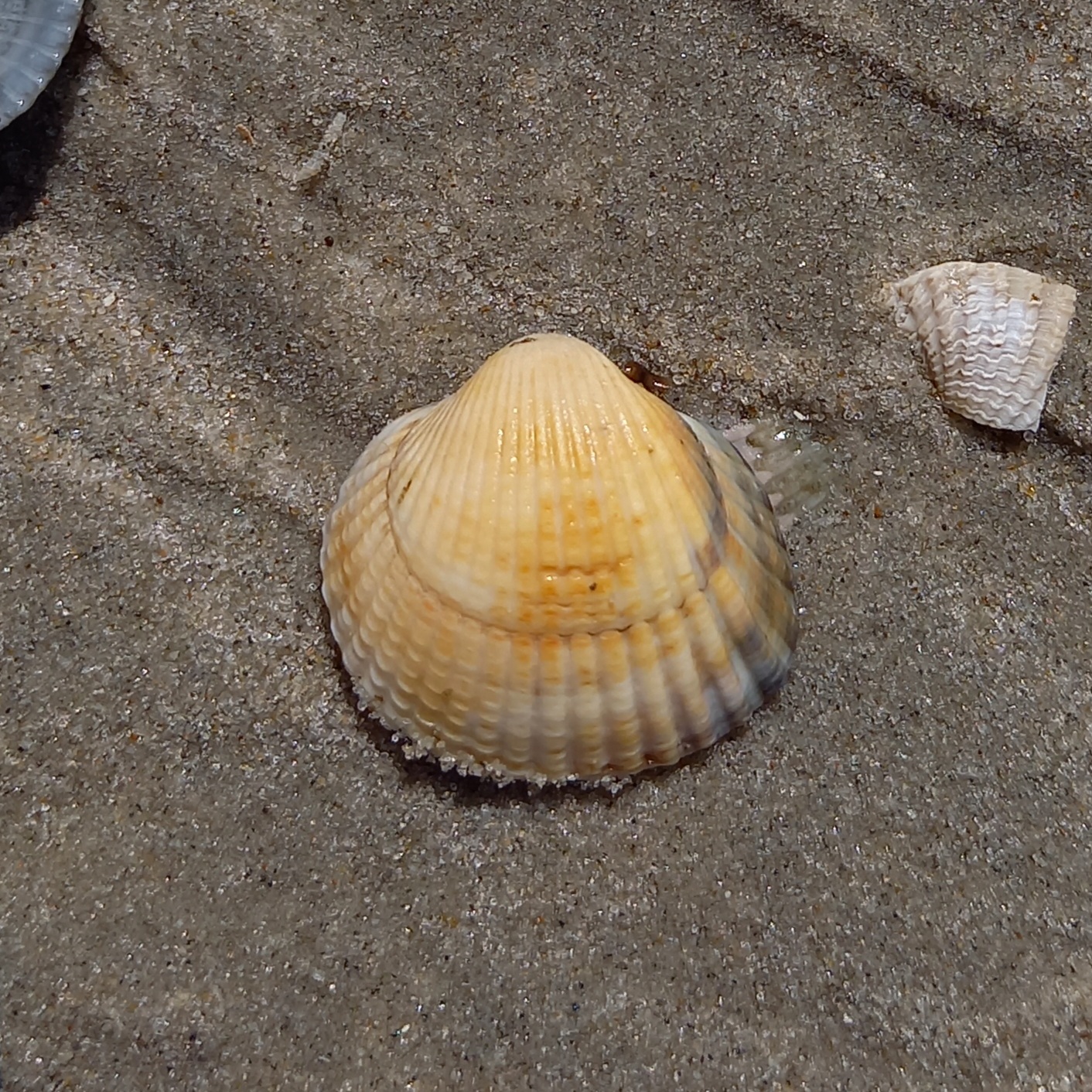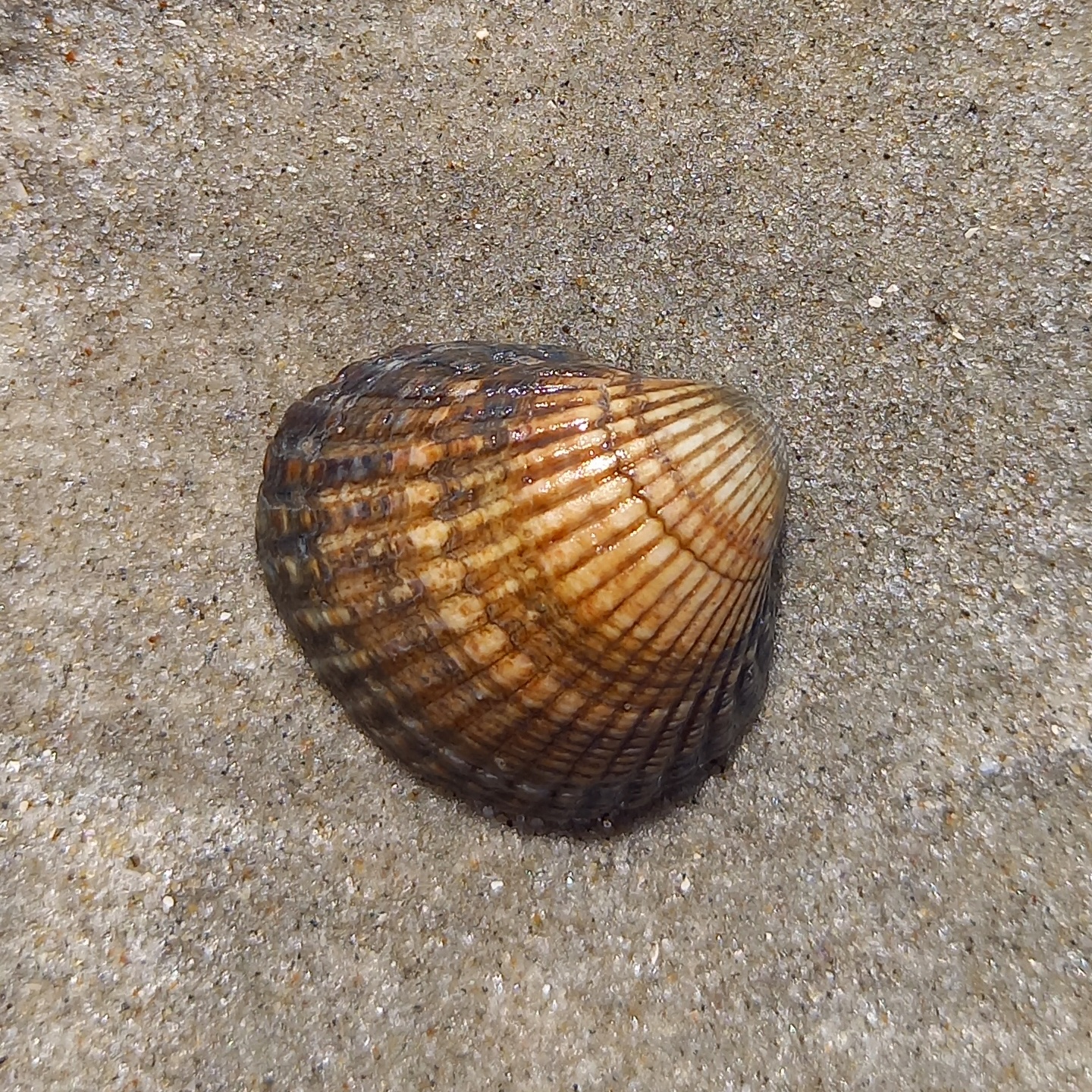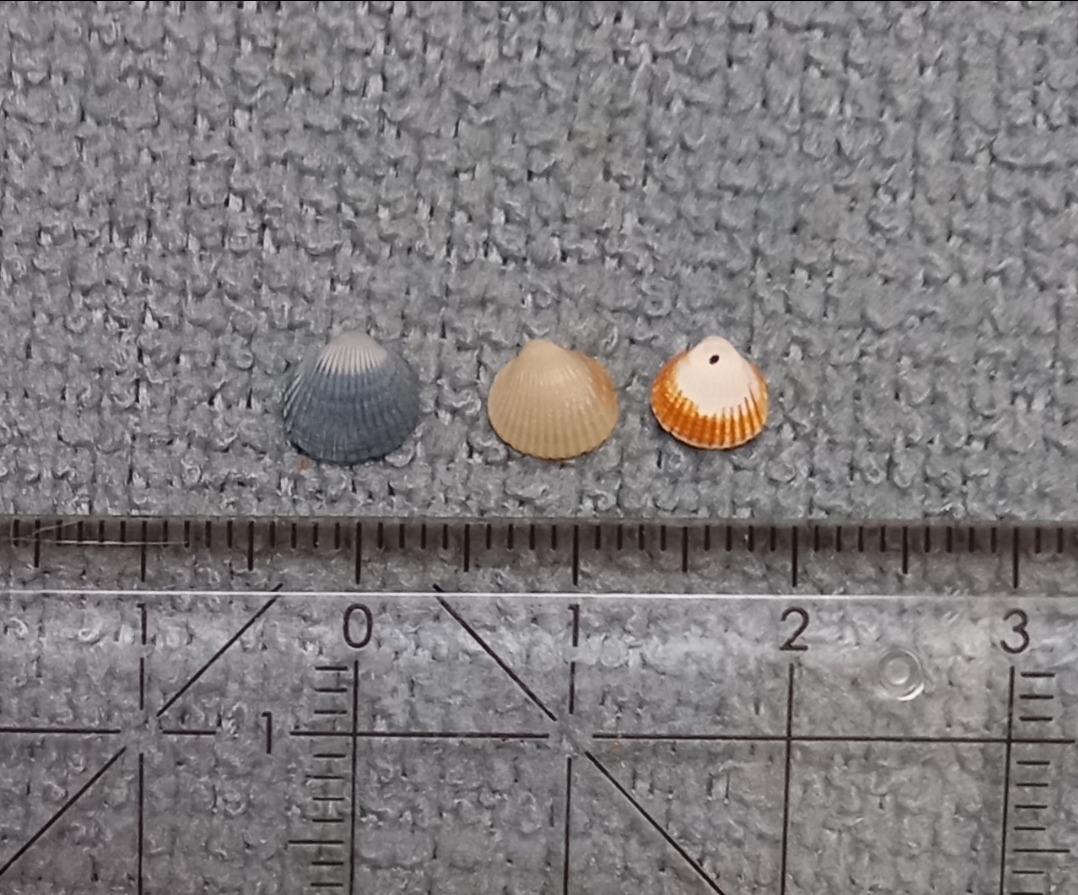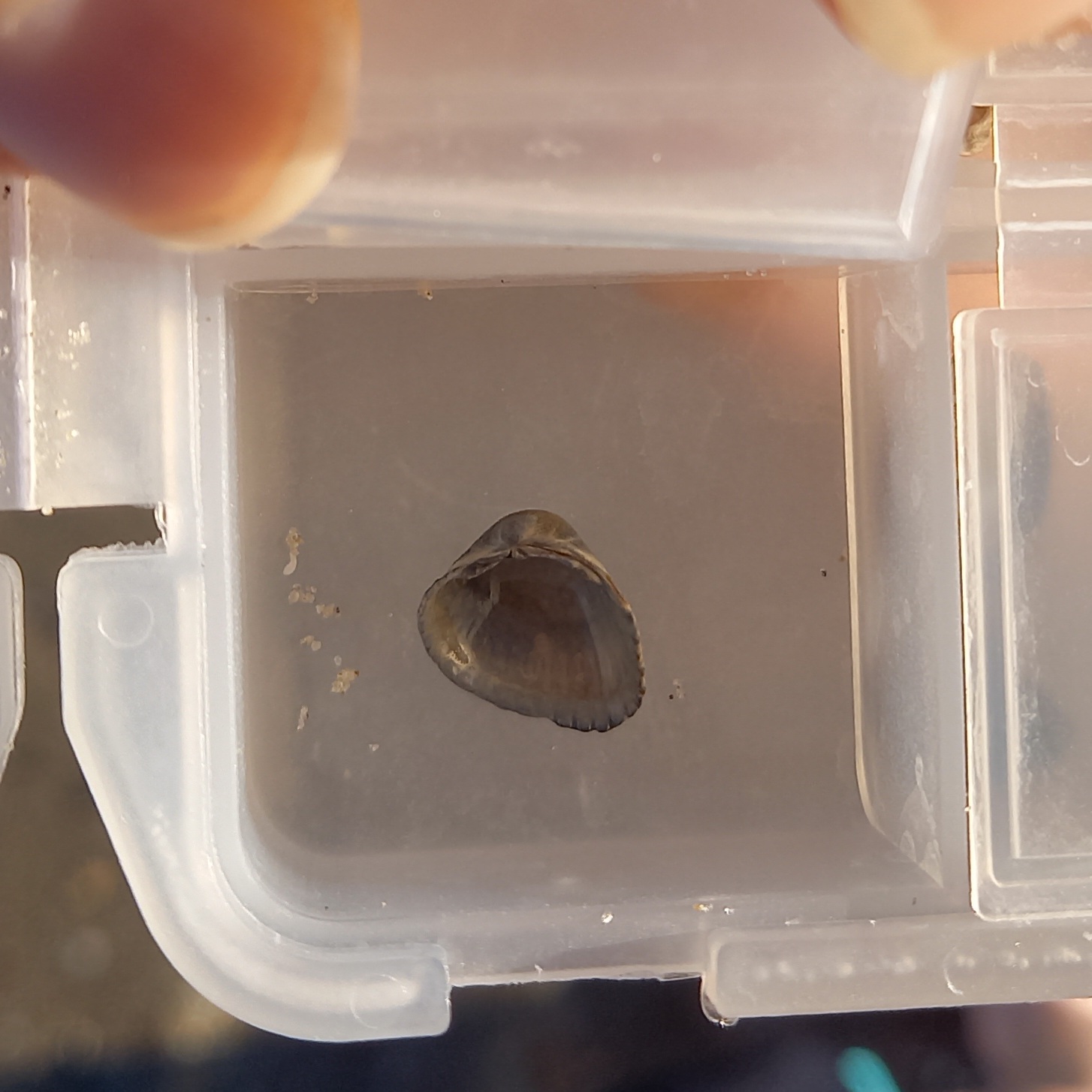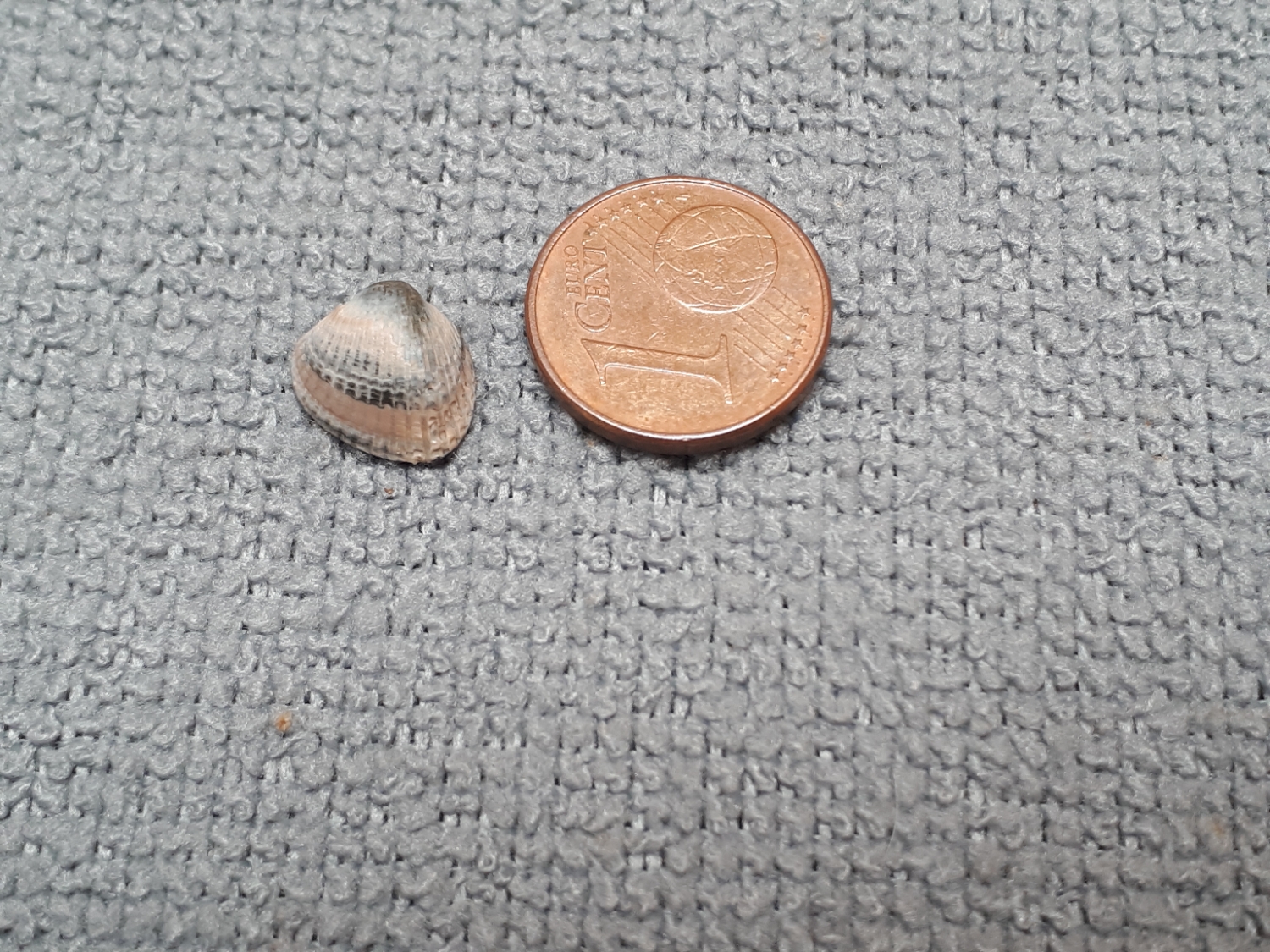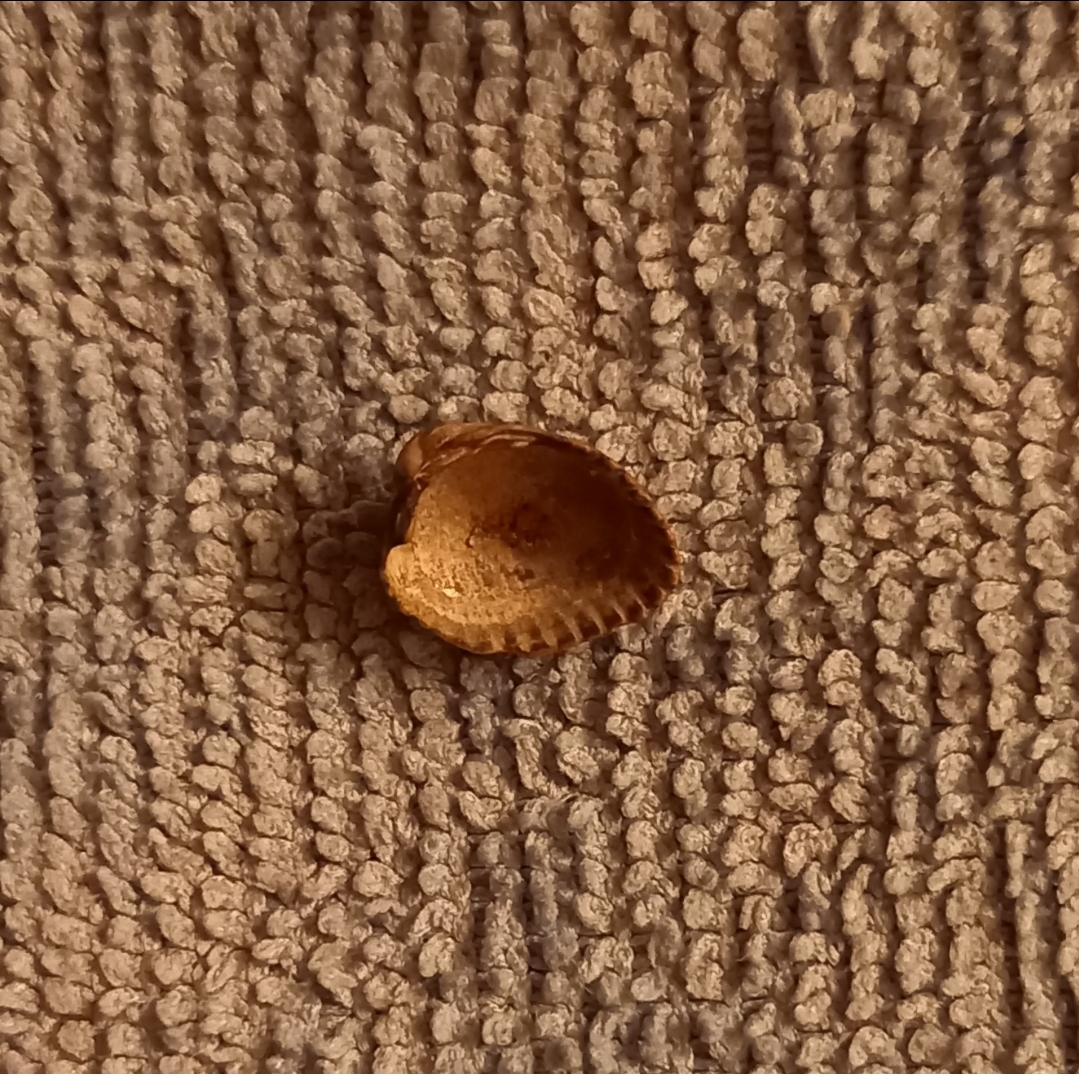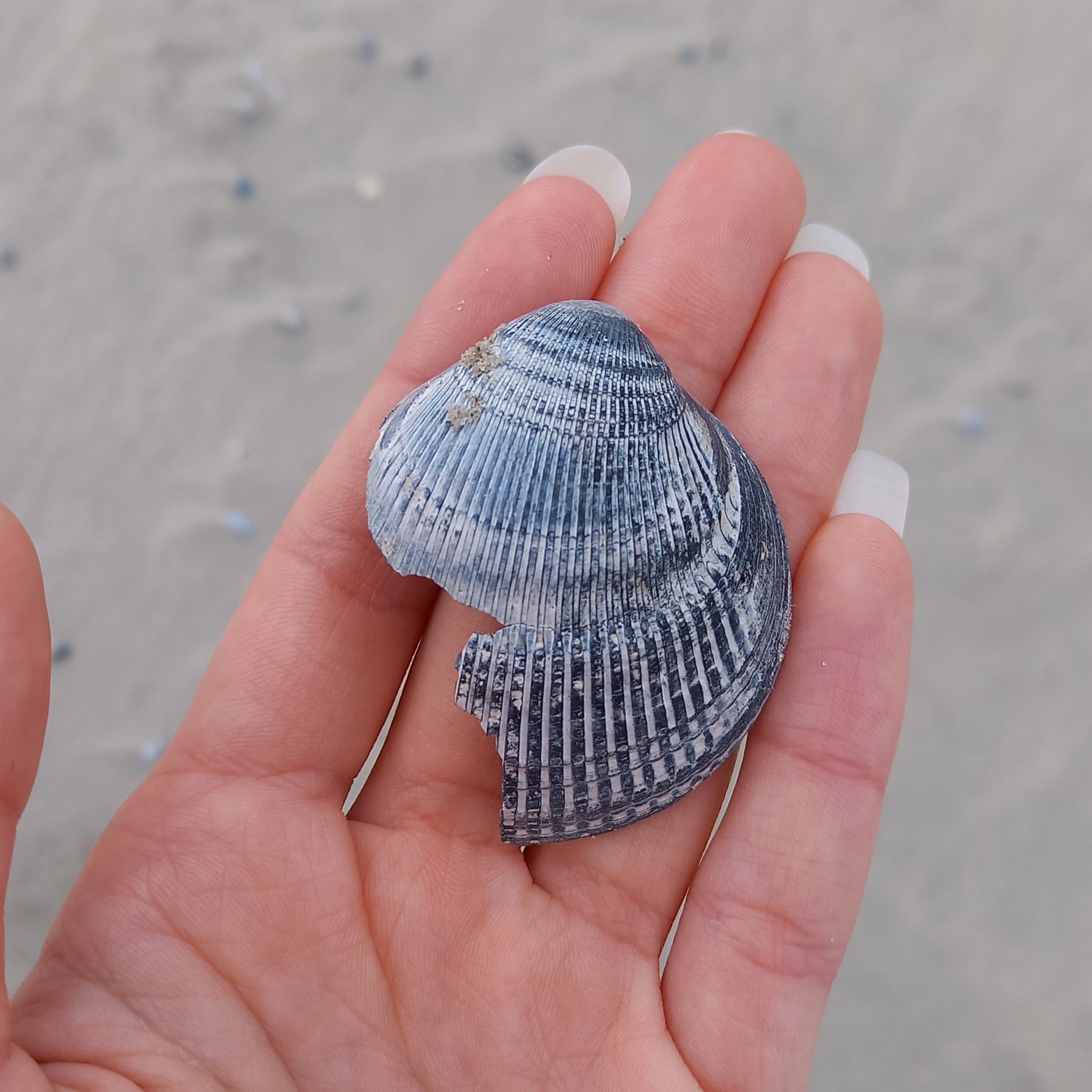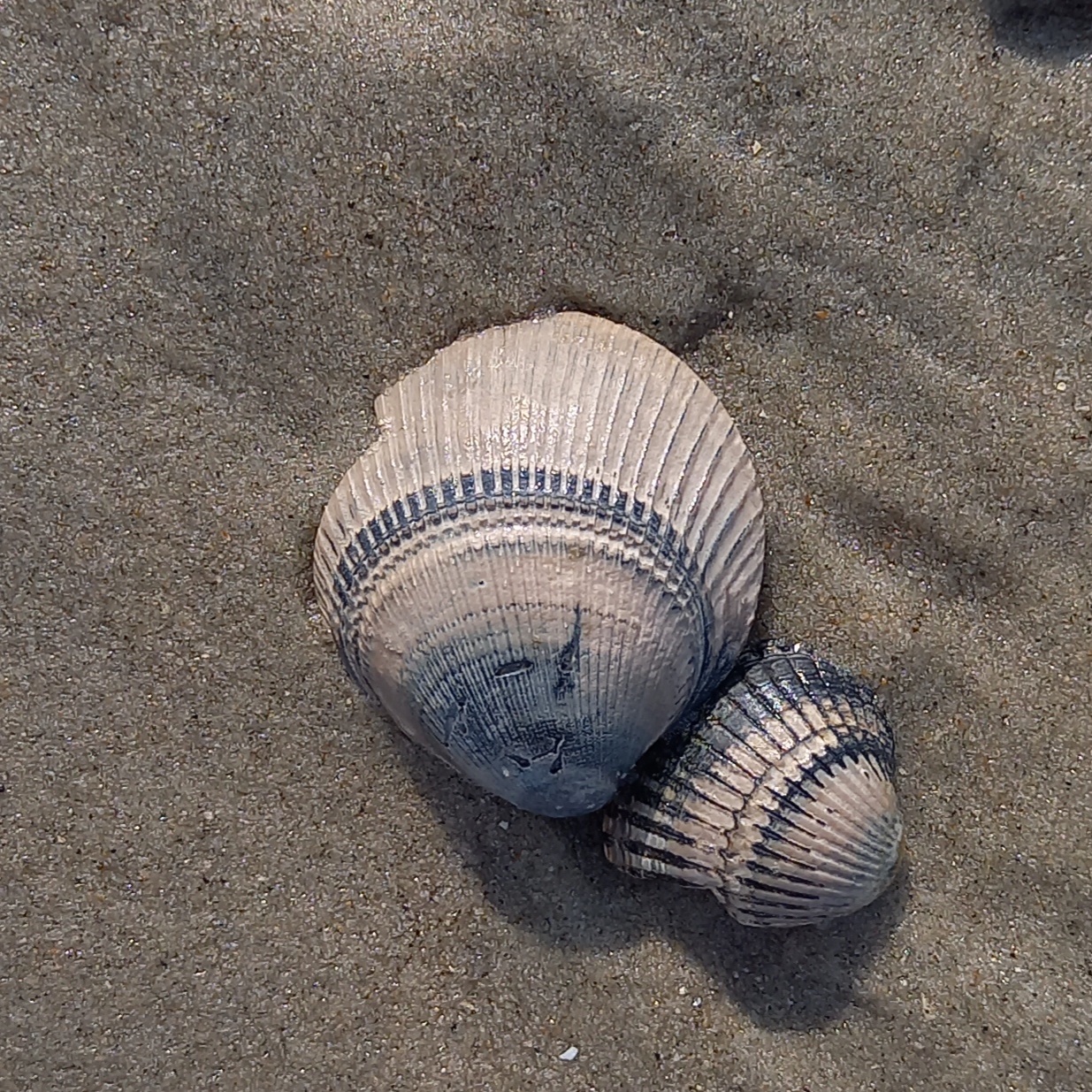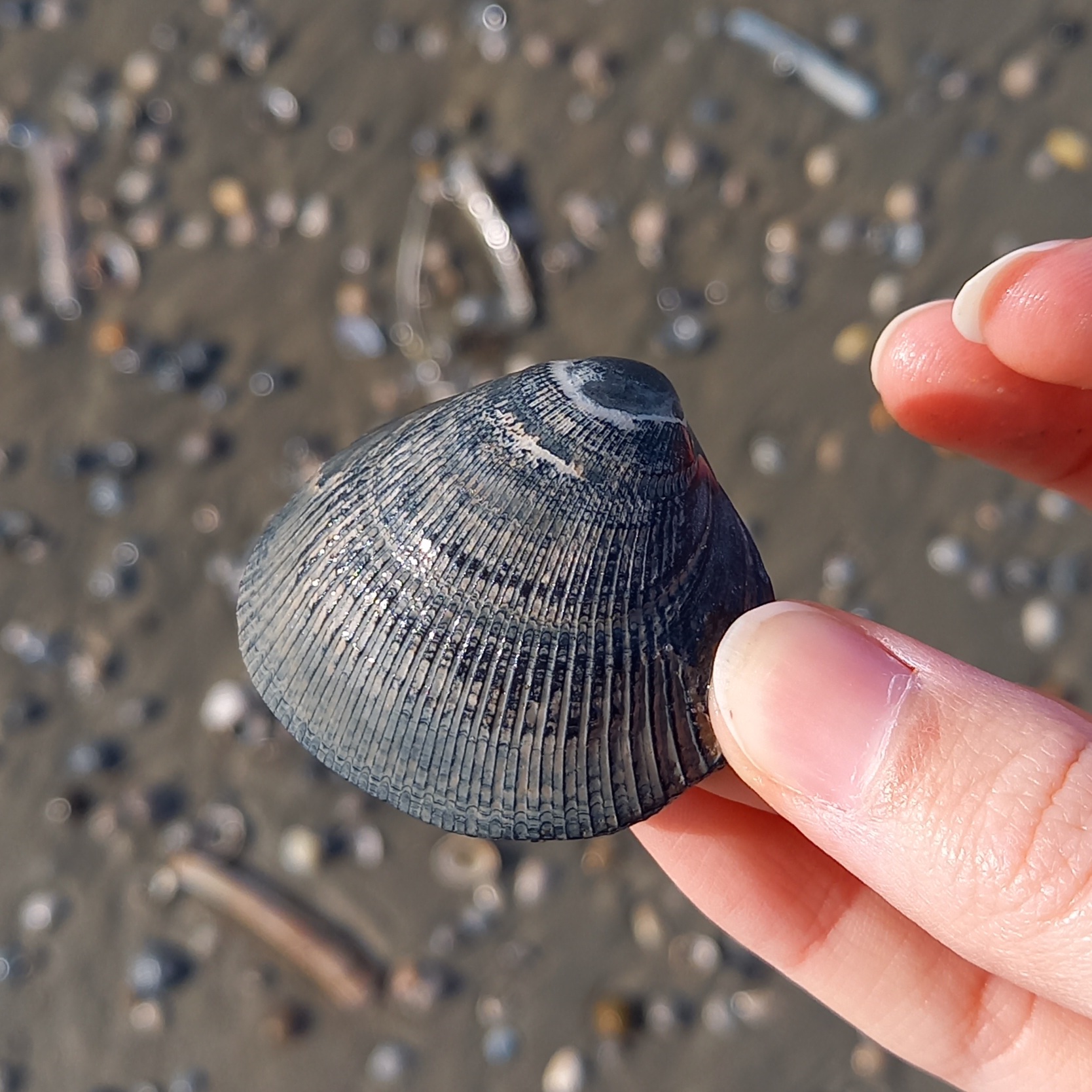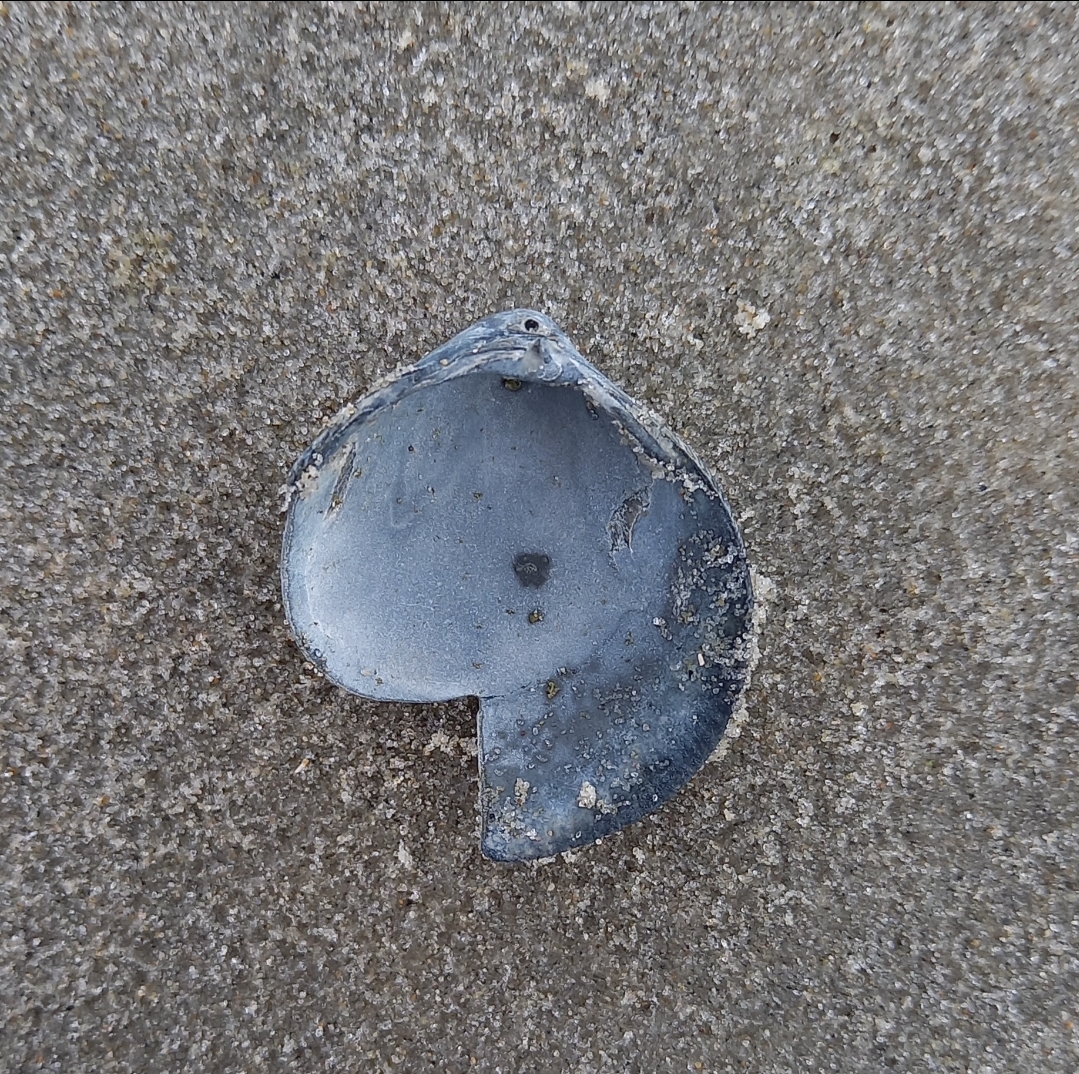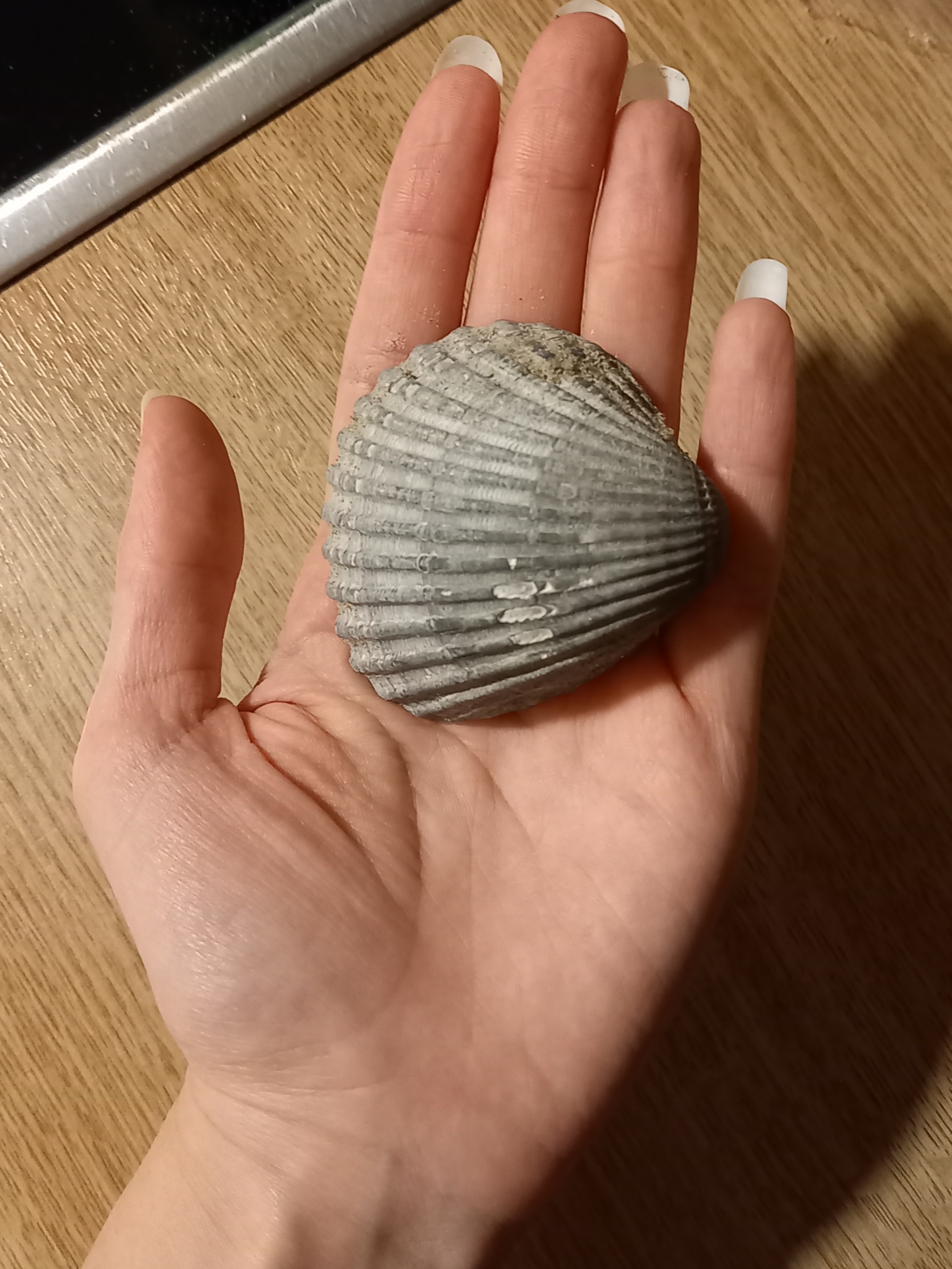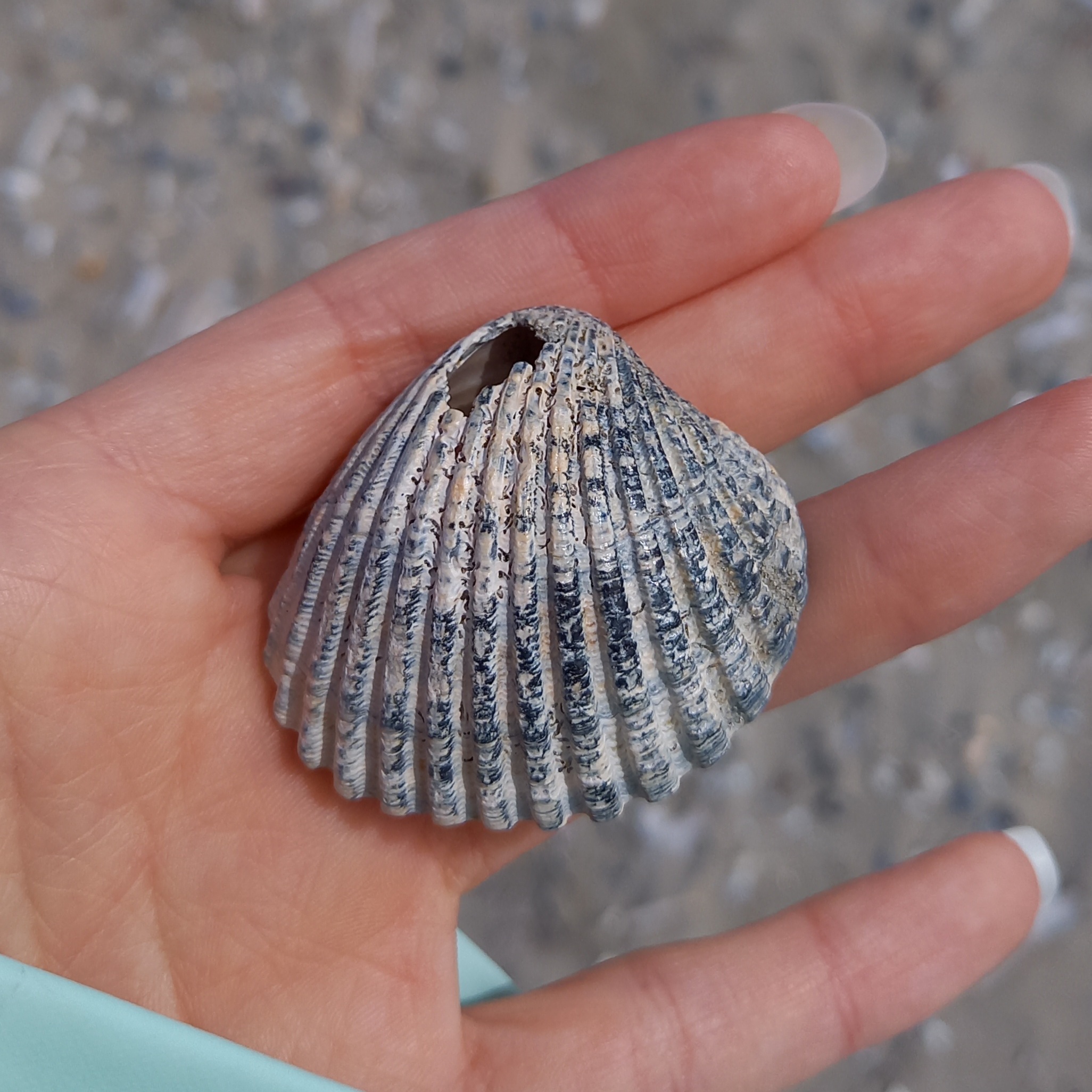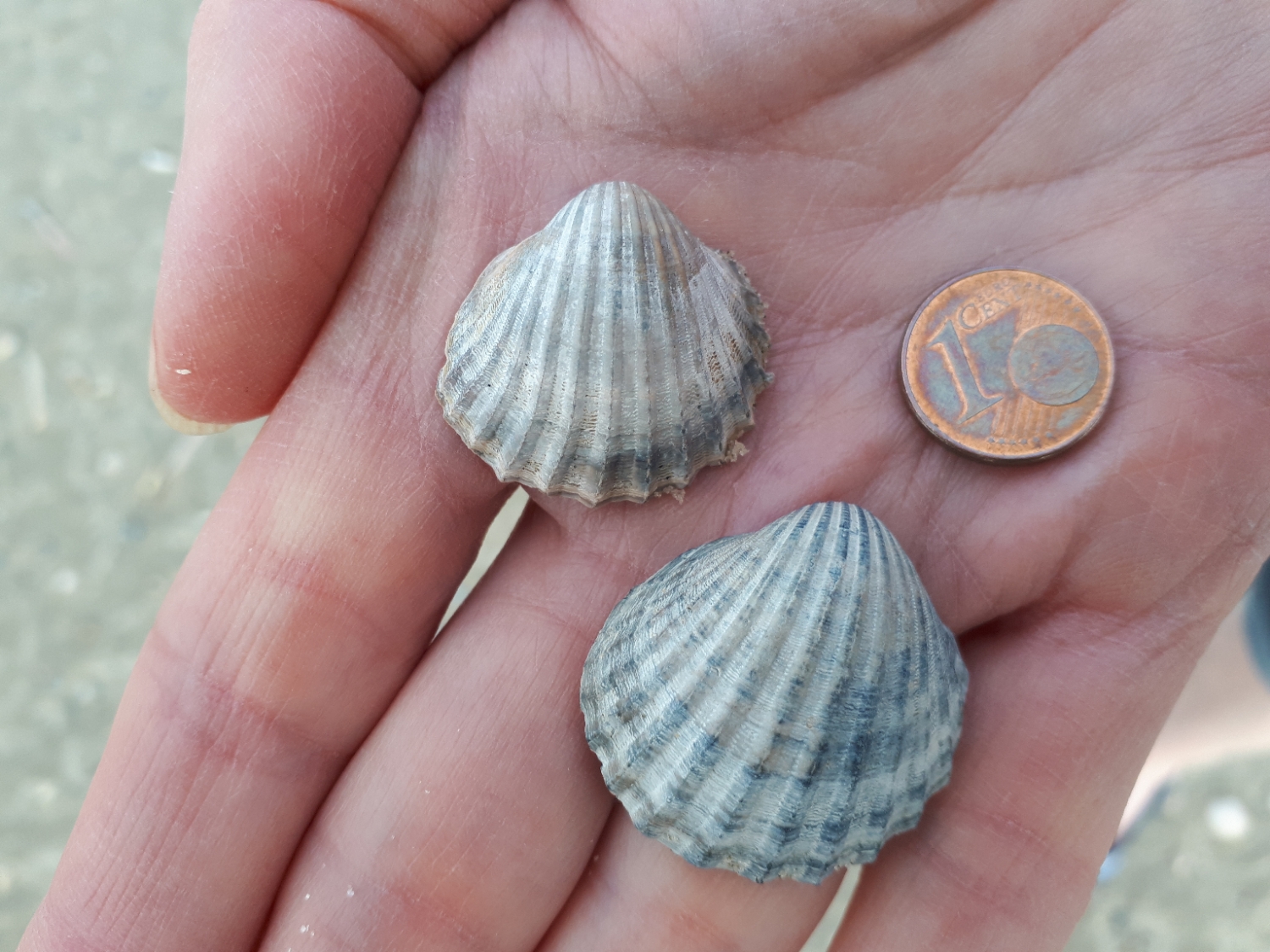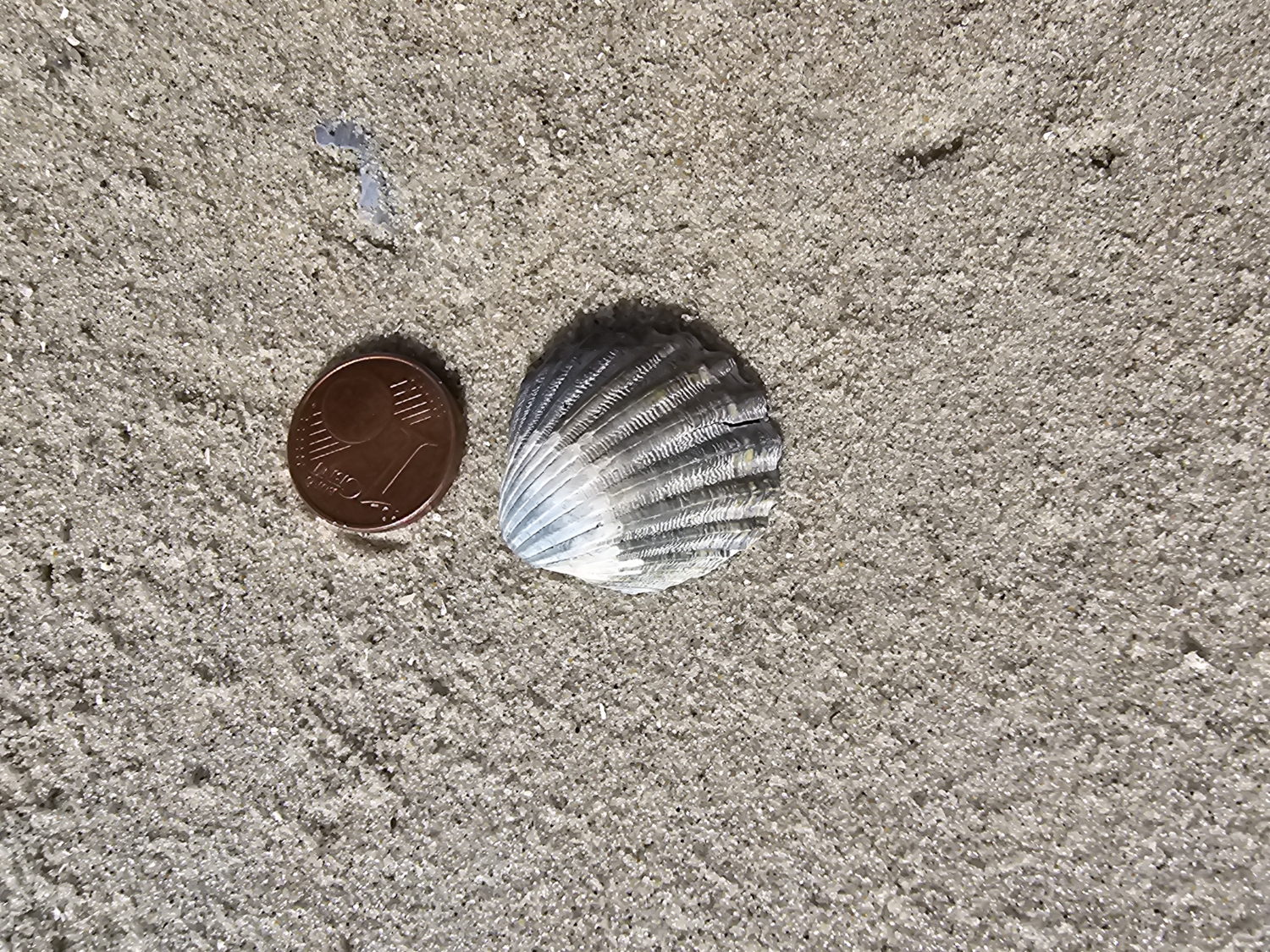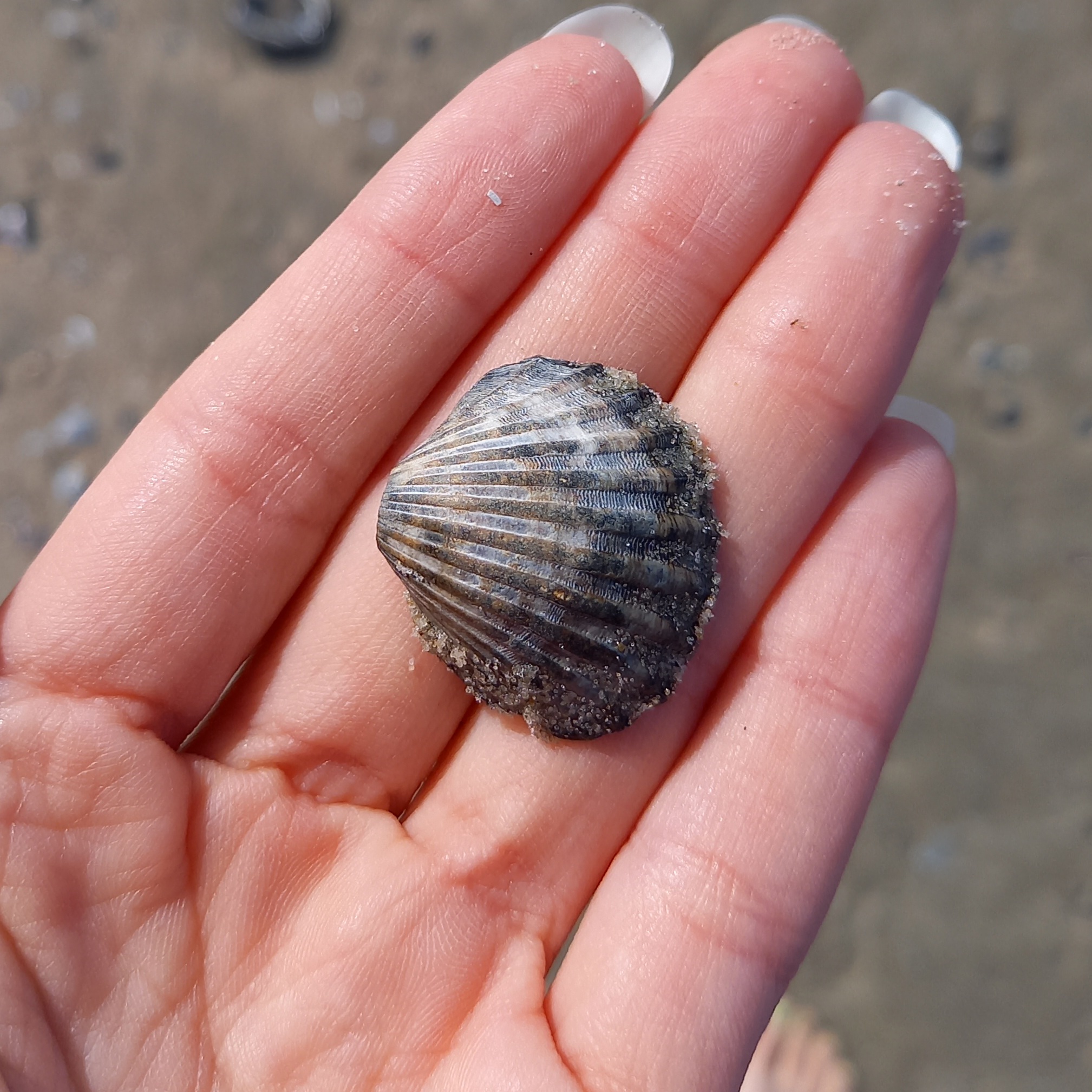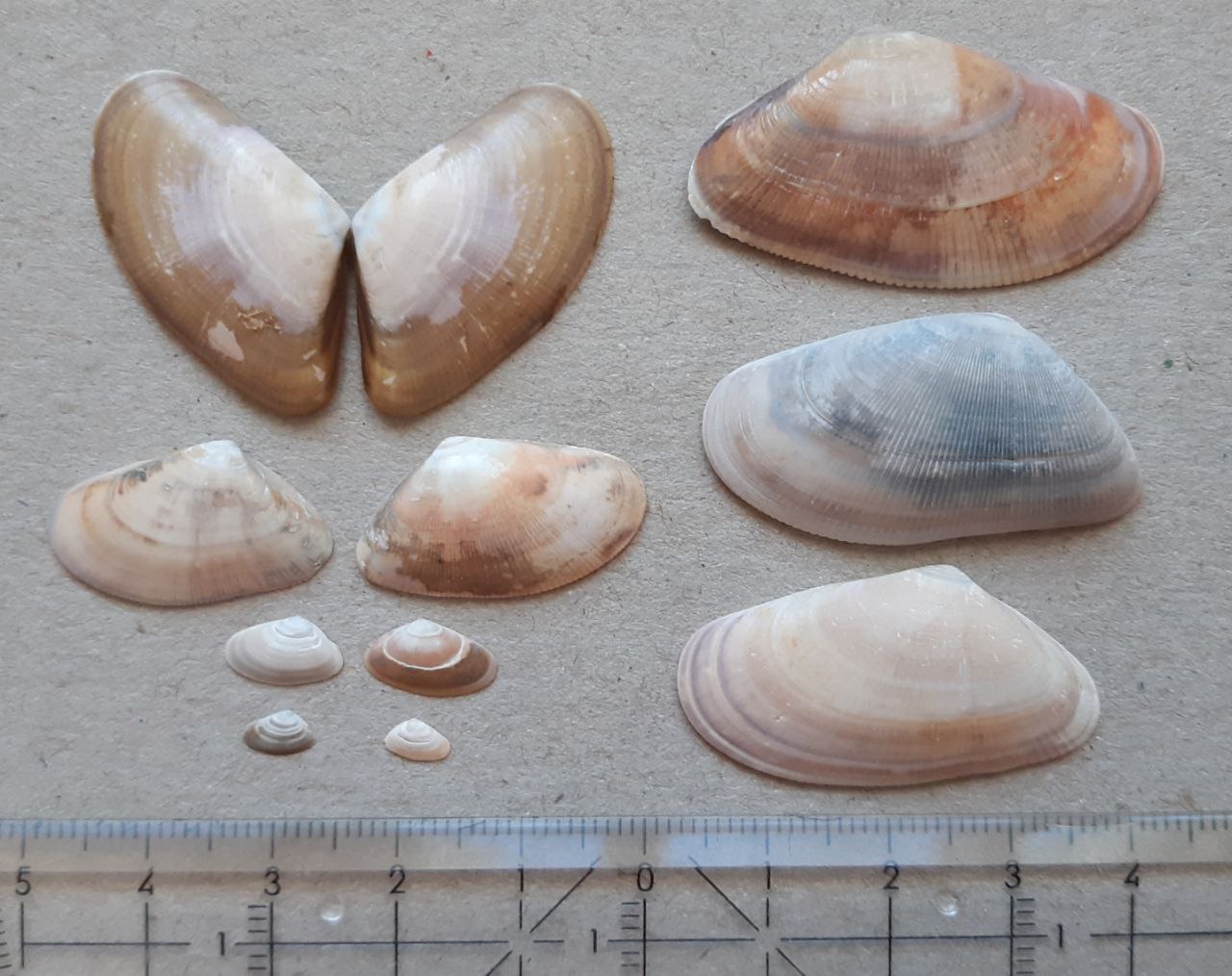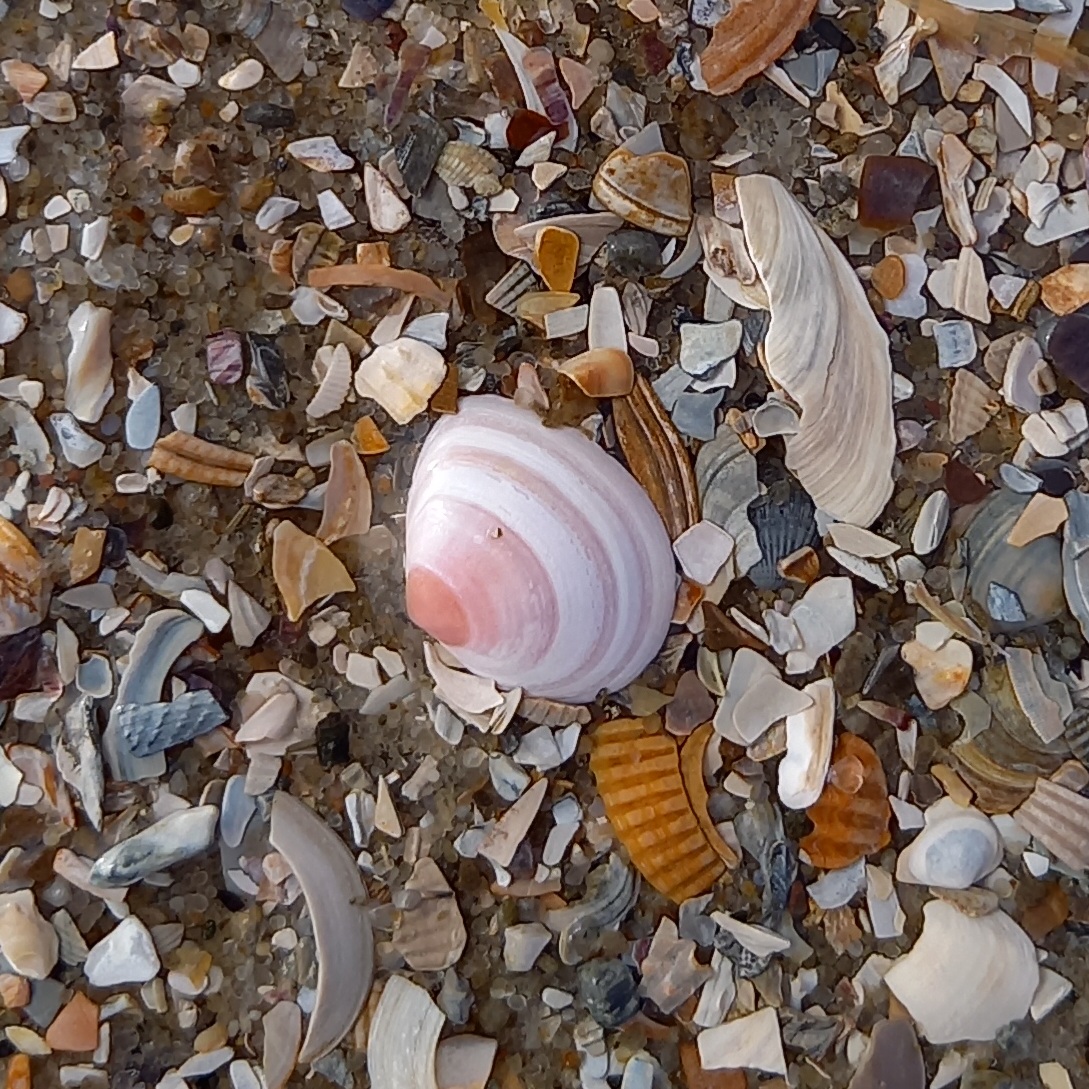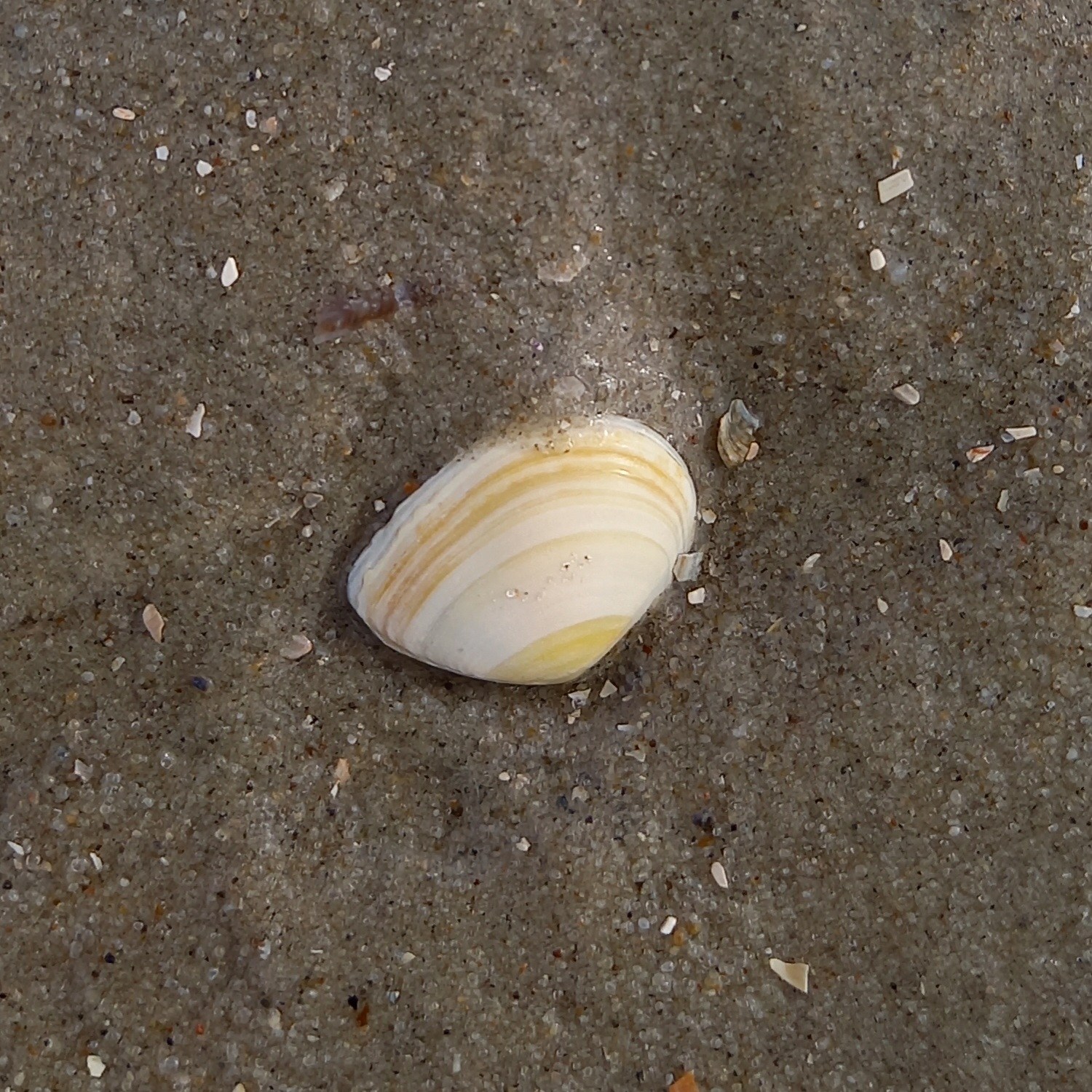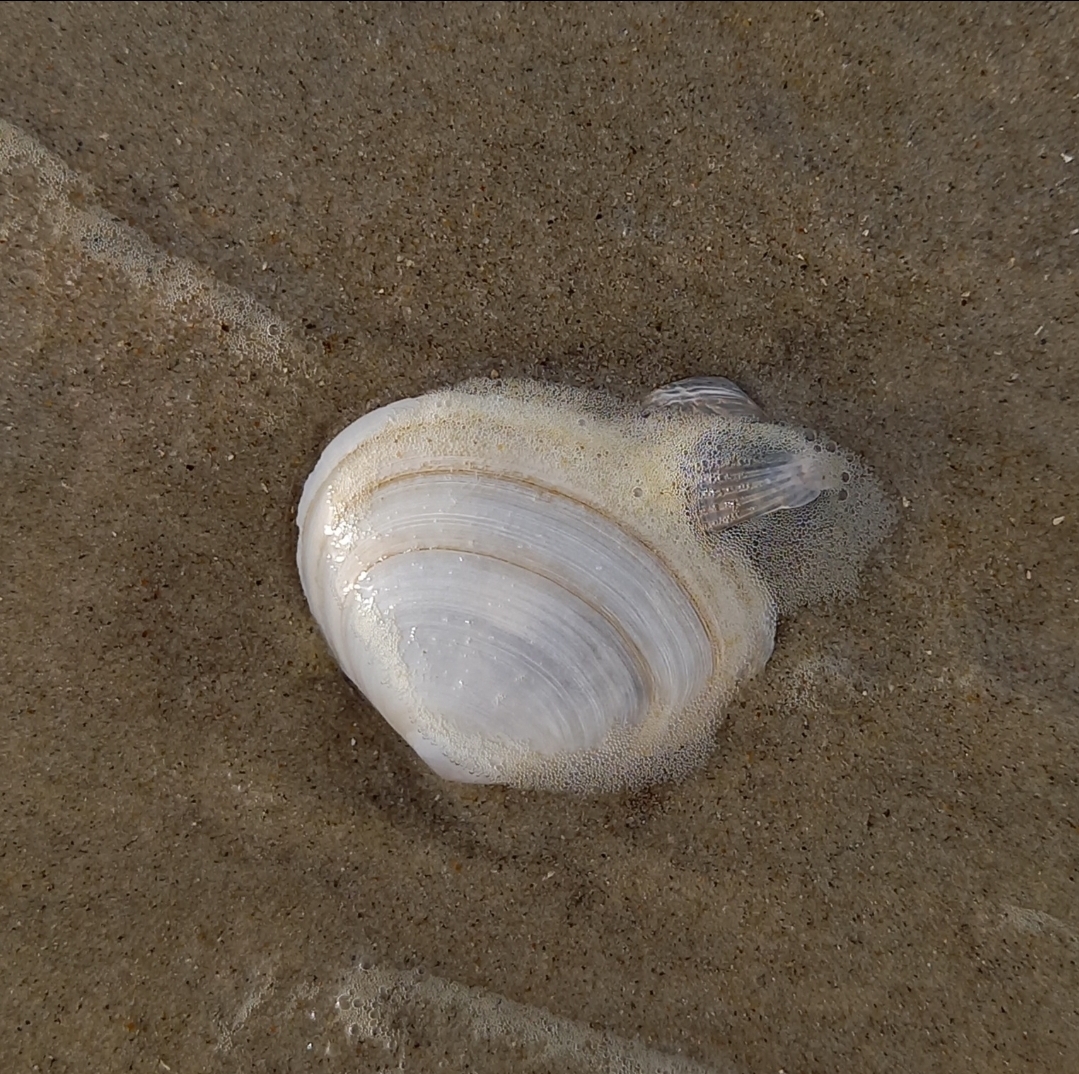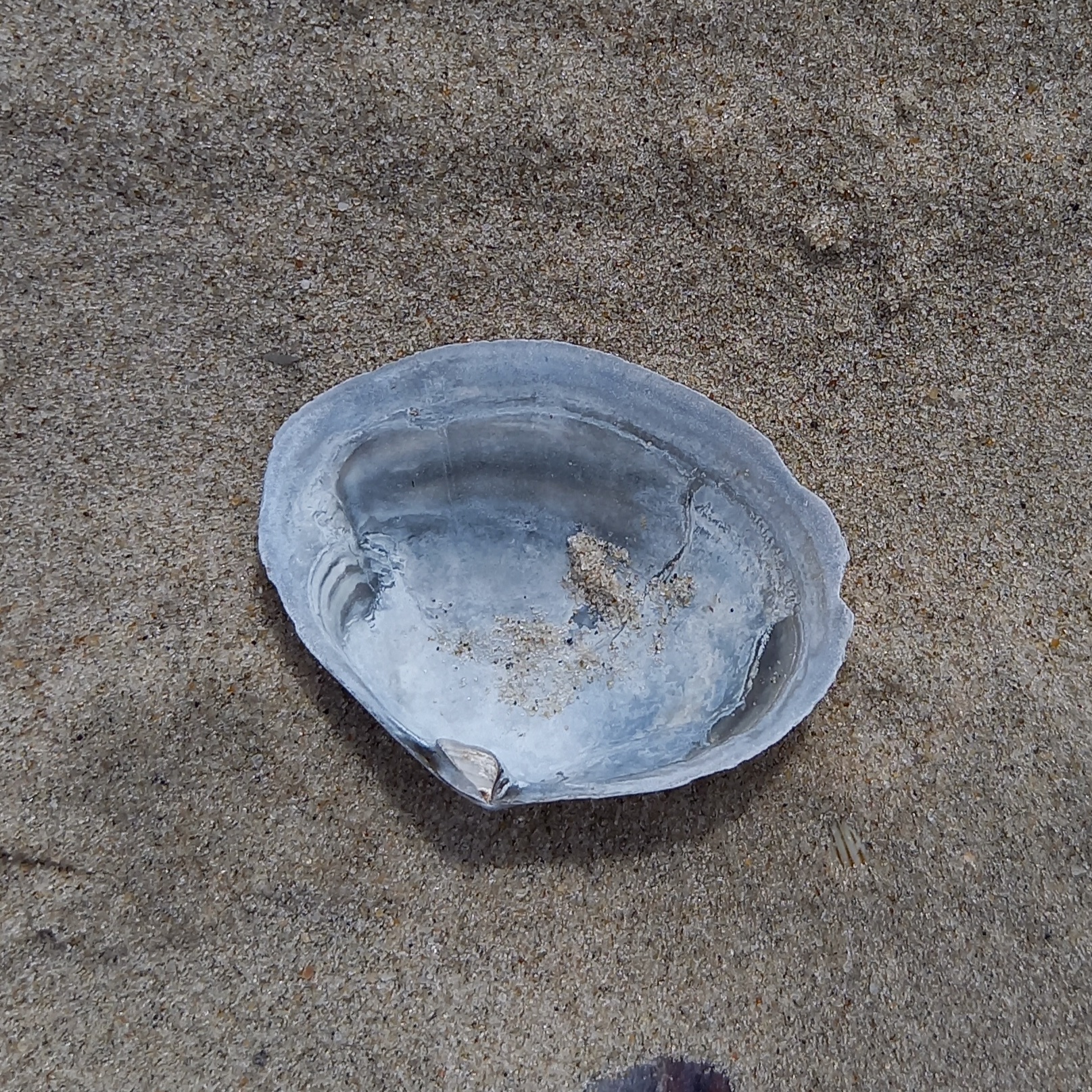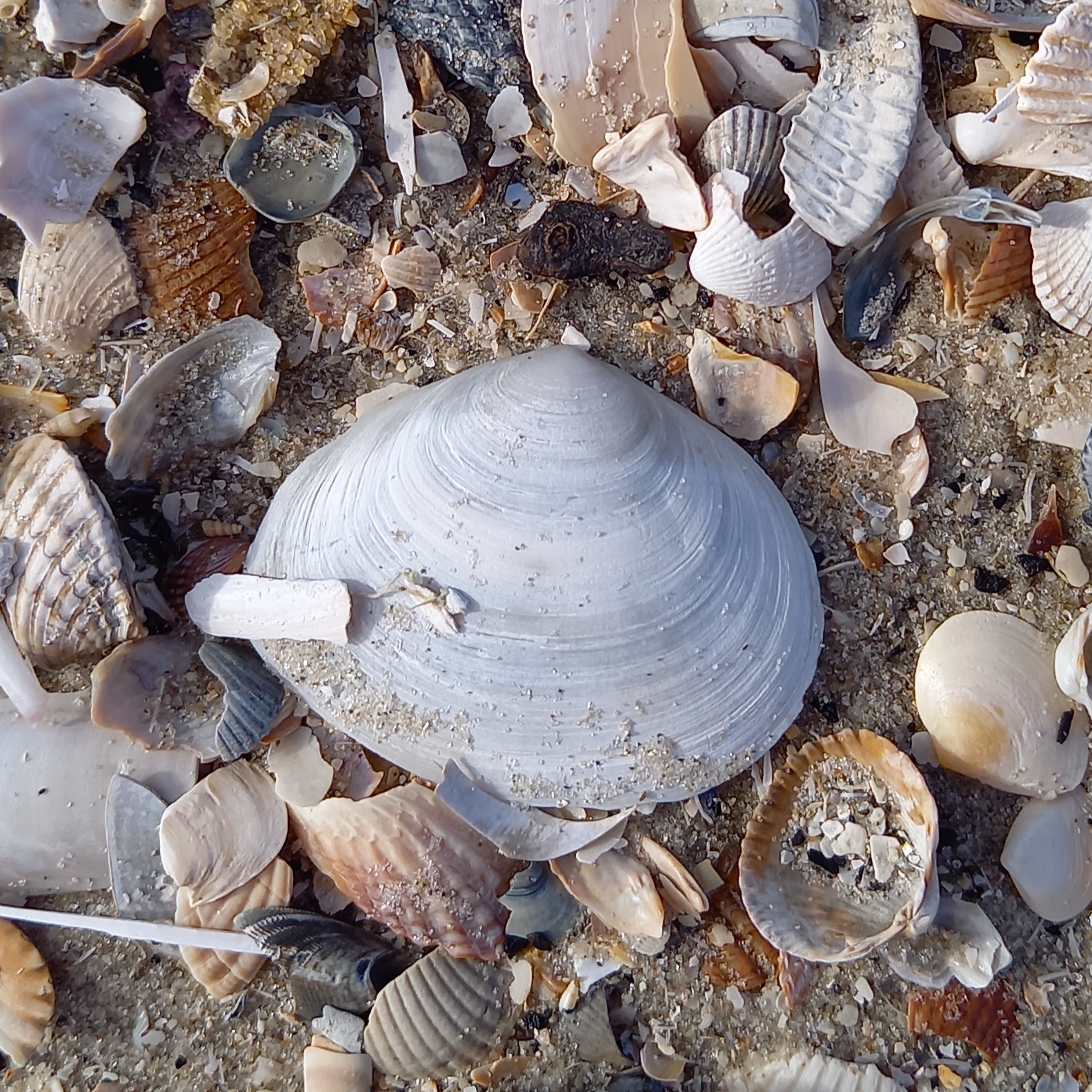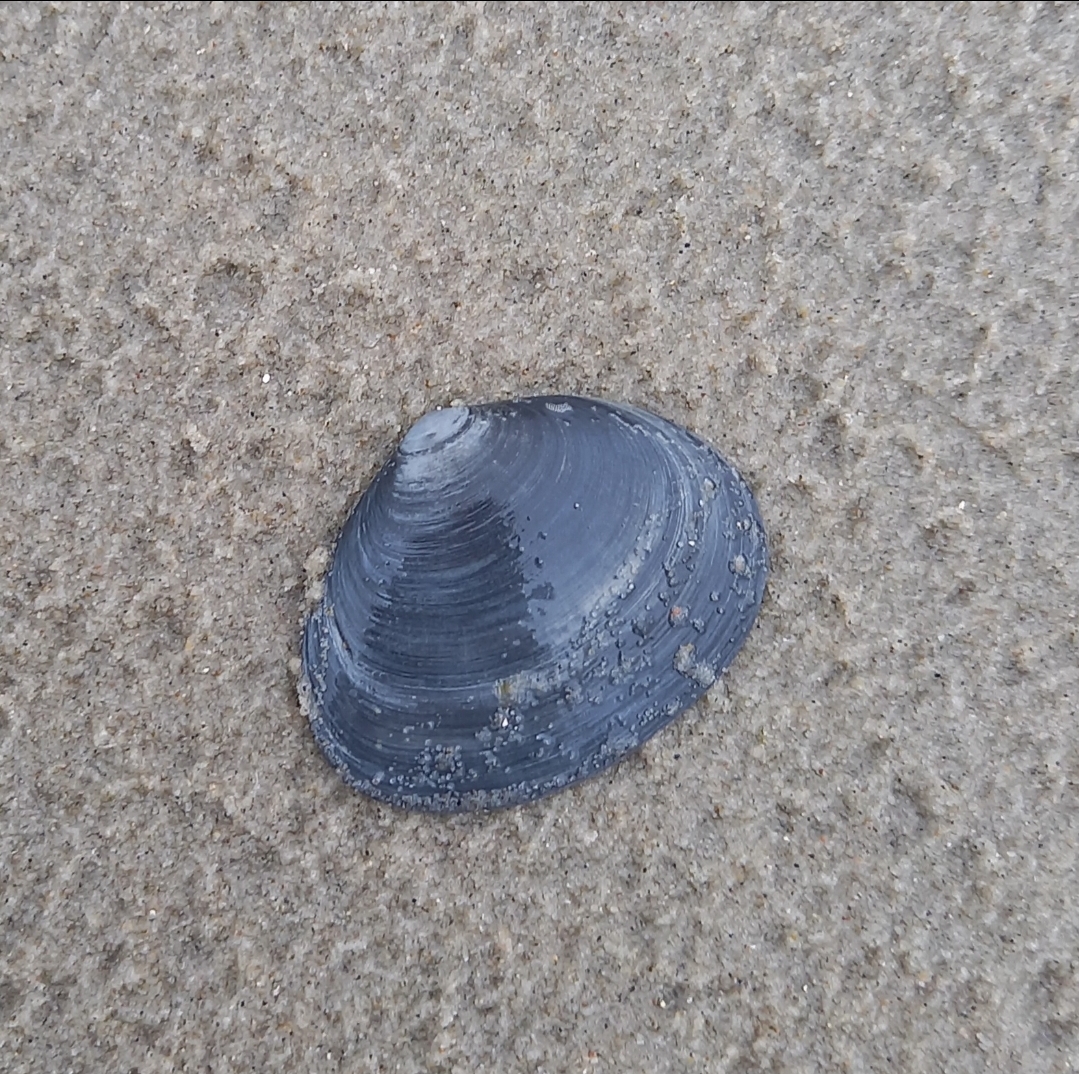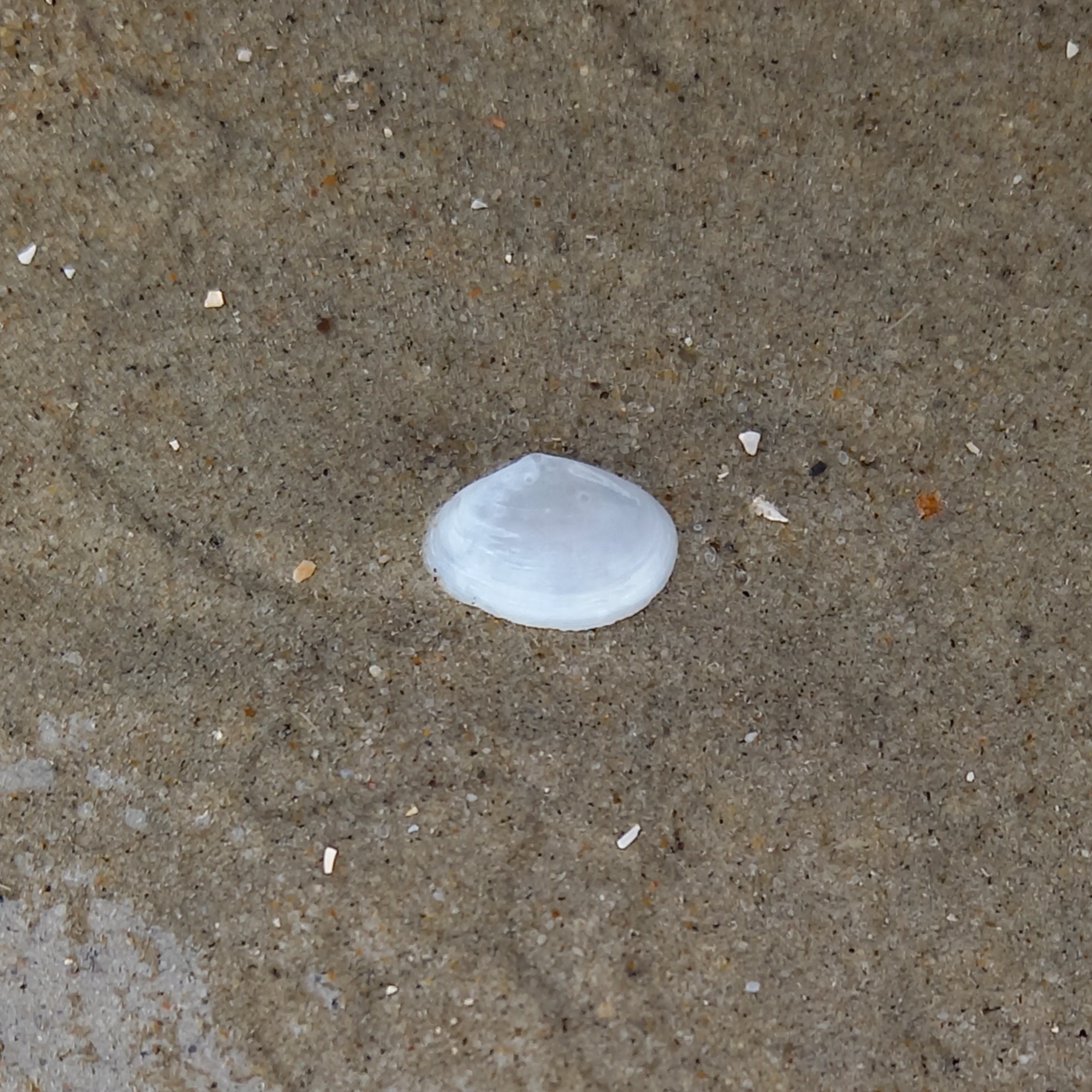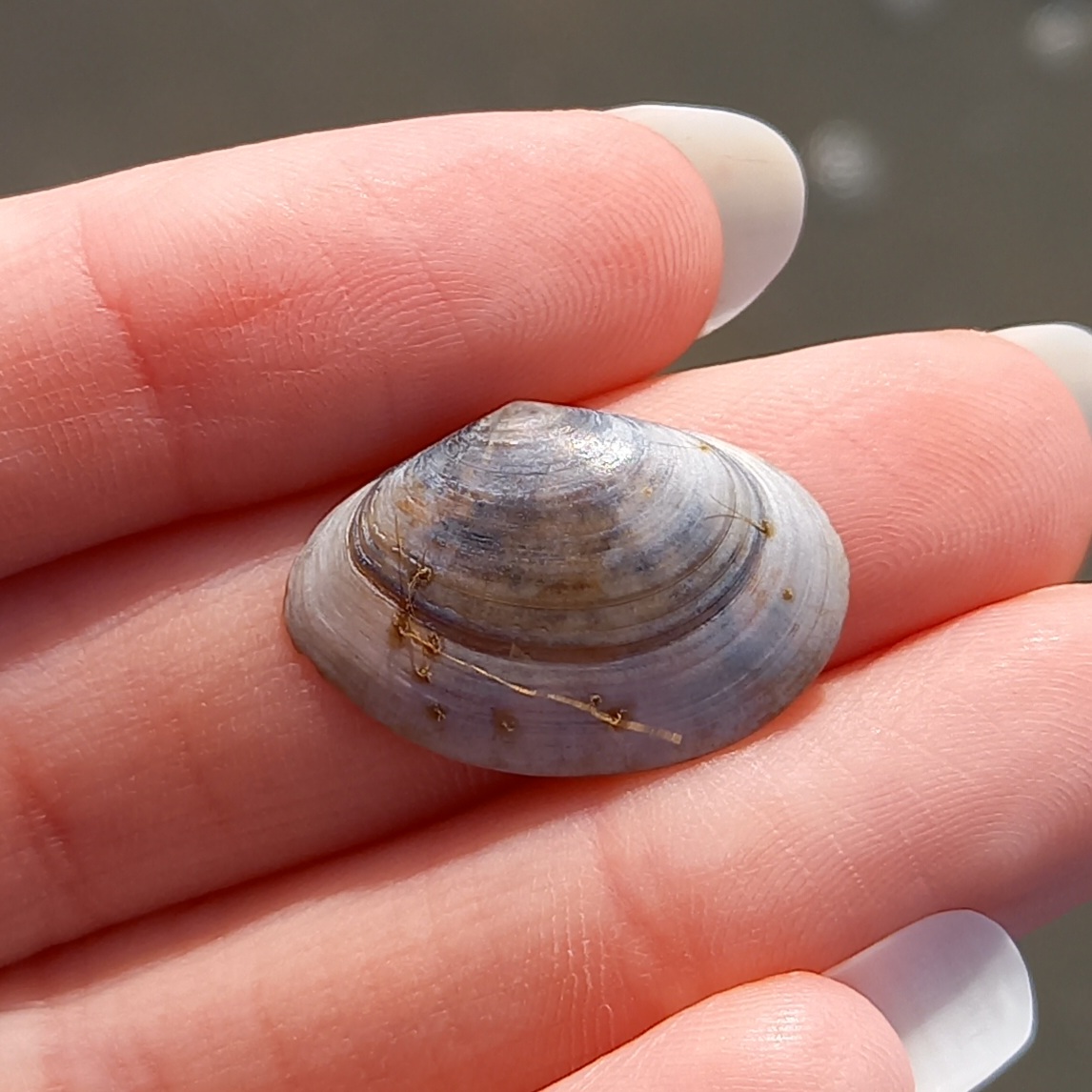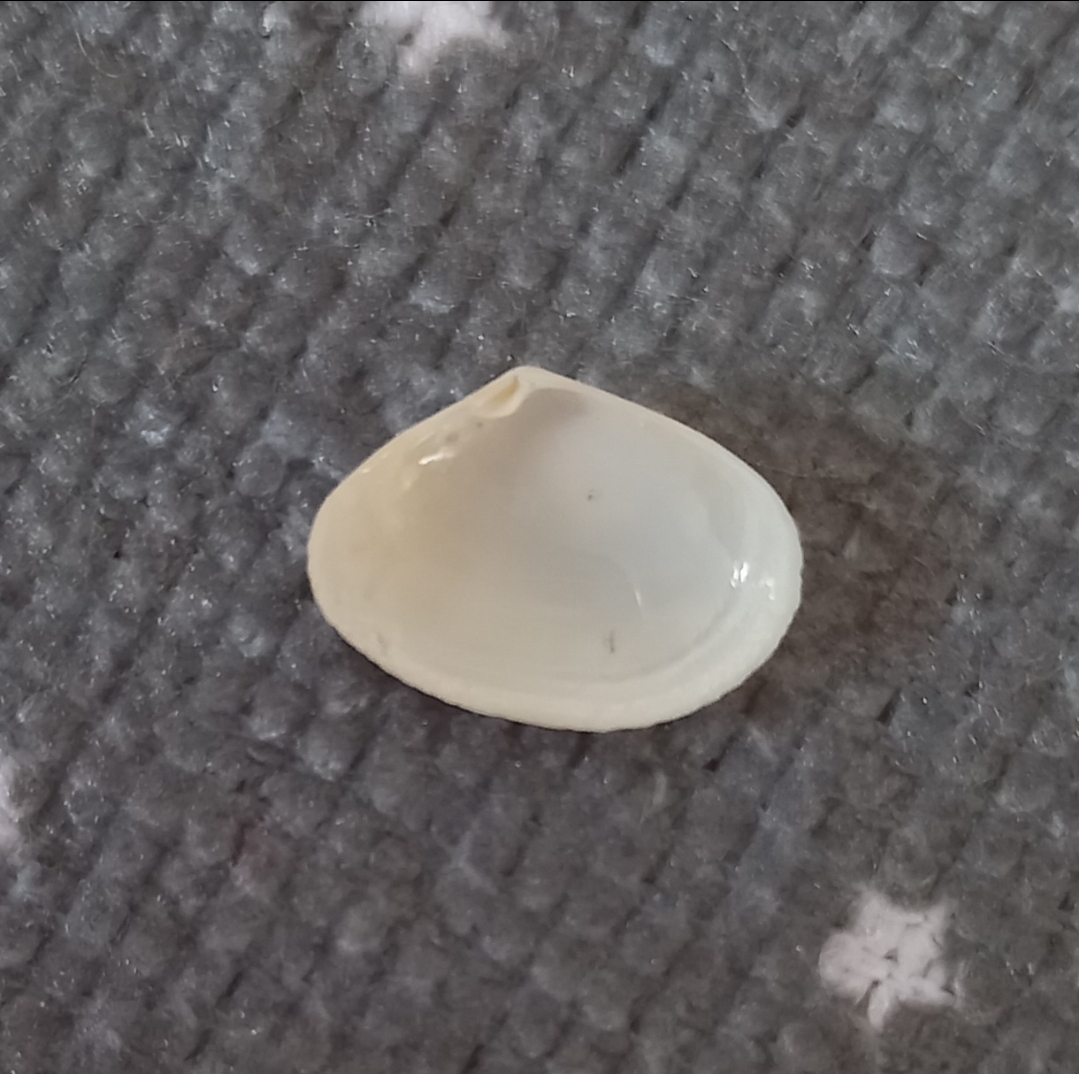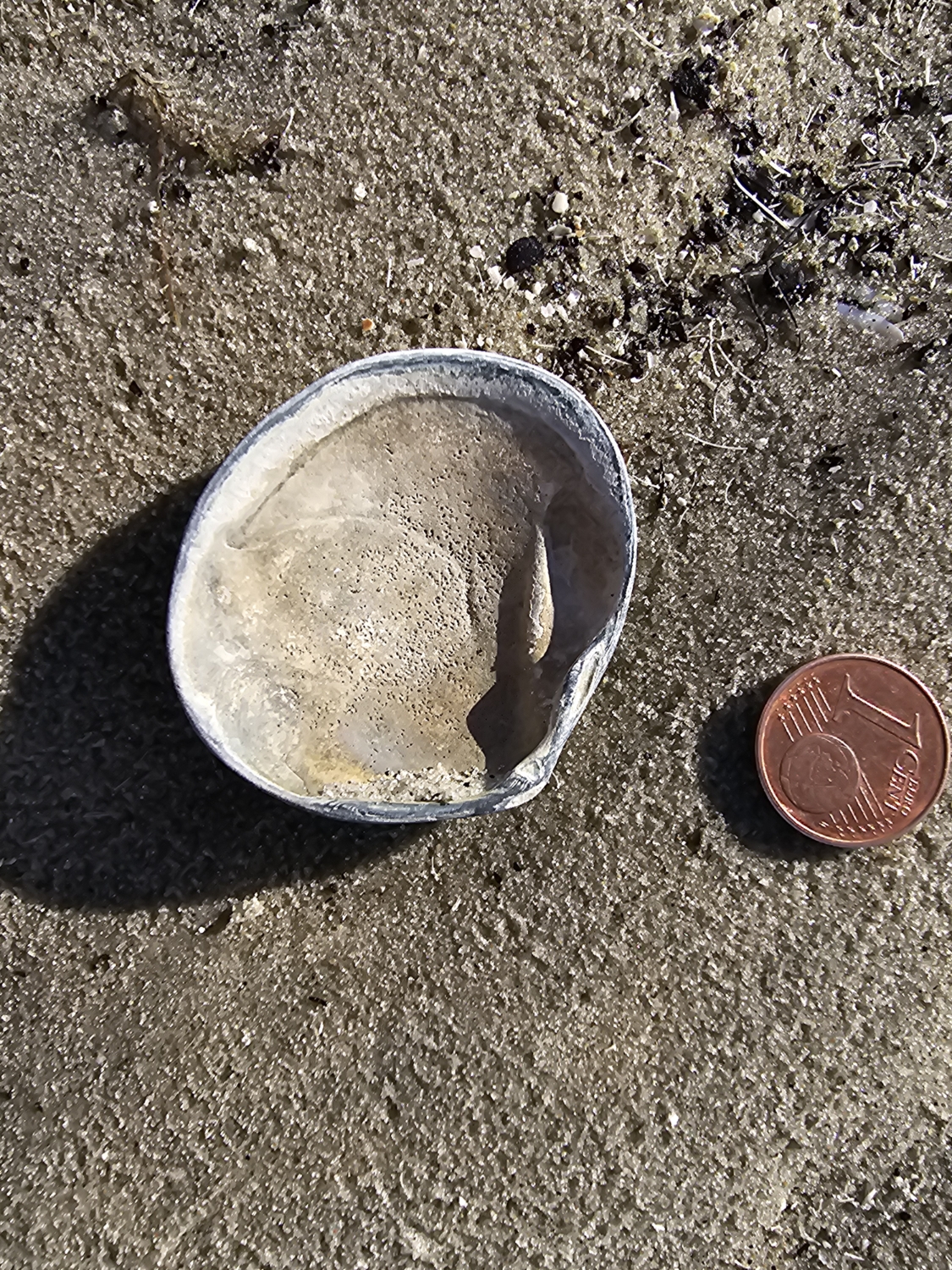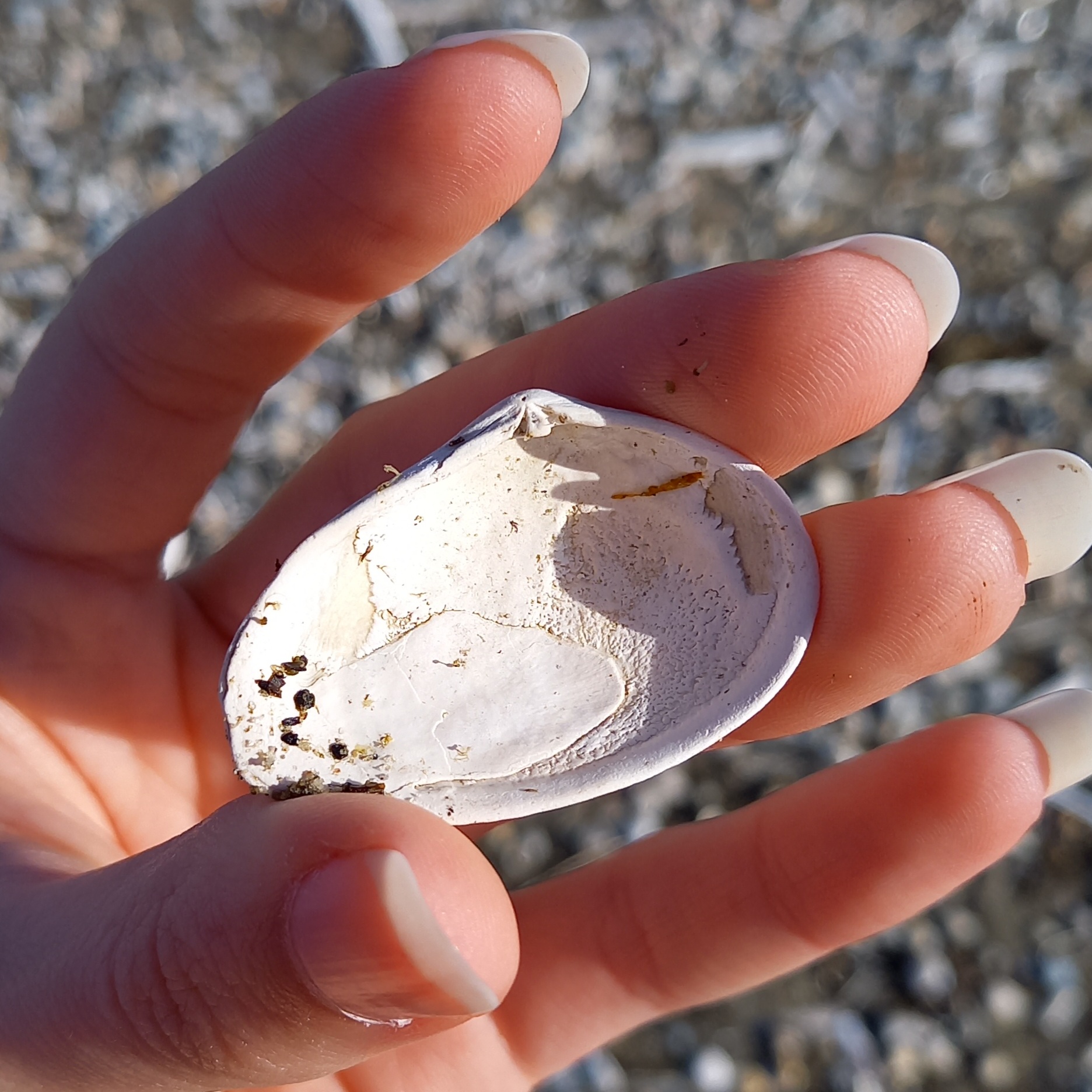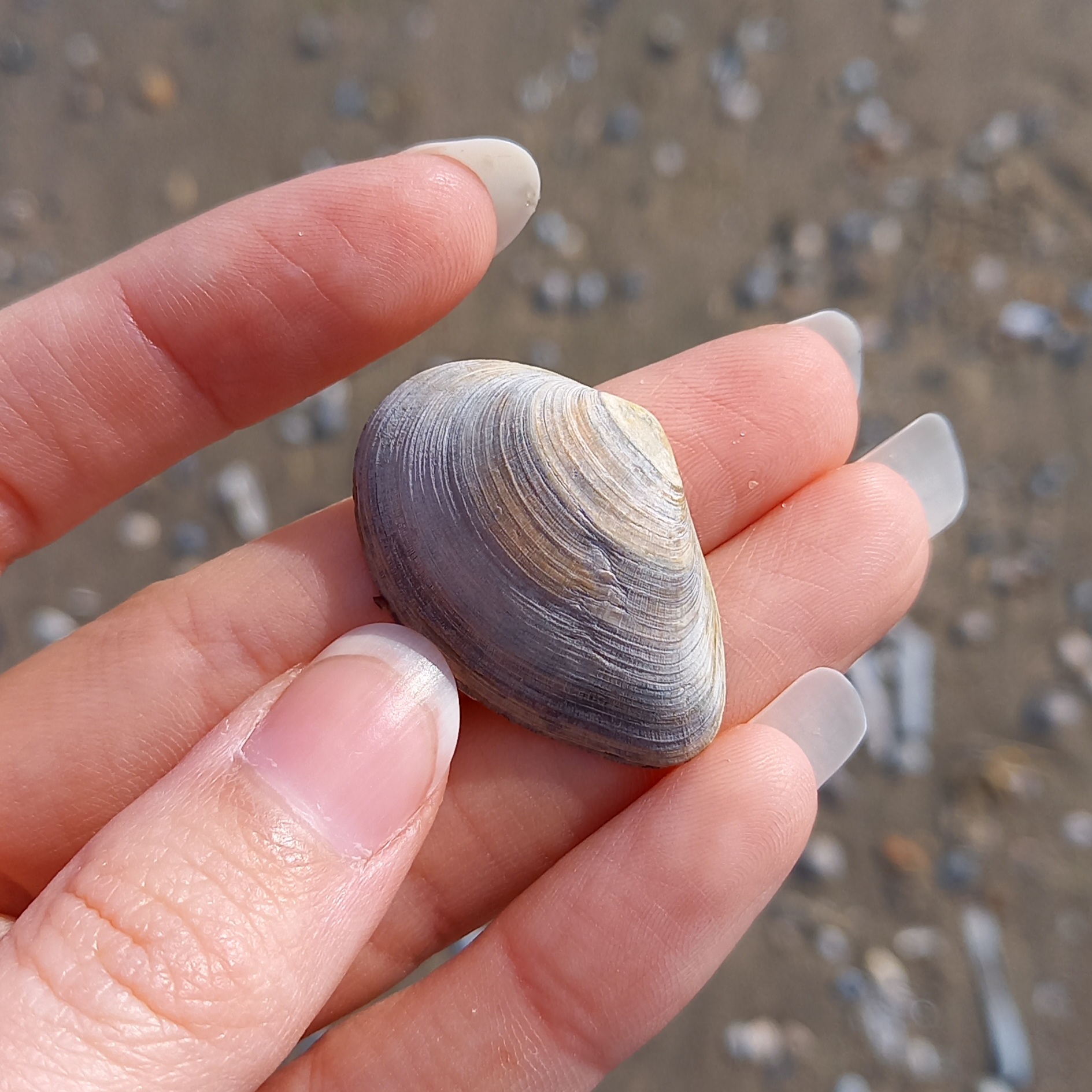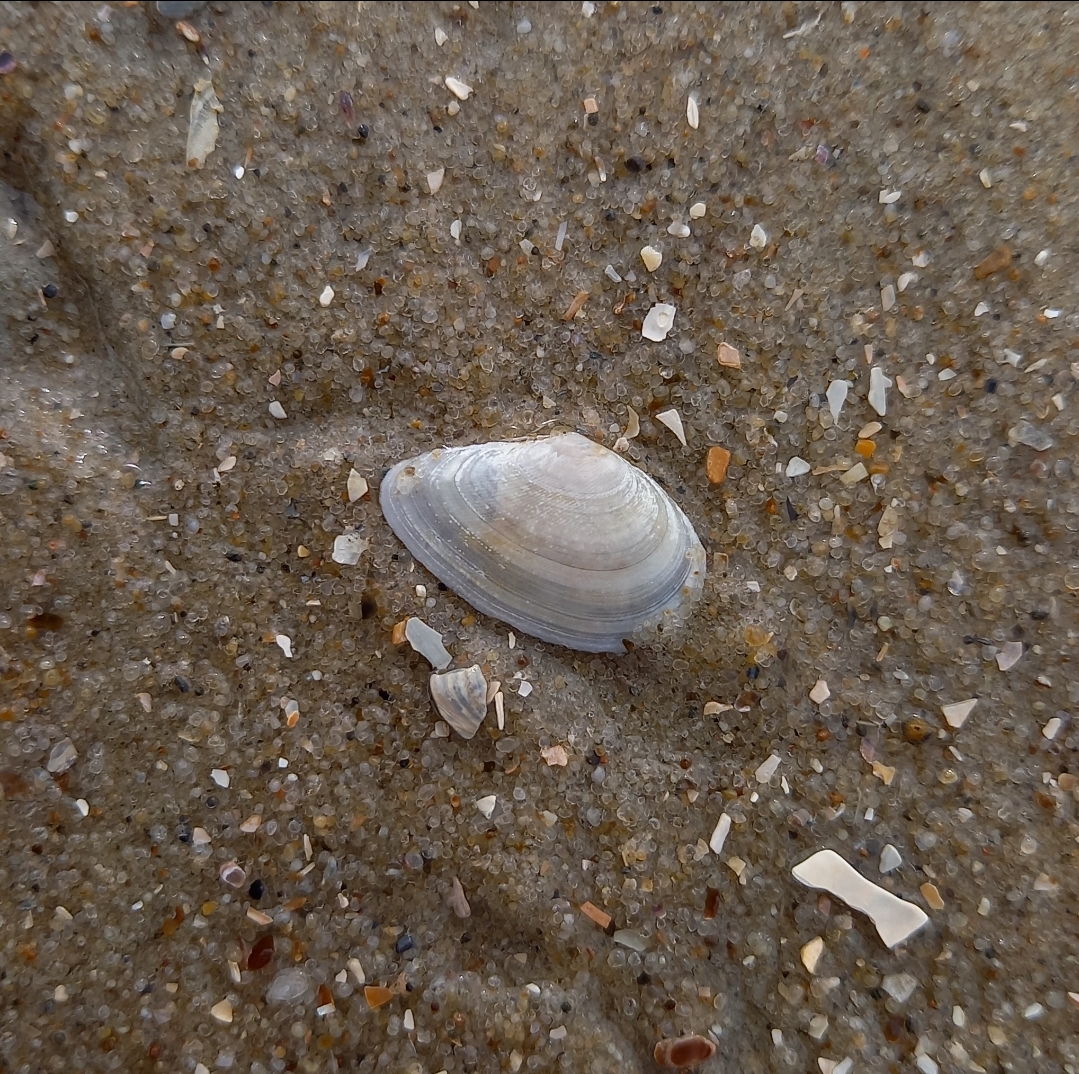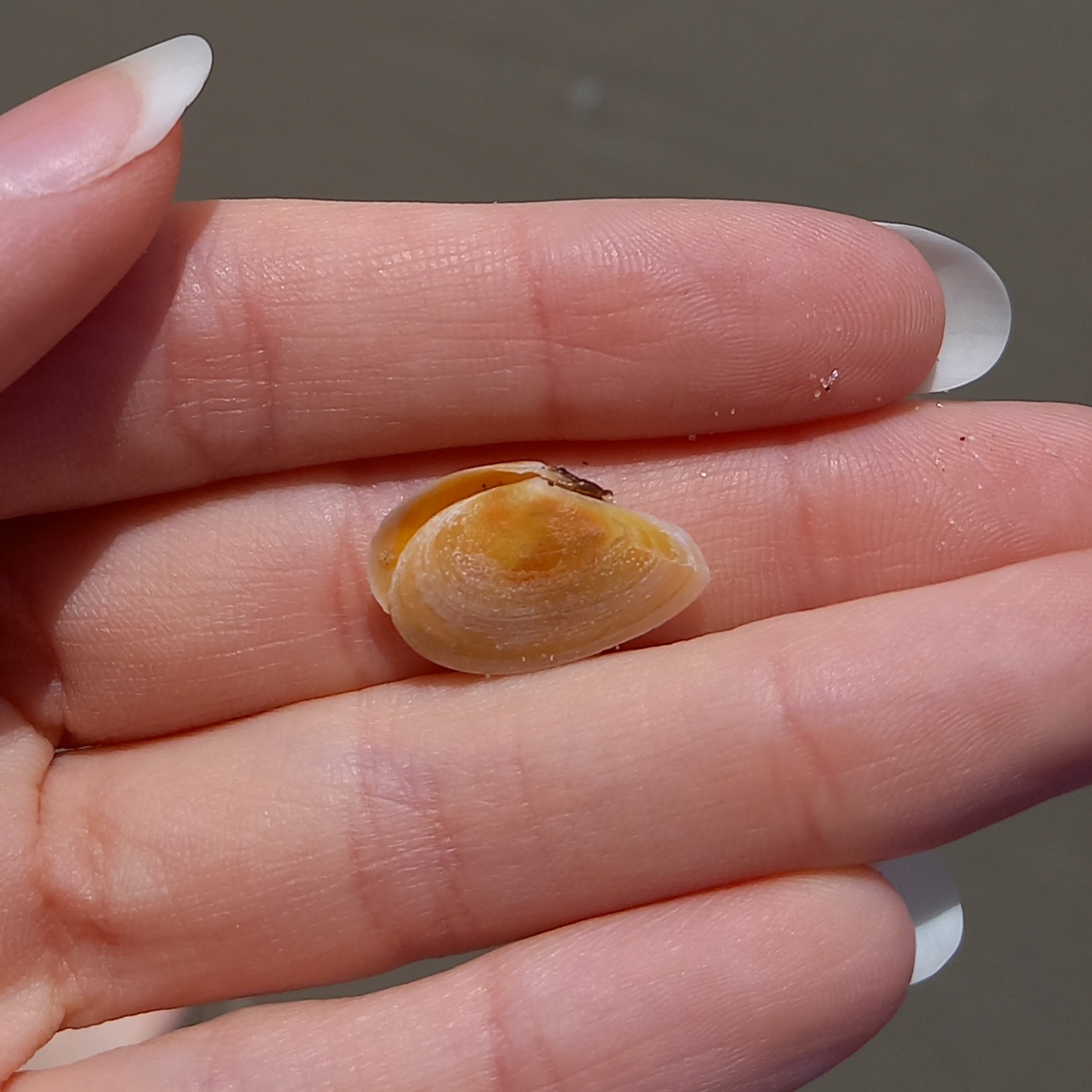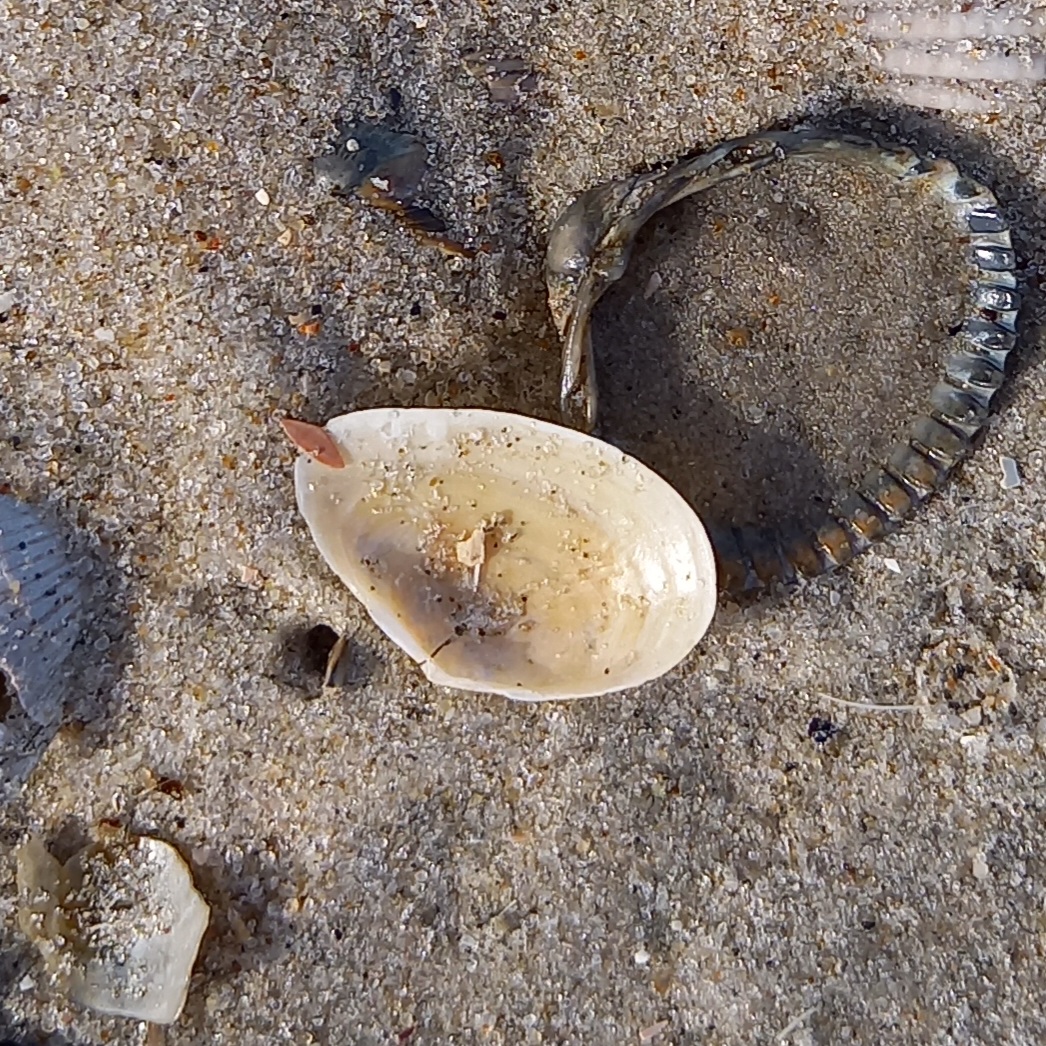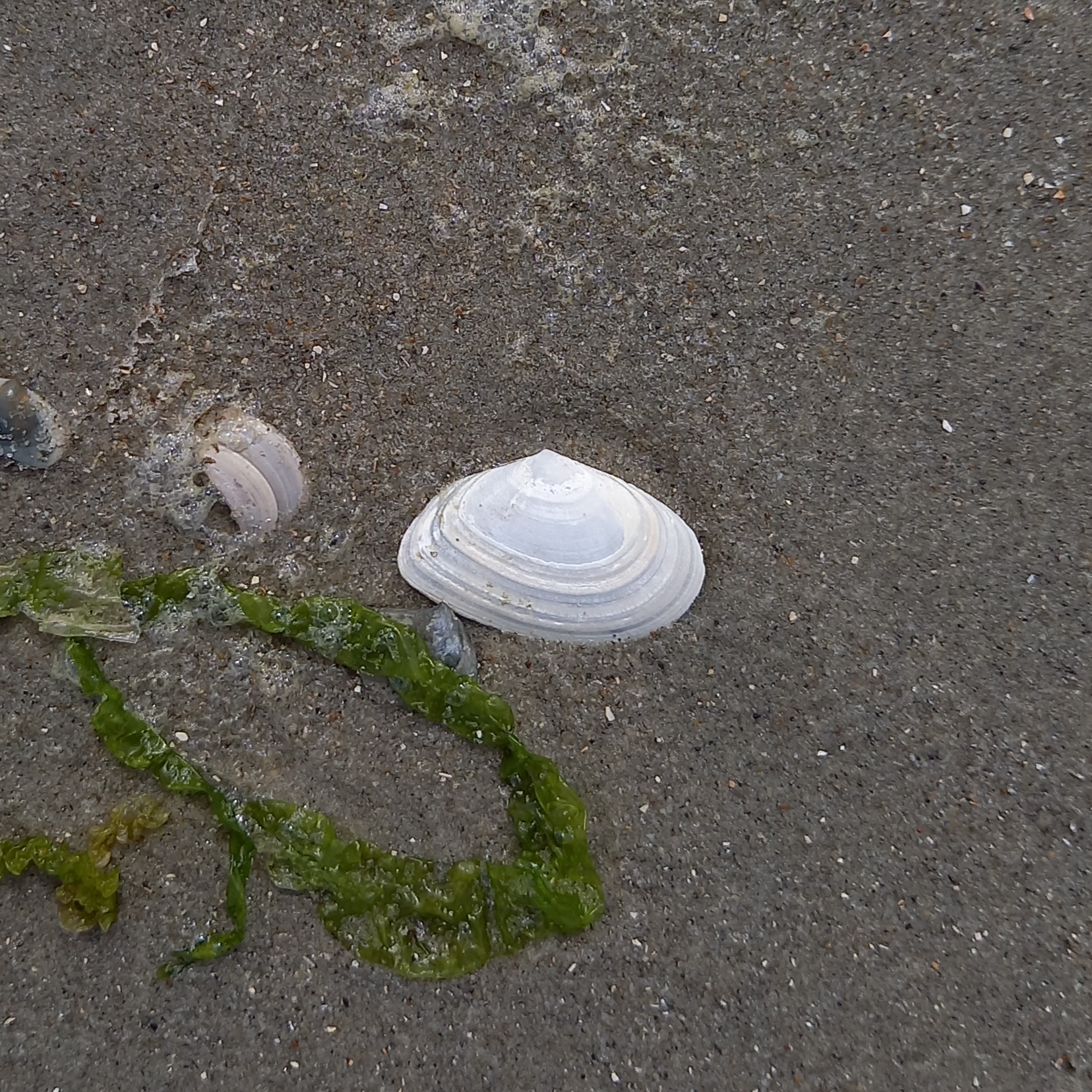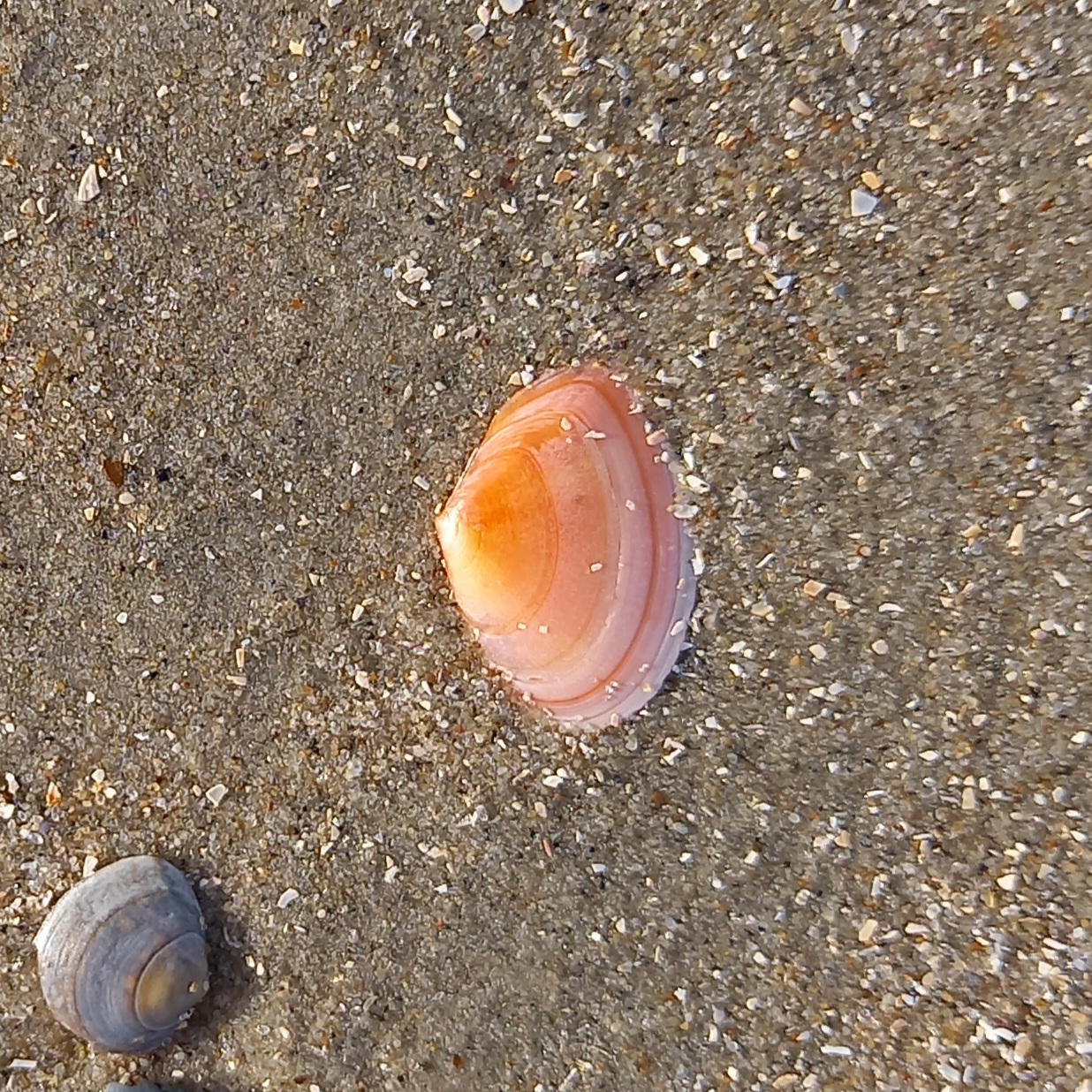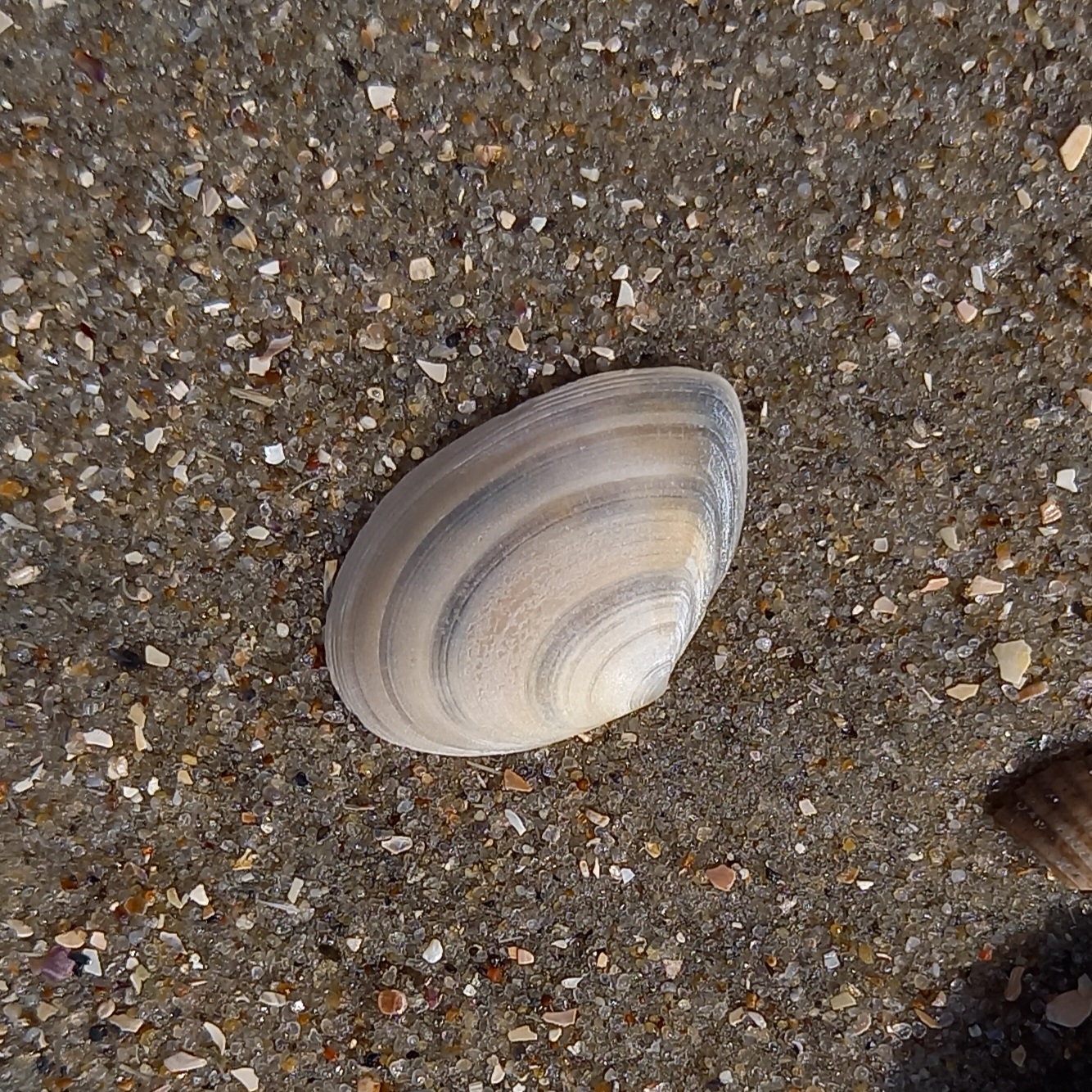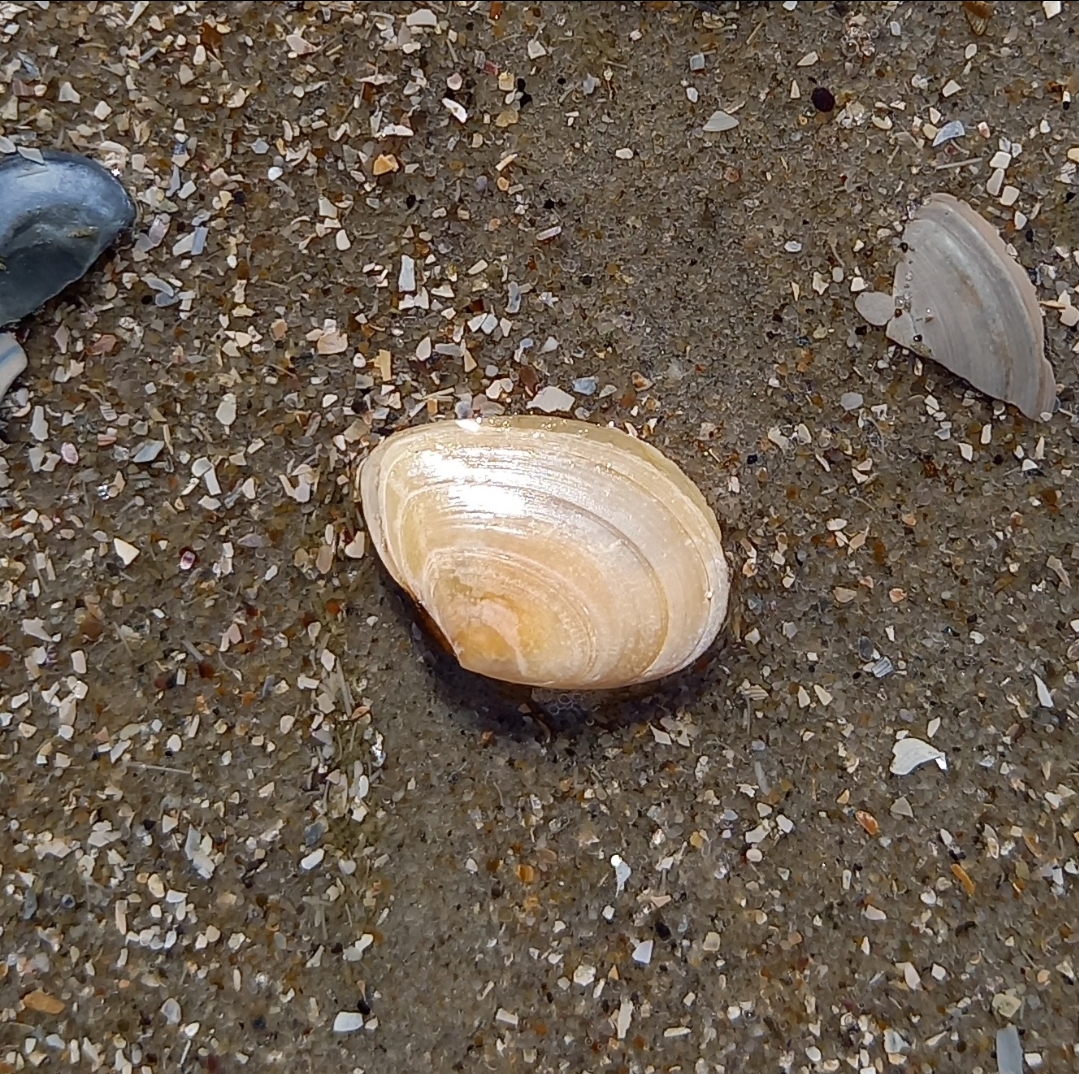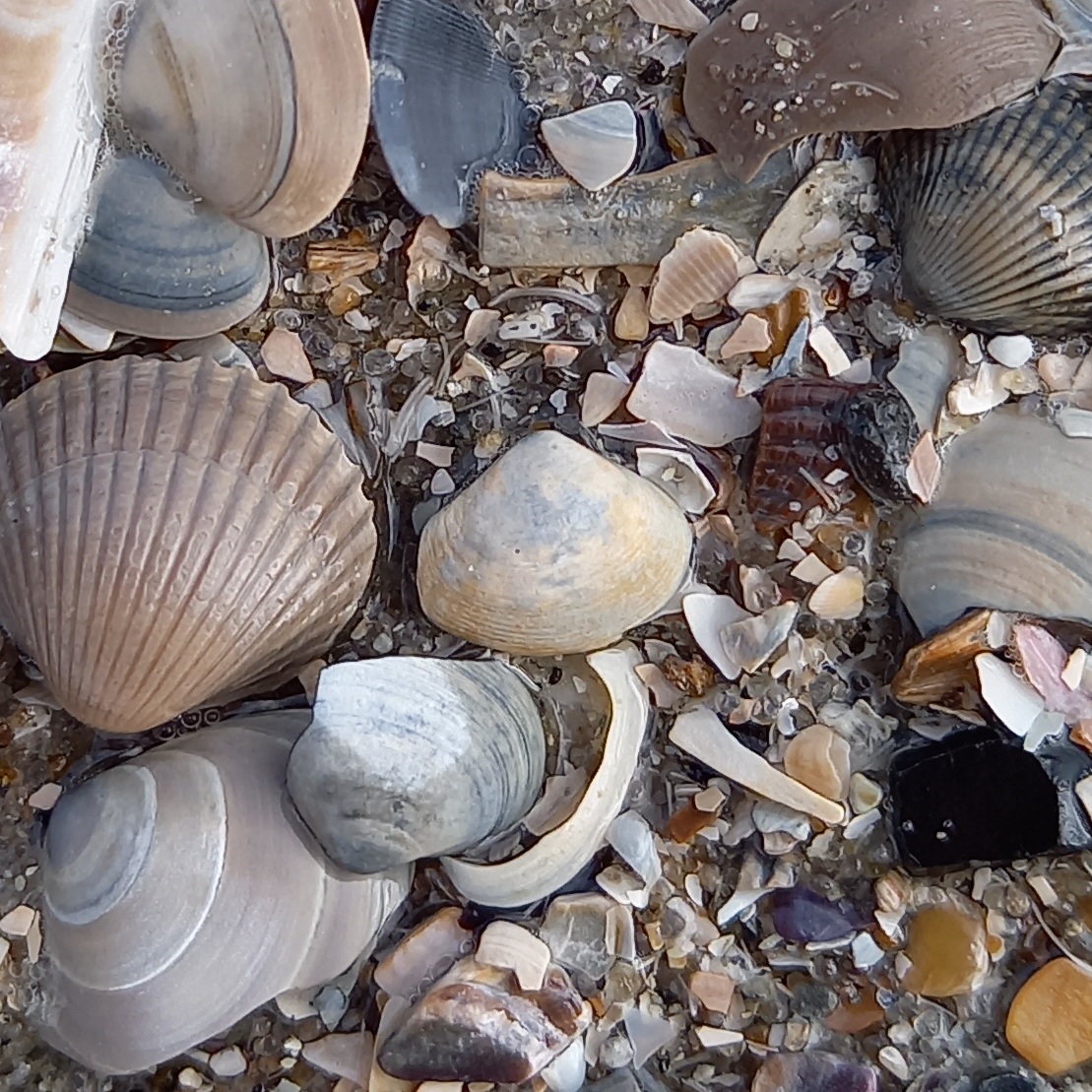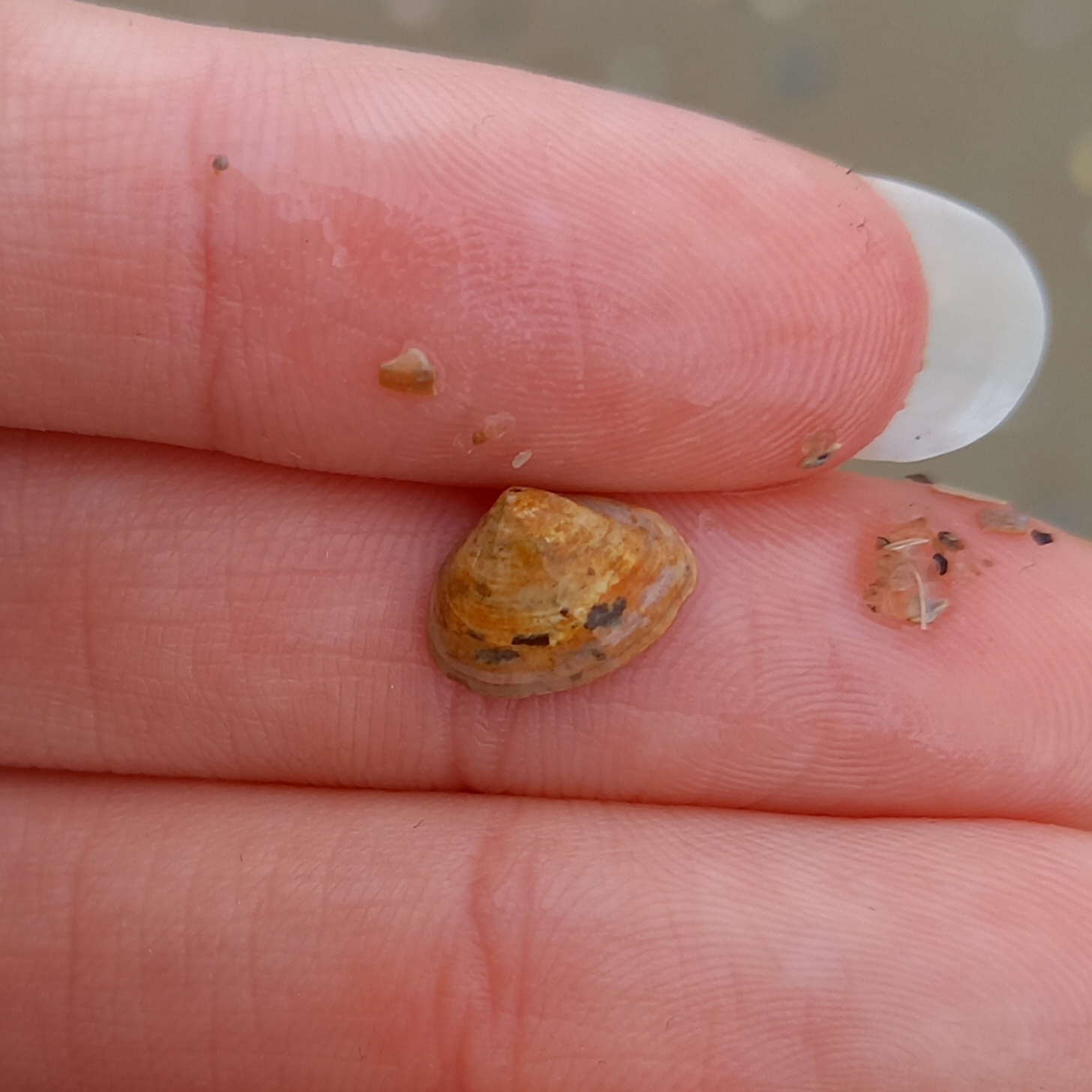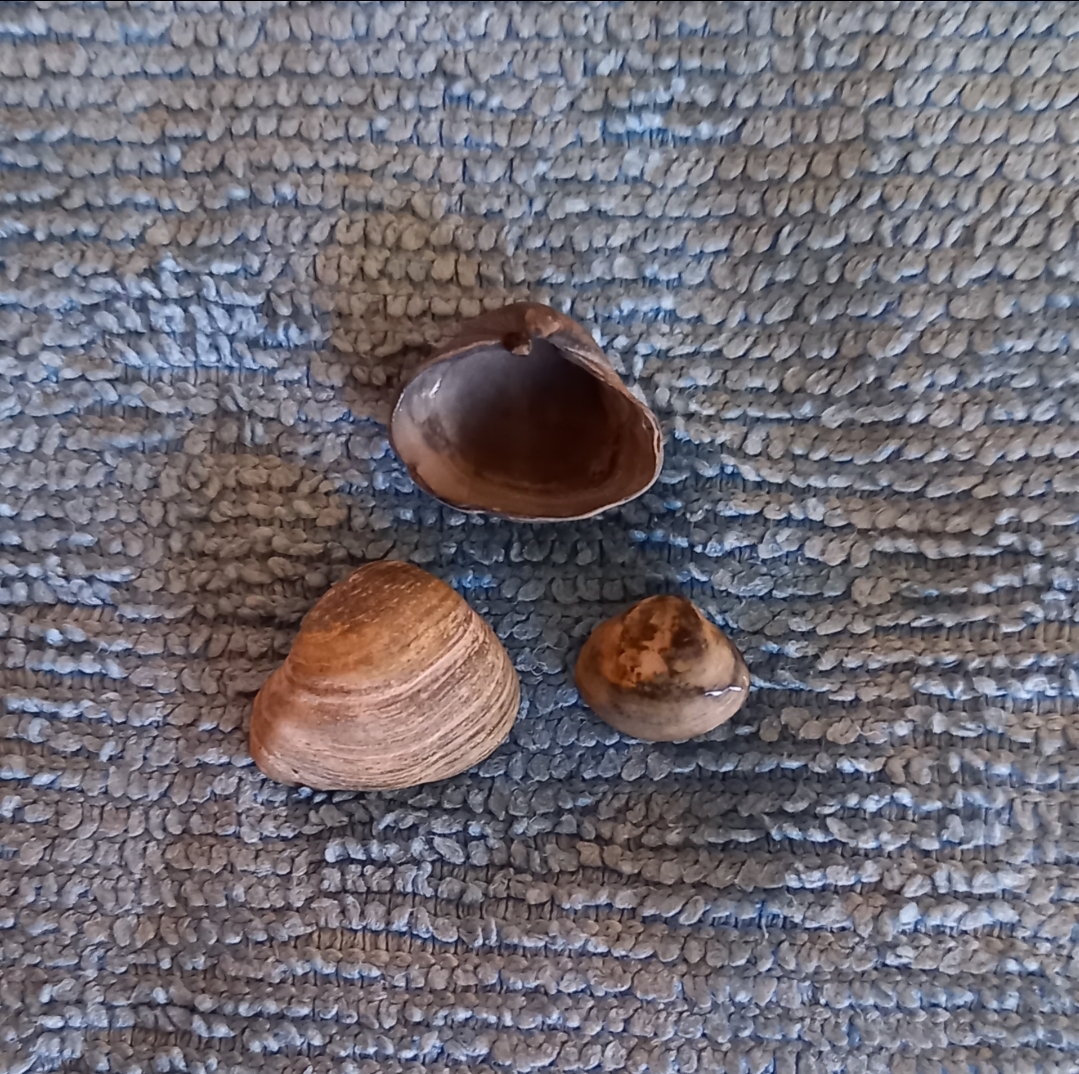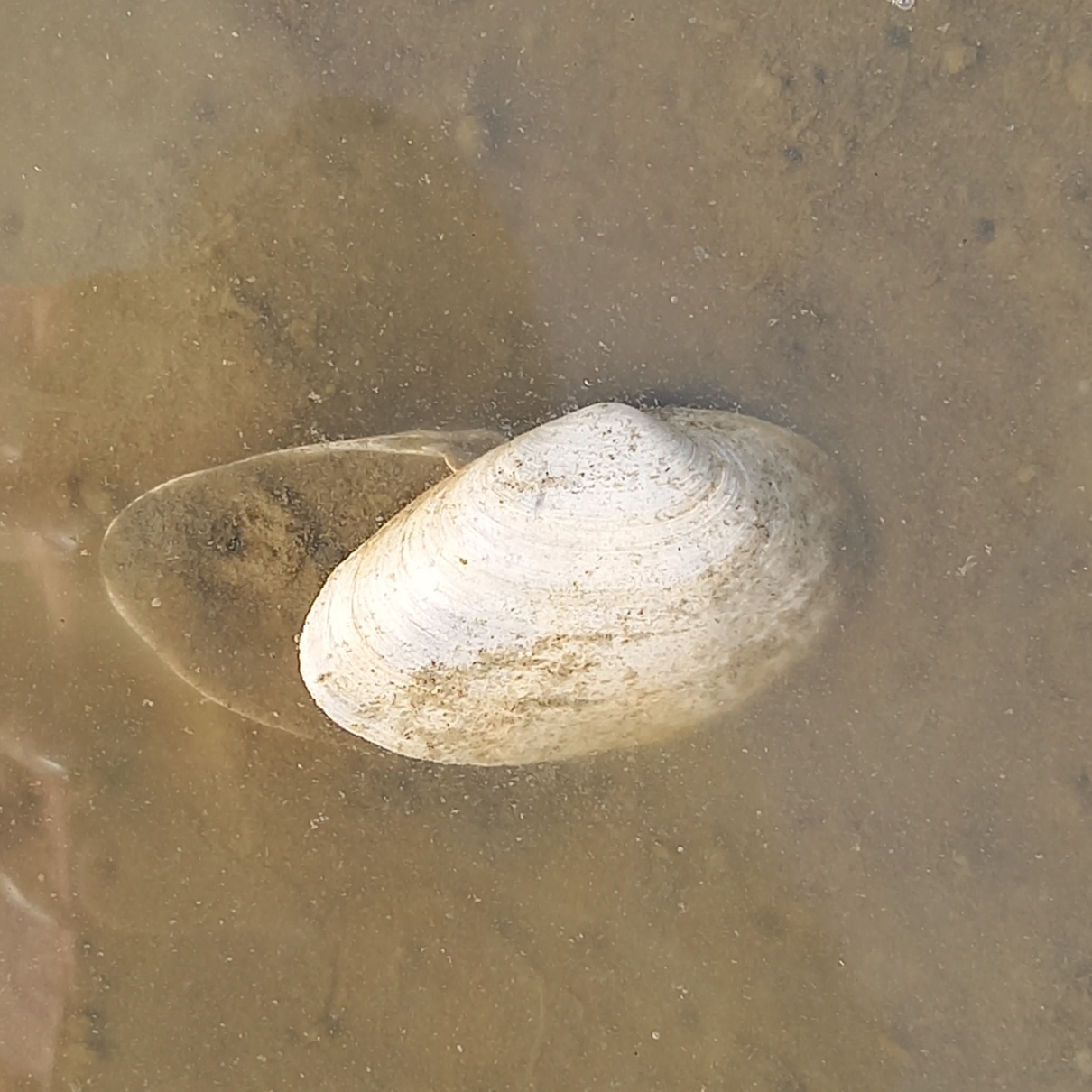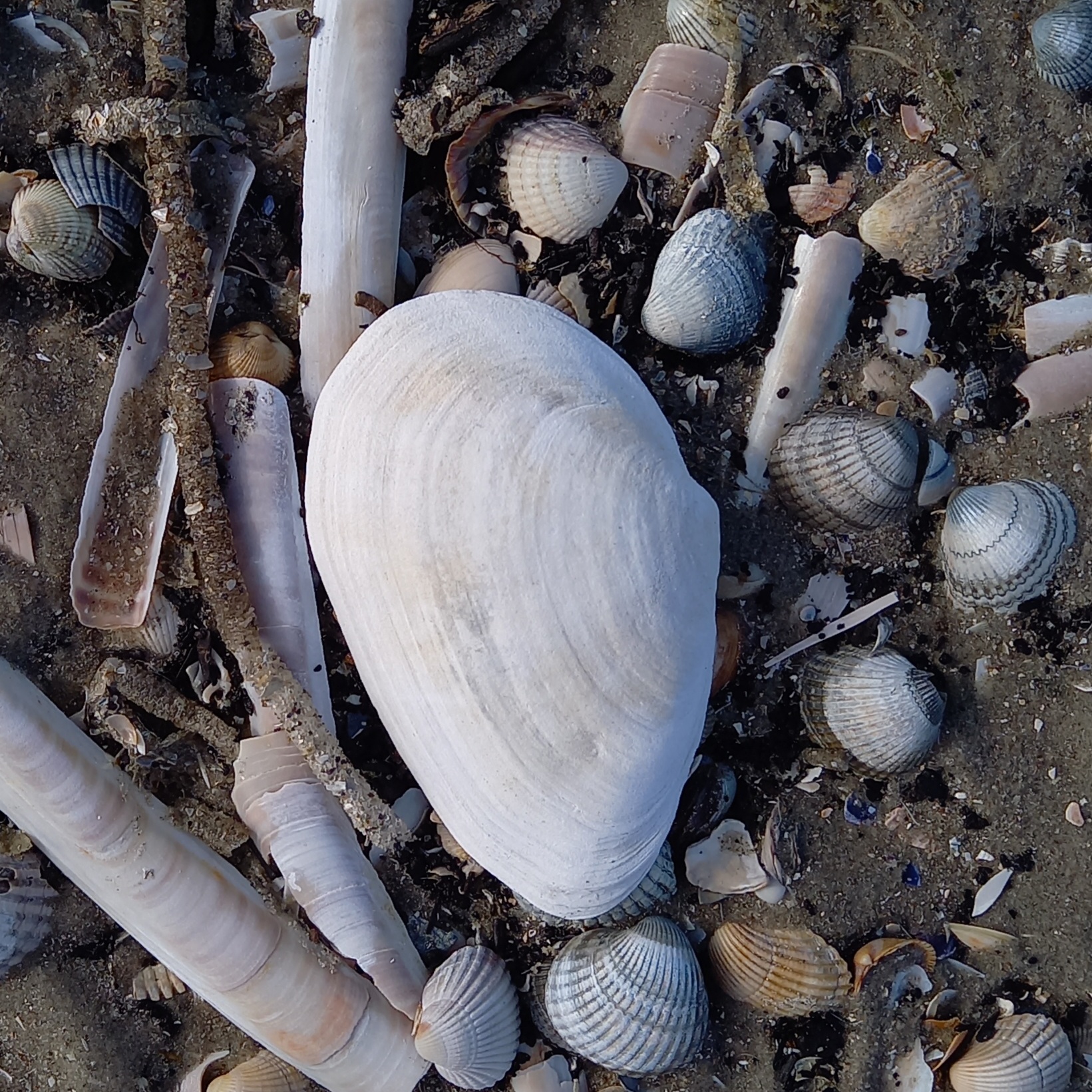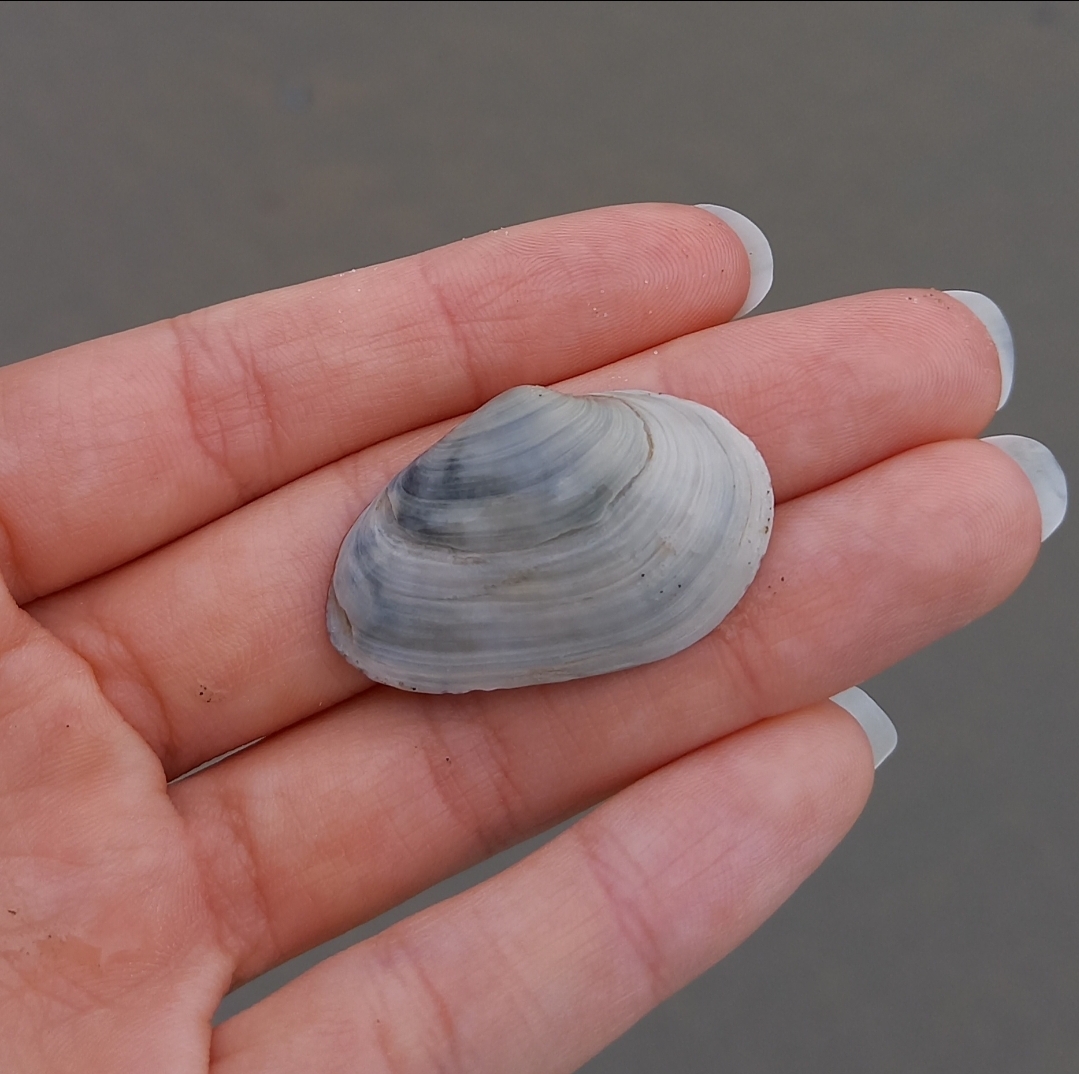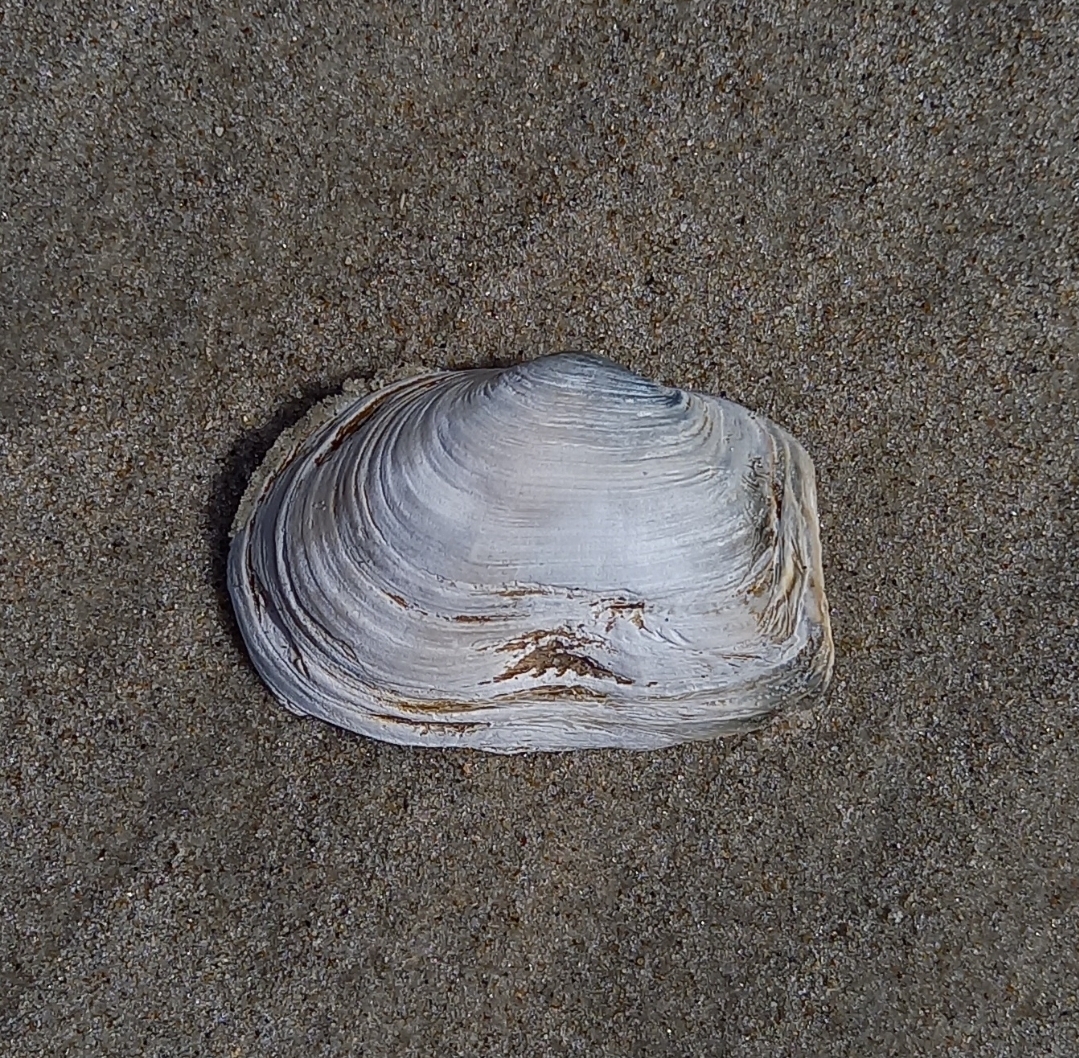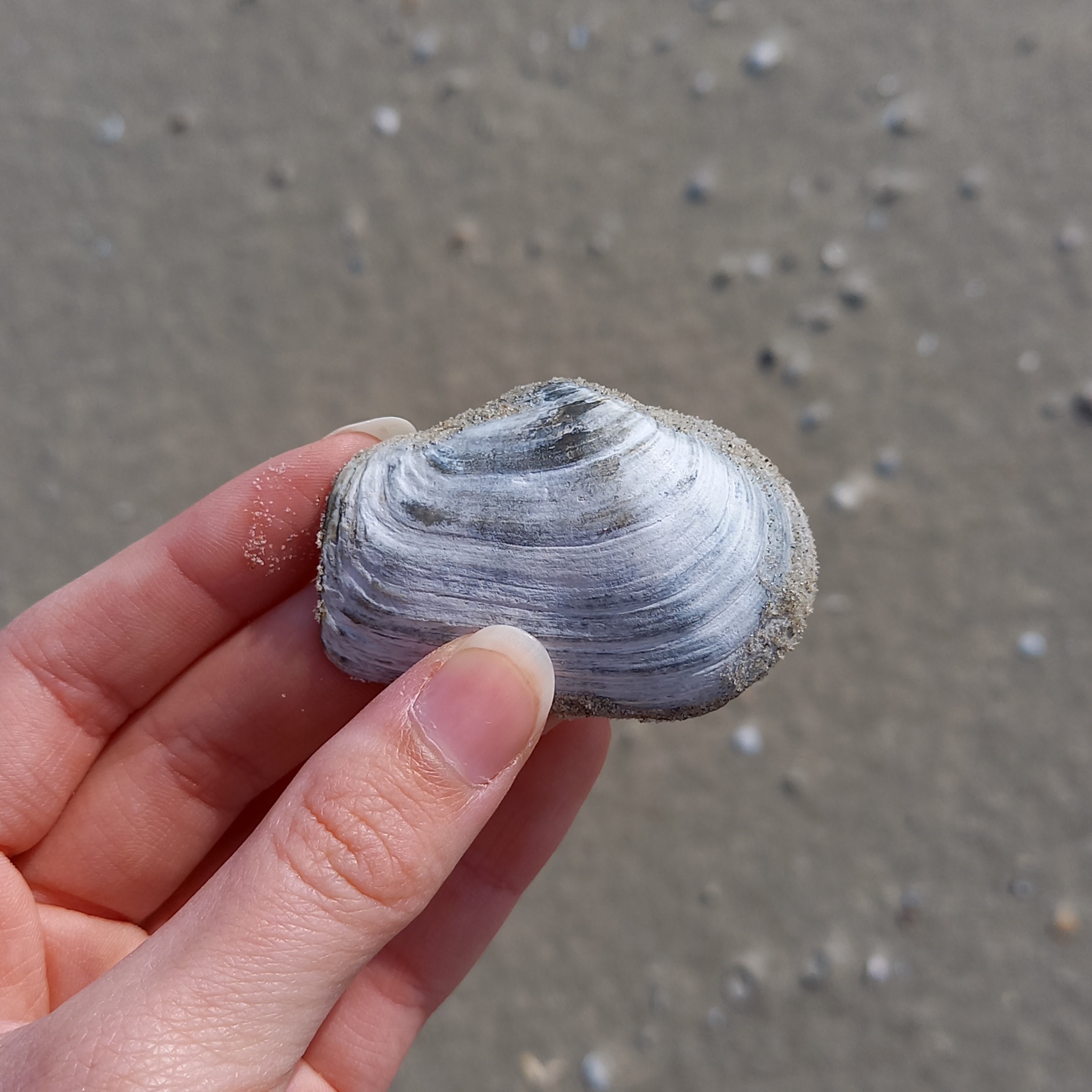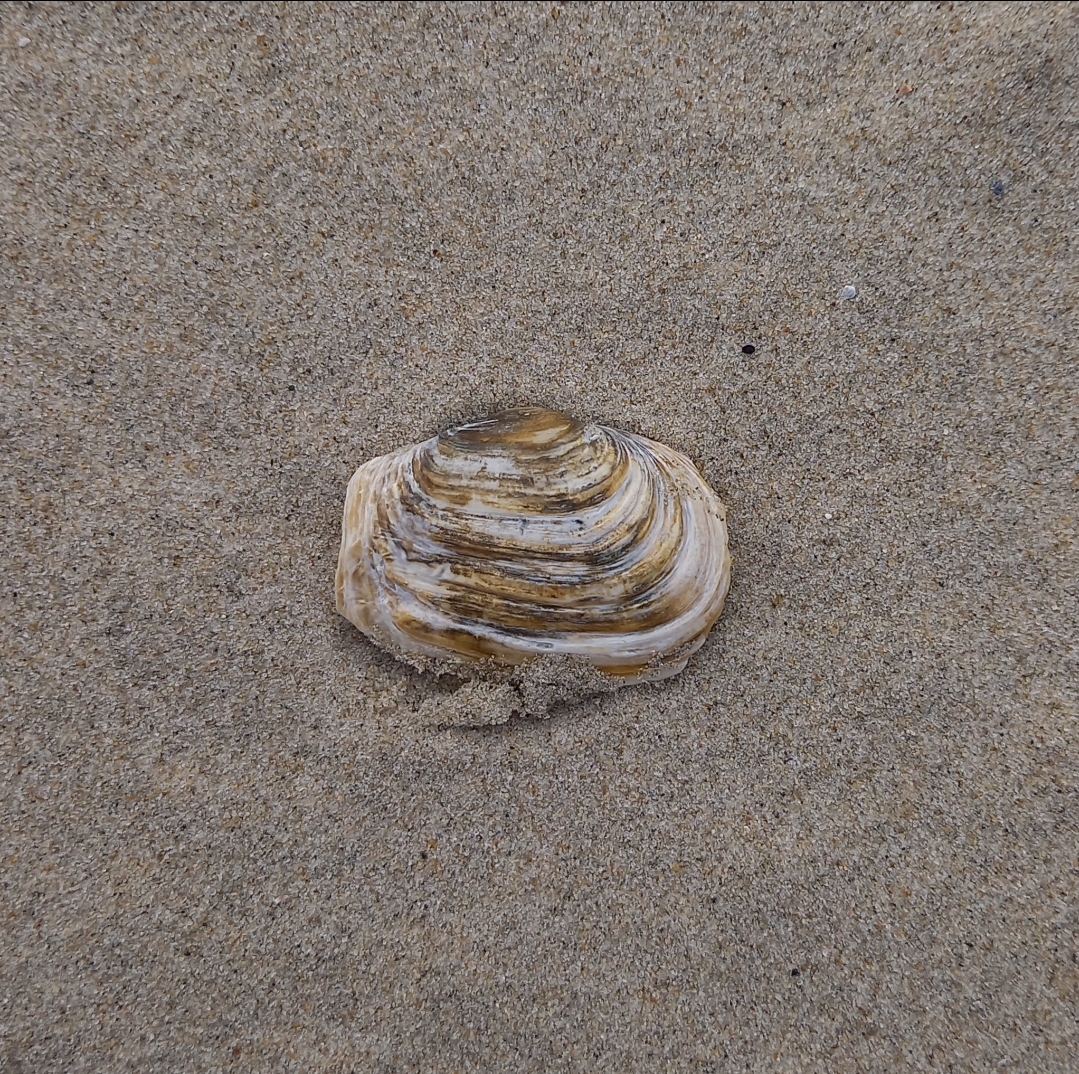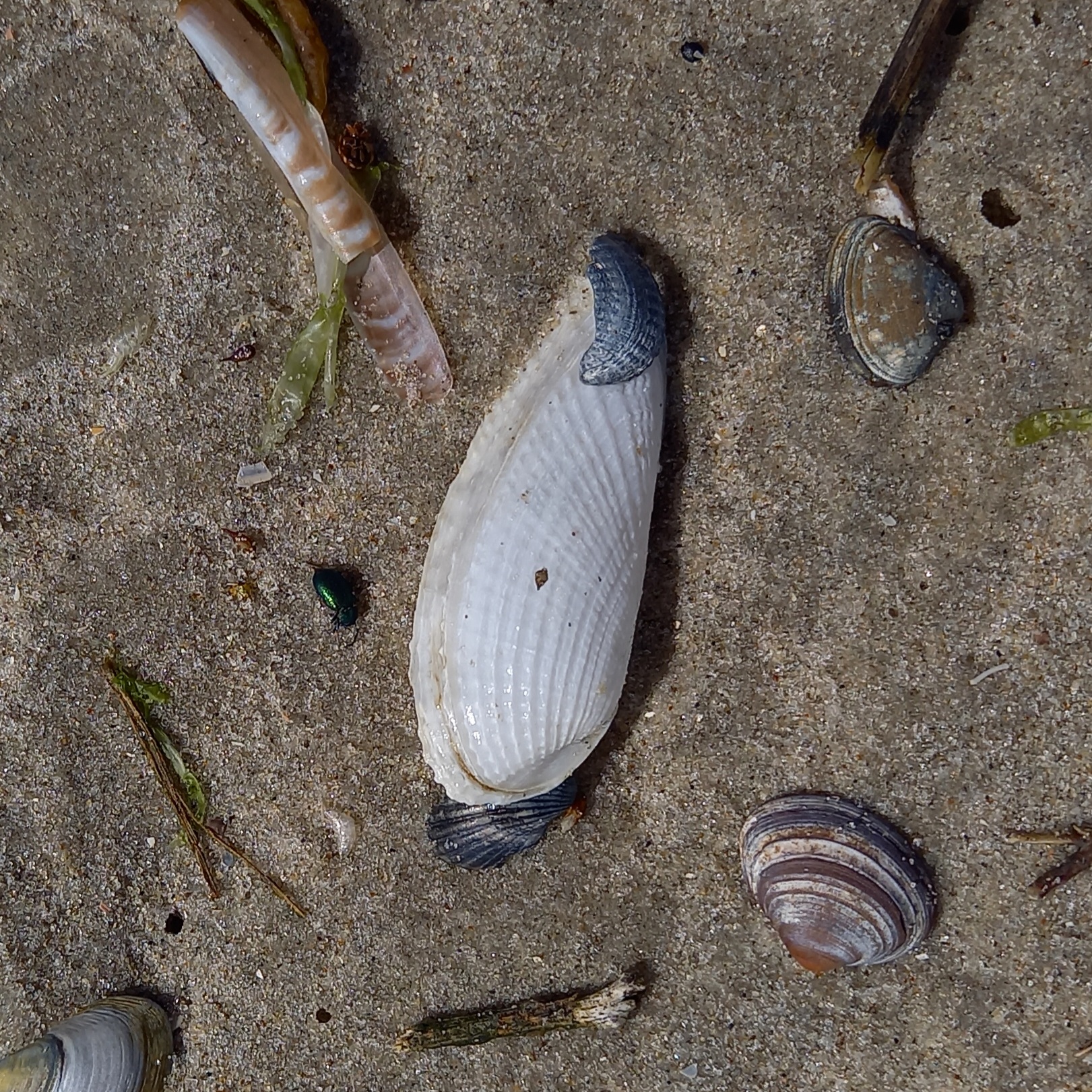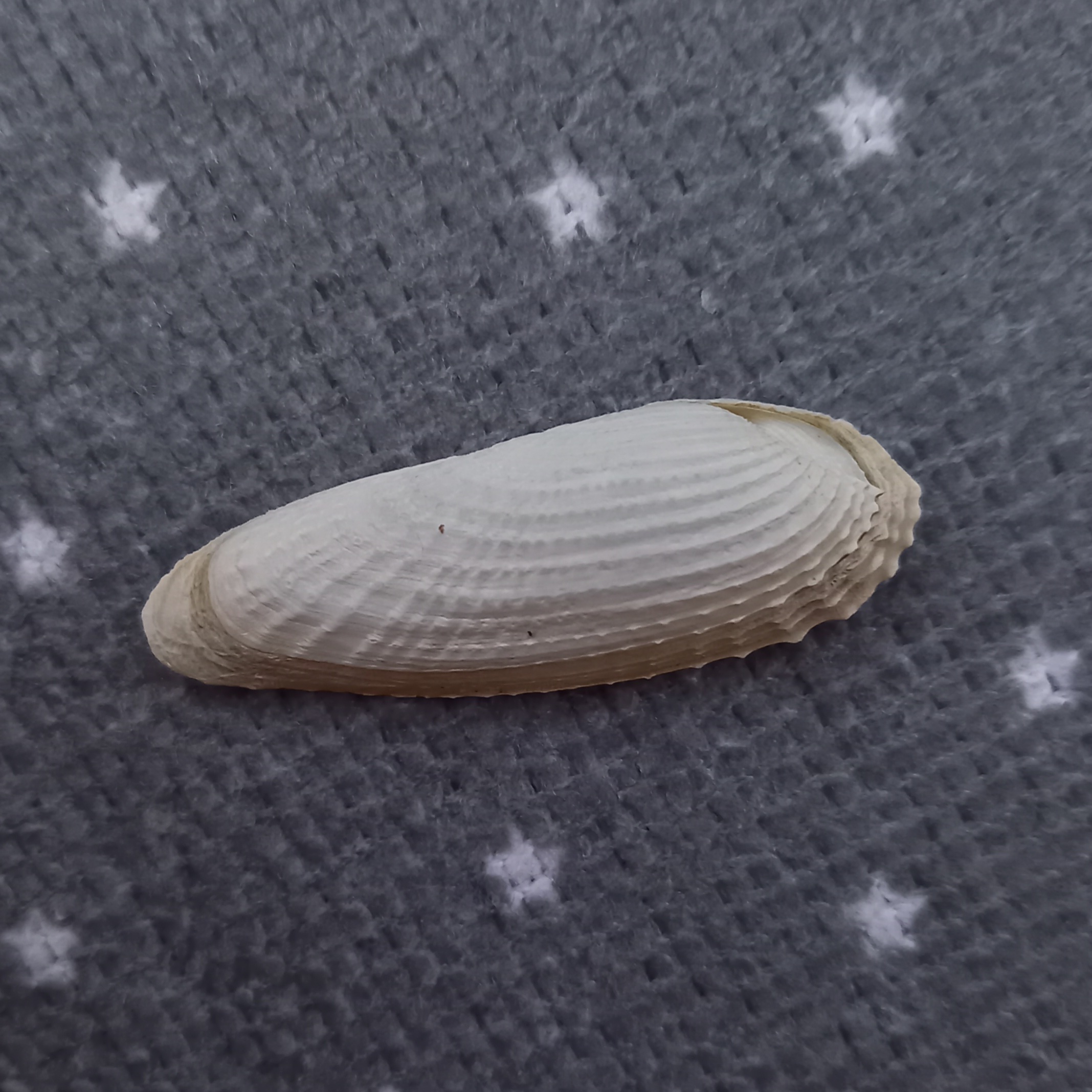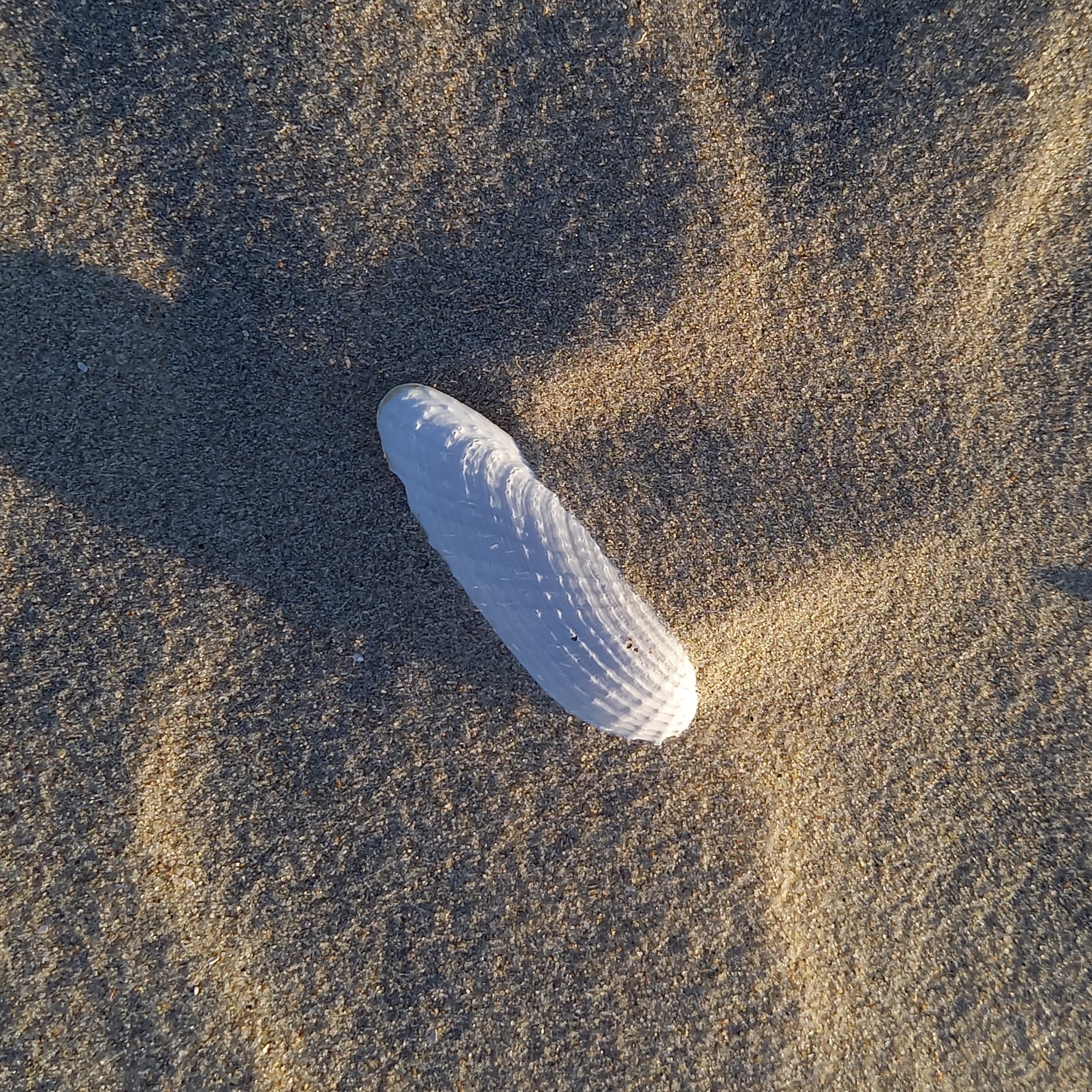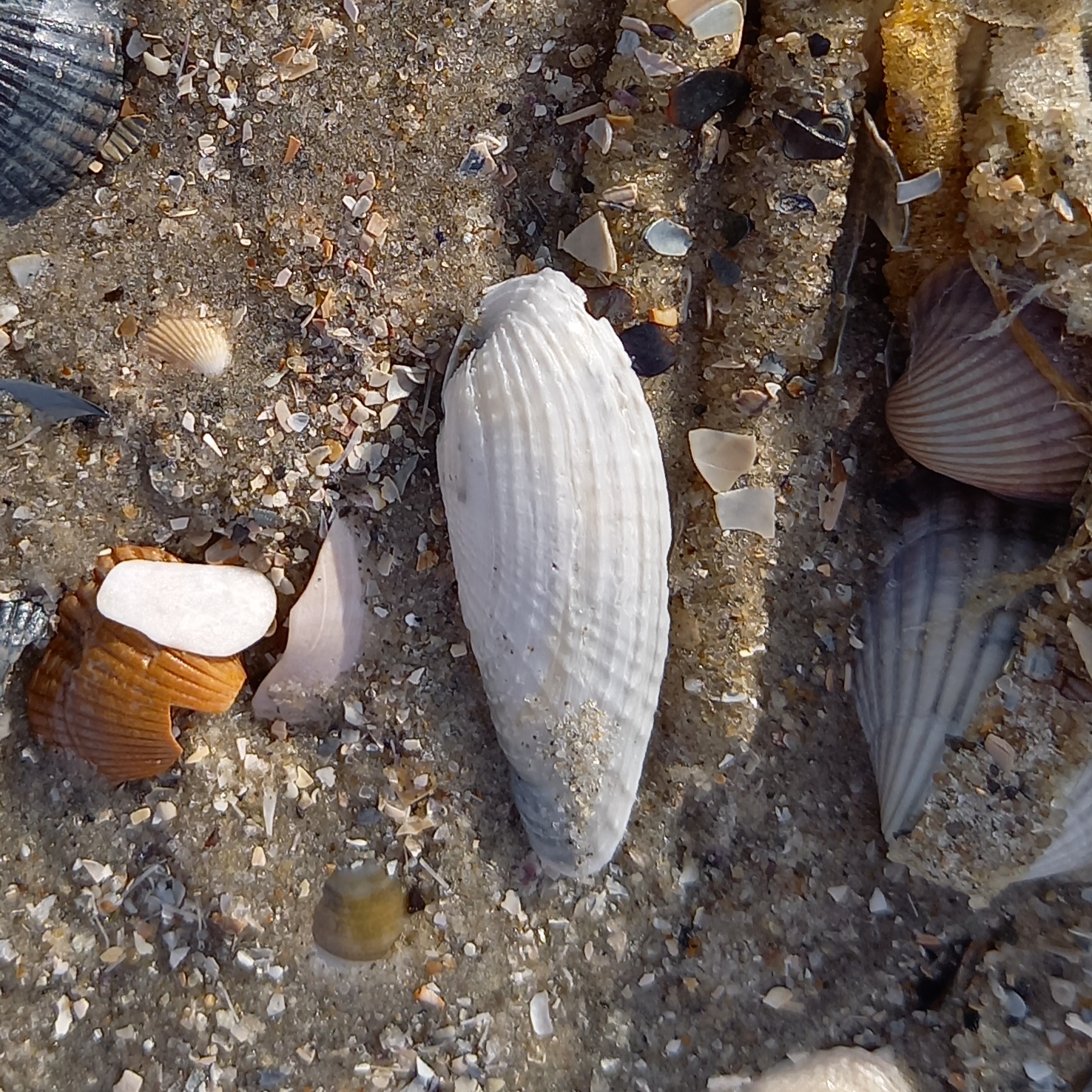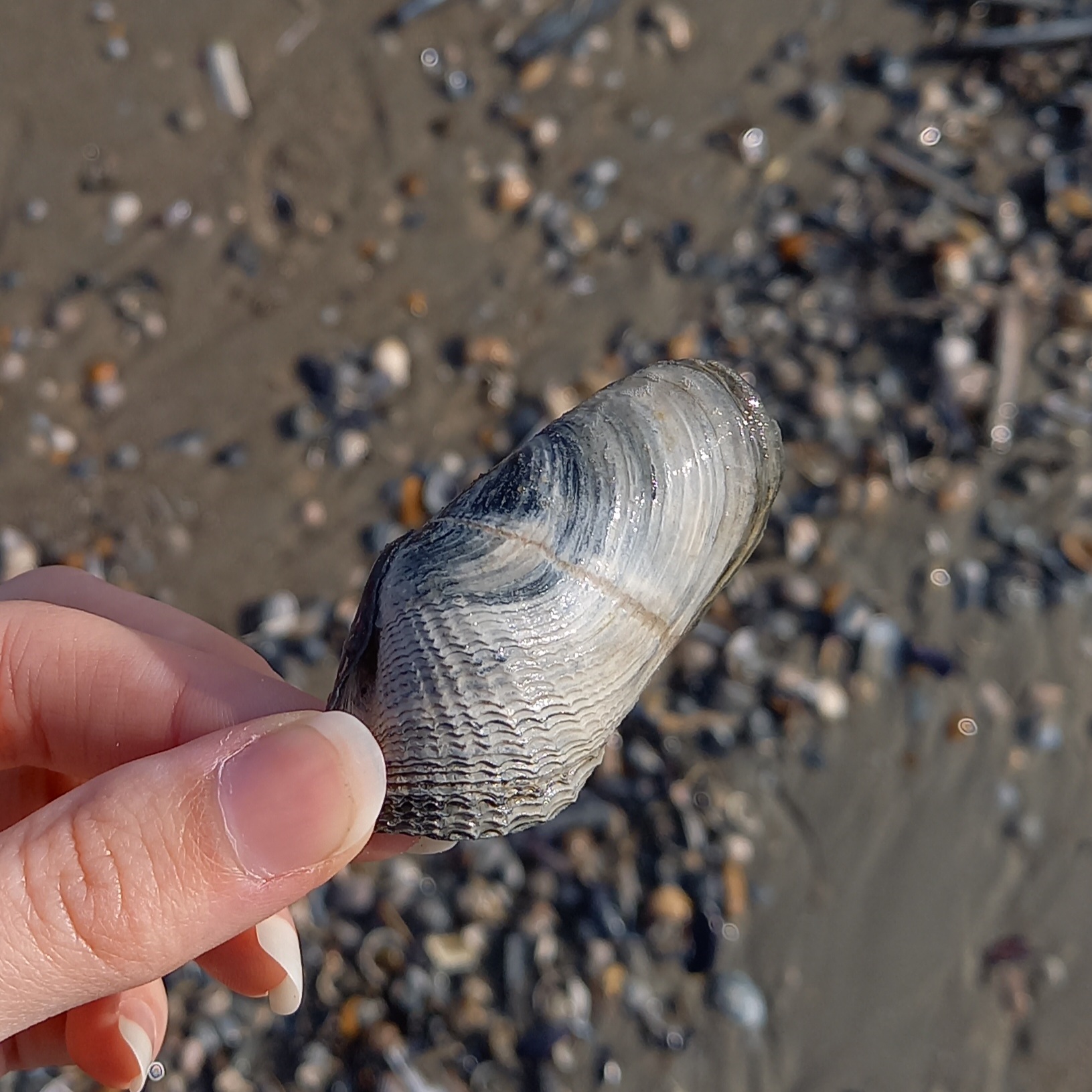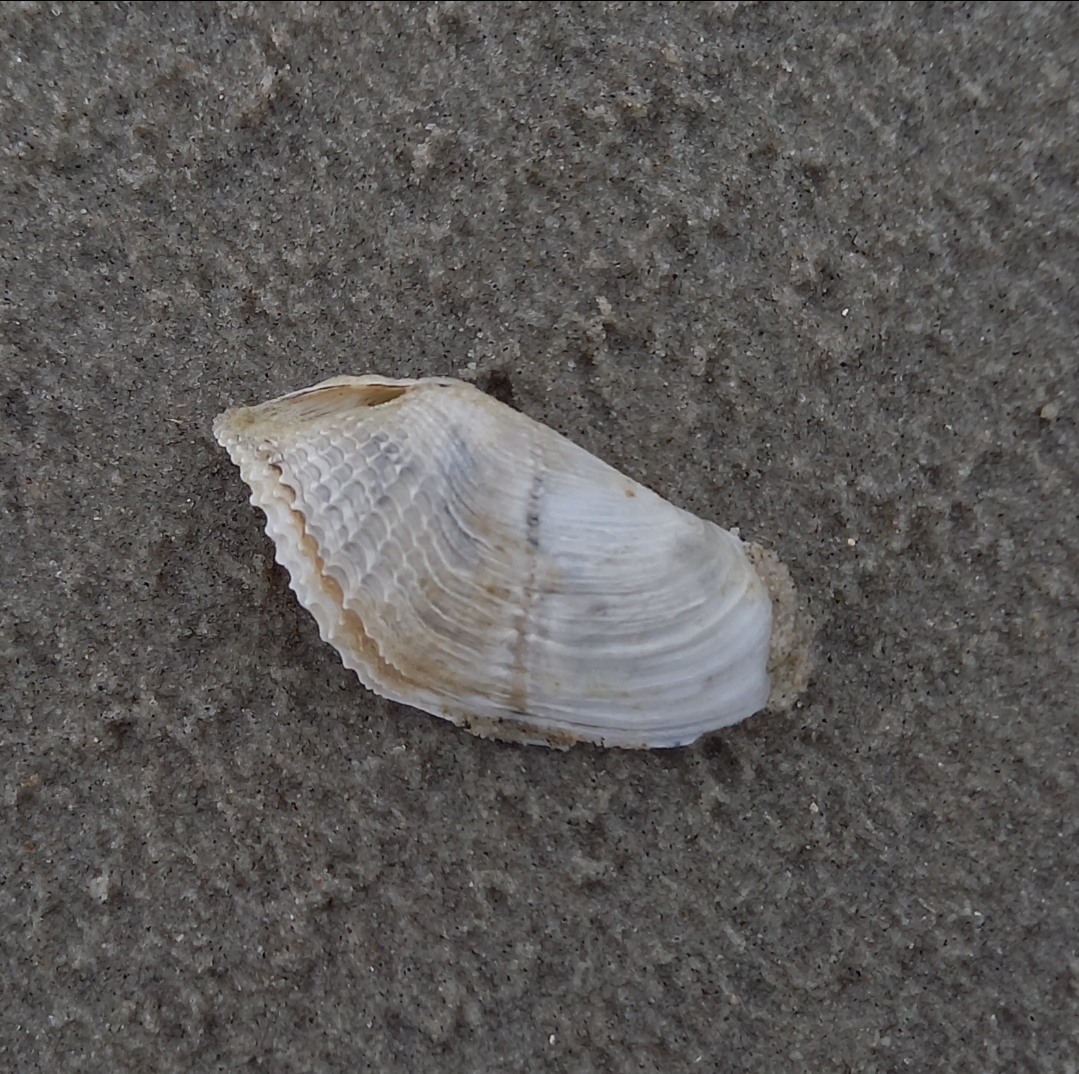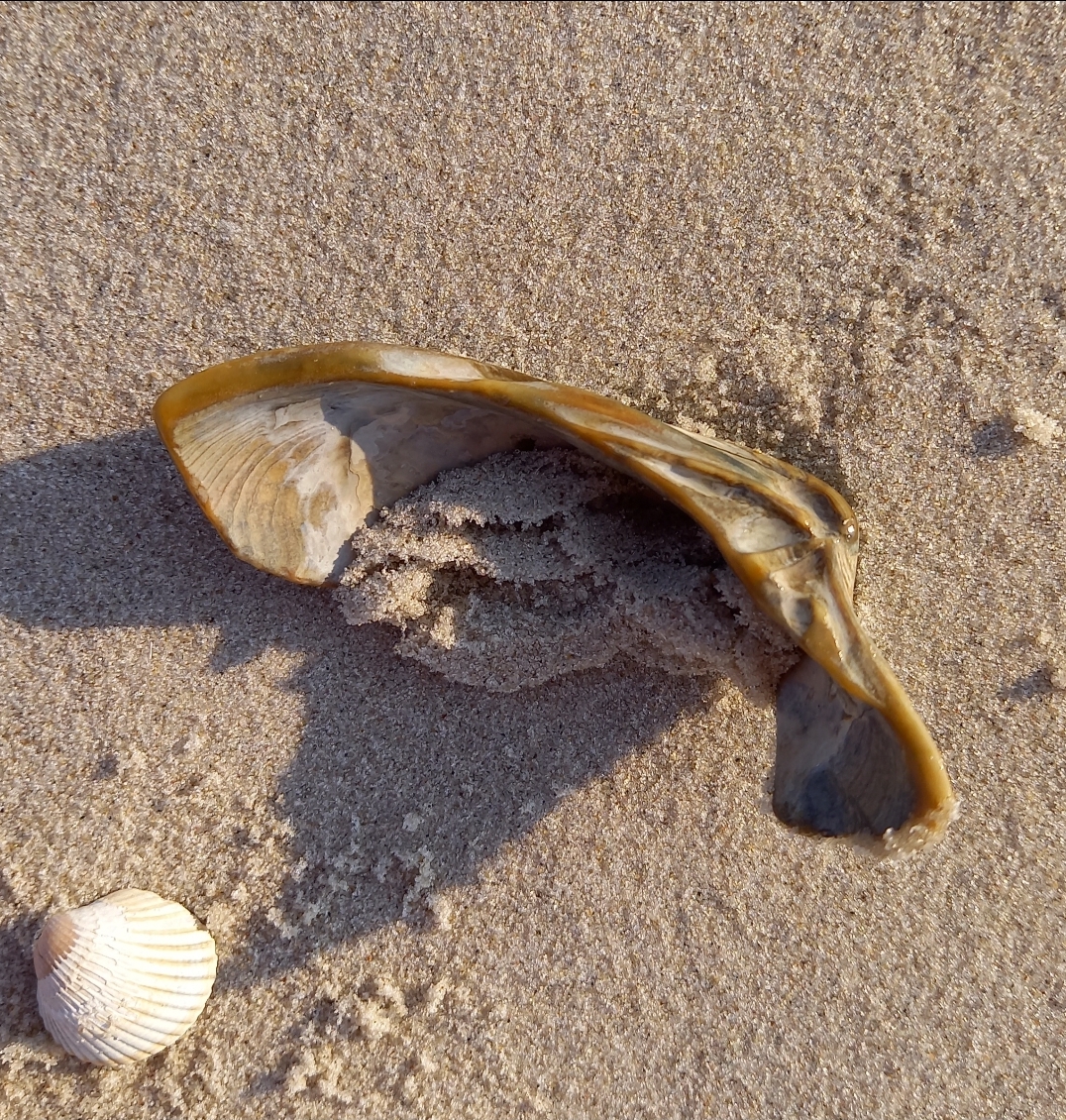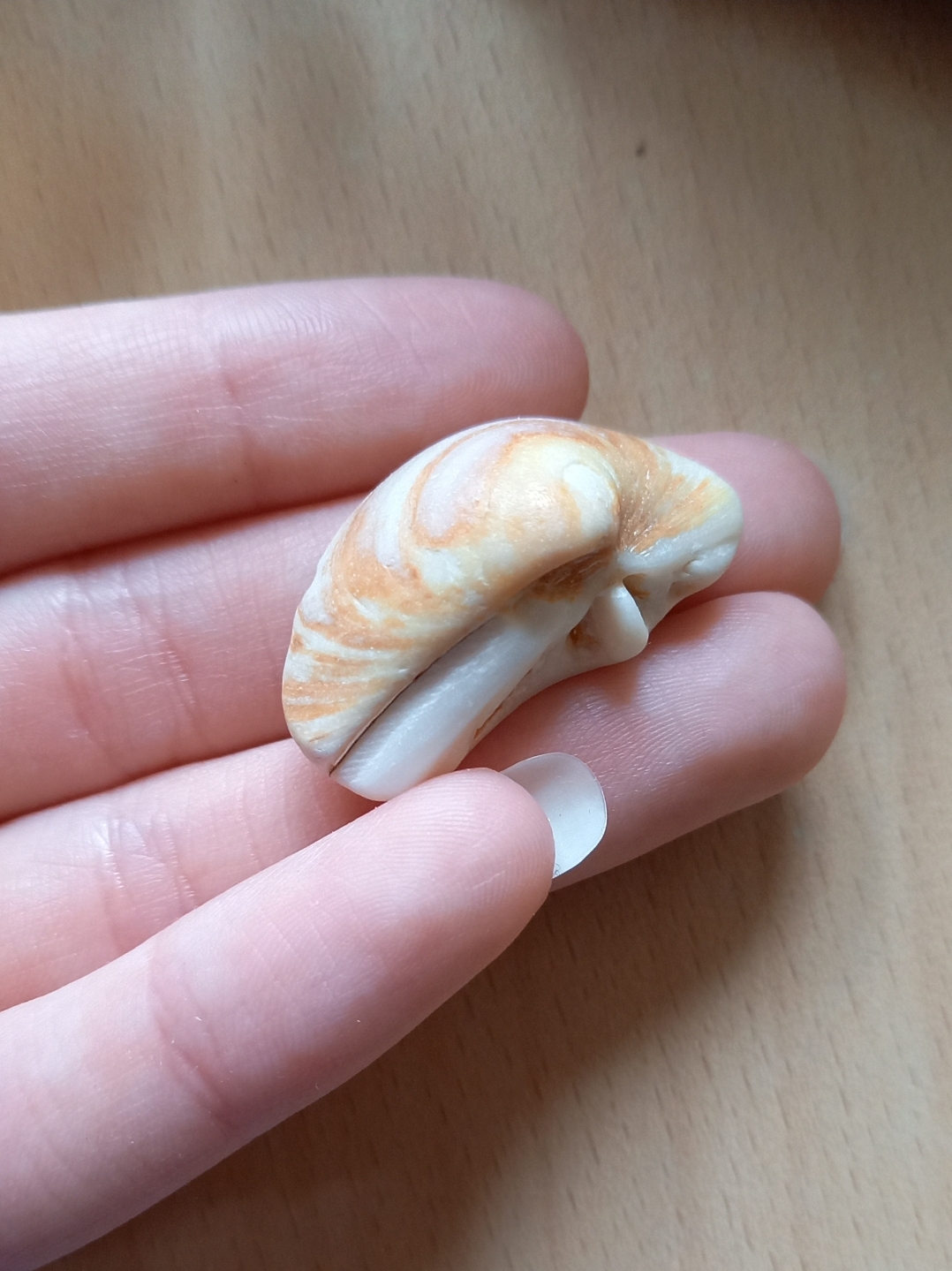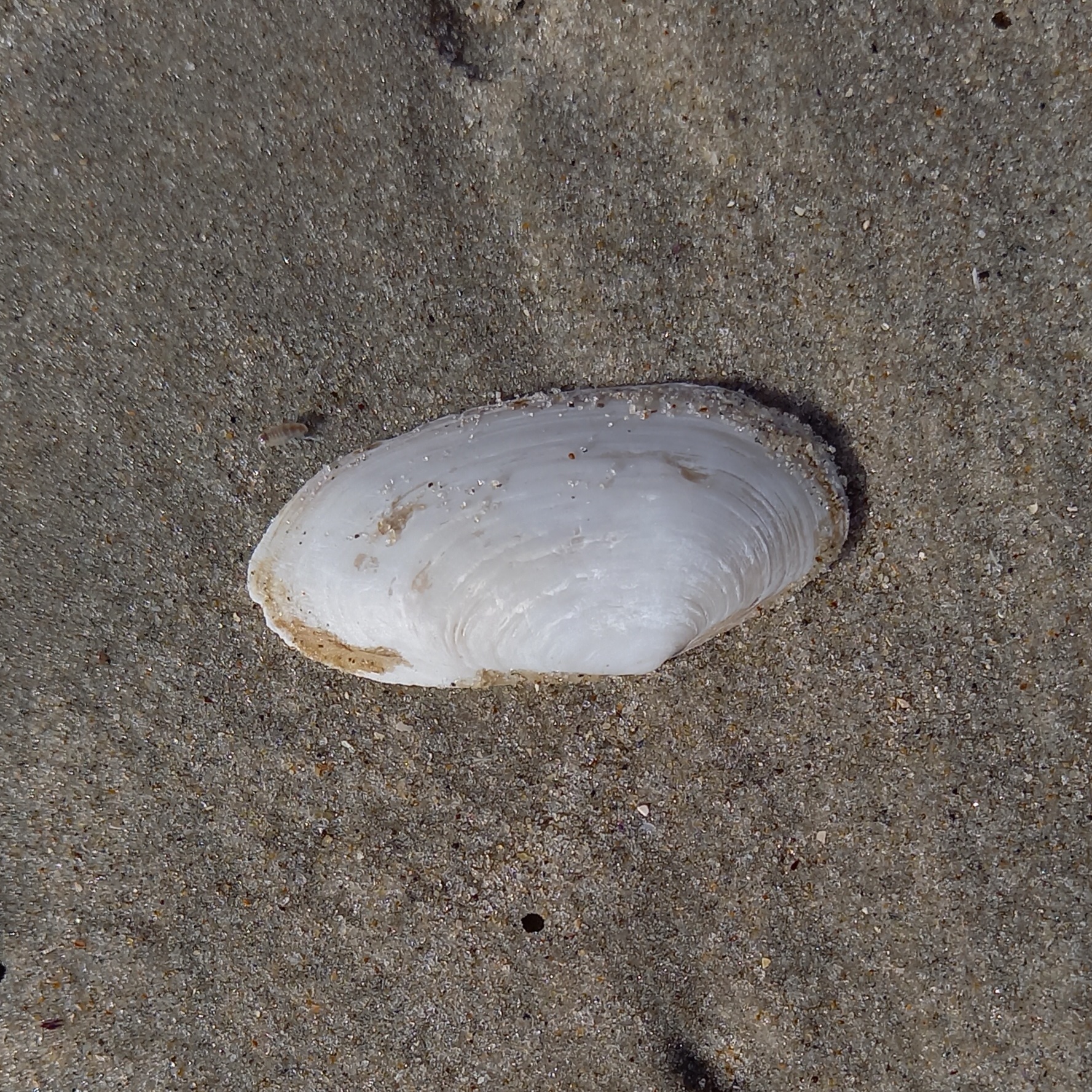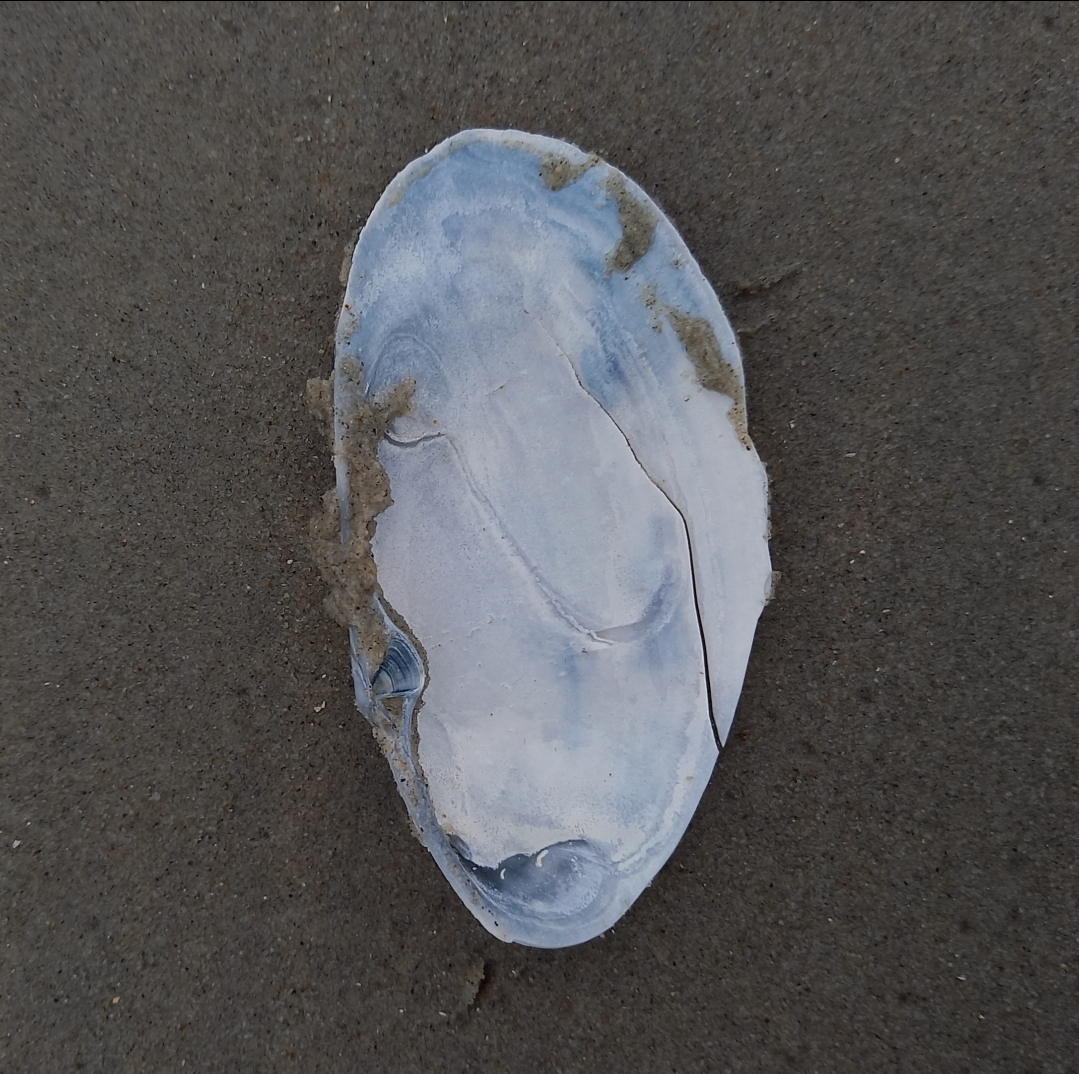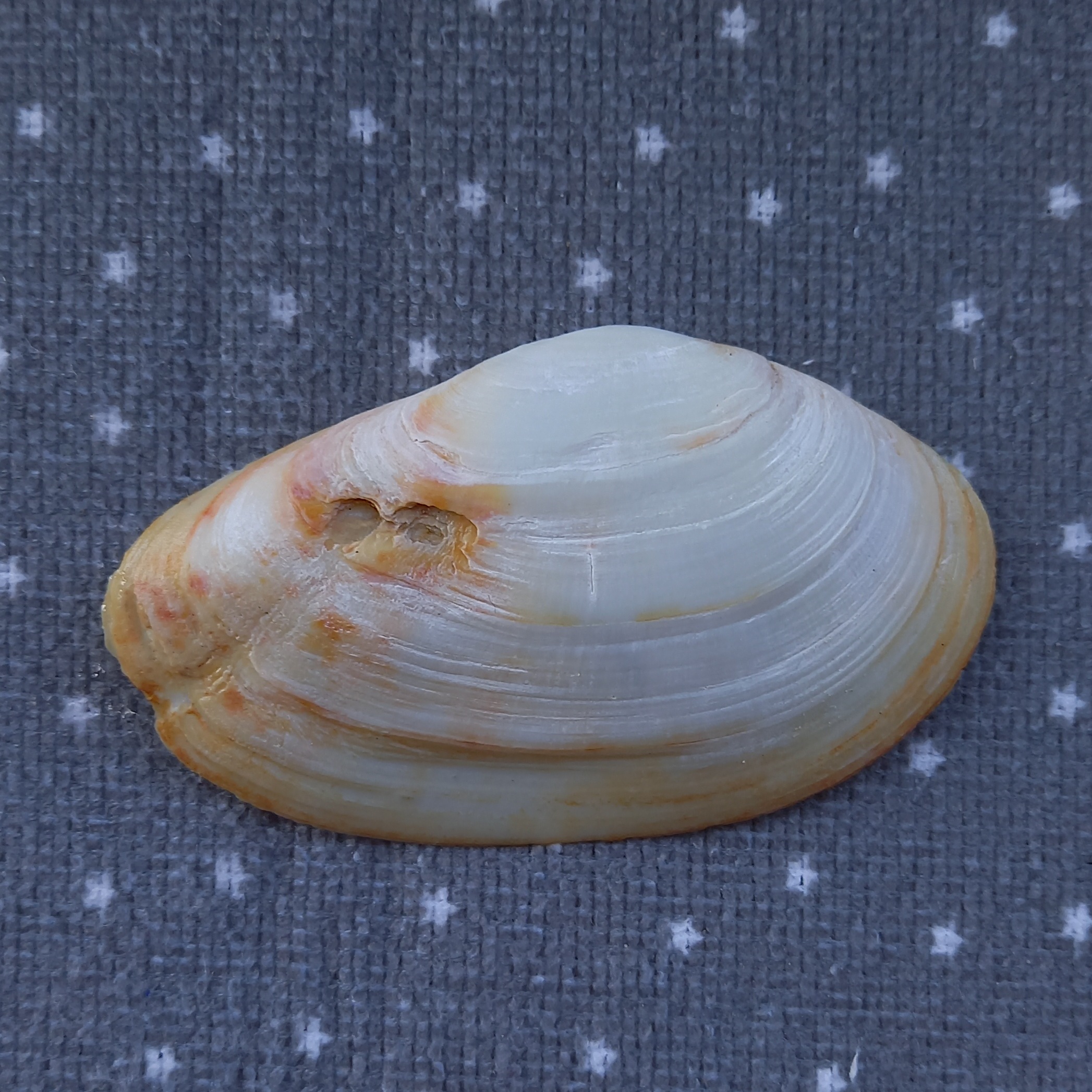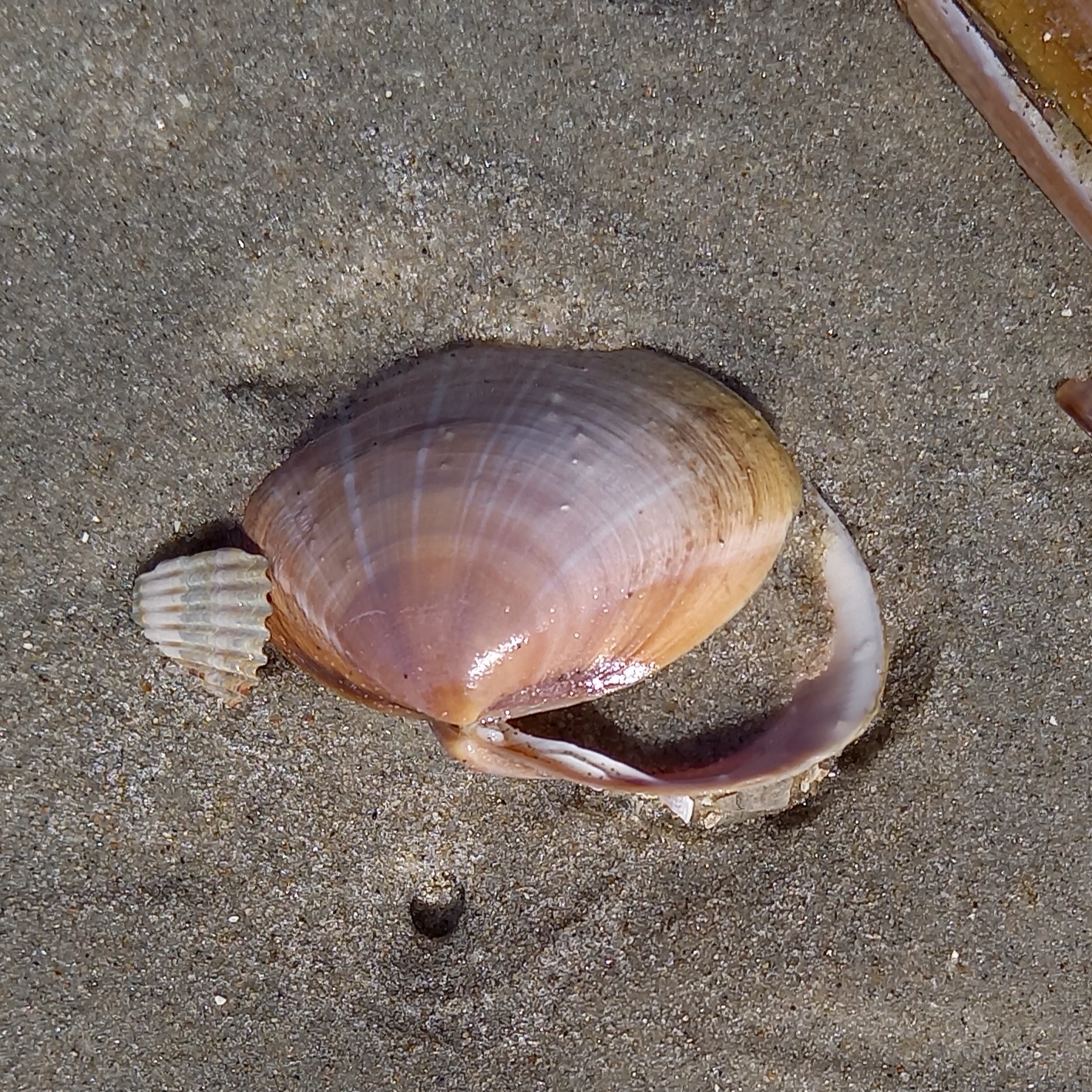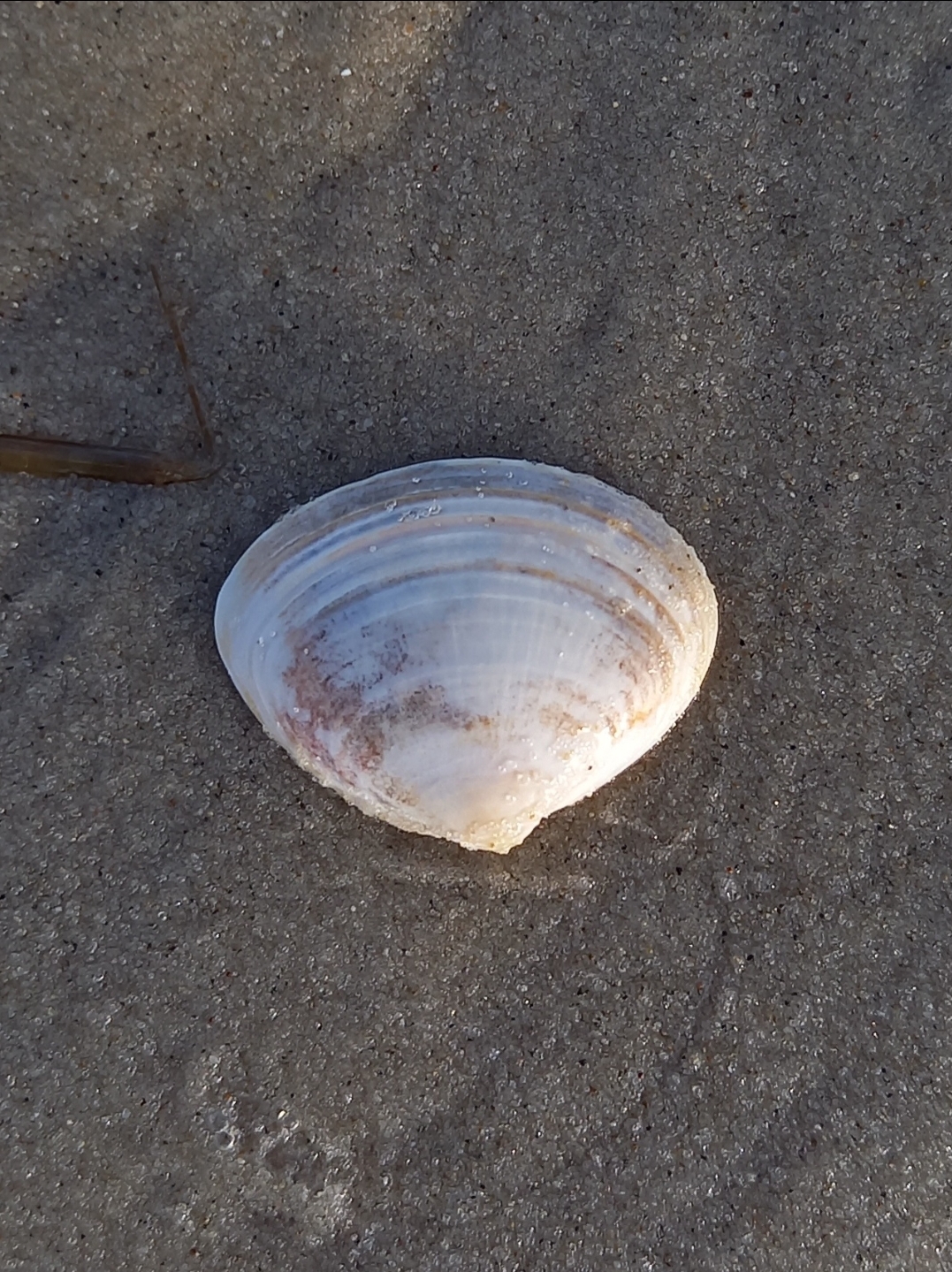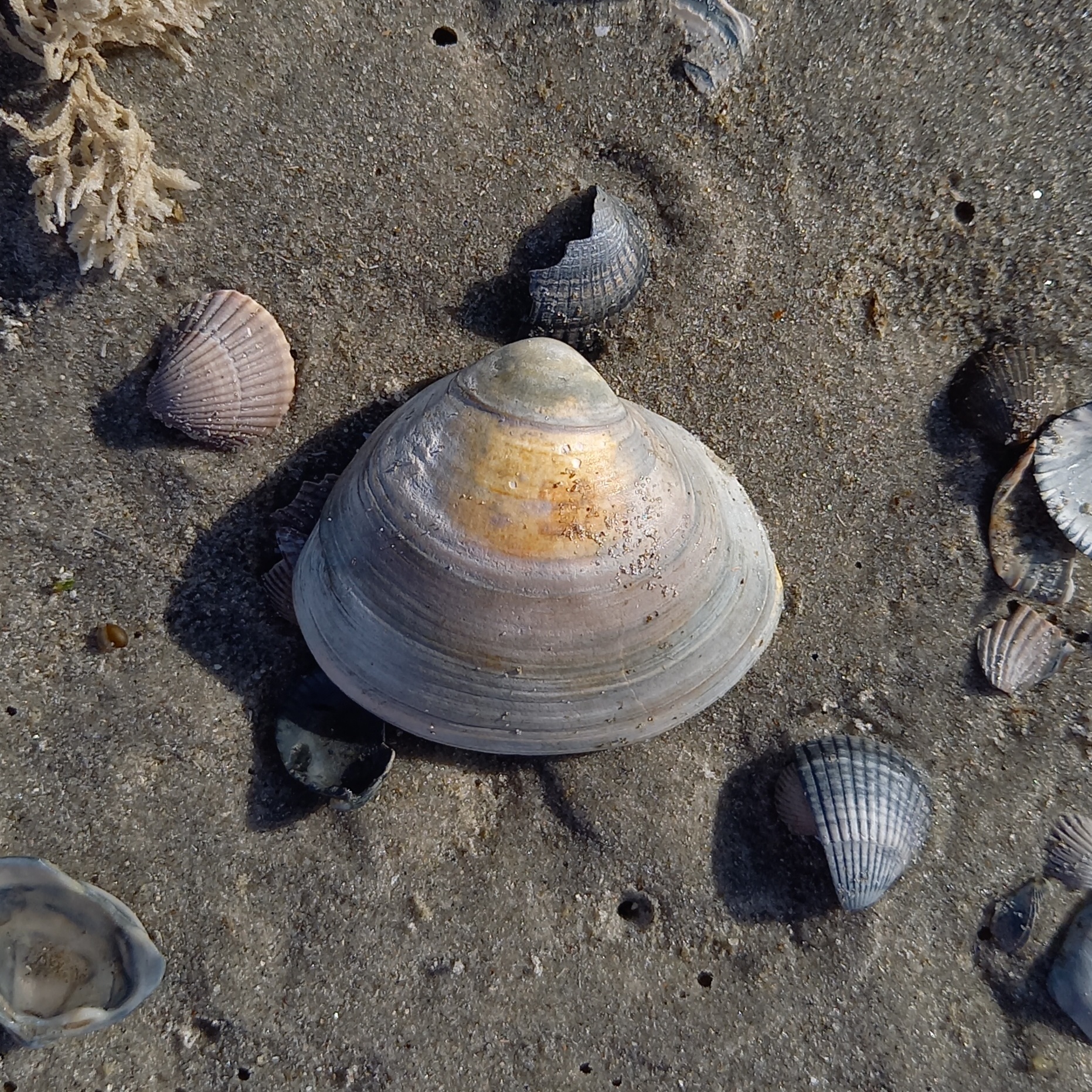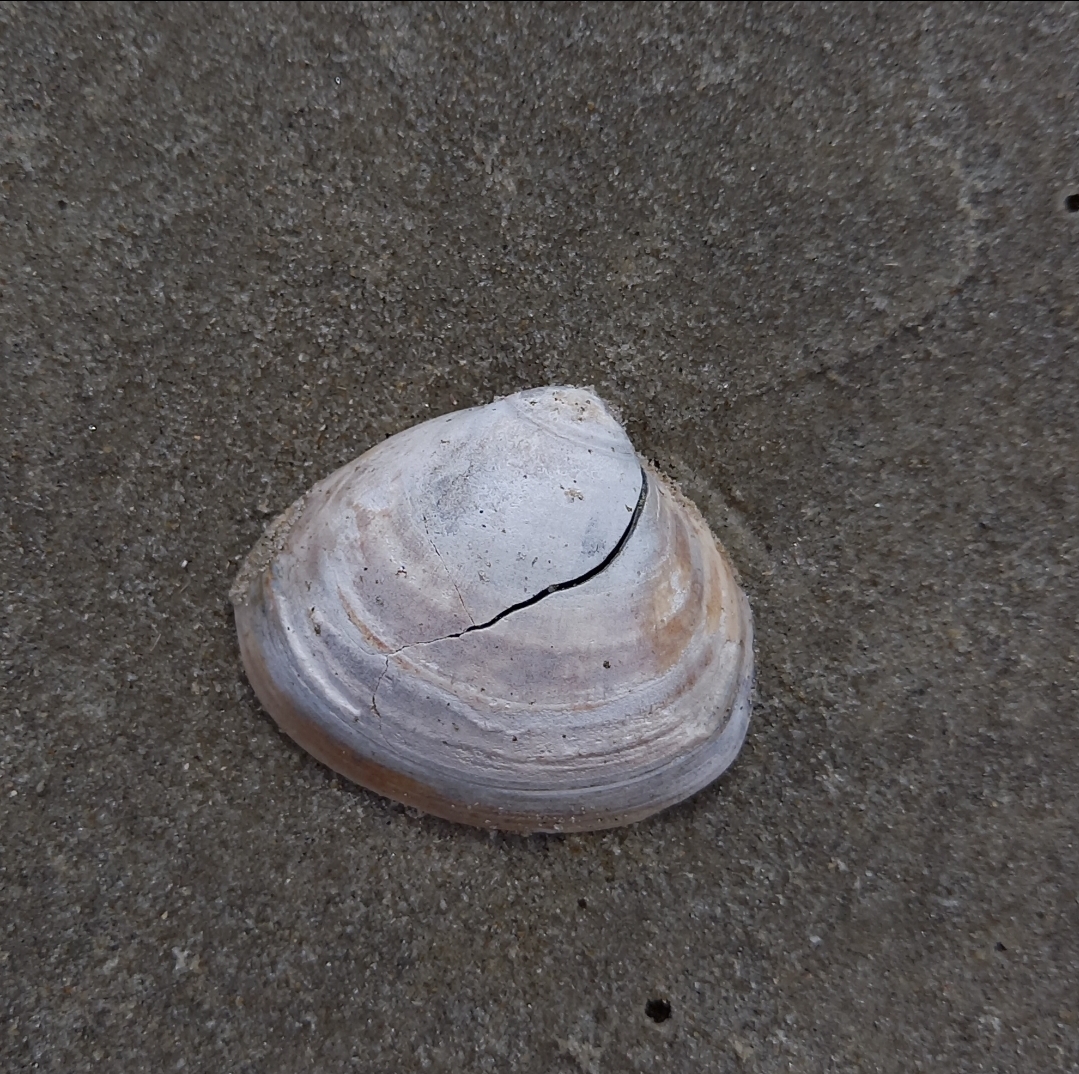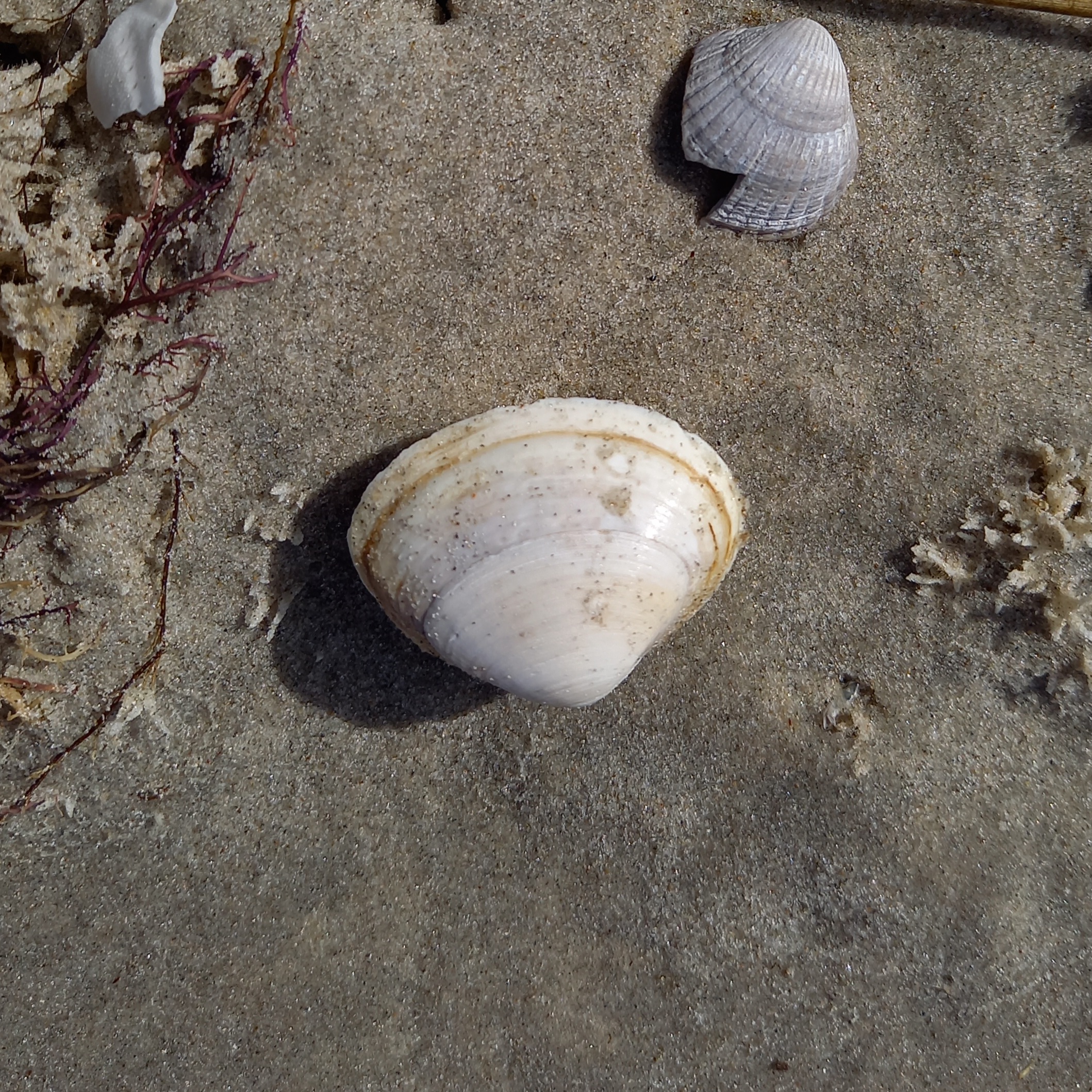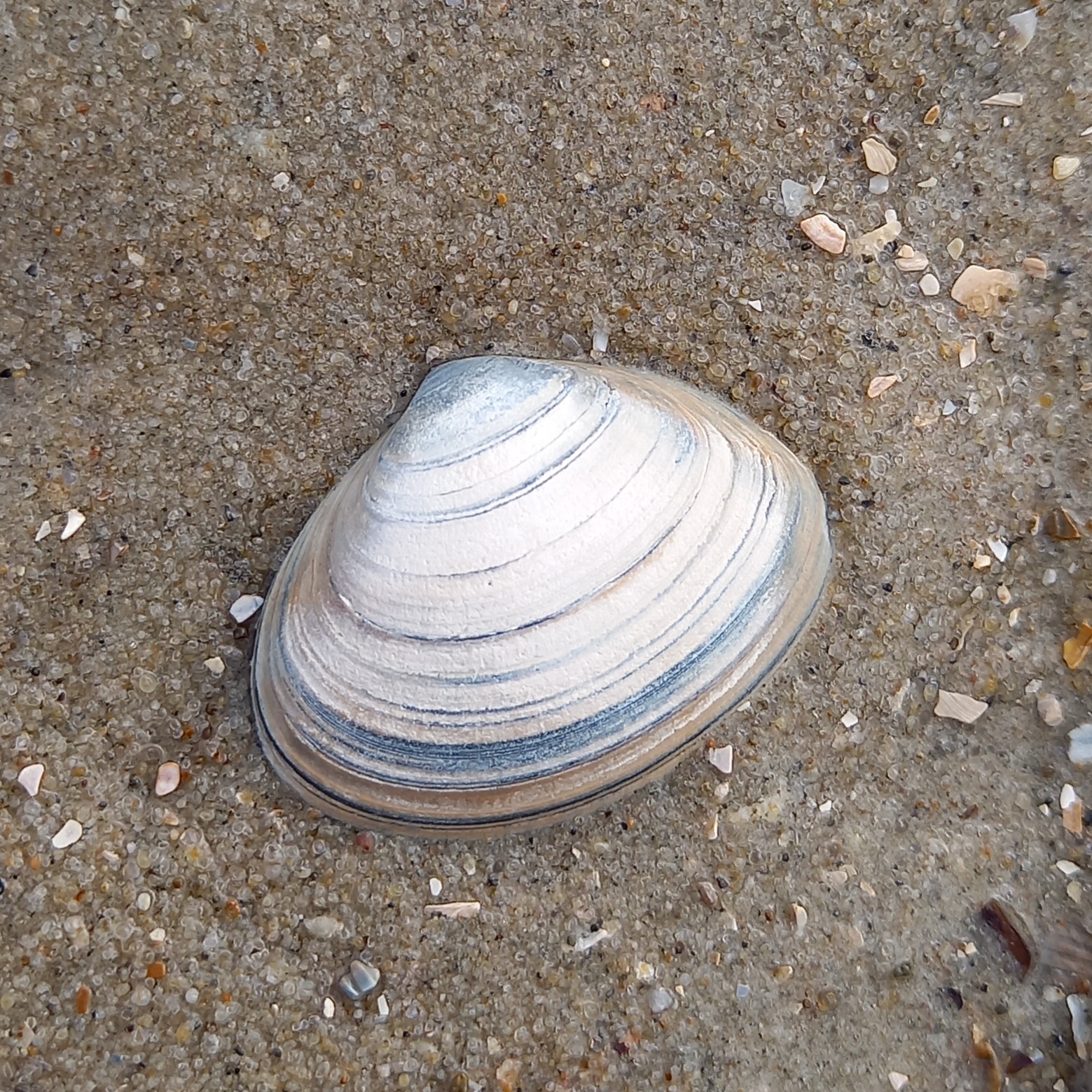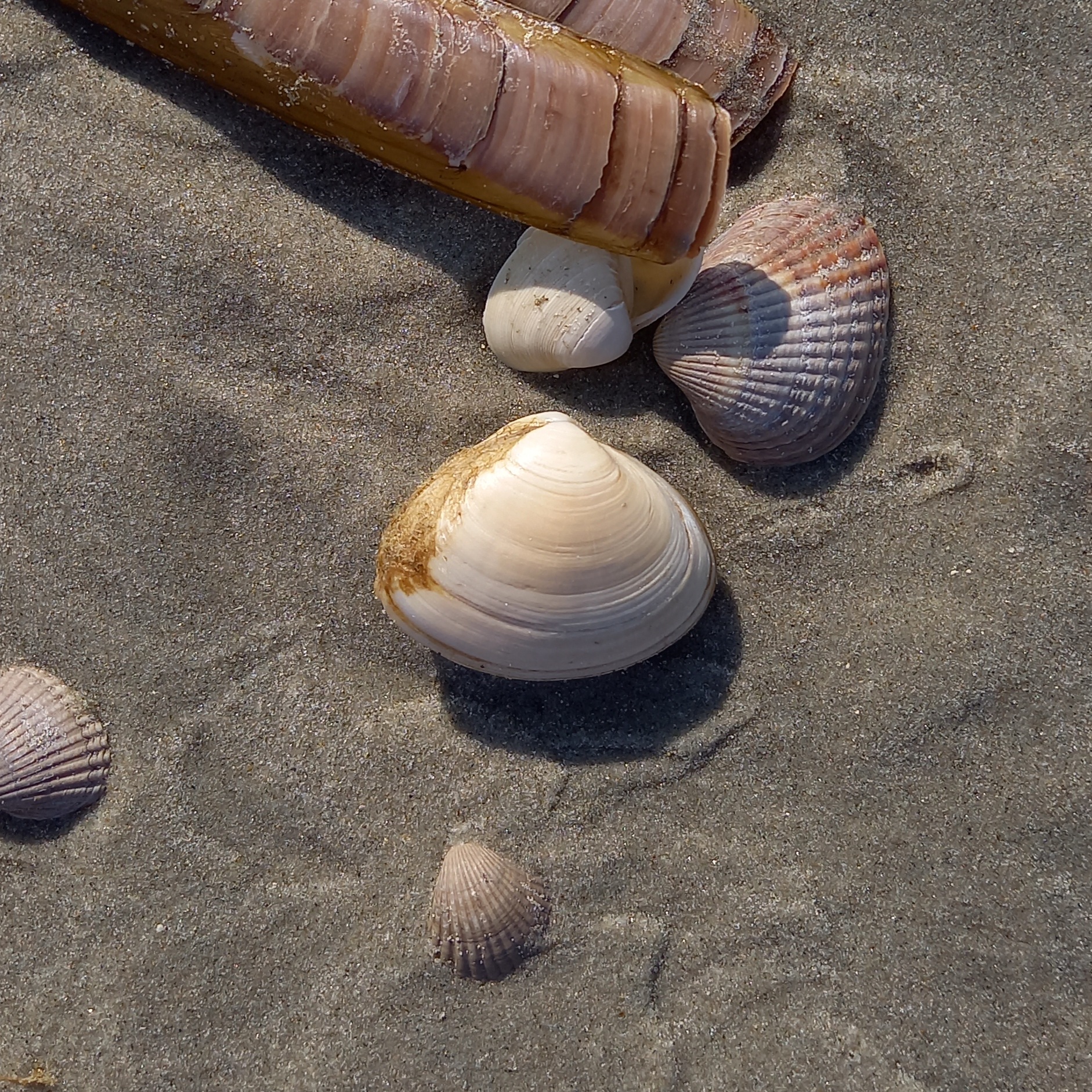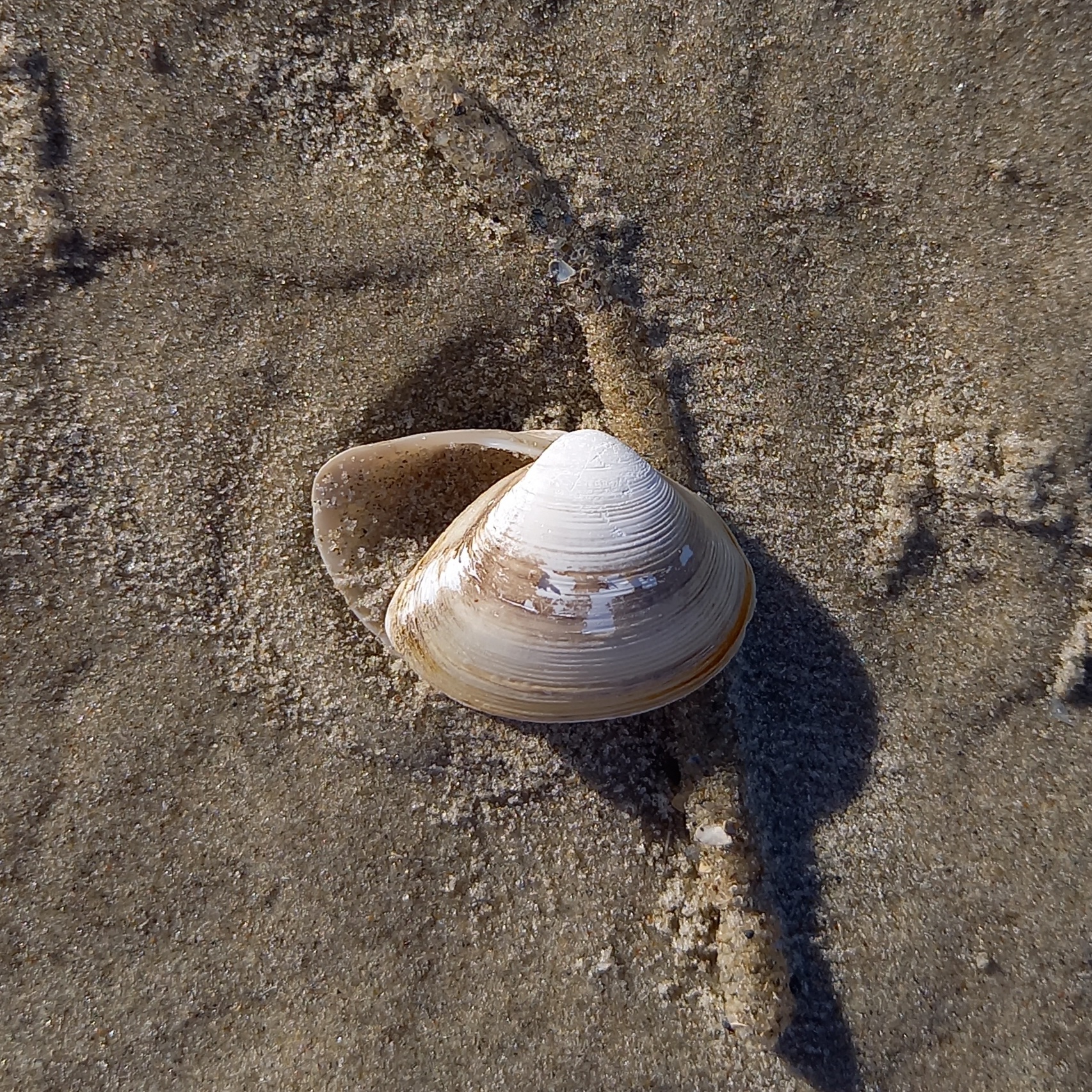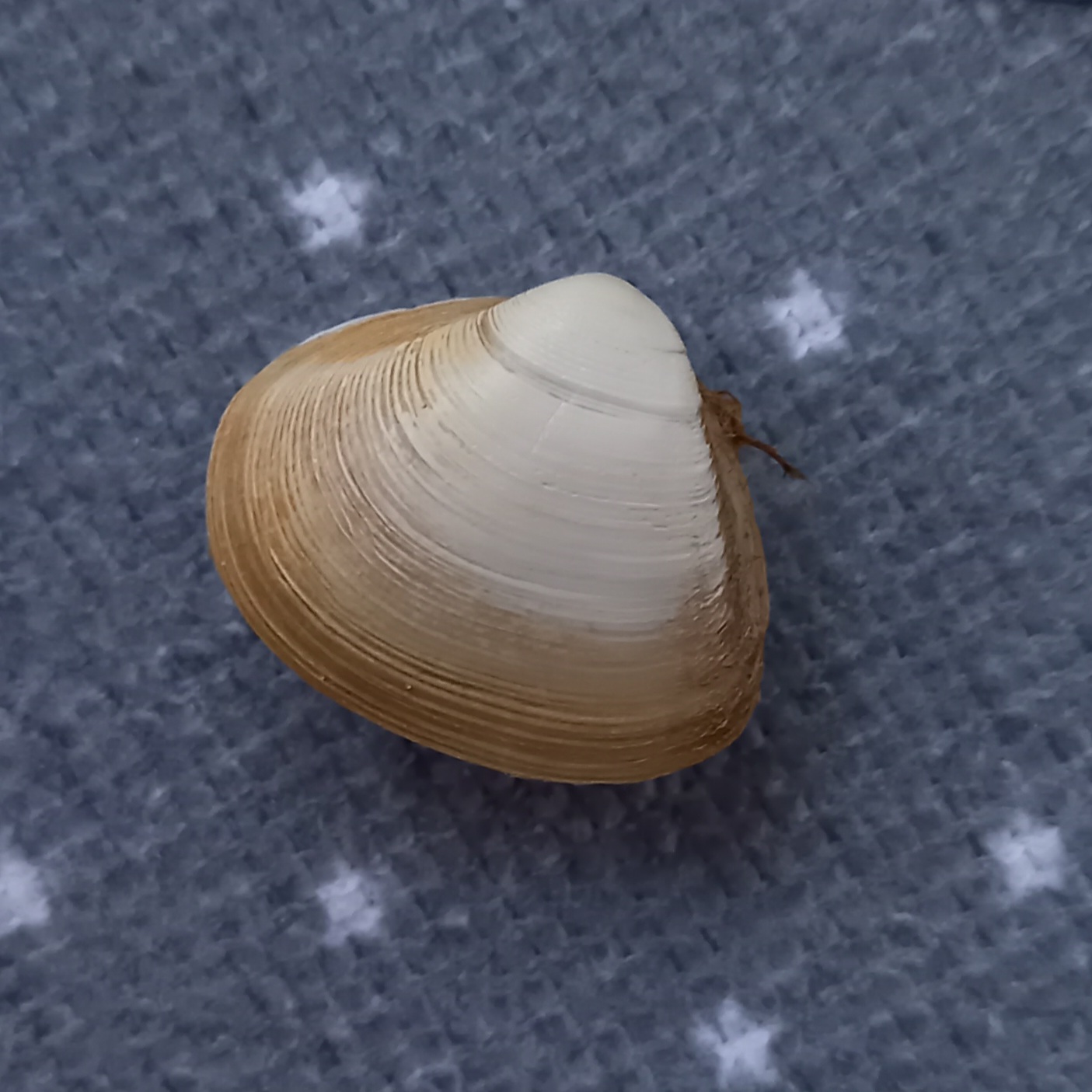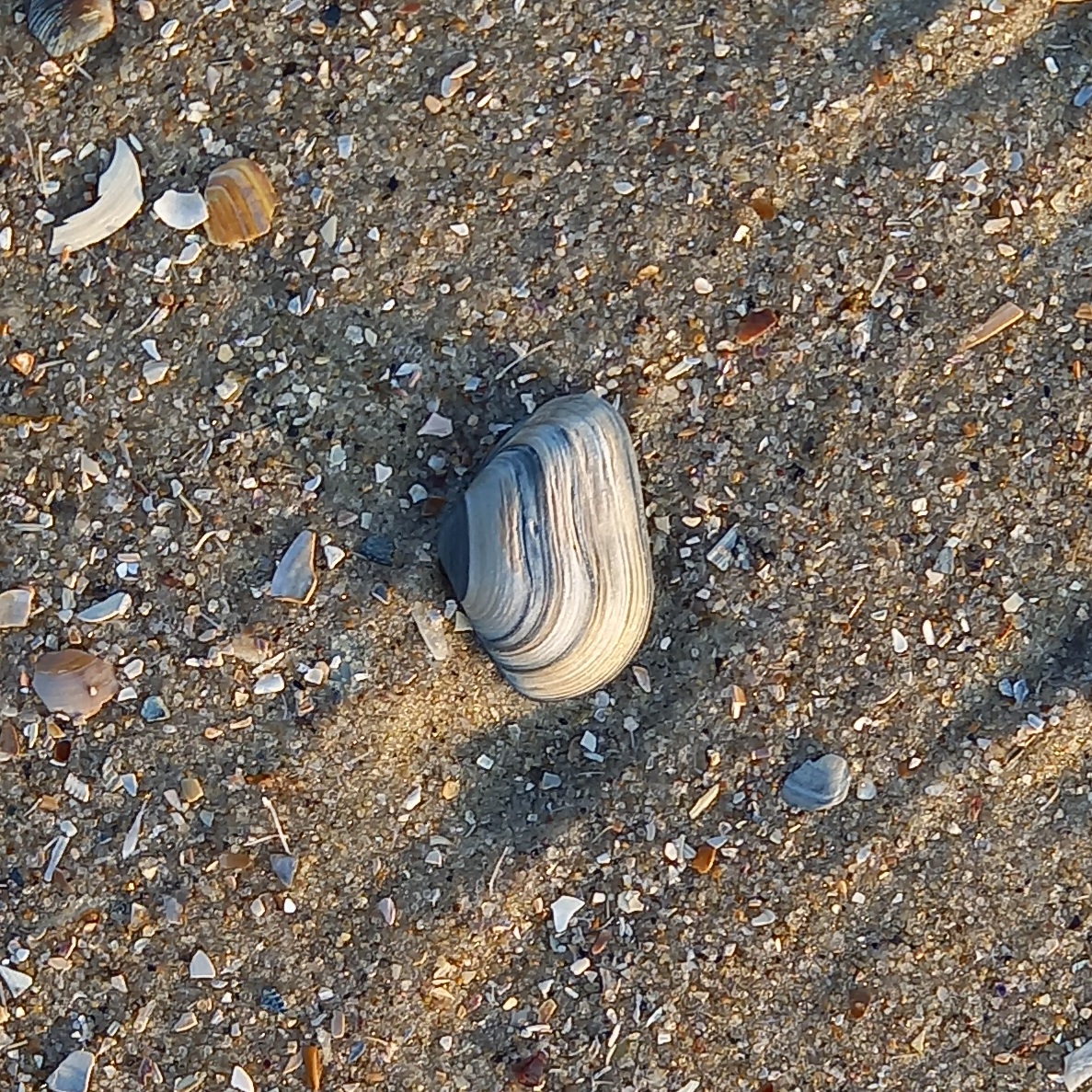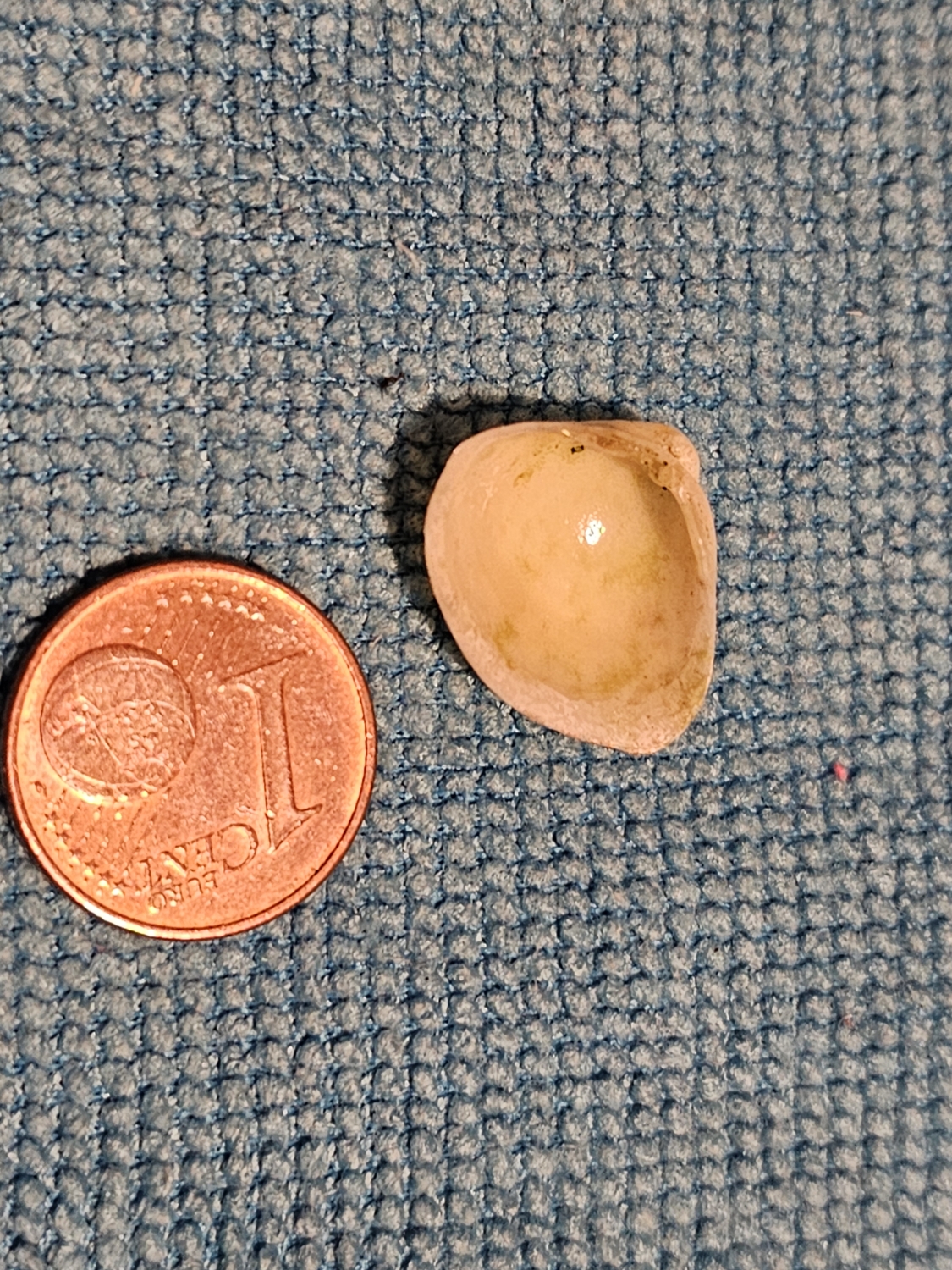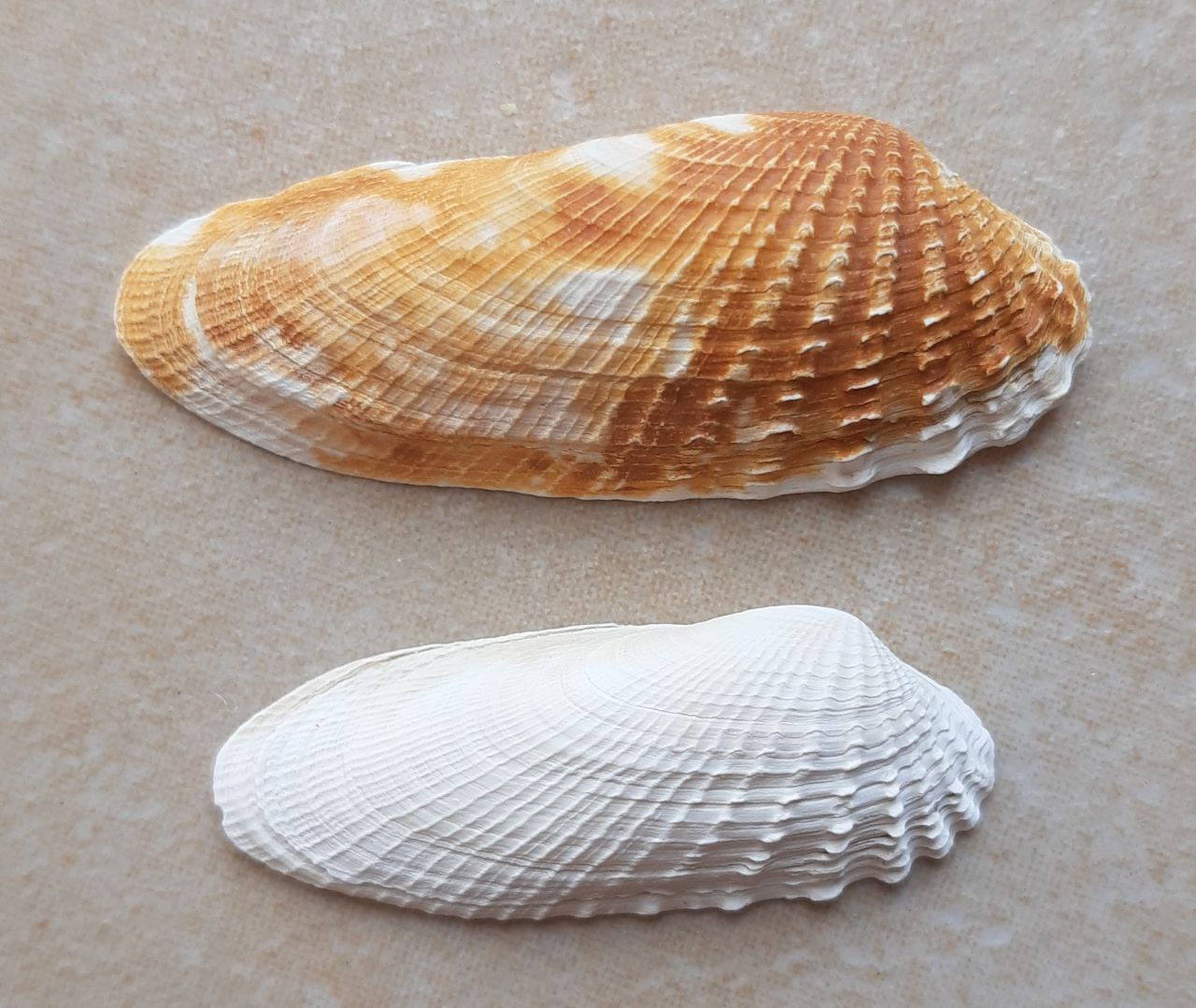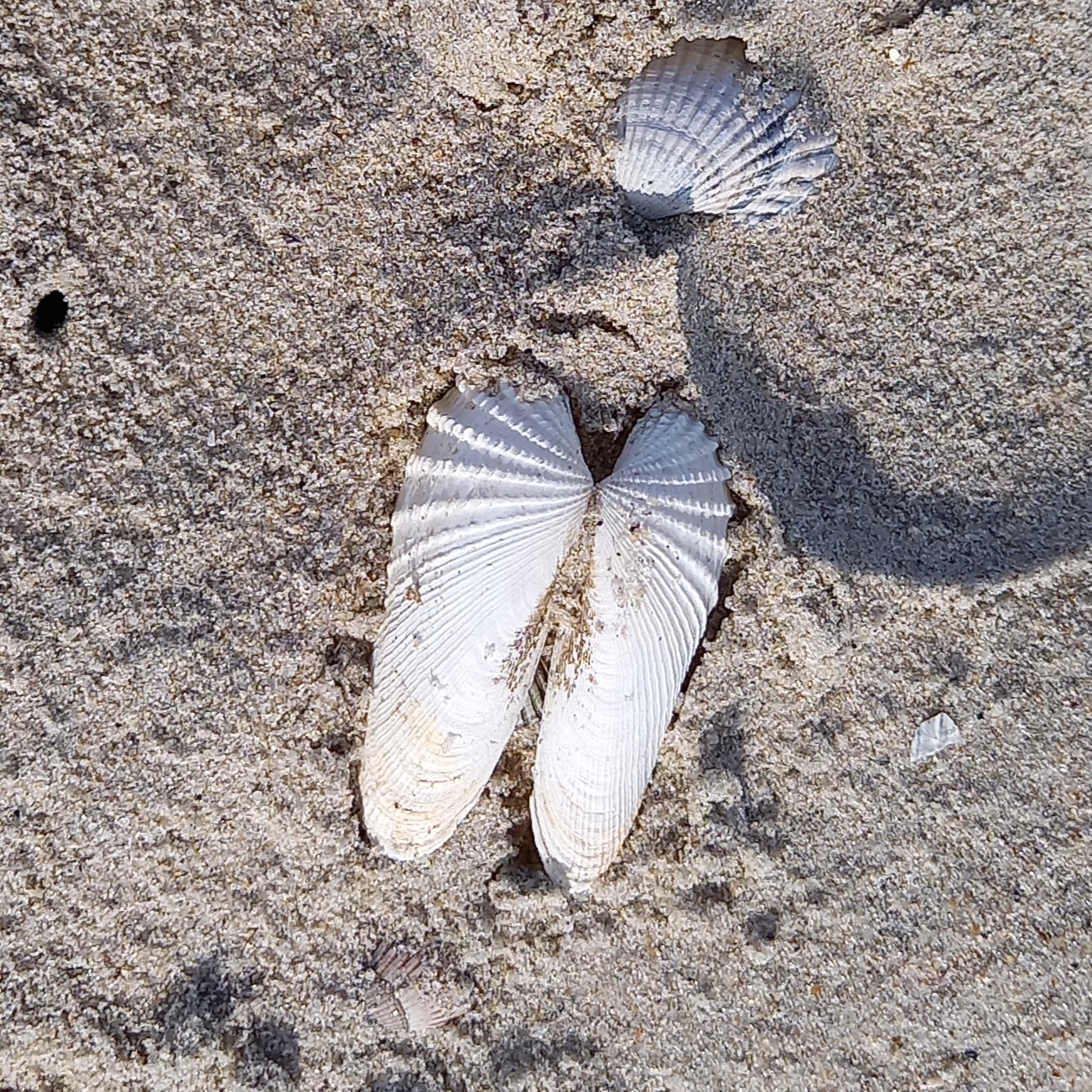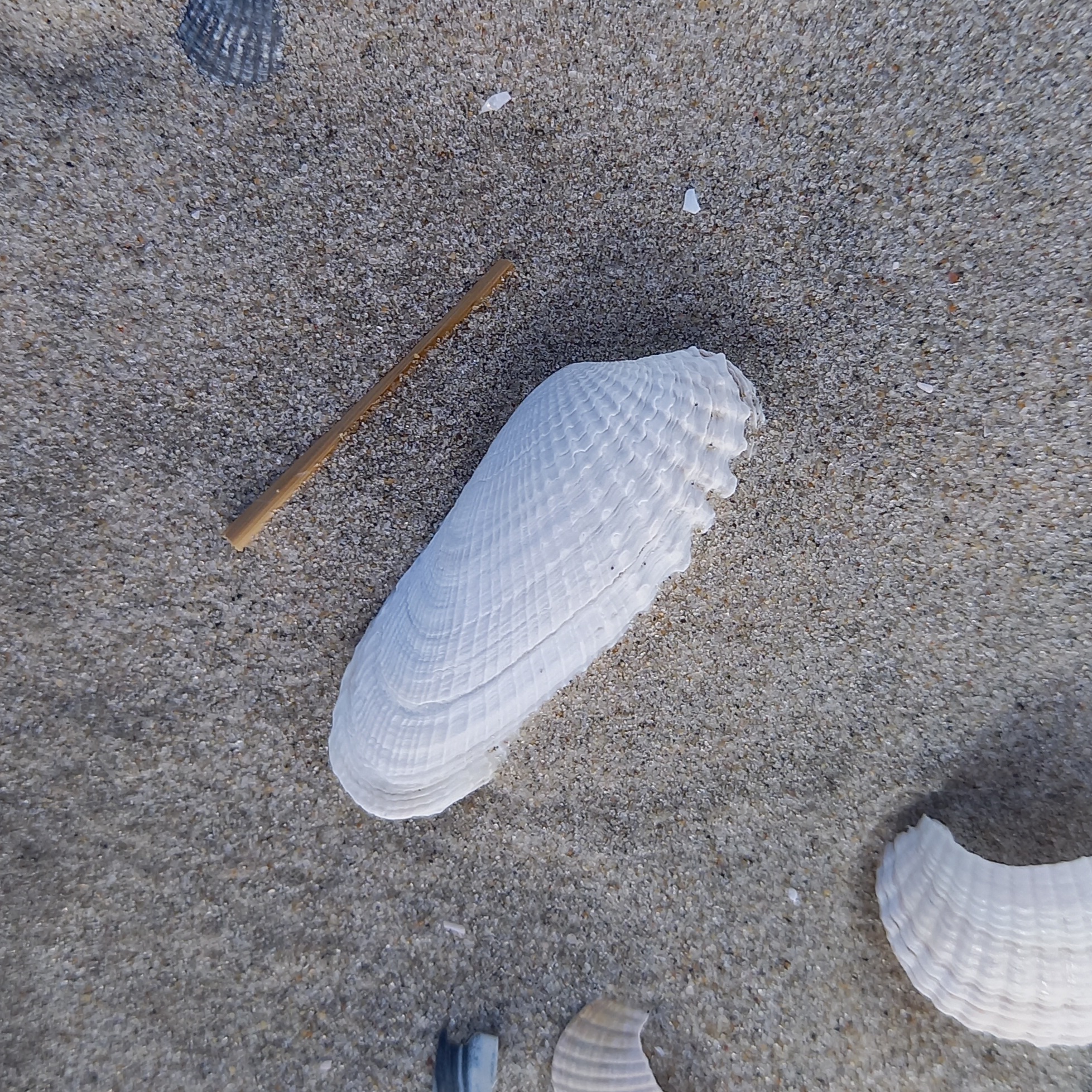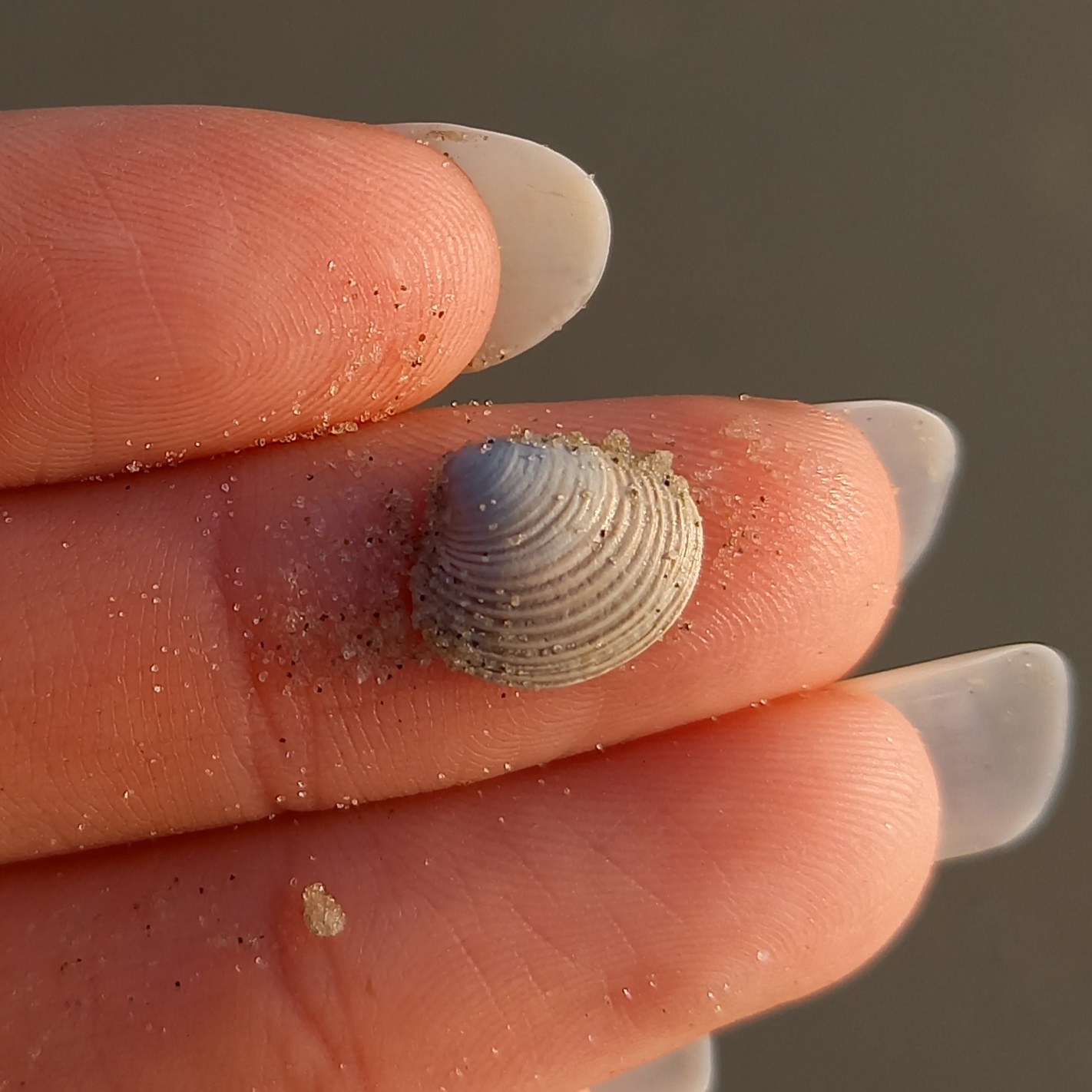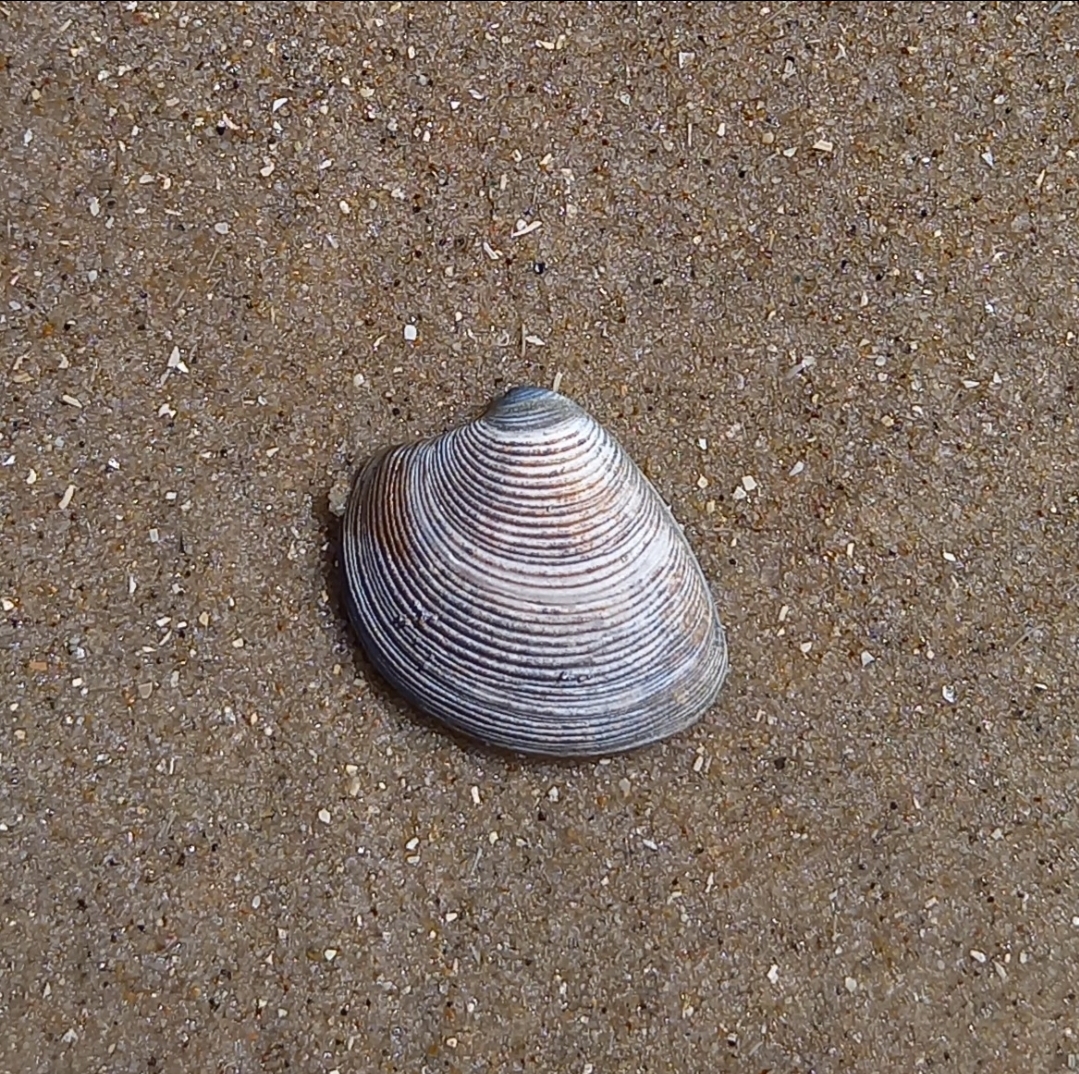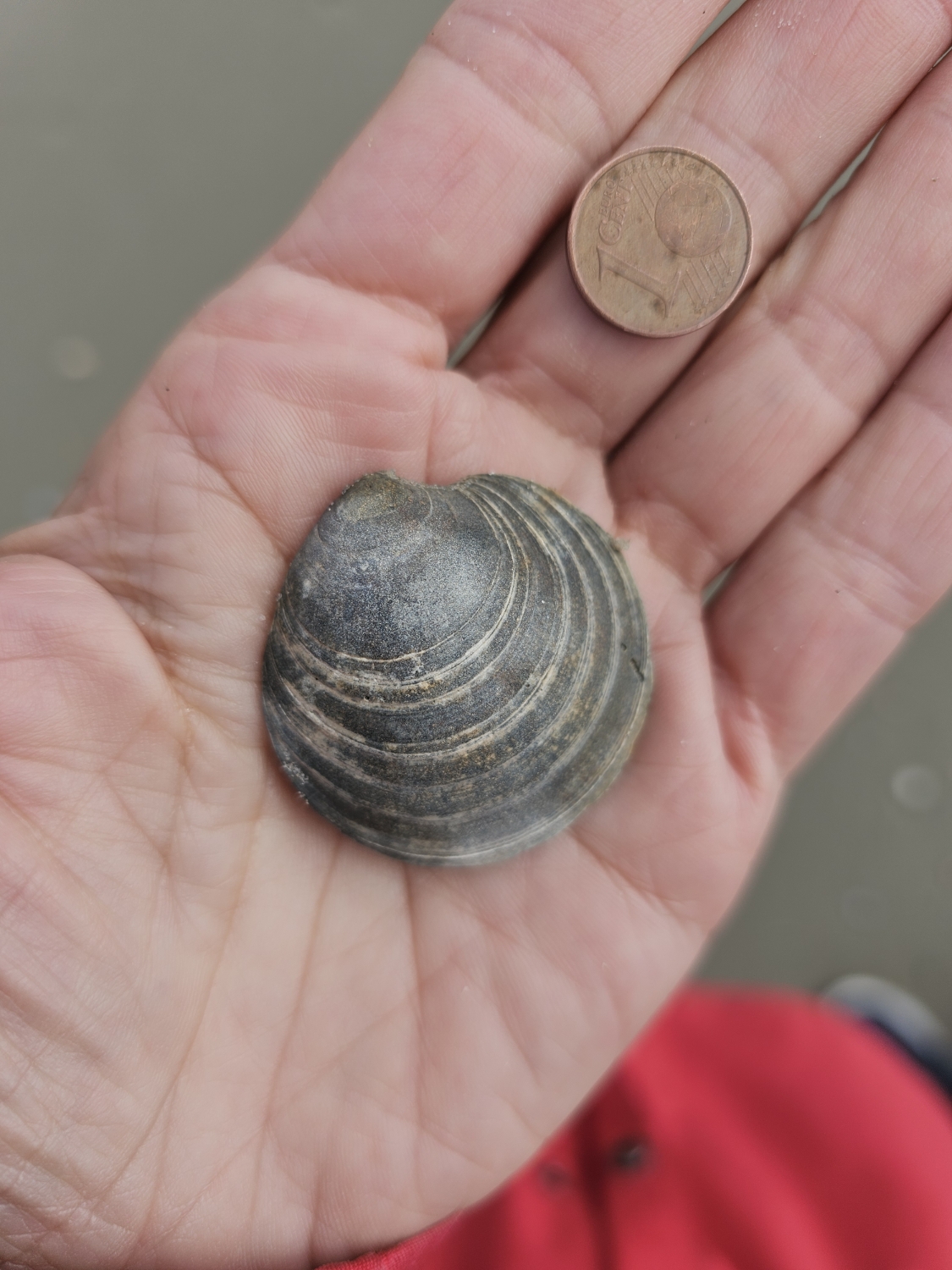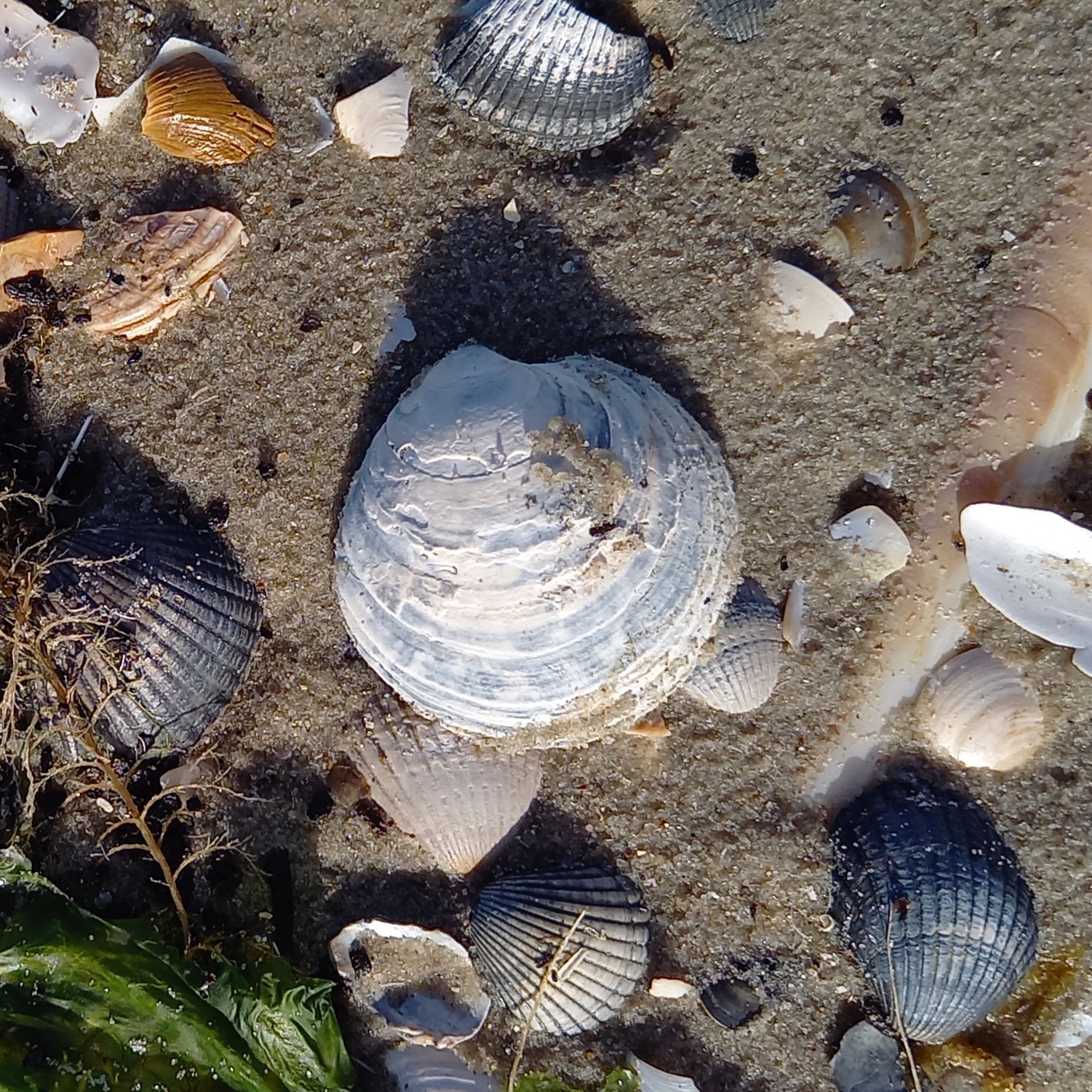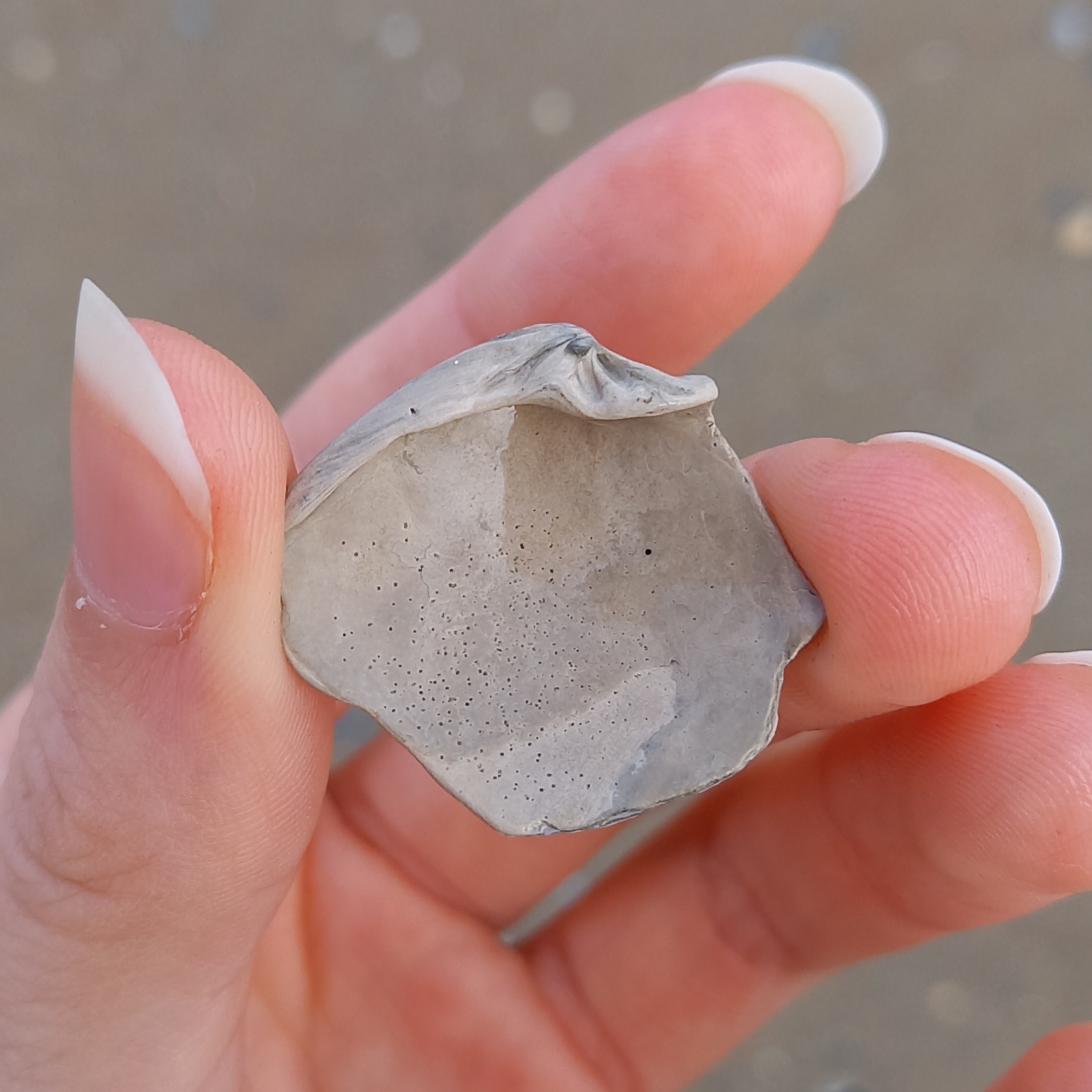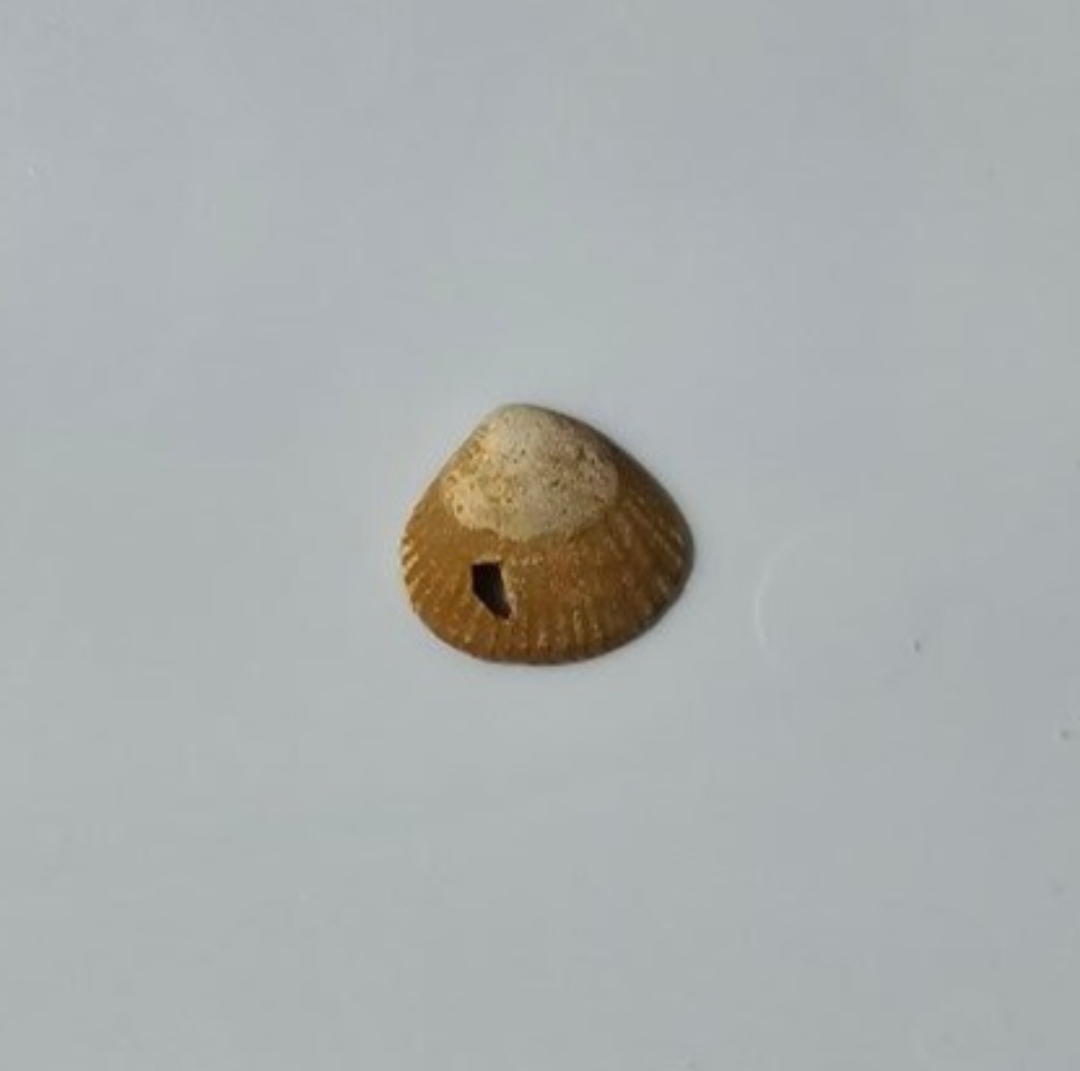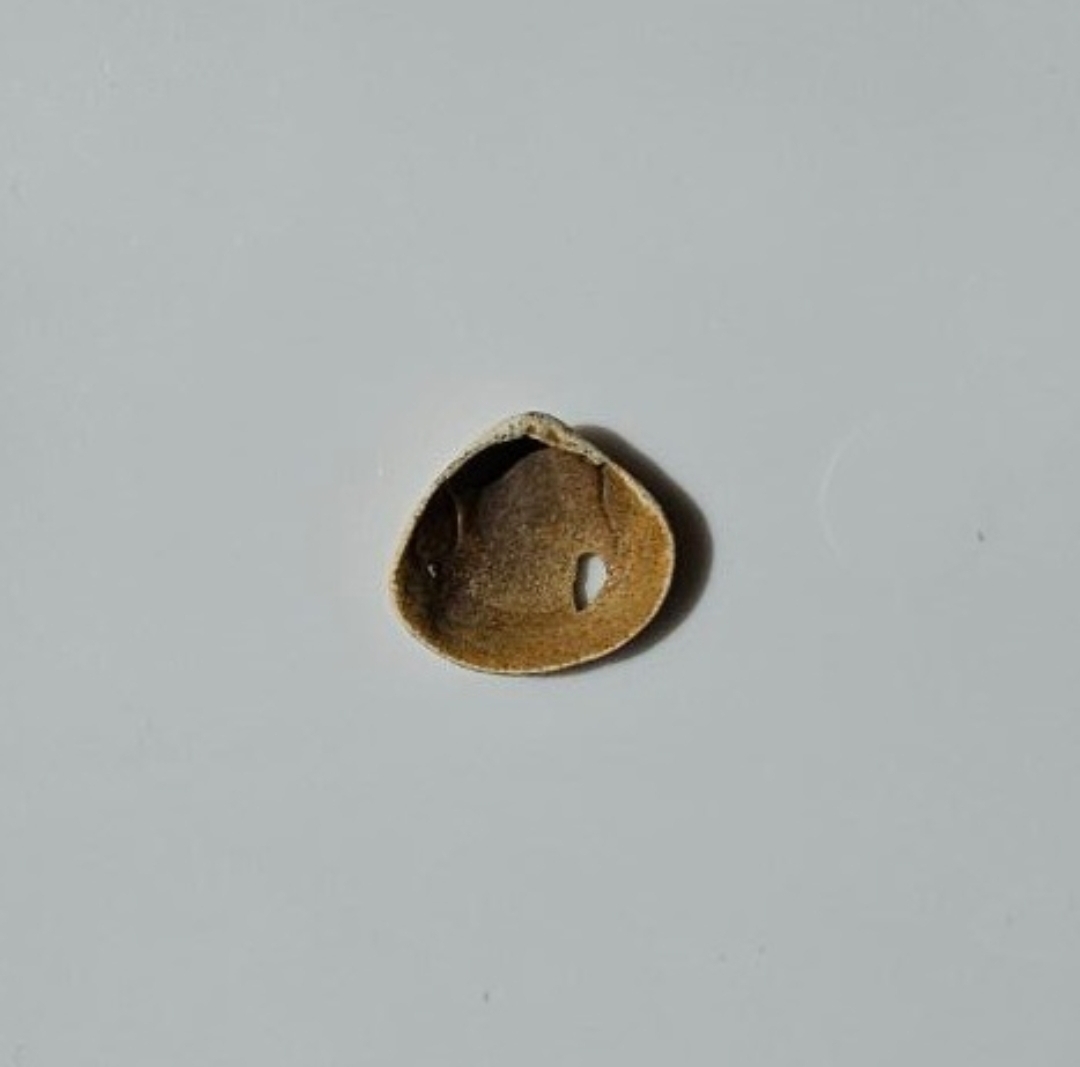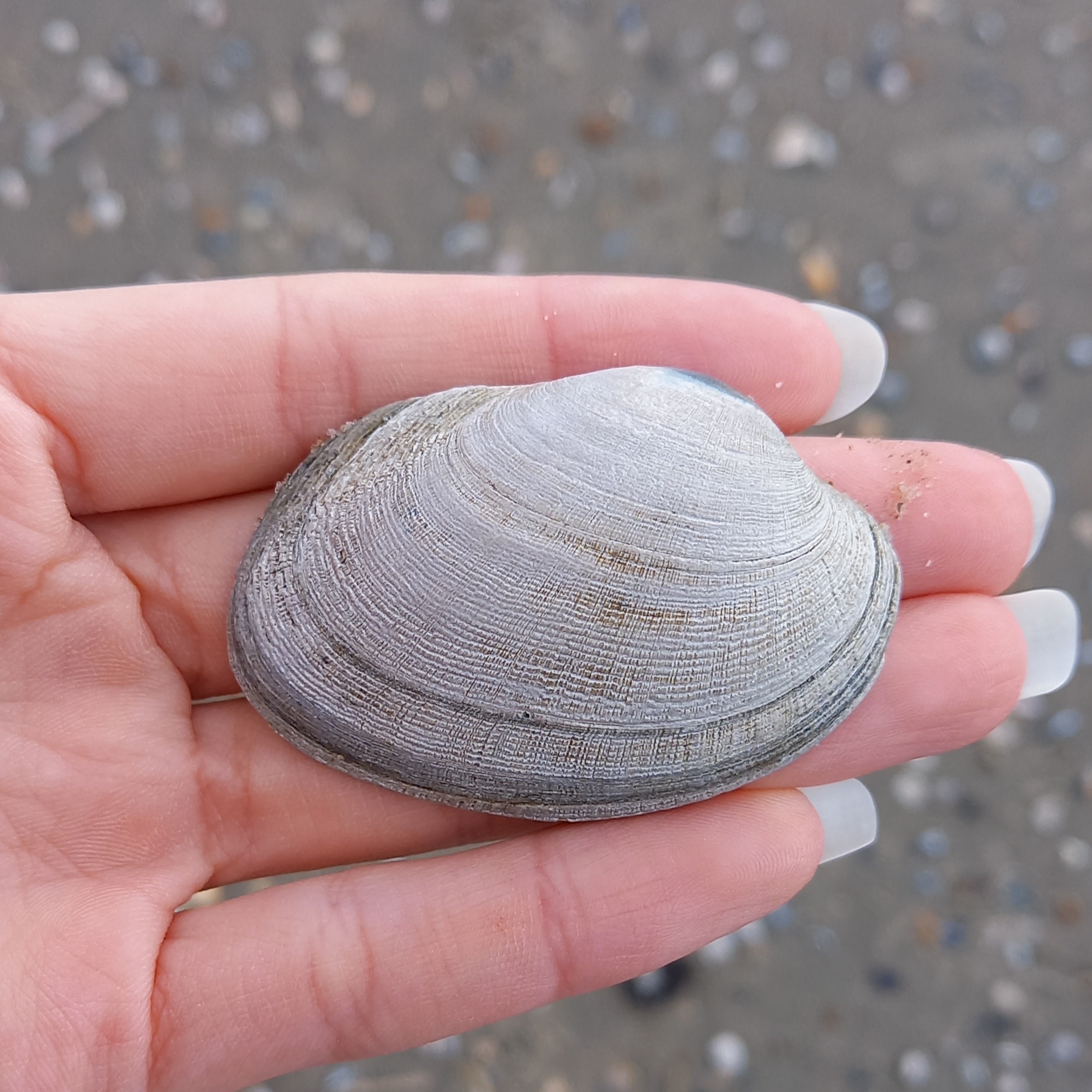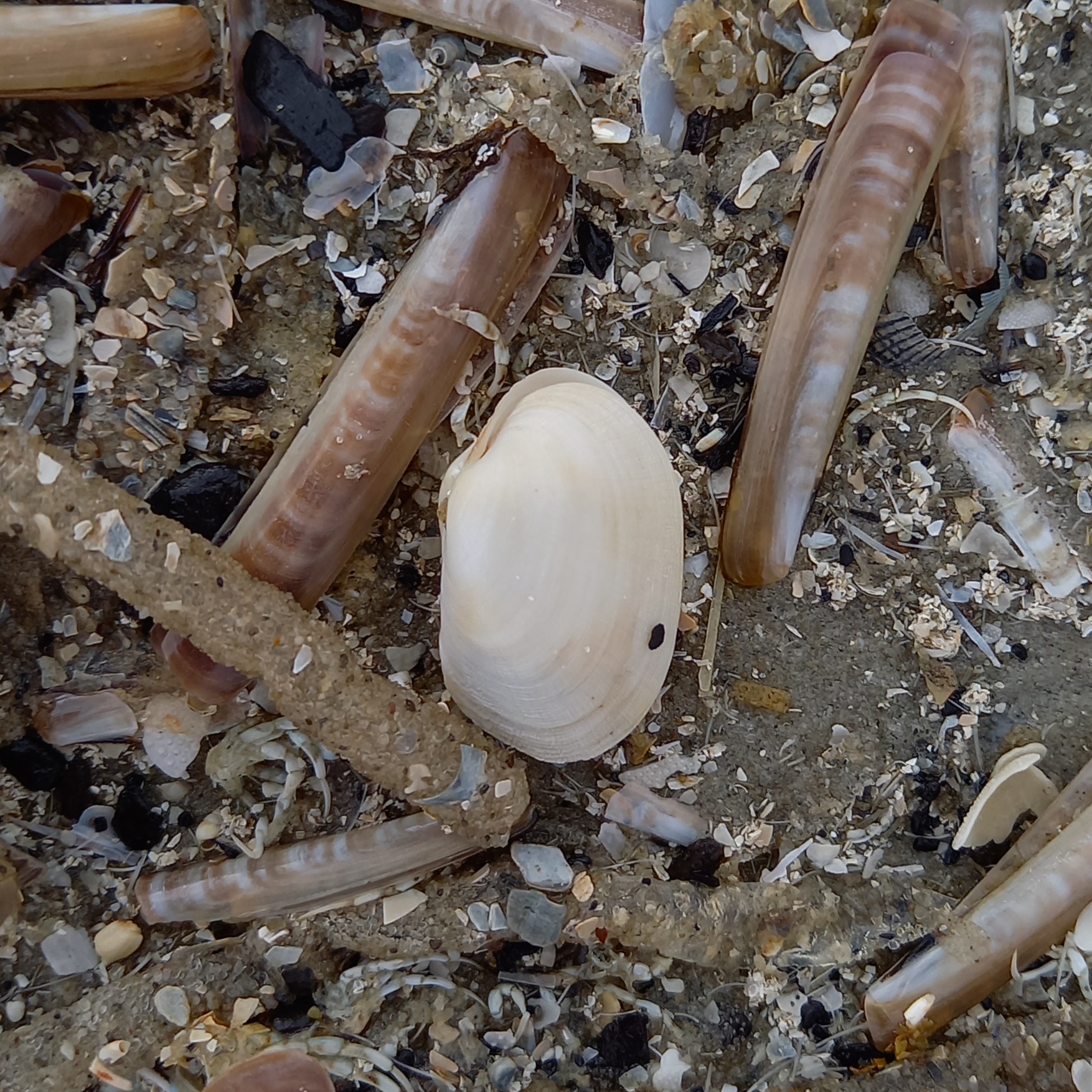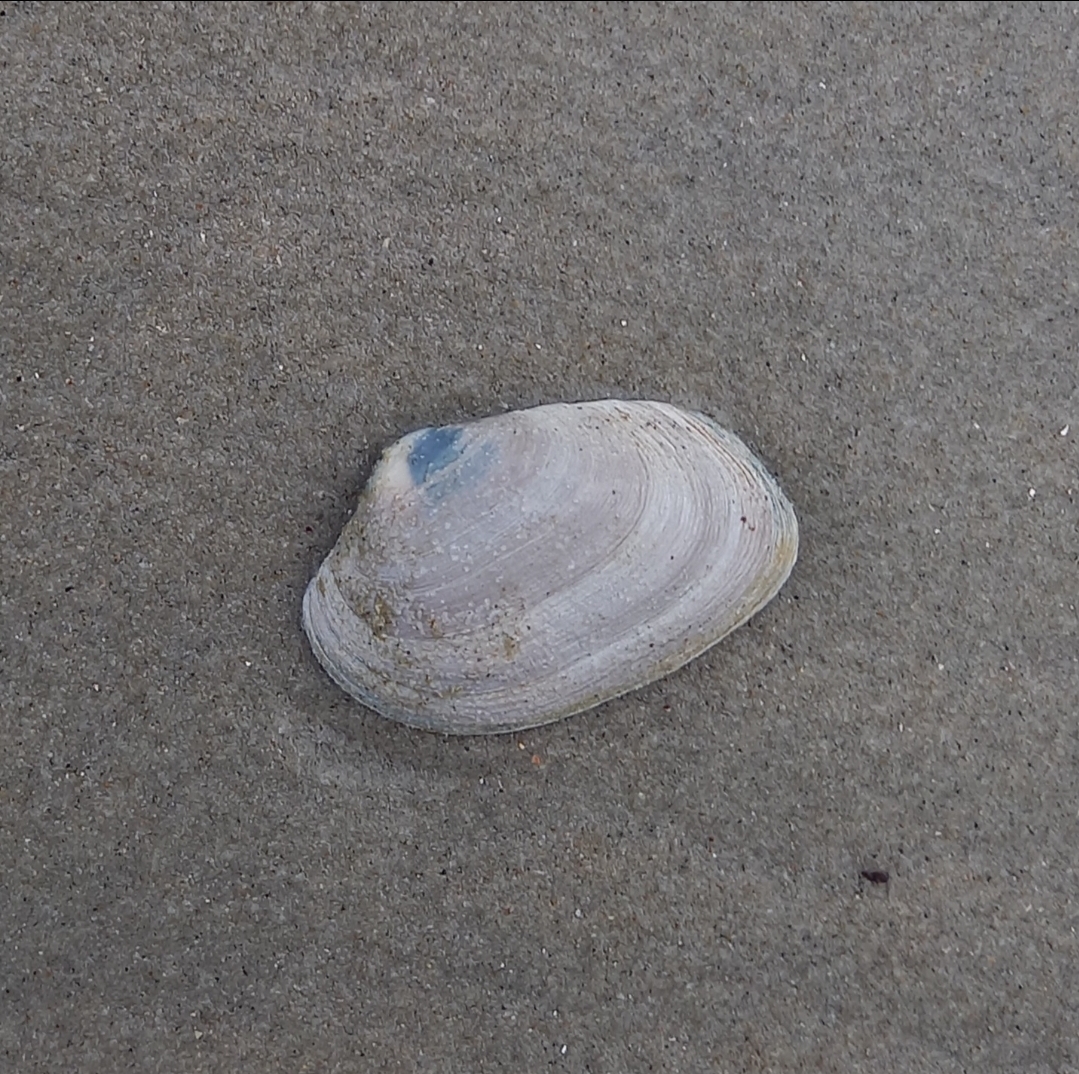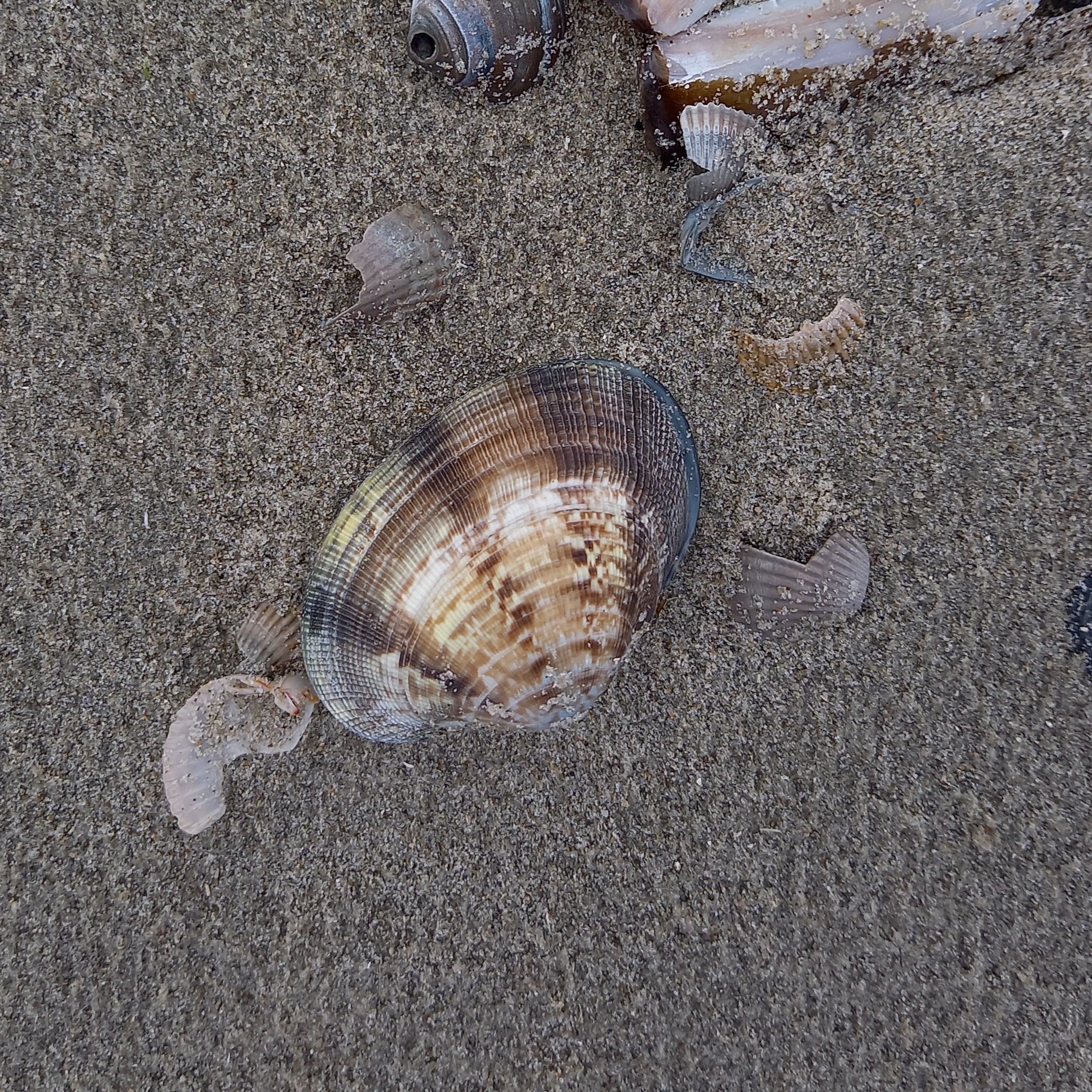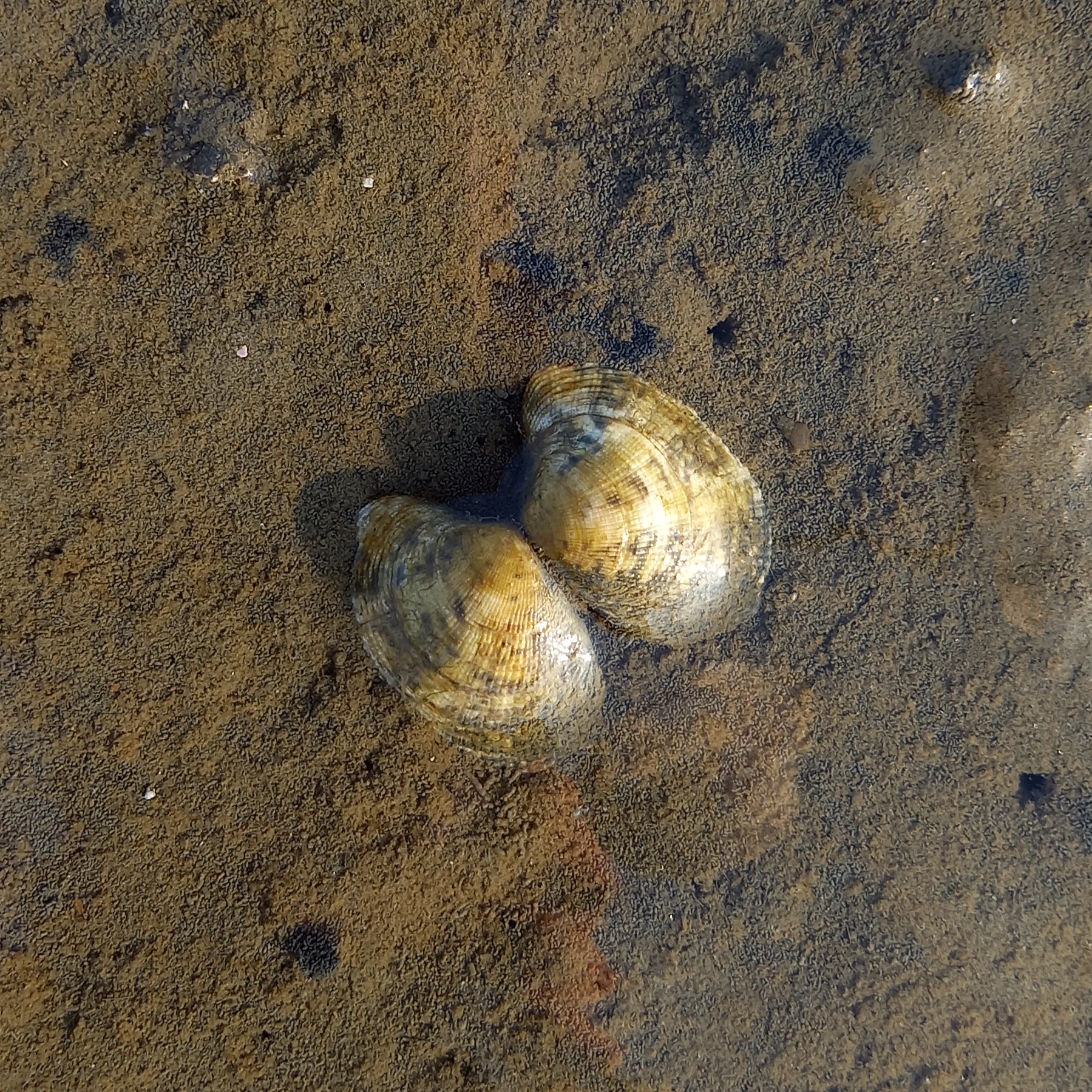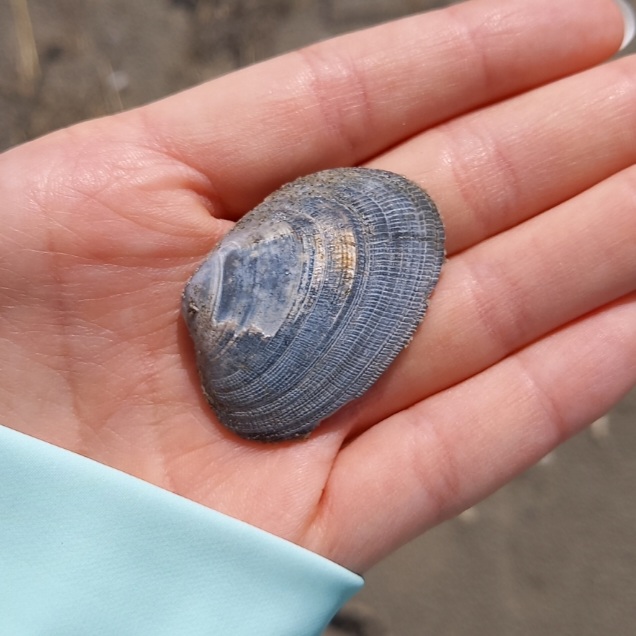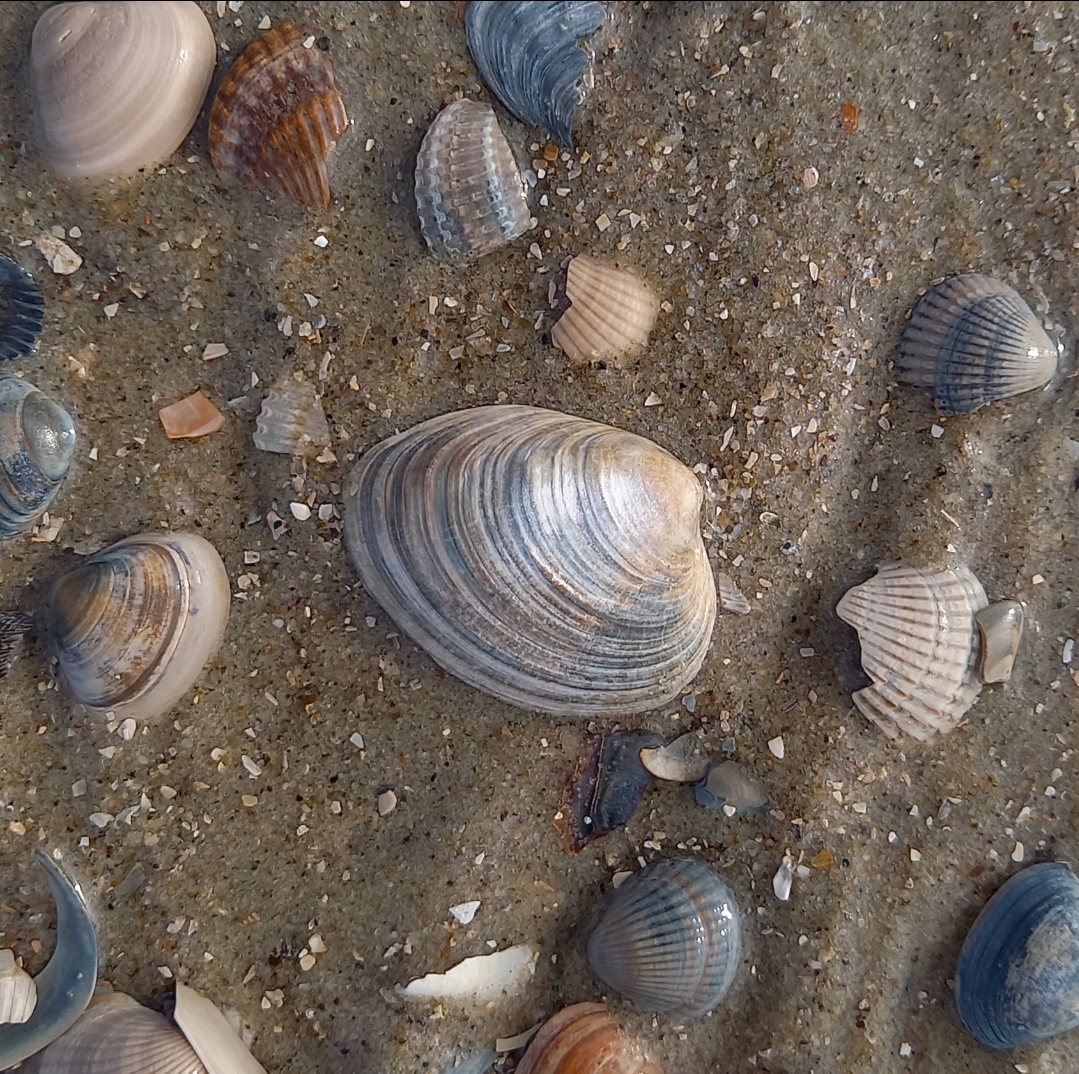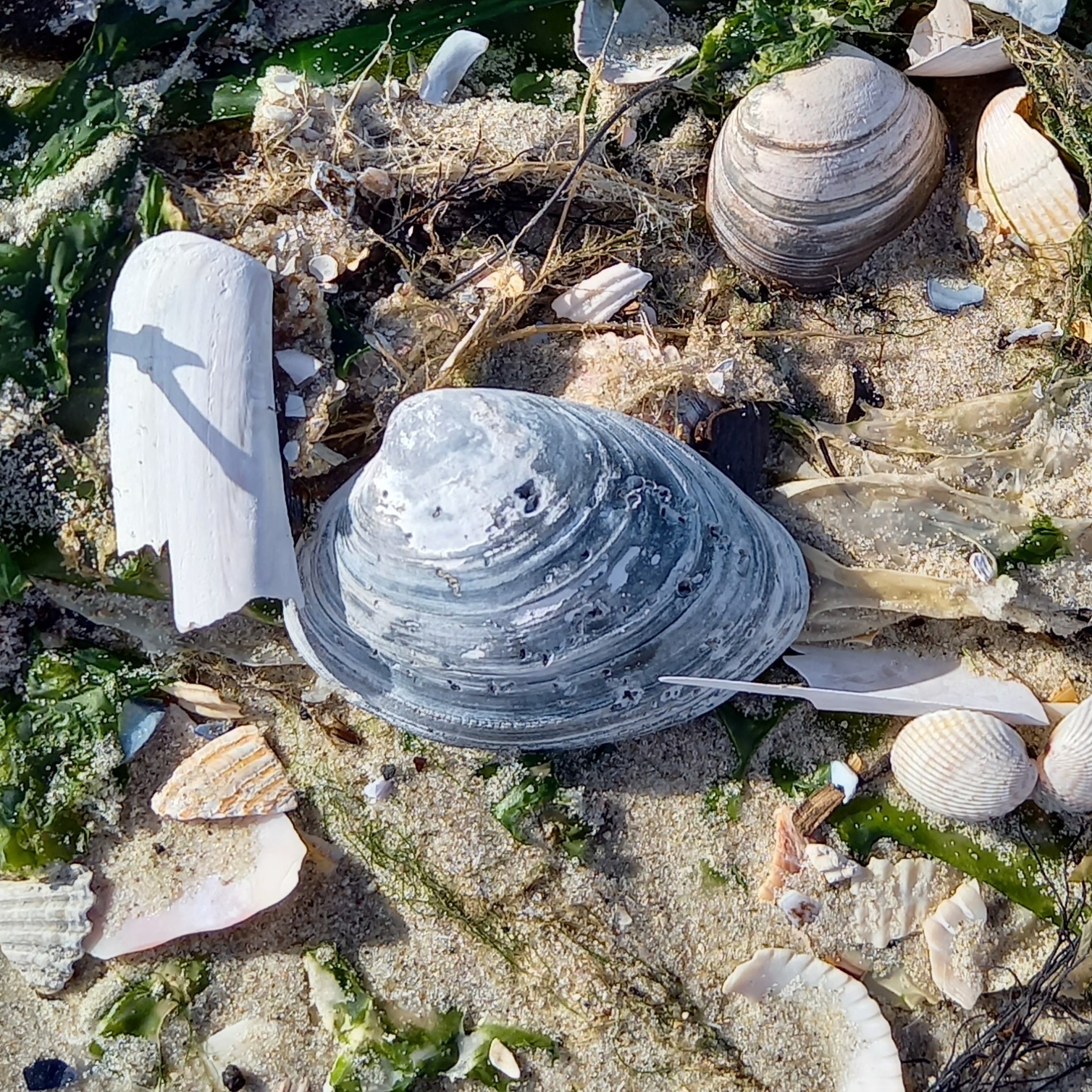Hey there!
Welcome to my growing list of the marine bivalves of Juist!
This website is almost entirely in german, but this page right here summarizes at least the actual ID guide in english. The information presented hereafter is either my own experience or others' observations I've been able to confirm.
I'm not sure yet if I will ever get around to translating the more lengthy articles, but for now you'll have to make do with this page. All photos are from my family's collection or recent Beachexplorer reports.
For bivalve anatomy and the terms concerning it, please see this lovely website.
Autobranchia > Pteriomorpha > Pectinoidea
Pectinoidea
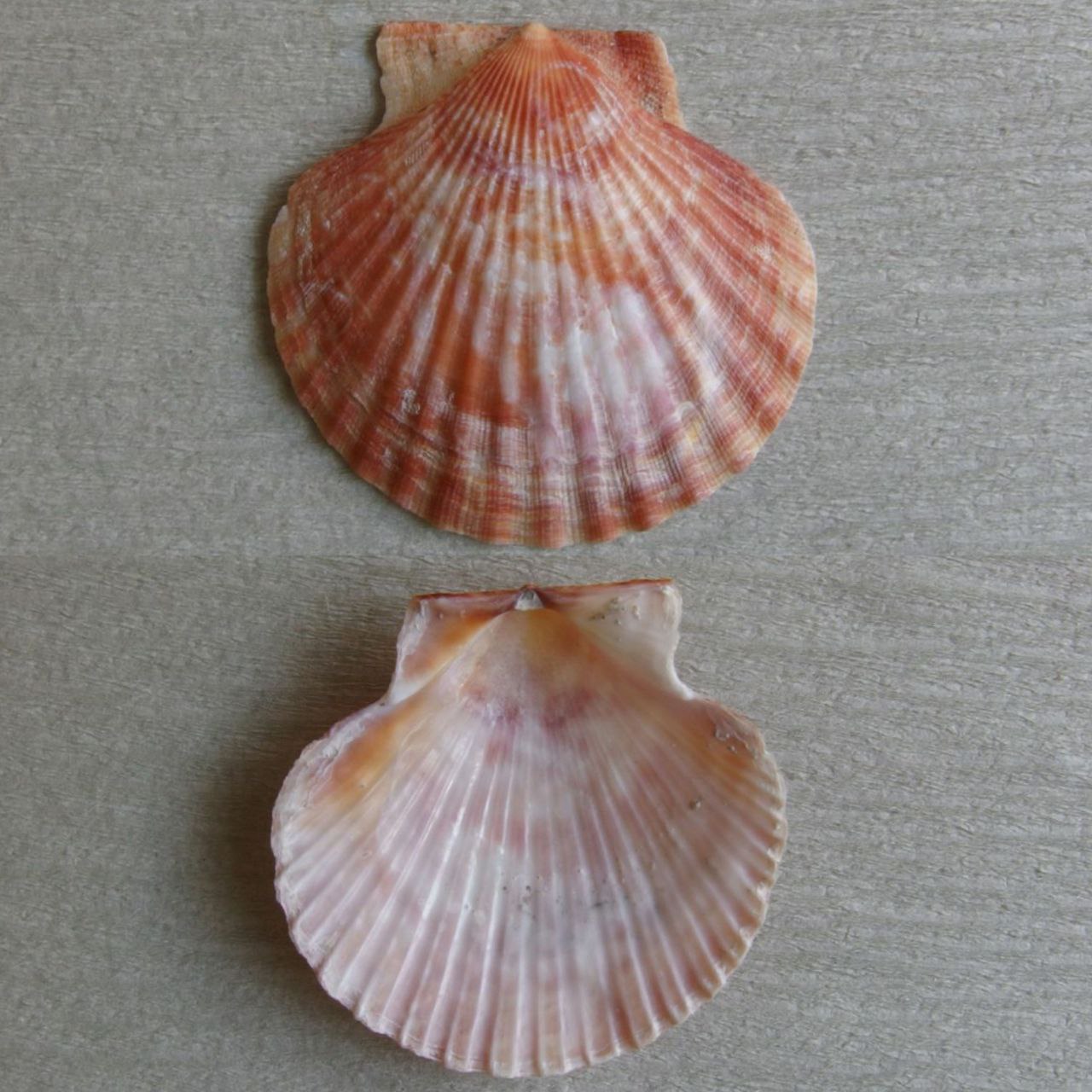
Aequipecten opercularis | queen scallop
Up to 9cm.
About 20 radiating ribs; relatively smooth especially compared to Mimachlamys varia. Overall round, the anterior auricle larger than the posterior. Only the posterior adductor muscle scar is present.
The outer surface patterned, yellow, orange, brown or pink. The inside ranging from white to muddy-orange. Juist's Küstenmuseum displayed multiple small bright orange shells; according to the plaque these were juveniles collected from flotsam.
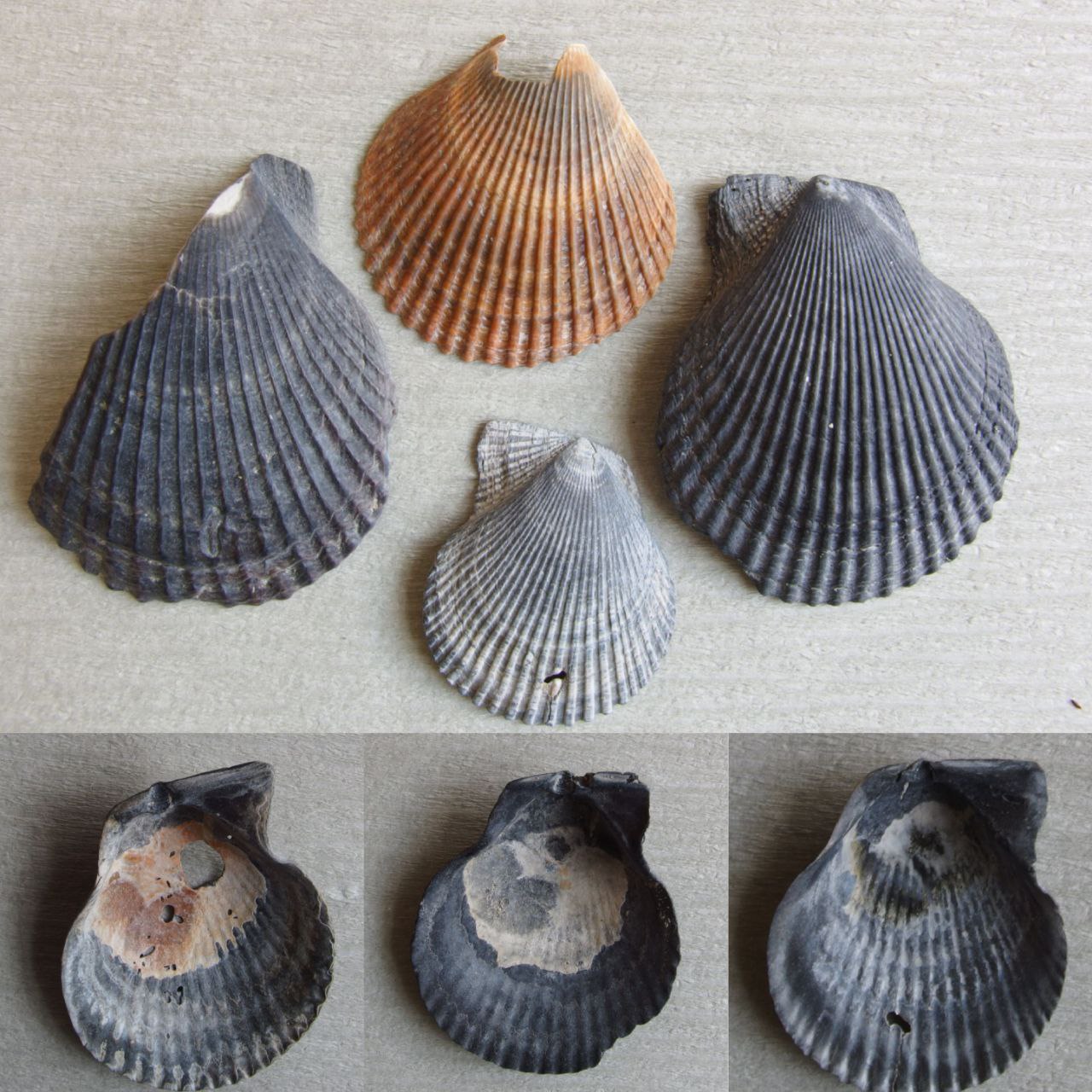
Mimachlamys varia | variegated scallop
Up to 7cm.
25 to 36 slim radial ribs with spines on their ends which are only rarely well preserved. The anterior auricle 2 to 3 times longer than the posterior and possessing a pronounced byssal notch in the right valve. Often the oldest part of the shell breaks off, leaving a characteristic crescent shaped fragment.
The outer surface patterned, white, pink, yellow, organge or even purple. Older shells are typically stained solid black or a spotty brown.
Autobranchia > Pteriomorpha > Ostreoidea
Ostreoidea
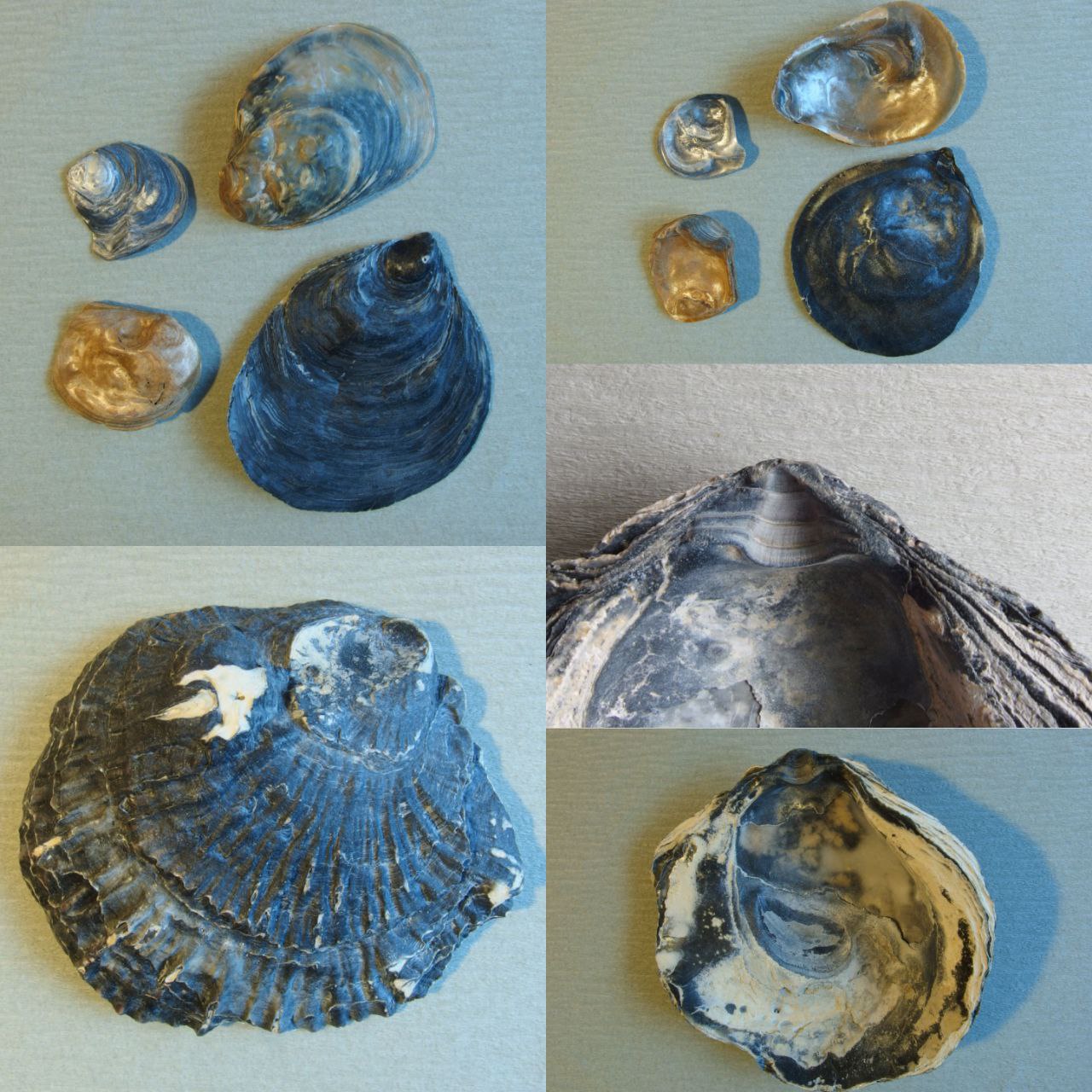
Ostrea edulis | european flat oyster
Up to ~7cm.
Left valve convex and affixed to its substrate, the right flat, acting like a lid to it. The latter is typically found. The growth patterns are often evident in chalky layers, especially looking at the hinge. Both valves with one characteristic crescent shaped adductor muscle scar.
White-ish ranging to brown or blue-tinged, the inside mother of pearl. Often worn away in older specimens. Today only fossil or very old shells are found due to the oysters' near extinction; these are typically brittle jet black discs.
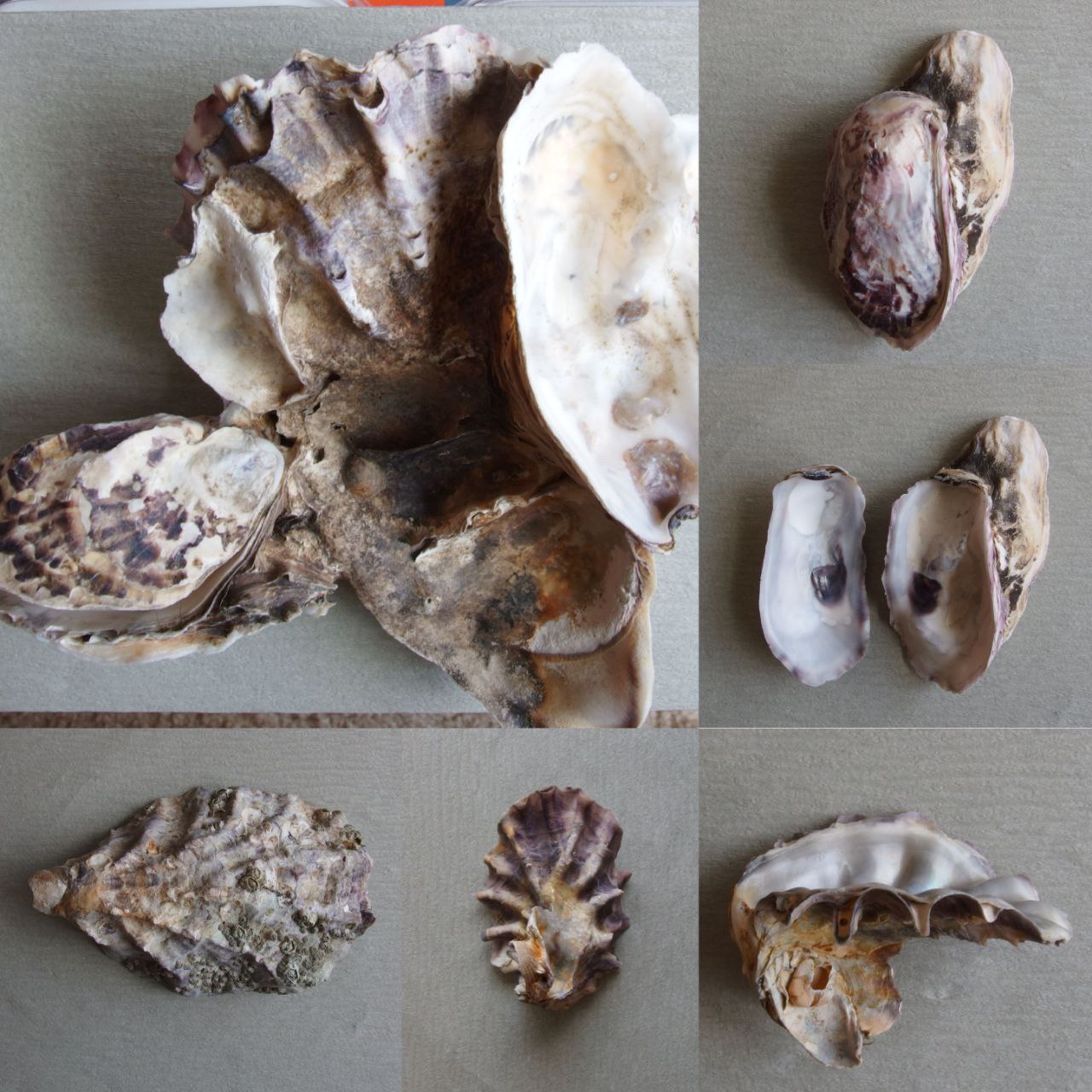
Magallana gigas | pacific oyster
Up to 15cm.
6 or 7 roughly defined ribs, very variable in shape. Like its native counterpart, the oyster's left valves attaches to the substrate and is covered by the right. They surpass Ostrea edulis in strength, and are most often washed ashore in whole clumps of multiple often articulated individuals.
The outer surface typically white-ish with reddish or violet markings. Insides smooth, ranging from white to yellow or purple. The colour of their one adductor muscle scar often differing from the rest. This species was introduced to be farmed in the native oyster's stead in the 20th century and has since been classified as invasive. Oyster farms are also a common vector for species introductions (for example: Crepidula fornicata, the slipper shell).
Autobranchia > Pteriomorpha > Mytiloidea
Mytiloidea
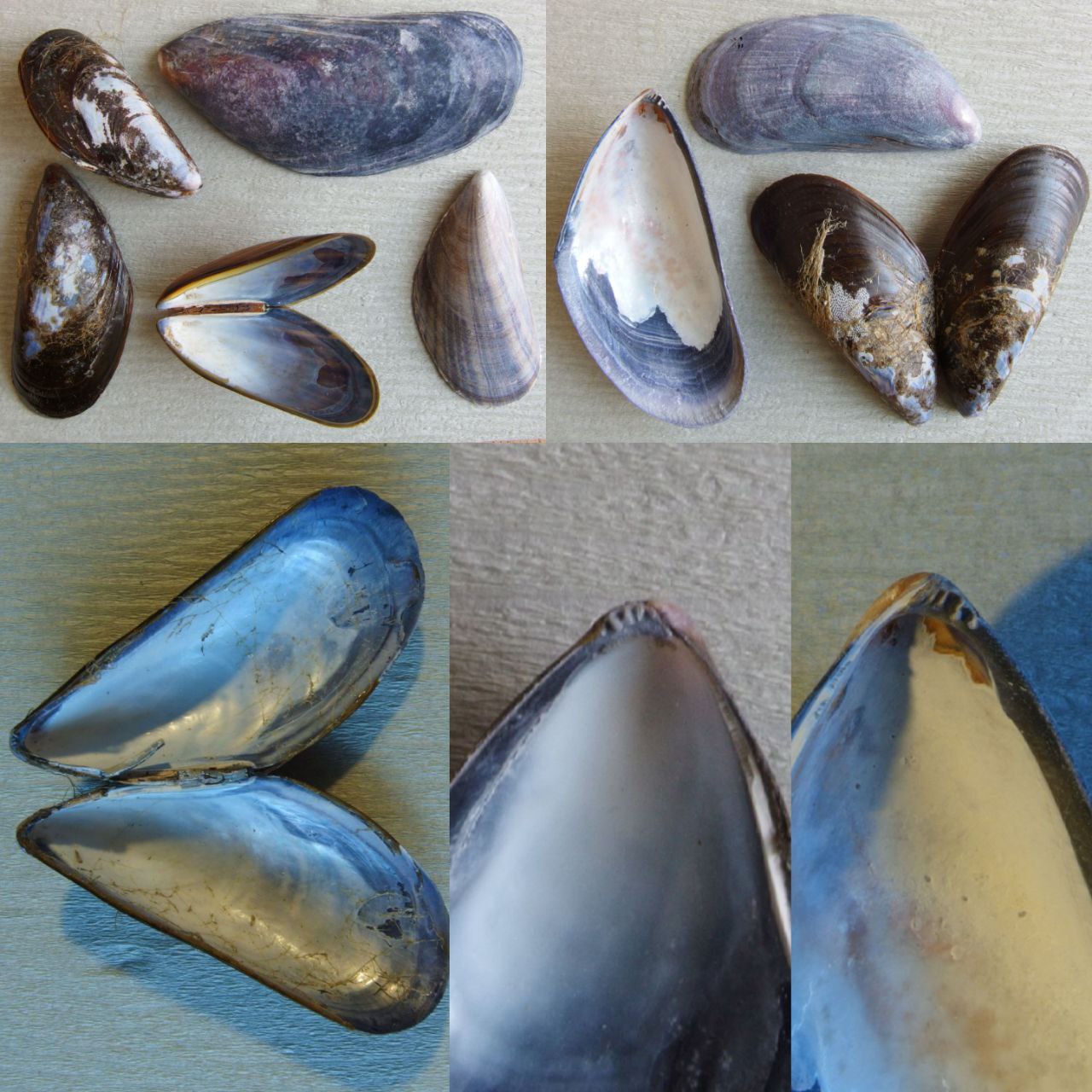
Mytilus edulis | blue mussel
Up to ~11cm. Smaller when subject to strong current.
Roughly tear drop shaped with faint concentric growth lines. The hinge on the very top lacks real teeth but has 3 to 12 little bumps. Unlike Mytilus galloprovincialis' typical straight edges, one edge is more or less angled. Atypical specimens would require genetic testing to tell apart.
Blue, purple or black with a brown periostracum. The inside mother of pearl and often the last remnant of an old shell which can be retrieved. The commonly eaten mussel is part of a species complex which spans the world's oceans and technically capable of producing pearls.
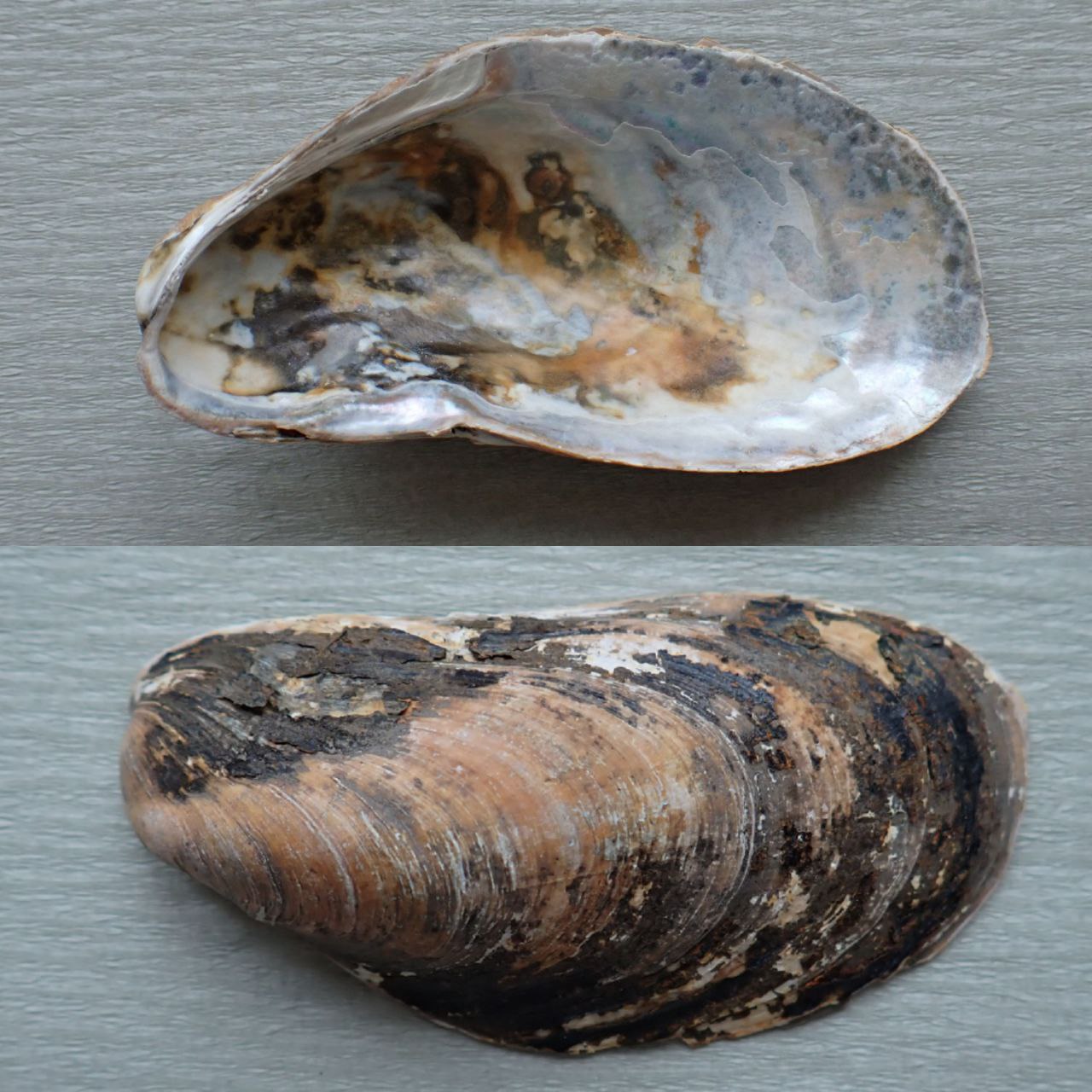
Modiolus modiolus | horse mussel
Up to 22cm, on average around 7cm.
Very similar to M. edulis in shape except for the prominent umbo which sits beside the beak instead of directly over it.
Outside dark blue or violet, sometimes brown. Periostracum ranging from brown to yellow-ish, inside mother of pearl. We own exactly one shell, as sadly the species prefers deep waters cooler than the southern North Sea. The assertion of Juist's Küstenmuseum that they are often found attached to clumps of whelk eggs seems to have originated with Fritz Hafner's 1939 work Nordseemuscheln.
Heteroconchia > Imparidentia > Adapedonta > Solenoidea
Solenoidea
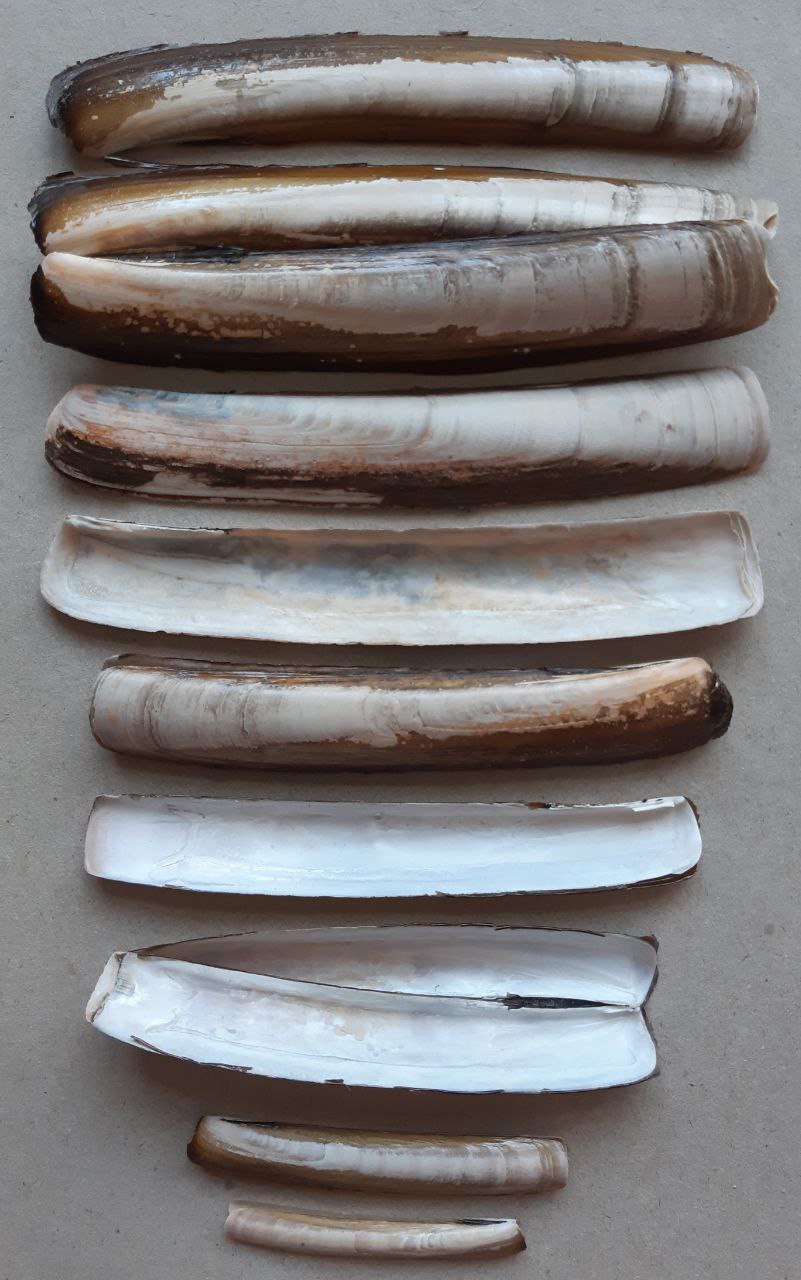
Ensis leei | bamboo clam
Up to ~16cm.
Long, more or less curved shells with two cardinal teeth per valve. Anterior end more rounded than the posterior, a trait not present in native Ensis. The introduced species' pallial sinus is much less rounded than theirs, almost concave at times.
The outer surface light with pink bands. Periostracum brittle and green-ish brown. Inside white or yellow-ish. Can often be found in great numbers after mass death events. Since its introduction from the East Coast of the US in the 20th century this species' abundance has made it practically impossible to find their native cousins among the heaps.
Heteroconchia > Imparidentia > Lucinoidea
Lucinoidea
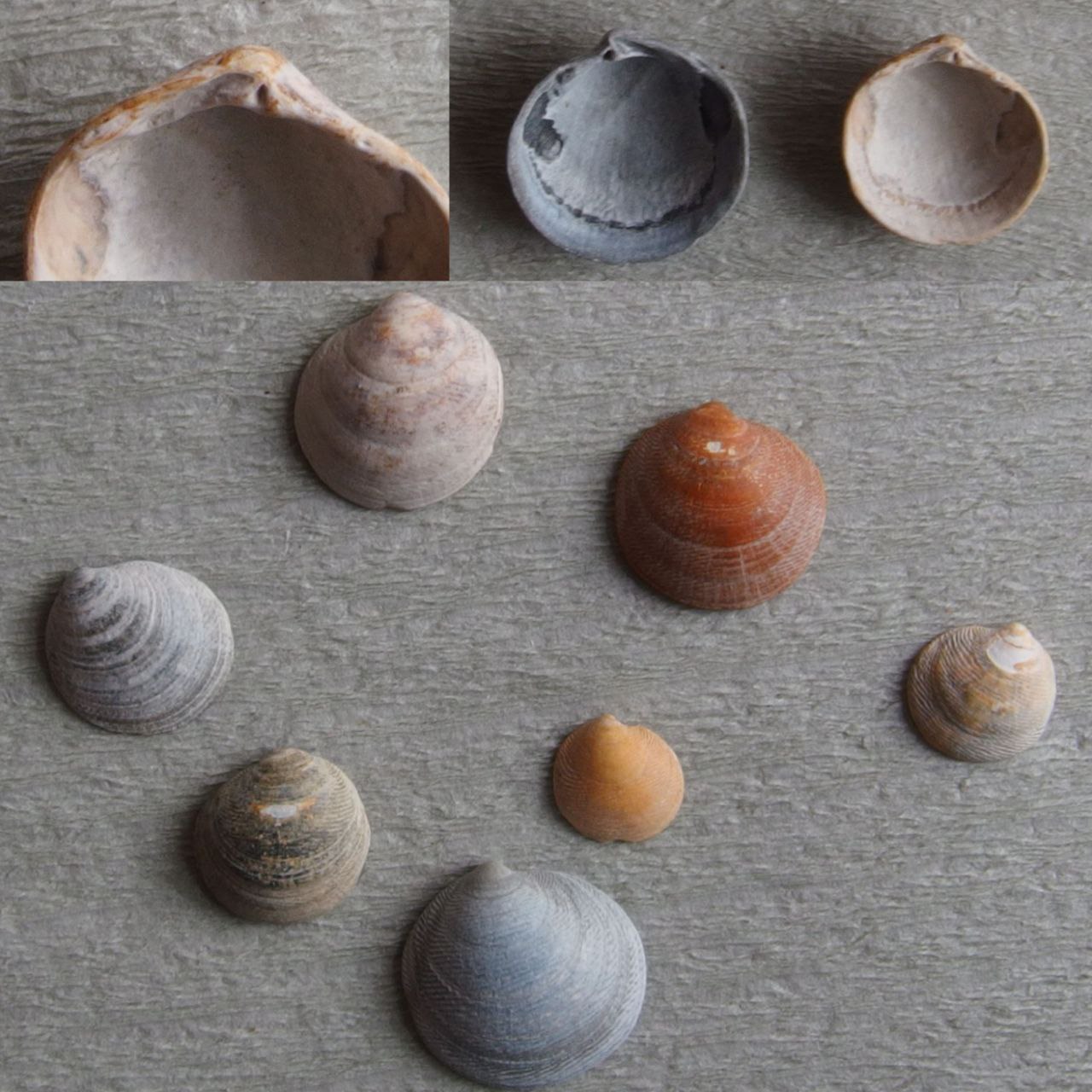
Lucinella divaricata | divaricate lucine
Up to ~1cm.
Circular valves with an angled umbo, extremely convex. Slight concentric as well as more noticeable transverse striation. One cardinal tooth and 2 lateral teeth in the right valve, 2 cardinal teeth and 4 lateral teeth in the left. No pallial sinus.
Recent shells white or yellow-ish, otherwise all shades of black, brown, yellow, red or even blue. Only found as fossils in the North Sea, likely from the eemian interglacial. Historically confused for species in the Americas despite Linnaeus describing a shell from the Mediterranean.
Heteroconchia > Imparidentia > Galeommatoidea > Montacutinae
Montacutinae

Kurtiella bidentata | two-toothed montagu shell
Bis ~4mm.
Fragile elliptical shells, typically nigh translucent. The small hinge consisting of two eponymous lateral teeth per valve. No pallial sinus.
White, sometimes tinged brown, yellow or blue.

Tellimya ferruginosa | rusty montagu shell
Up to ~1cm.
Thin elliptical shells, longer than Kurtiella bidentata. One cardinal tooth in the right valve, one anterior lateral tooth in the left. No pallial sinus.
White or transparent.
Heteroconchia > Imparidentia > Cardiidae > Cardioidea
Cardioidea
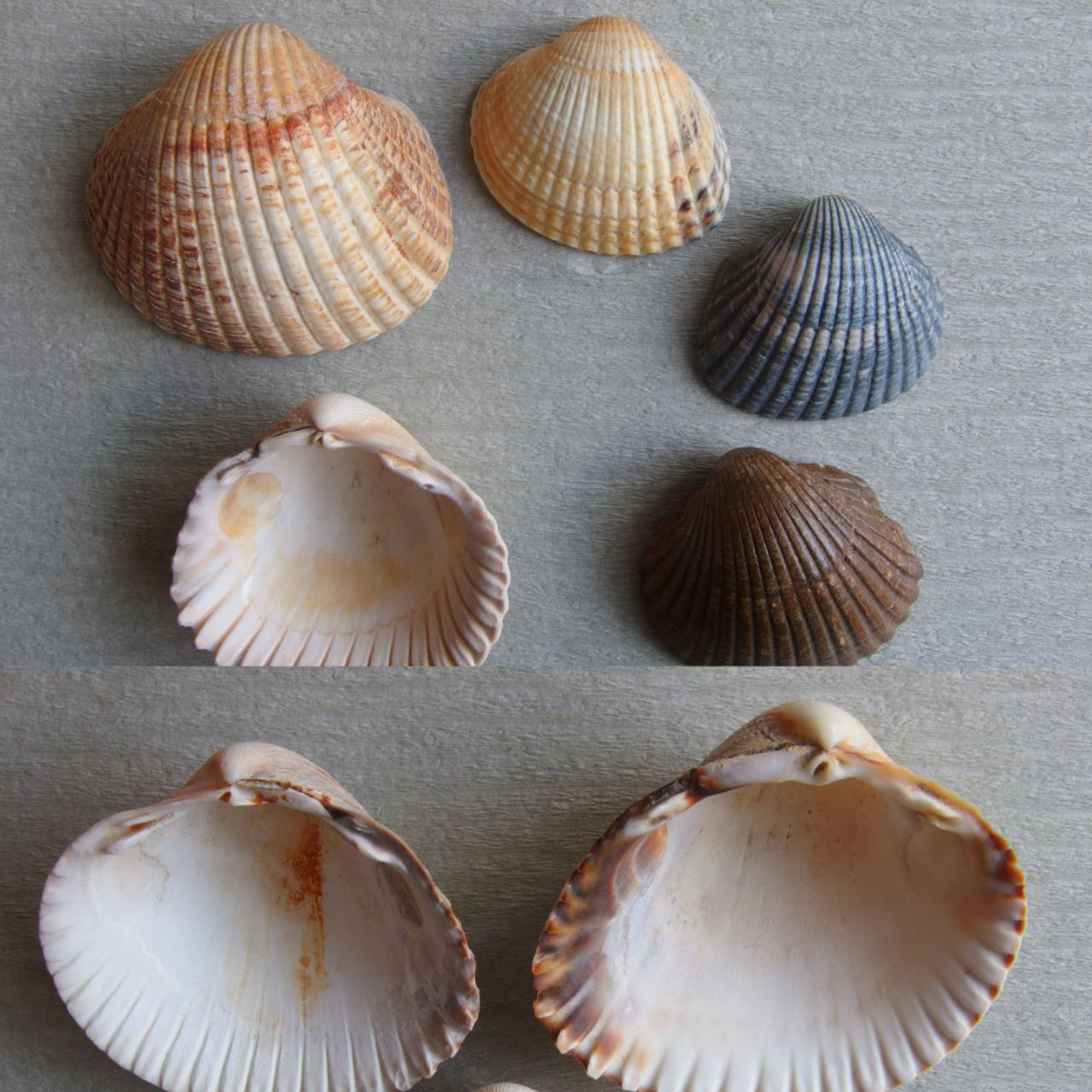
Cerastoderma edule | common cockle
Up to ~5cm.
22 to 28 strong ribs depending on local salinity. Very convex, more so closer to the umbo, which is often worn away first in older shells. No pallial sinus but the ribs are visible on the inside.
The outer surface ranging from off-white to brown, often tinted orange or even green-ish. Old specimens are often black or blue. The inside beige or white.
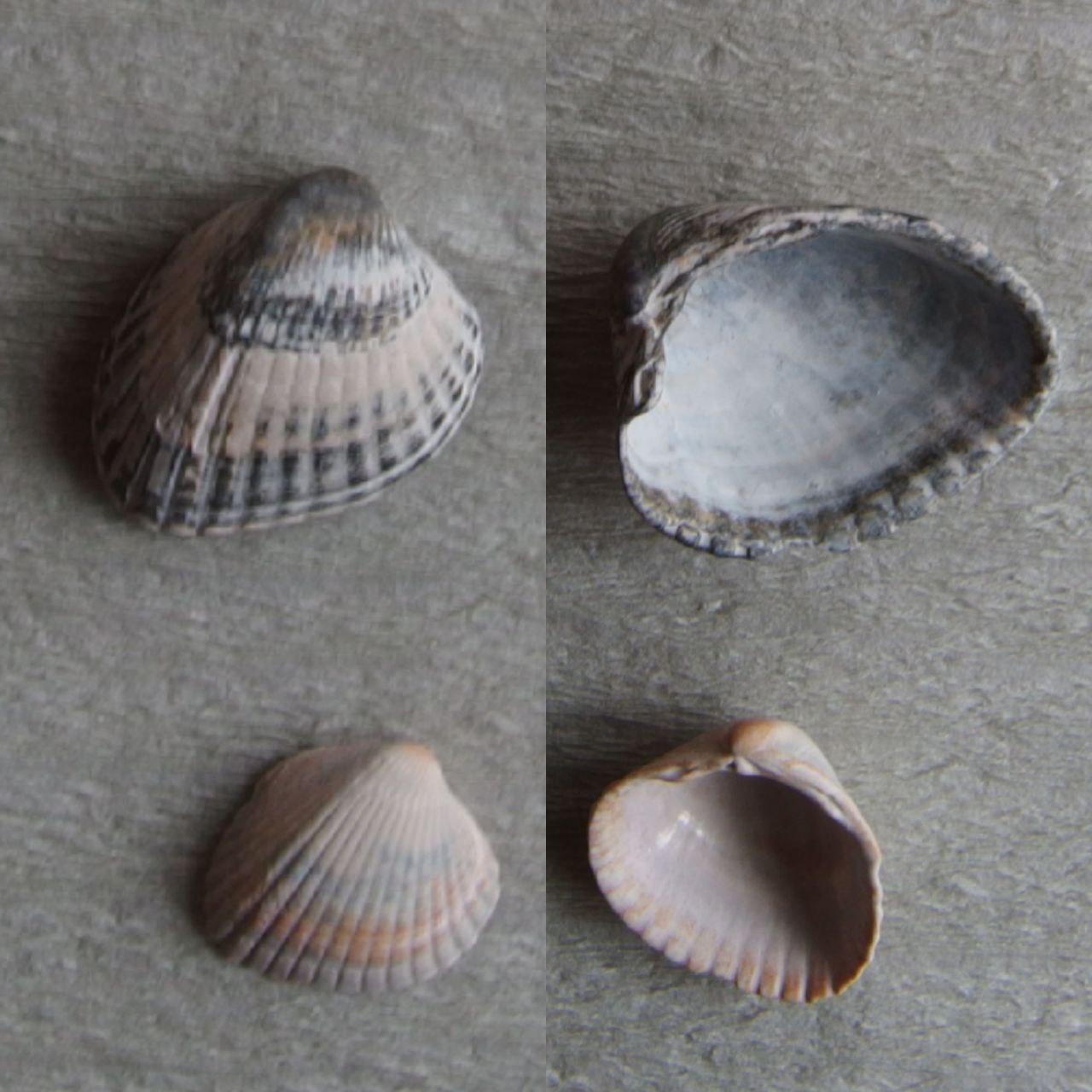
Parvicardium exiguum | little cockle
Up to 13mm.
Up to 22 flat, wide ribs. The outside of the shell marked by a crease running from the umbo to the lower posterior edge. Visibly more triangular than a regular cockle from the inside.
The outer surface yellow-ish, the inside white or tinted brown or green. Shells that reach Juist are usually either fossil or old enough to have gone blue or brown.
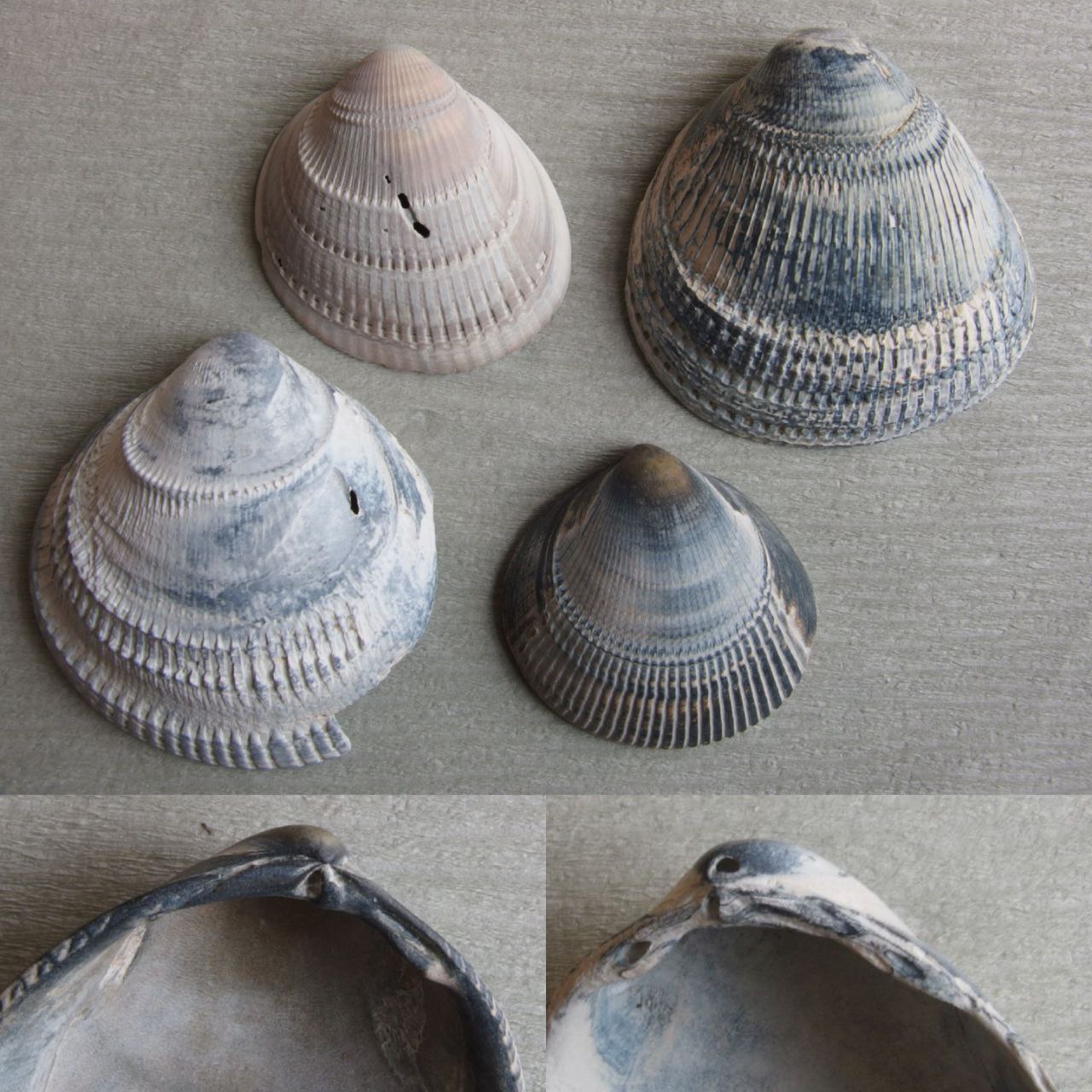
Laevicardium crassum | egg cockle
Up to 7cm.
Flat, oval shells possessing around 40 subtle ribs as well as prominent concentric growth lines.
On shells found on Juist the fragile brown periostracum is always worn away revealing the often chalky rings of more or less pronounced ribs along which the shells often break. Coloured anything from blue to black or brown.
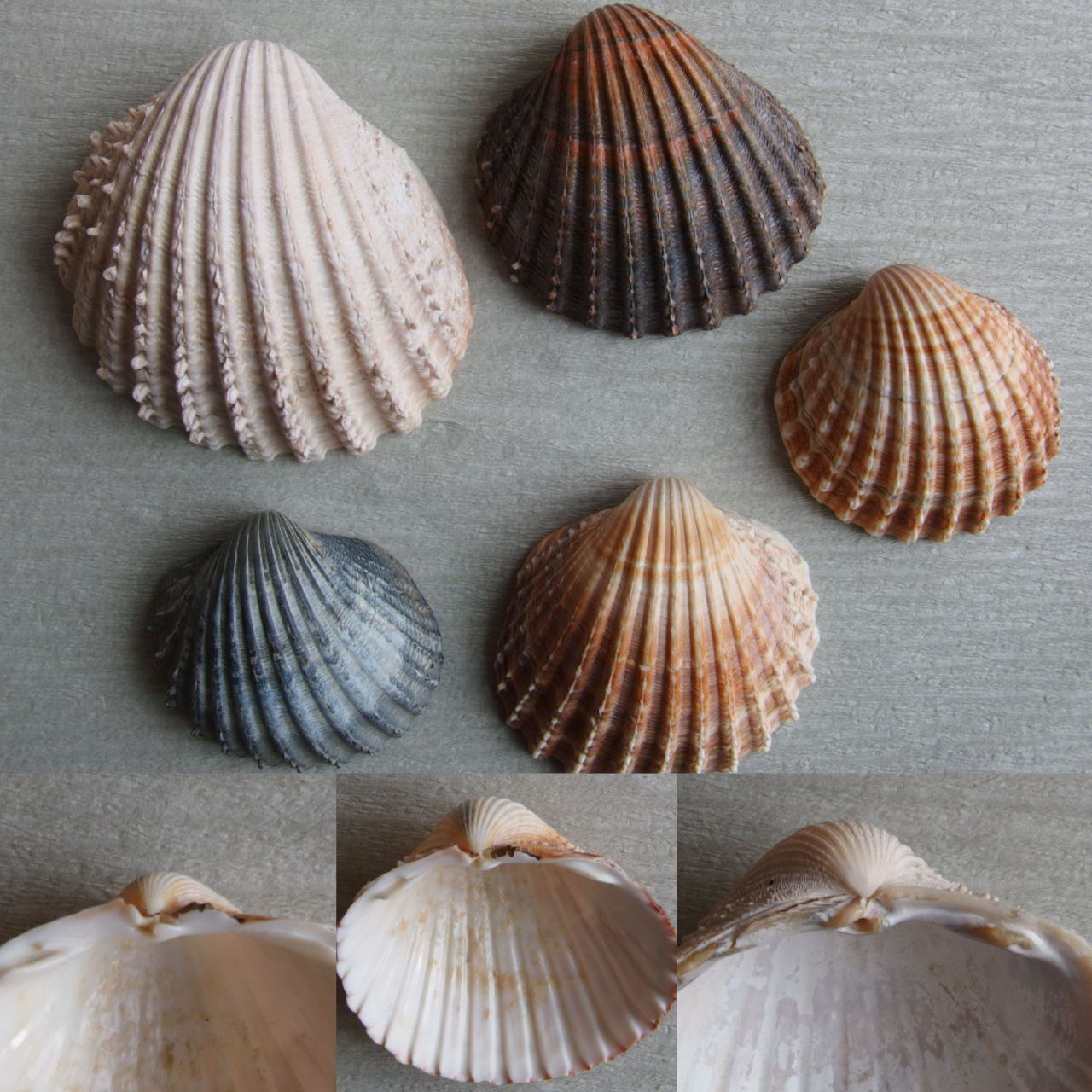
Acanthocardia echinata | prickly cockle
Up to 7.5cm.
18 to 23 ribs, each with a central ridge on which the eponymous spines sit. They are the most pronounced on the bottom edge and often worn away in older or fossil shells. Typically the gap between the ribs is wider than the ribs themselves.
Ranging from yellow-ish to bright orange, the inside lighter. Recent shells are rare, older ones typically dark blue or brown. The photo from our collection shows both fossil/sub-fossil shells collected on Juist and those of more recently dead cockles collected in the UK.
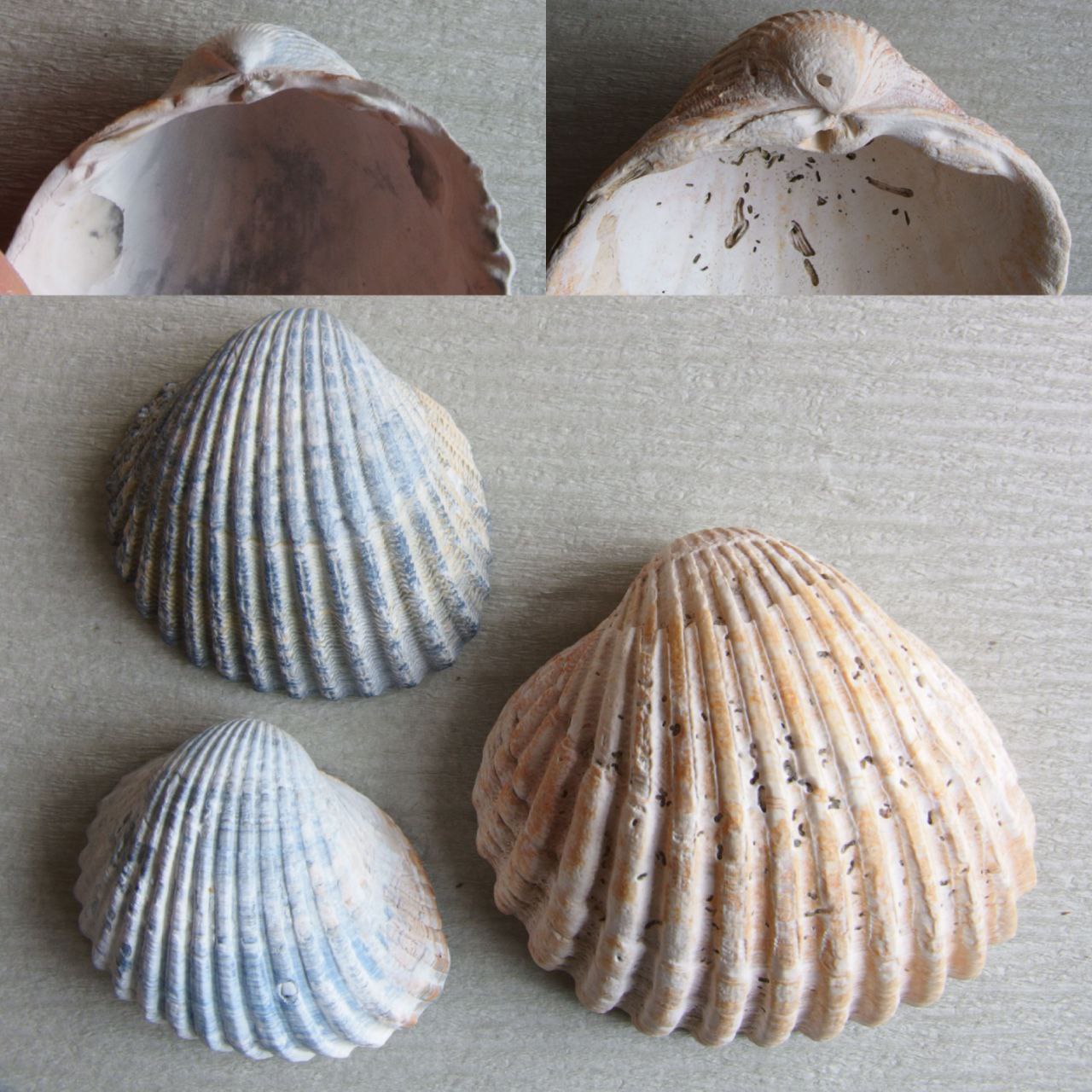
Acanthocardia tuberculata | rough cockle
Up to 7.7cm.
18 to 23 wide thick ribs. The knobbly spines, when preserved are most prominent near the anterior margin. The ribs are as wide as or wider than the gaps between them.
Ranging from yellow-ish to bright orange, the inside lighter. Old and fossil shells range from grey to blue or brown.
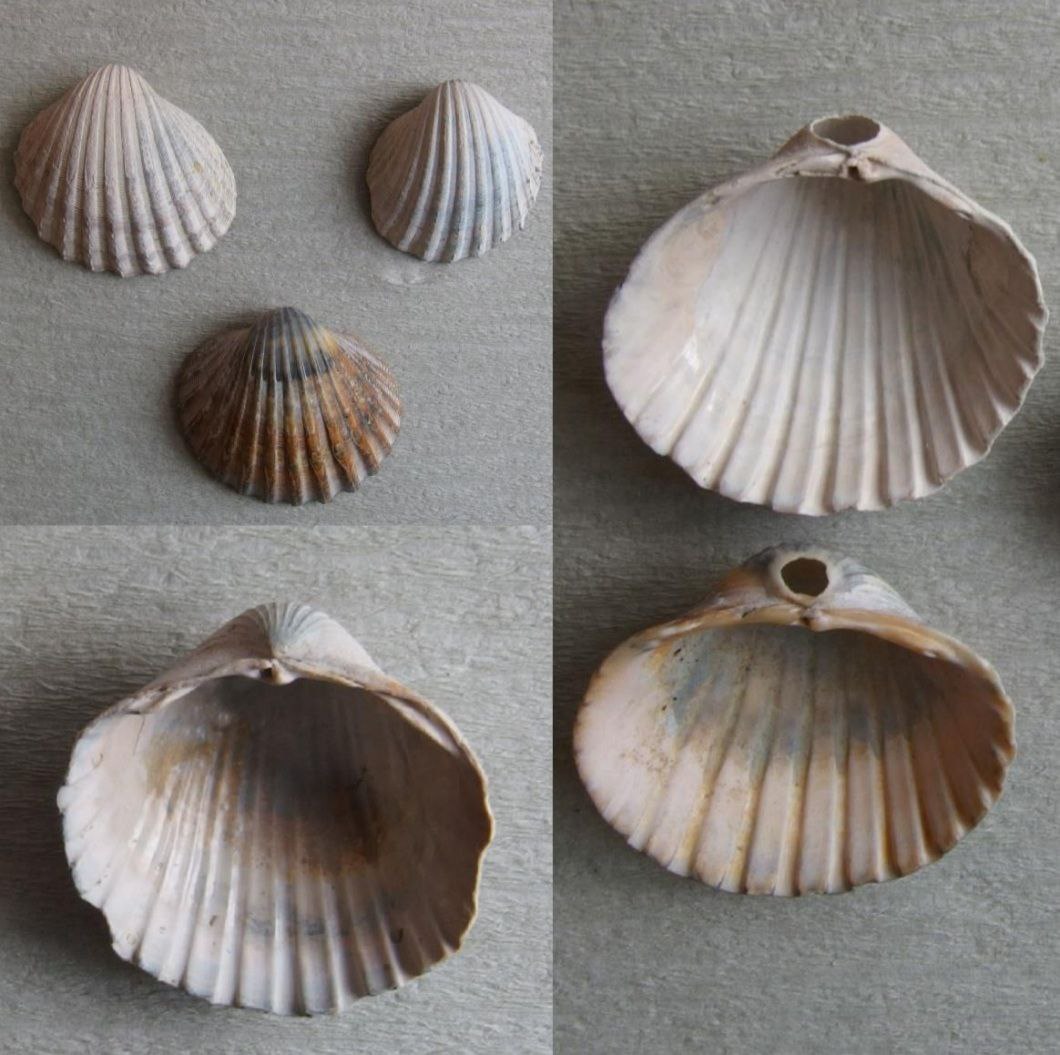
Acanthocardia paucicostata | poorly ribbed cockle
Up to ~4cm.
17 to 19 wide flattened ribs. The shells resemble Acanthocardia echinata and used to be sometimes considered its juvenile form, but the gaps between A. paucicostatas ribs are much wider. Further, they tend to be far smaller and very thin-shelled. The small thorns on their ribs are rarely preserved.
Ranging from yellow-ish to bright orange, the inside lighter. Old and fossil shells tend to range from grey or brown. Recent cockles were detected in dutch waters in 2015, but so far the North Sea is too cold for them.
Heteroconchia > Imparidentia > Cardiidae > Tellinoidea > Donacidae
Donacidae

Donax vittatus | banded wedge shell
Up to 3cm.
Flat triangular shells with a crenelated lower margin. Two cardinal teeth in each strong valve.
Very variable in color, the inside often a bright purple. Fresh specimens are a light brown or pink overlaid with a brown periostracum. Often found articulated.
Heteroconchia > Imparidentia > Cardiidae > Tellinoidea > Macominae
Macominae
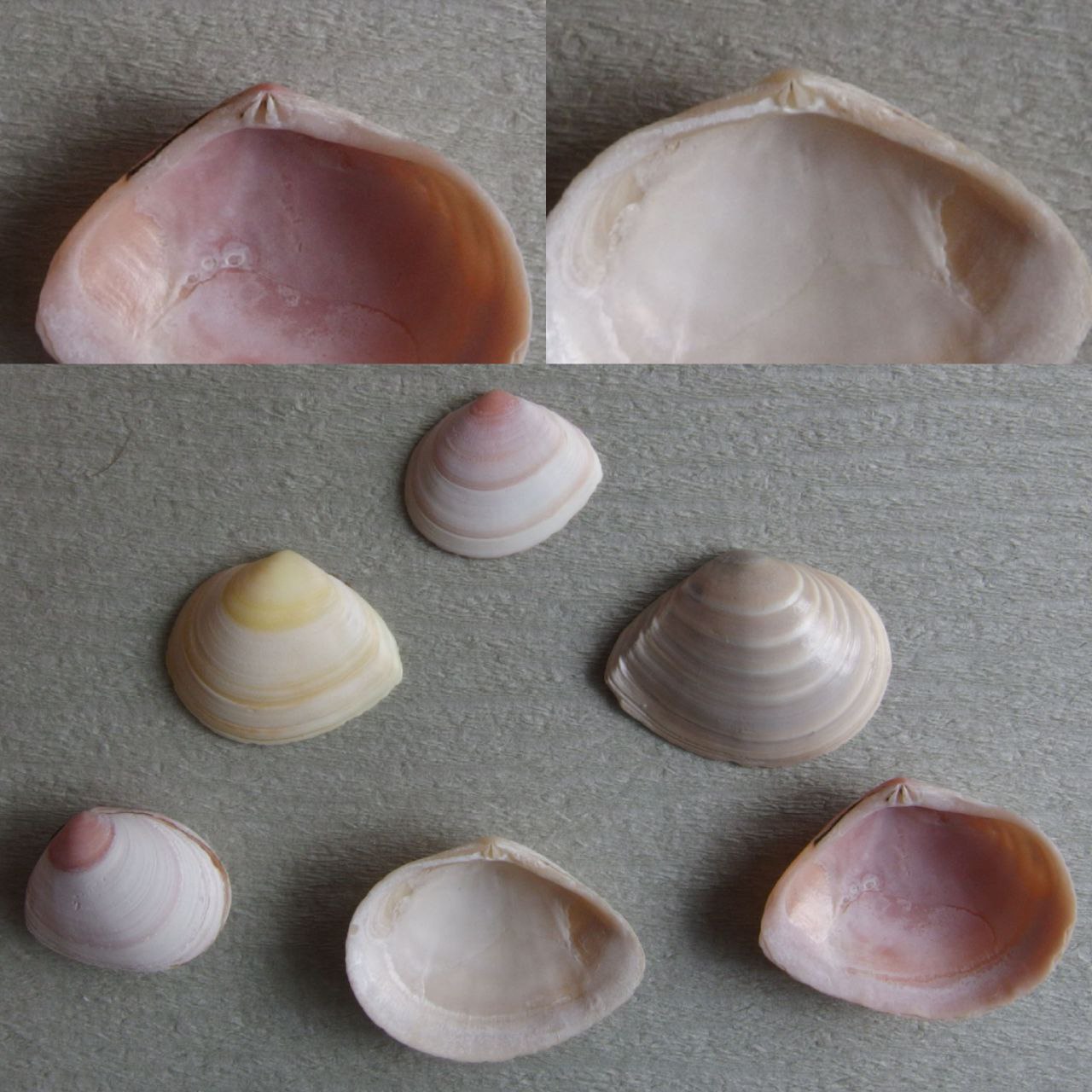
Macoma balthica | baltic tellin
Up to ~3cm.
Smooth solid shells with a slightly pointed posterior end. The small hinge with its 2 cardinal teeth is often worn away.
The outer surface ranging from red or pink to yellow, usually in coloured concentric bands. The inside similar, often pink. Still articulated small specimens are fairly common. Older shells have a similar pattern but are blue or brown.
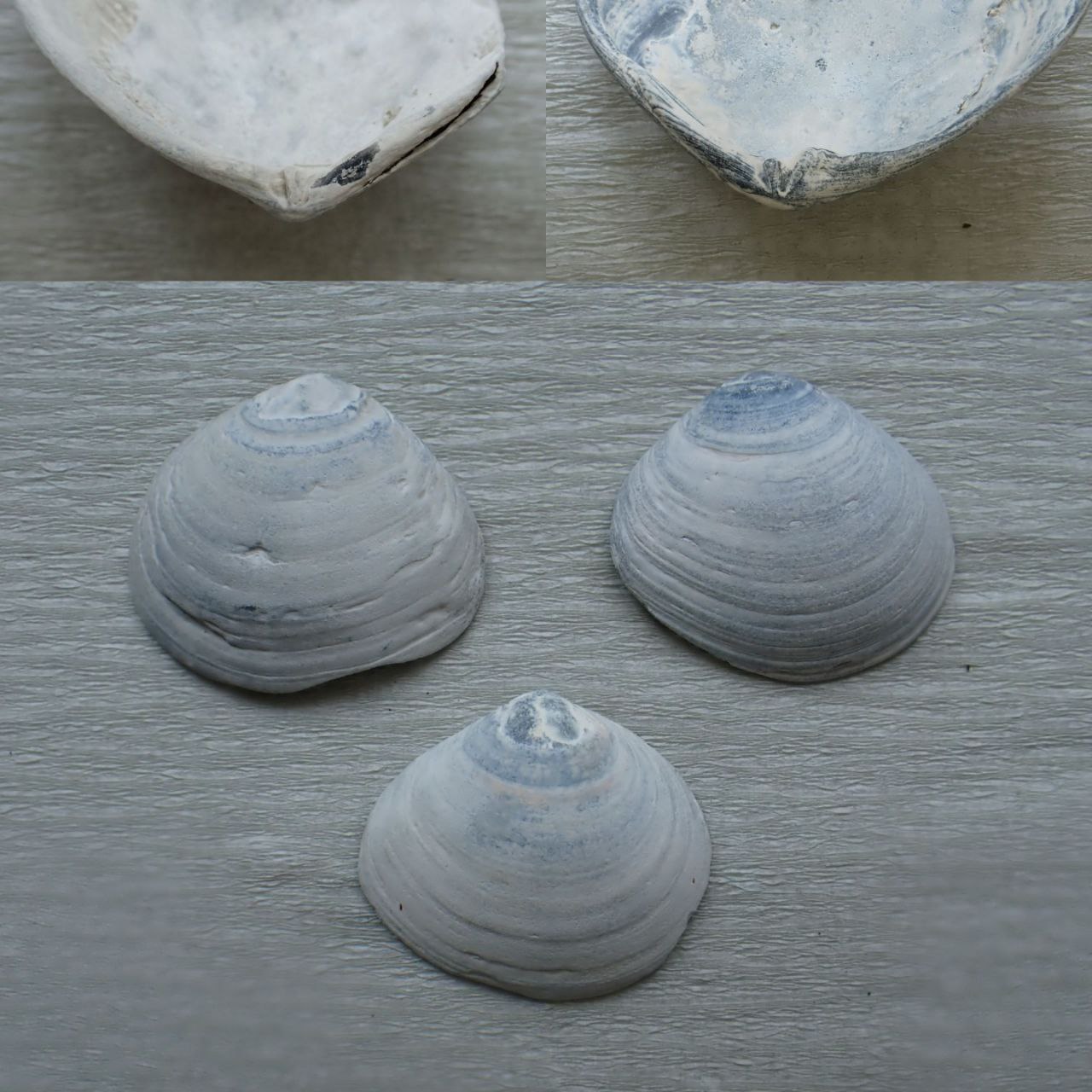
Macoma obliqua | oval tellin
Like Macoma balthica but typically larger, less convex and more elongated in overall shape. Less pointed posterior end.
Only found as rare fossils (extinct) and extremely often confused for other fossil Macoma, as there are many. Grey, blue-ish or brown.
Heteroconchia > Imparidentia > Cardiidae > Tellinoidea > Semelidae
Semelidae
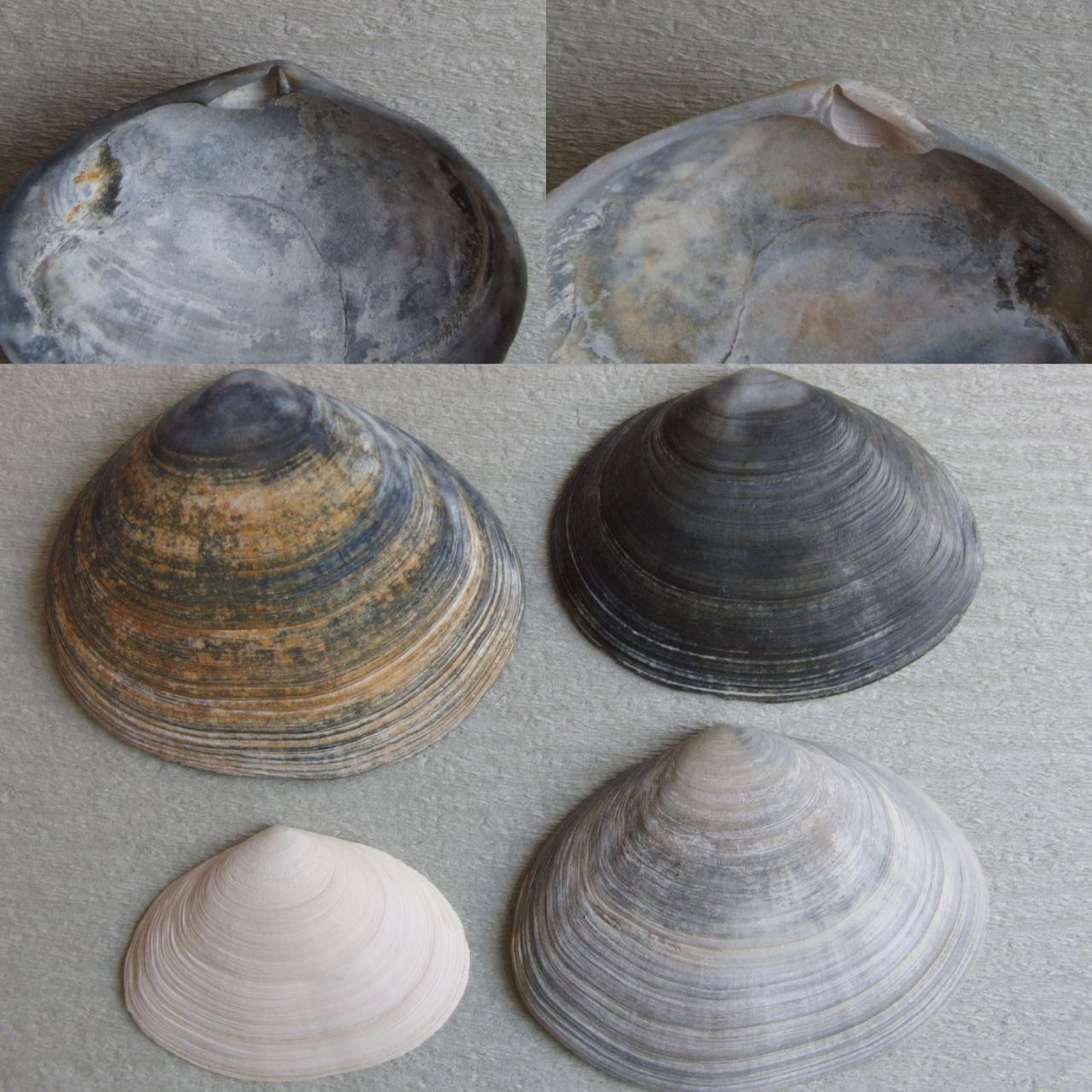
Scrobicularia plana | peppery furrow shell
Up to 6cm.
Round, very fragile flat shells. The large chondrophore characteristic of Semelidae pointing toward the posterior end. Extremely large pallial sinus.
The outer surface a light yellow or off-white, the inside lighter, sometimes found with remnants of the brown periostracum. Very often tinted blue or black.
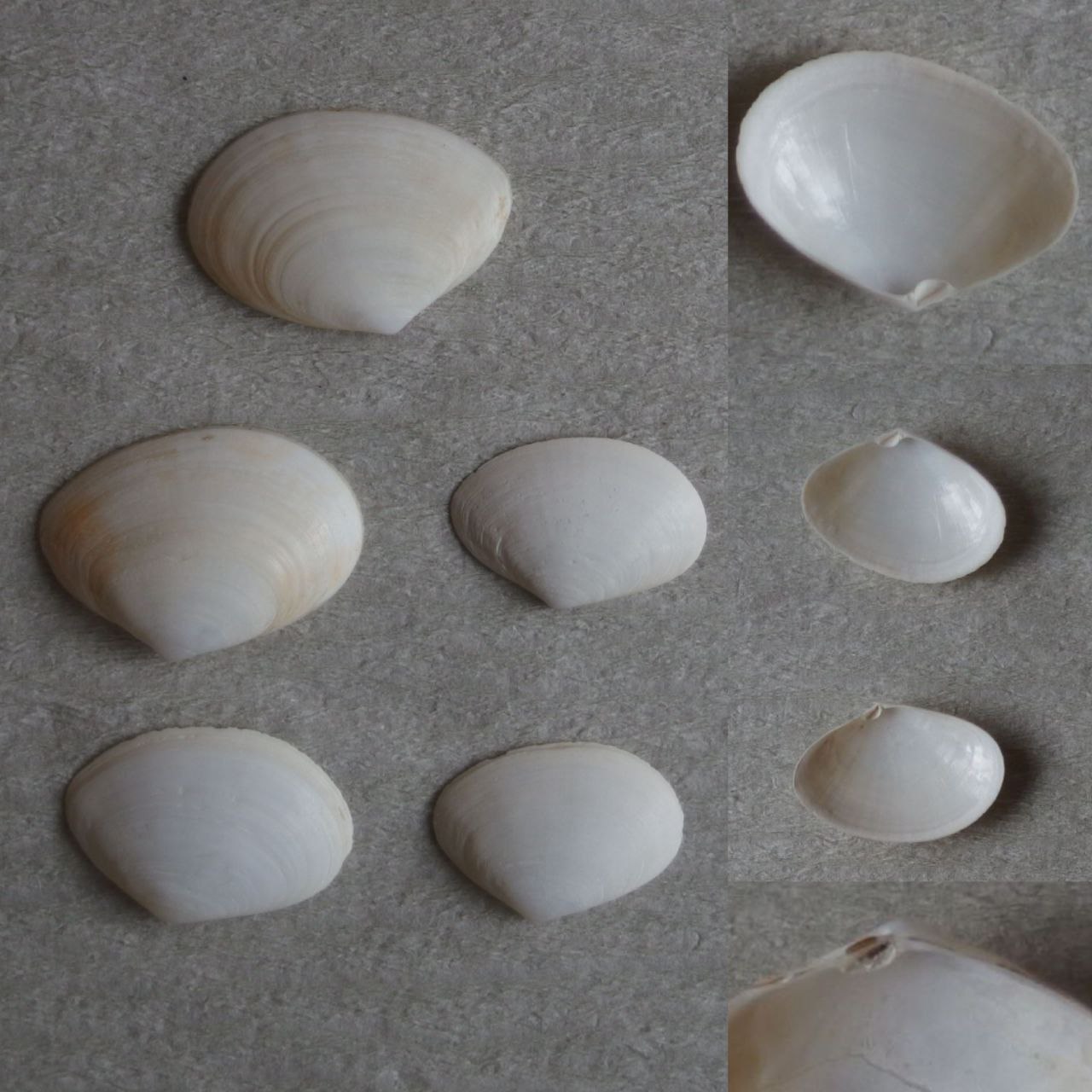
Abra alba | white furrow shell
Up to ~2cm
Small fragile oval shells, the posterior end slightly more pointed than the anterior. Rounder and more convex than the otherwise similar looking Macomangulus tenuis. Sharing Scrobicularia plana's hinge configuration.
Recently dead shells a smooth white, often with a remaining ring of yellow-ish brown periostractum around the margin. Seldomly grey or blue-ish, since shells rarely stay intact long enough to assume colour. Small articulated specimens are common.
Heteroconchia > Imparidentia > Cardiidae > Tellinoidea > Arcopagiinae
Arcopagiinae
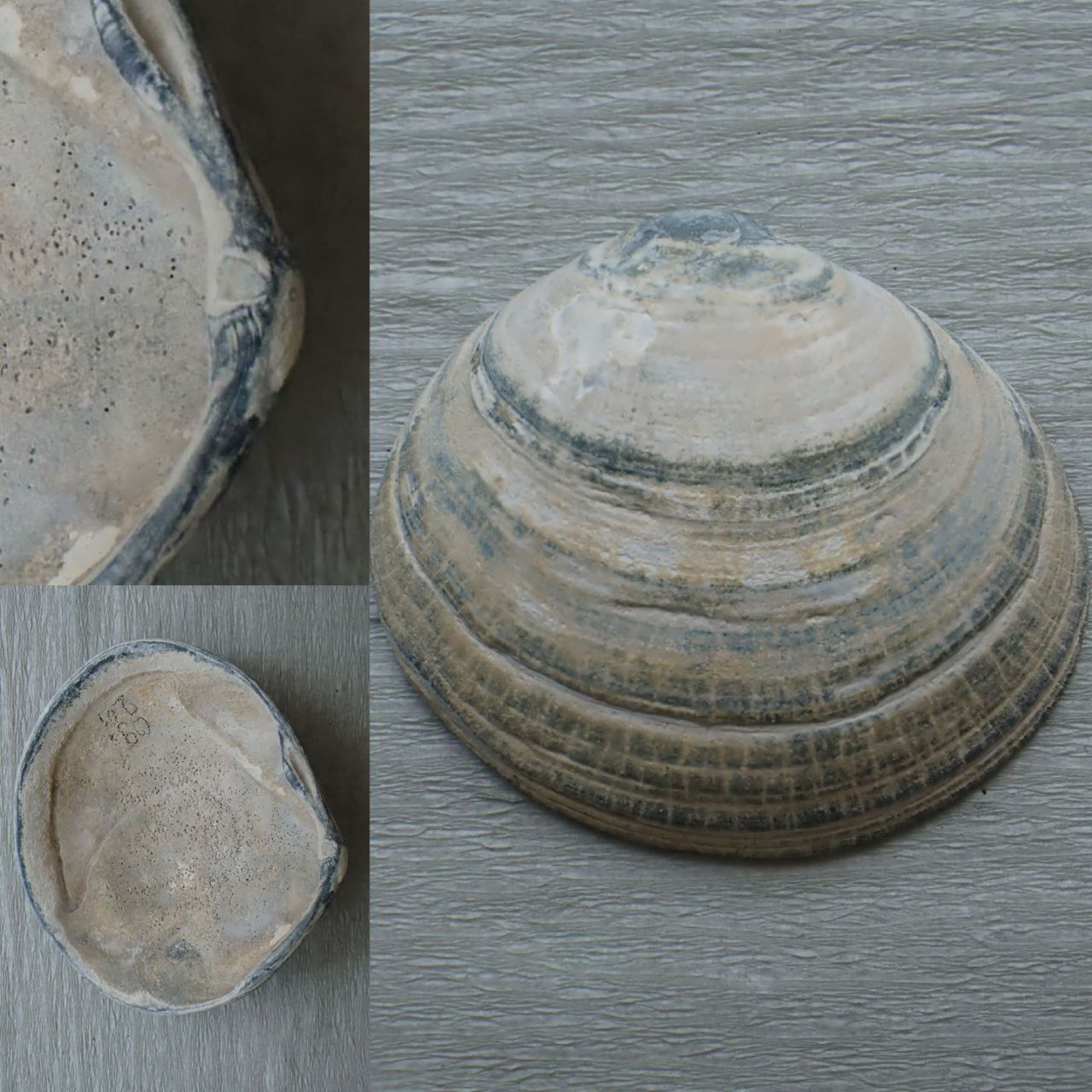
Arcopagia crassa | blunt tellin
Up to 6cm.
Flat round shells with slight growth rings and a large pallial sinus.
Only found as a fossil this far north, and extremely rarely. Blue-ish, brown or grey as fossil shells are wont to be.
Heteroconchia > Imparidentia > Cardiidae > Tellinoidea > Gastraninae
Gastraninae

Gastrana fragilis | fragile tellin
Up to 4cm.
Variable shape and convexity always with an elongated slightly pointed posterior end and characteristic large pallial sinus. Two cardinal teeth in each valve.
Found only as fragile fossils this far north; grey, blue-ish or brown and often worn down.
Heteroconchia > Imparidentia > Cardiidae > Tellinoidea > Tellininae
Tellininae
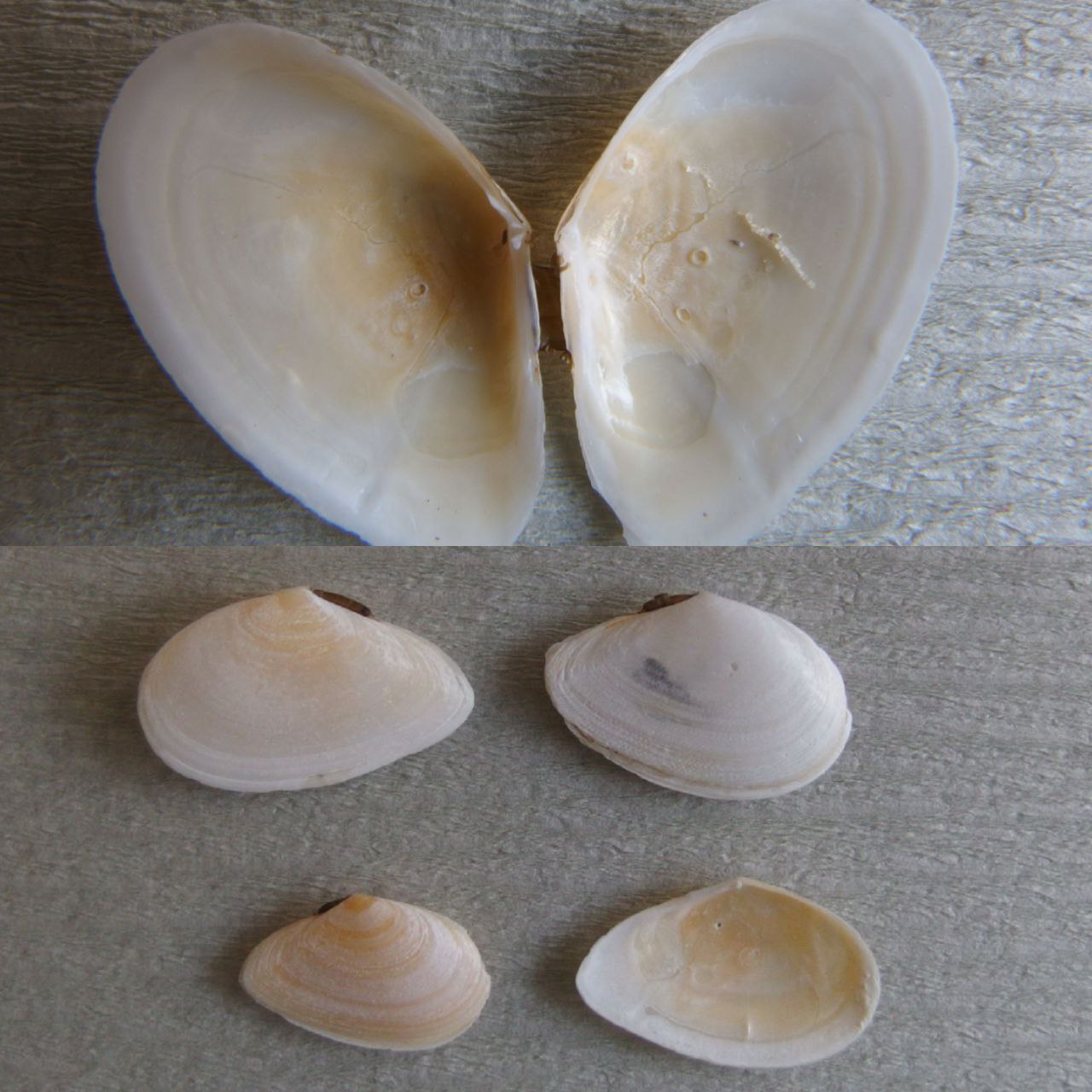
Fabulina fabula | bean-like tellin
Up to ~2.5cm.
Fragile thin shells, elongated posteriorly. Both valves with more or less apparent concentric growth rings, the right valve with thin parallel transverse ridges.
Ranging from off-white to orange, most often a light yellow, especially near the umbo. Occasionally adorned with bands of more solid colour or tinted blue-ish grey.
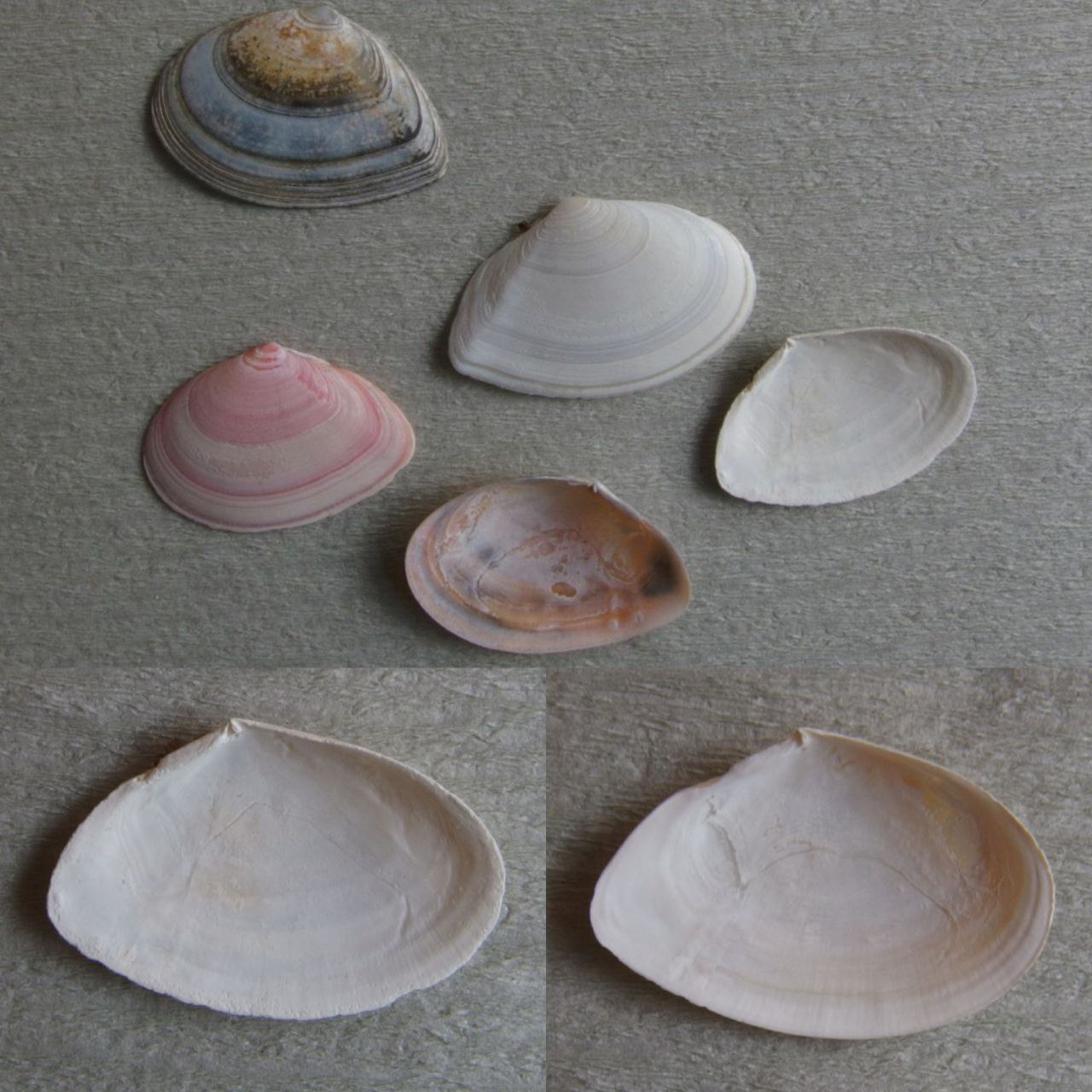
Macomangulus tenuis | thin tellin
Up to 2.5cm.
Thin flat shells with a crease of sorts running from the hinge to the pointed posterior end. Glossier than Fabulina fabulina when in good condition.
Typically white, yellow, orange or pink, with the colour mostly confined to concentric bands.
Heteroconchia > Imparidentia > Myida > Corbulidae
Corbulidae
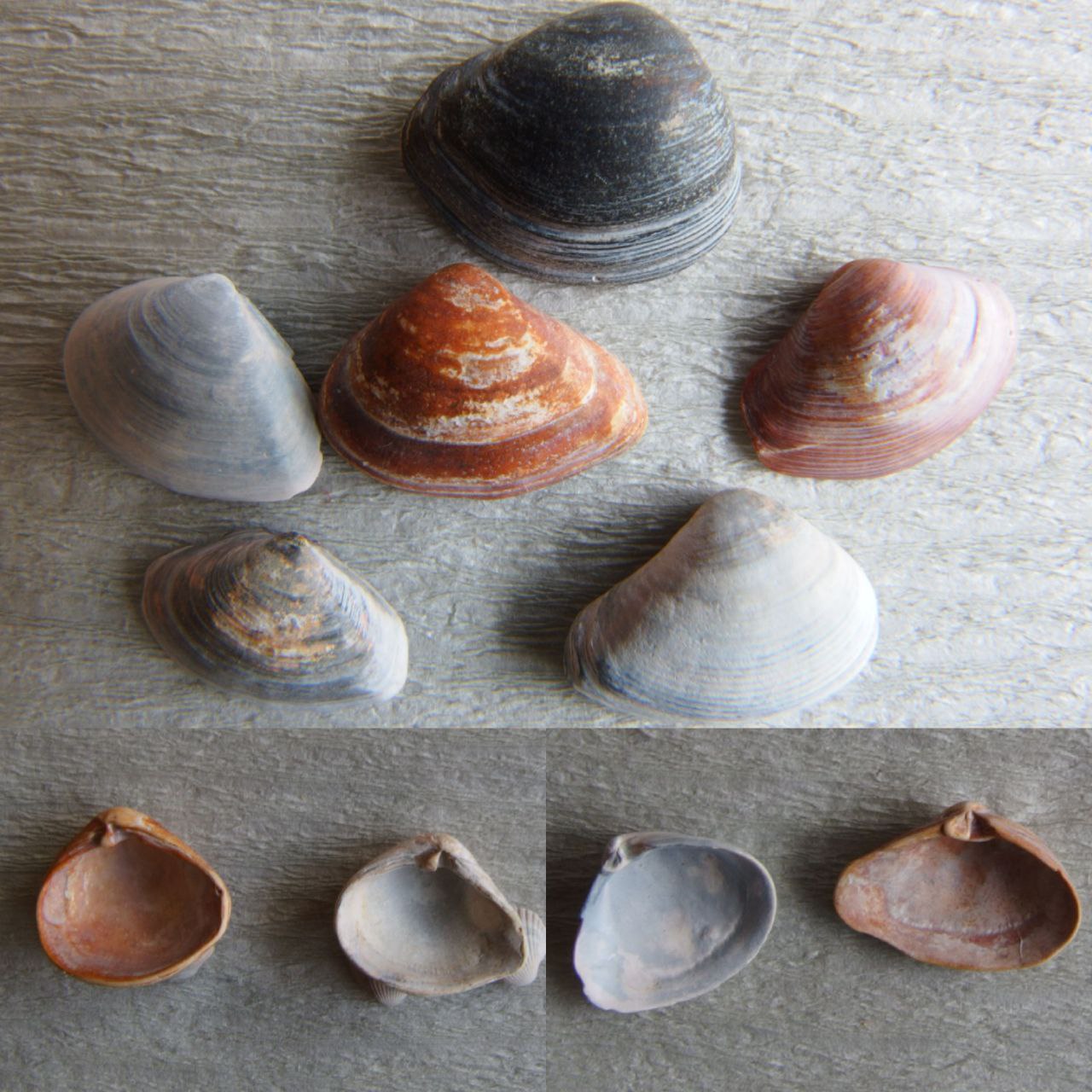
Varicorbula gibba | basket shell
Up to 1.5cm.
Thick almost triangular shells. THe right valve larger and more convex, the left more elongated, both with growth rings. Highly variable in shape but always identifiable by its hinge: the right valve sports a fairly large tooth which corresponds to a gap in the left valve's hinge.
Recent specimens are off-white or yellow-ish. Juist only sees fossils of various, often intense colours. Often these are too worn down to make out the growth rings.
Heteroconchia -> Imparidentia > Myida > Myidae
Myidae
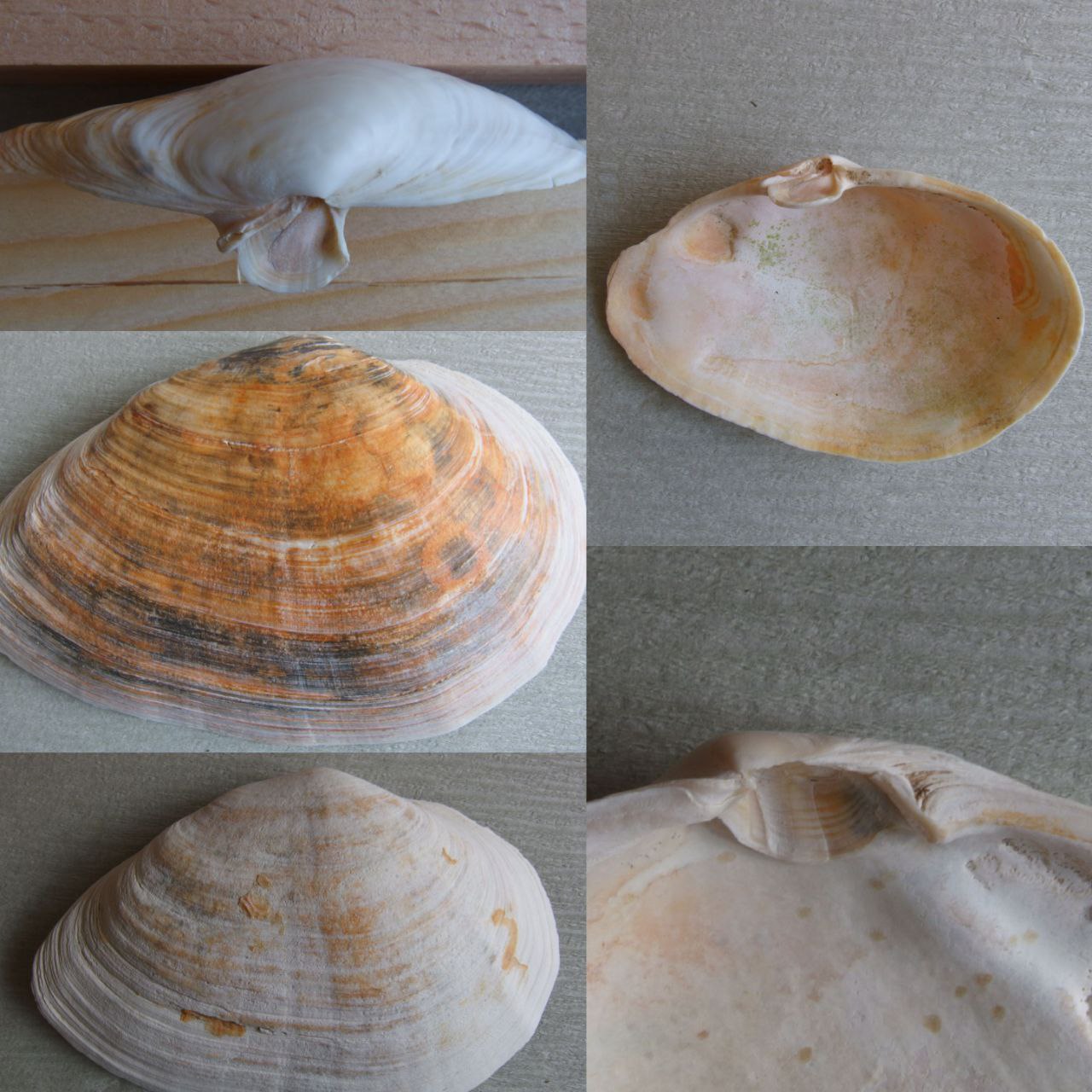
Mya arenaria | sand gaper
Up to 15cm, much smaller in brackish water.
Oval, very convex slightly chalky shells with a more or less pointed posterior end. The right valve more convex but found less frequently as the large chondrophore sticks out and can anker it into the sand. As the name gaper clam implies, even closed a gap remains between the animal's shells.
Off-white shells that are often tinted orange or black. Originally extinct in our parts, but reintroduced by human hand before the niche could be filled.
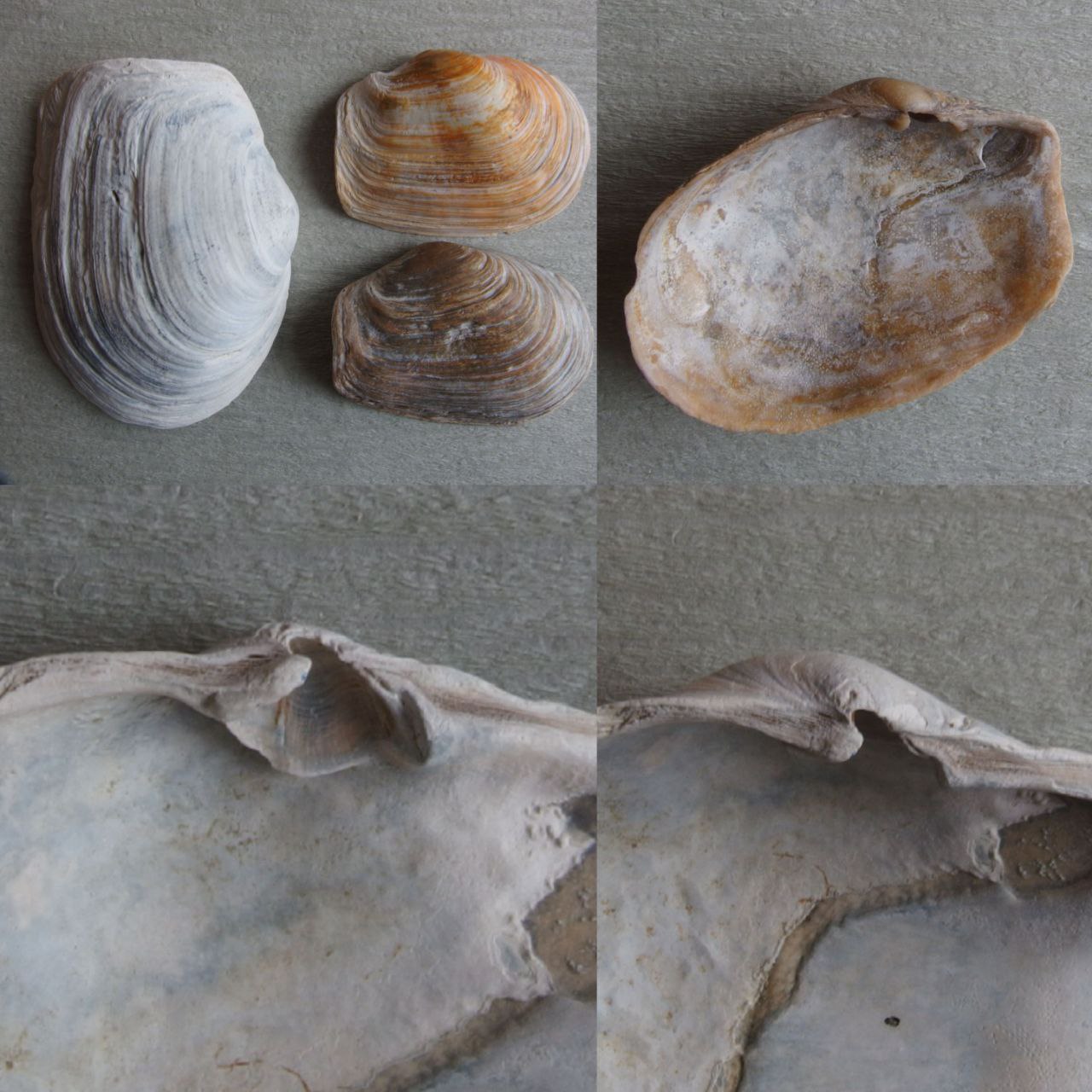
Mya truncata | blunt gaper
Up to 7cm.
Anterior end rounded, the posterior abruptly truncated. Rough exterior with prominent growth rings. Like Mya arenaria in that the left hinge possesses a large chondrophore and the posterior end gapes even in the living animal.
Ranging from white-ish to light brown, with a brown periostracum. Specimens collected as far south as Juist are likely to be fossils, as the species prefers colder waters. As such they are often tinted blue-ish or brown.
Heteroconchia -> Imparidentia > Myida > Pholadinae
Pholadinae
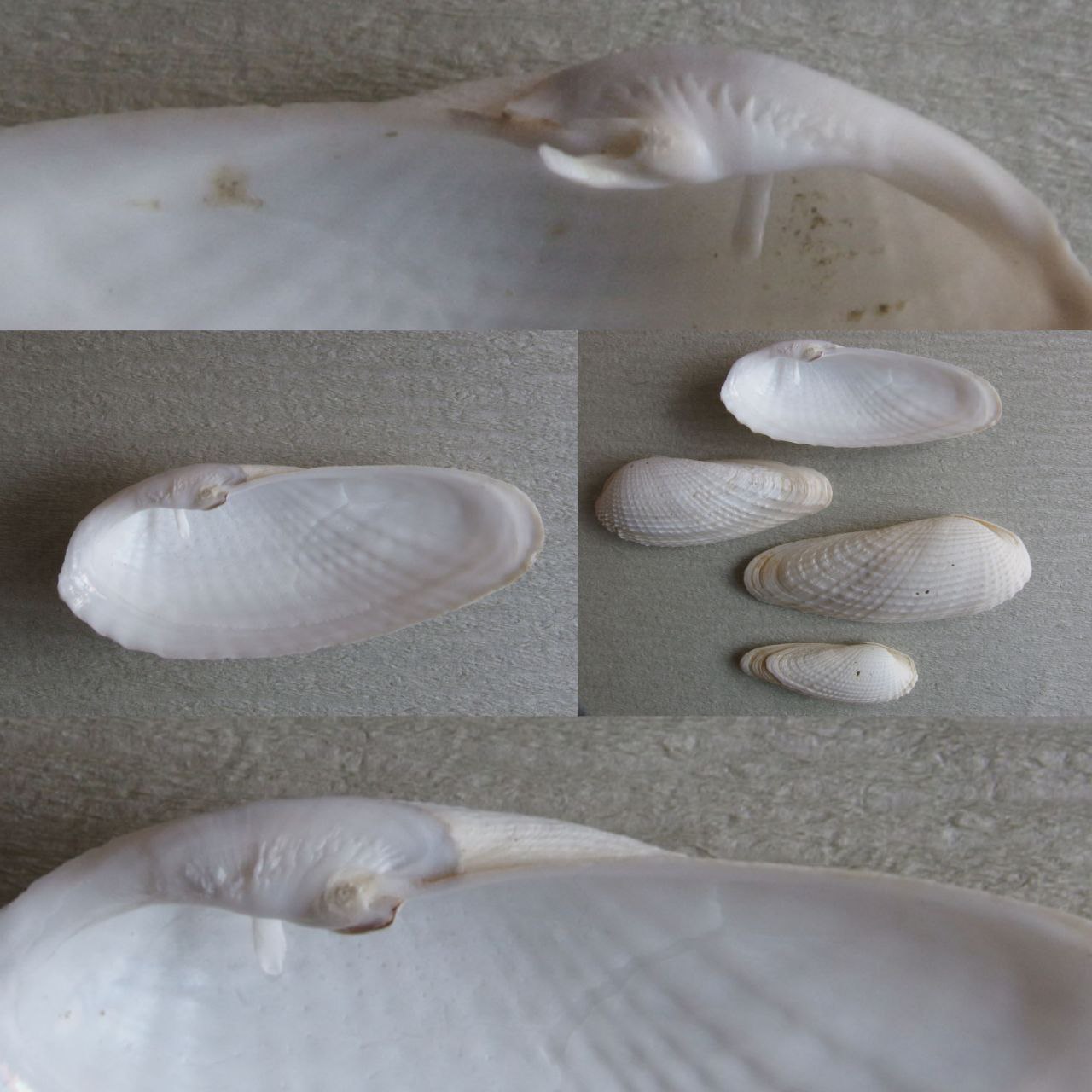
Barnea candida | white piddock
Up to 5.5cm.
Elongated oval shells with a portion of the anterior margin flipped over the outside of the shell. As Pholadidae they possess accessory plates, but these are rarely if ever found. Both valves are set with regular concentric and radial ridges which intensify towards the anterior. Their intersections are slightly raised. The hinge possesses no teeth, but insead a thin, long apophysis.
Pure white, sometimes tinted a blue-ish grey or faint yellow, especially around the edge. The animals mechanically bore into soft material like wood by slightly rotating the anterior of the shell with their foot.
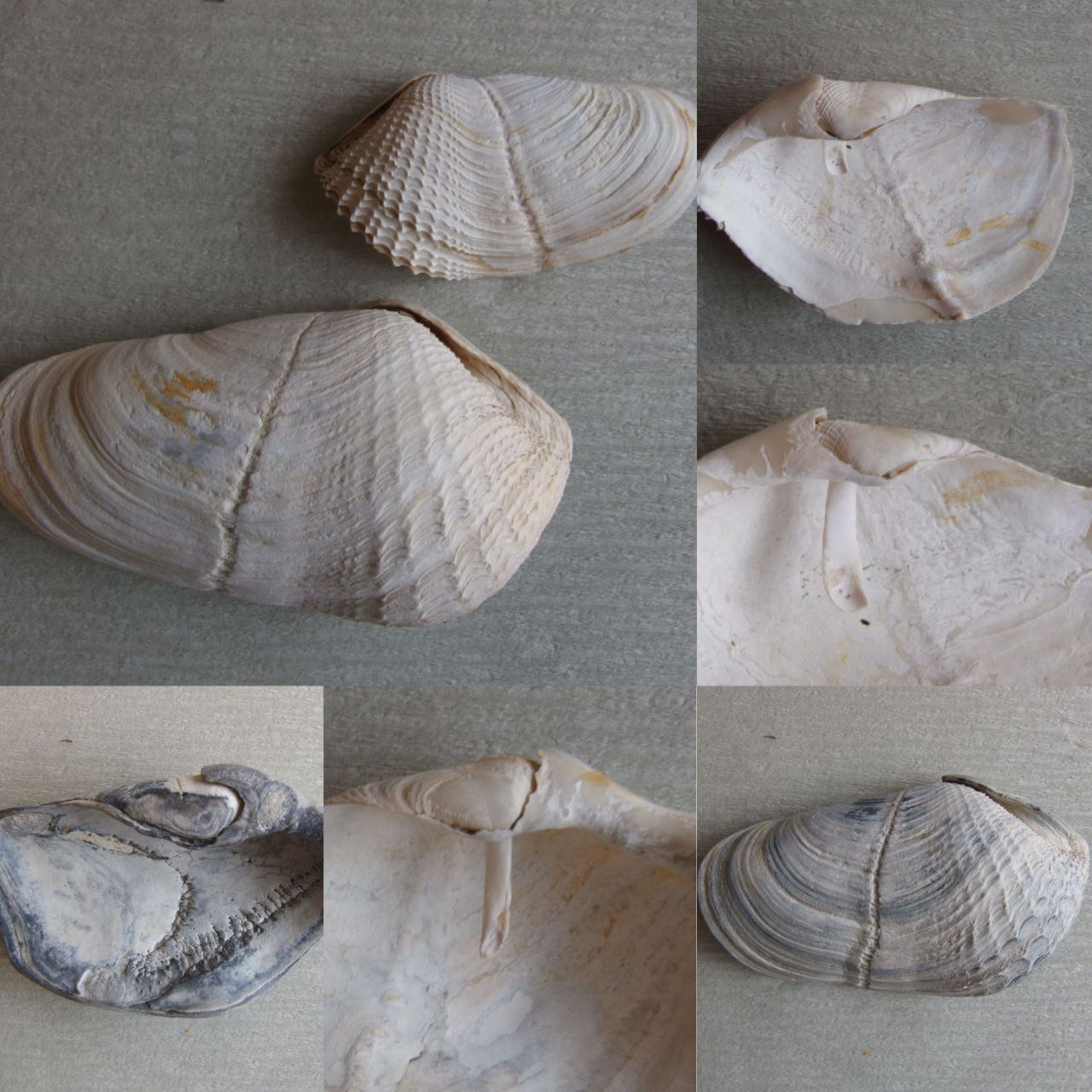
Zirfaea crispata | great piddock
Up to 10cm.
Thin very convex shells with a portion of the anterior margin flipped over the outside of the shell. The structure of the outer shell surface like that of Barnea candida, only more intense. A seam running down the middle separates the anterior, which is used for boring, from the posterior on which the concentric ridges dominate.
White or grey, old specimens sometimes tinted blue-ish. Their wavy anterior margin is the most commonly found fragment.
Heteroconchia > Imparidentia > Venerida > Mactroidea > Arcticoidea
Arcticoidea
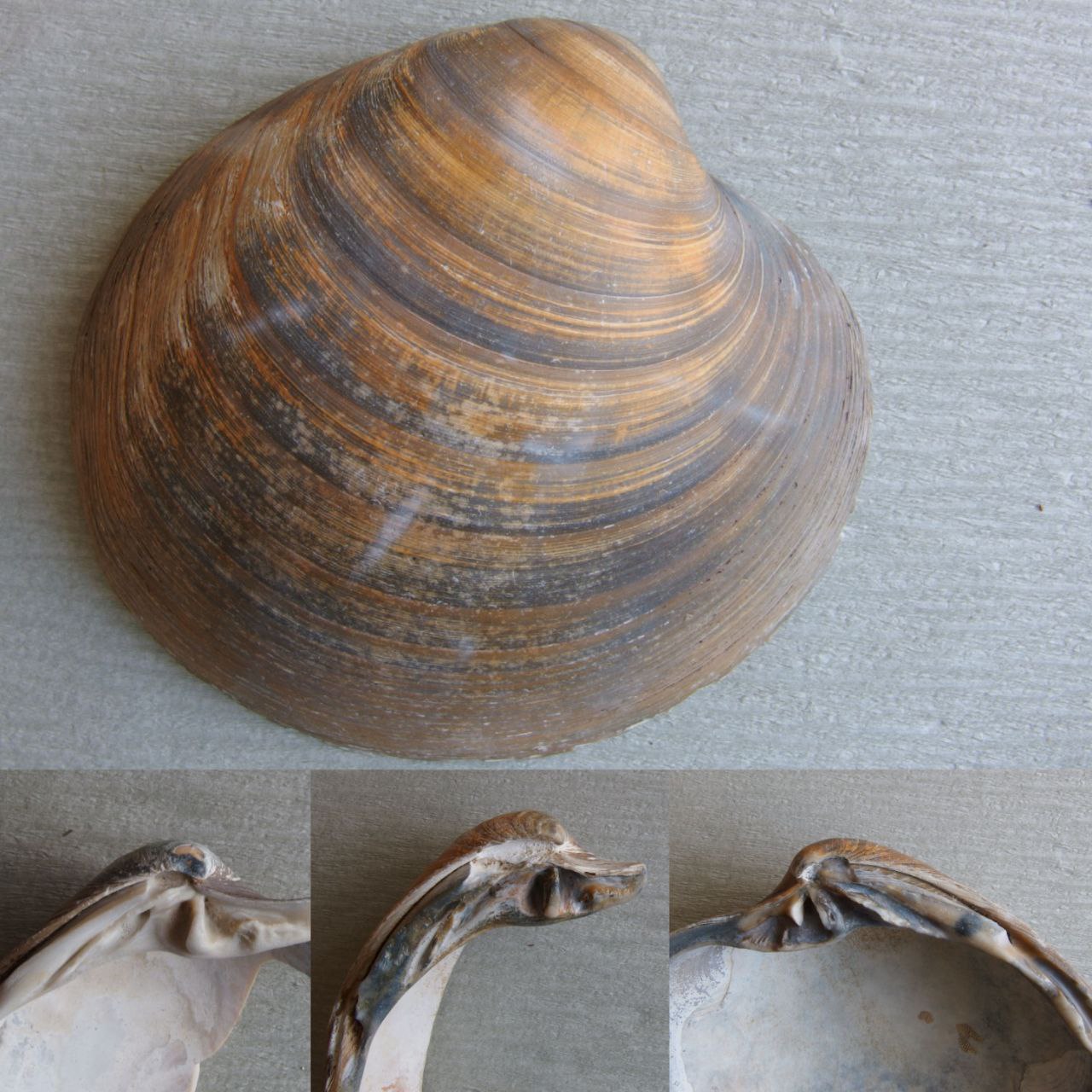
Arctica islandica | icelandic cyprine
Up to ~12cm.
Almost circular with an angled umbo similar to a venus clam. Both the shell itself and the hinge are very thick.
Brown or off-white with a brittle green-ish brown periostracum. Well preserved shells can be a glossy white or yellow-ish. The animal can live up to at least 500 years. Unfortunately, we have never found so much as a hinge on Juist, so all our specimens were collected on Amrum, Sylt, or in Blackpool, in the case of the one intact shell (courtesy of my best friend).
Heteroconchia > Imparidentia > Venerida > Mactroidea > Lutrariinae
Lutrariinae
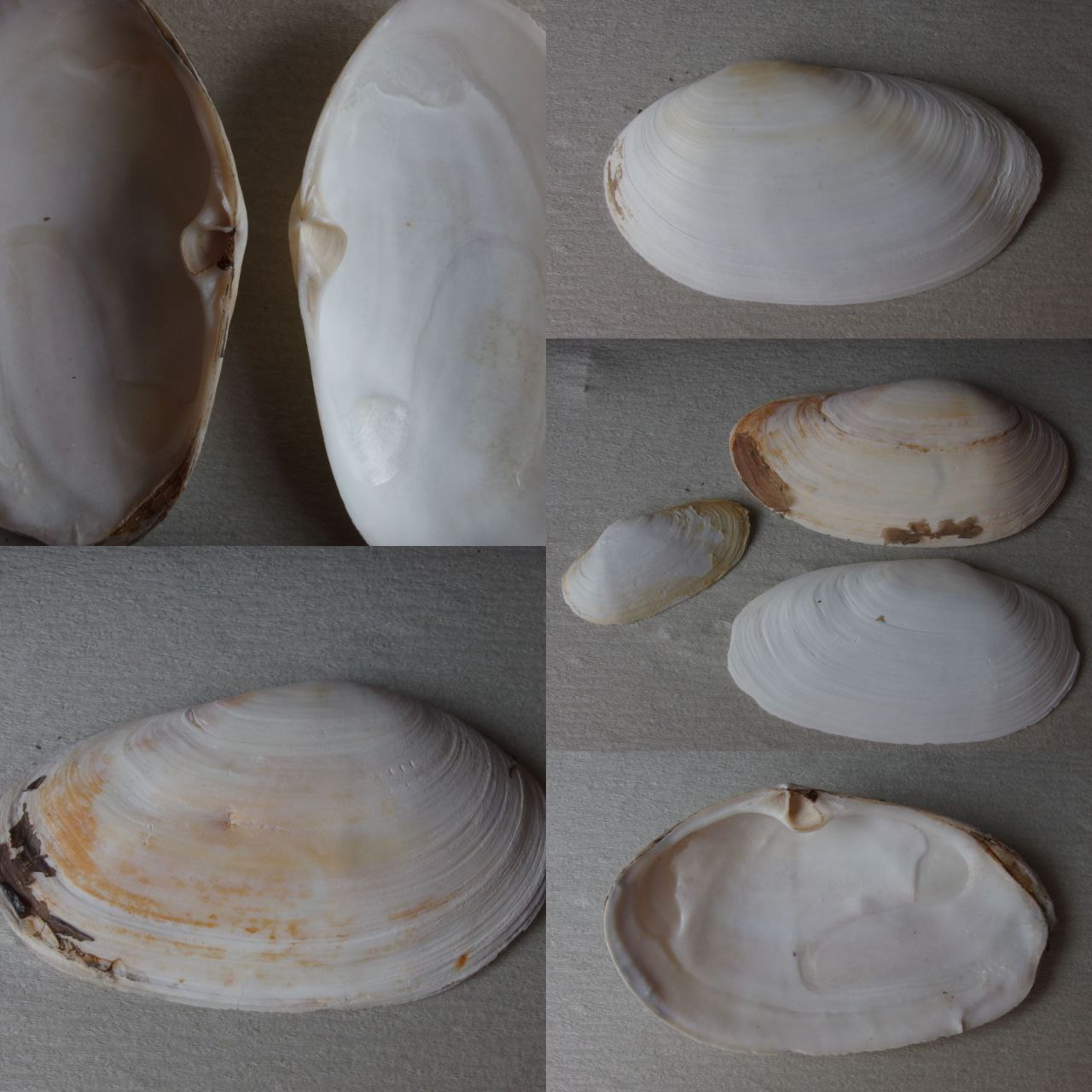
Lutraria lutraria | common ottershell
Up to ~13cm.
Large smooth oval shells, far less convex than Mya arenaria. The large flat hinge differentiates them quite definitively. Slight concentric growth lines.
Off-white, often yellow-ish, sometimes pink or blue-ish. The dark brown periostracum is partially preserved fairly often. The species only became a common find on Juist in the early 2020s.
Heteroconchia > Imparidentia > Venerida > Mactroidea > Mactrinae
Mactrinae
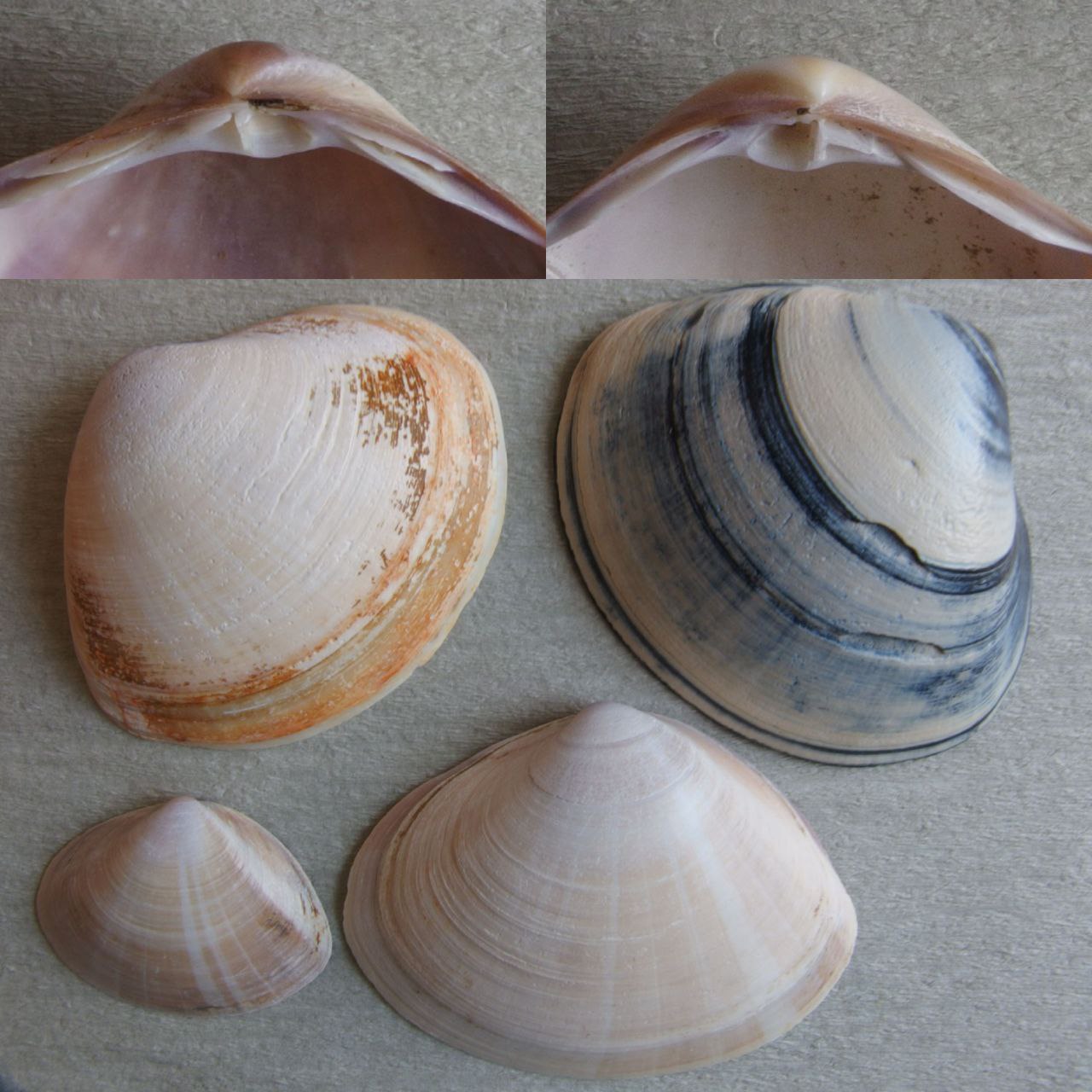
Mactra stultorum | rayed trough shell
Up to 6cm.
Thin roughly triangular shells with comlpex hinges featuring 2 lateral teeth in the left valve and 4 in the right. Smooth but almost tacky feeling.
Off-white or brown and pink or even purple, the colour arranged in rays radiating out from the umbo. The inside lighter, usually pink. In older valves which are tinted blue-ish concentric bands of colour are more common. Both the whole shell and the hinge look very similar to other trough shells, but the lateral teeth lack striation and the hinge is much more delicate.

Mactra plistoneerlandica | Altena's fossil trough shell
Up to 8cm.
A fossil form of the rayed trough shell with a larger and more pronounced hinge and thicker shell. Growth rings typically discernible.
Extinct, as such chalky white or grey, often tinted blue or brown. More common on dutch coasts, which is where the type was collected.
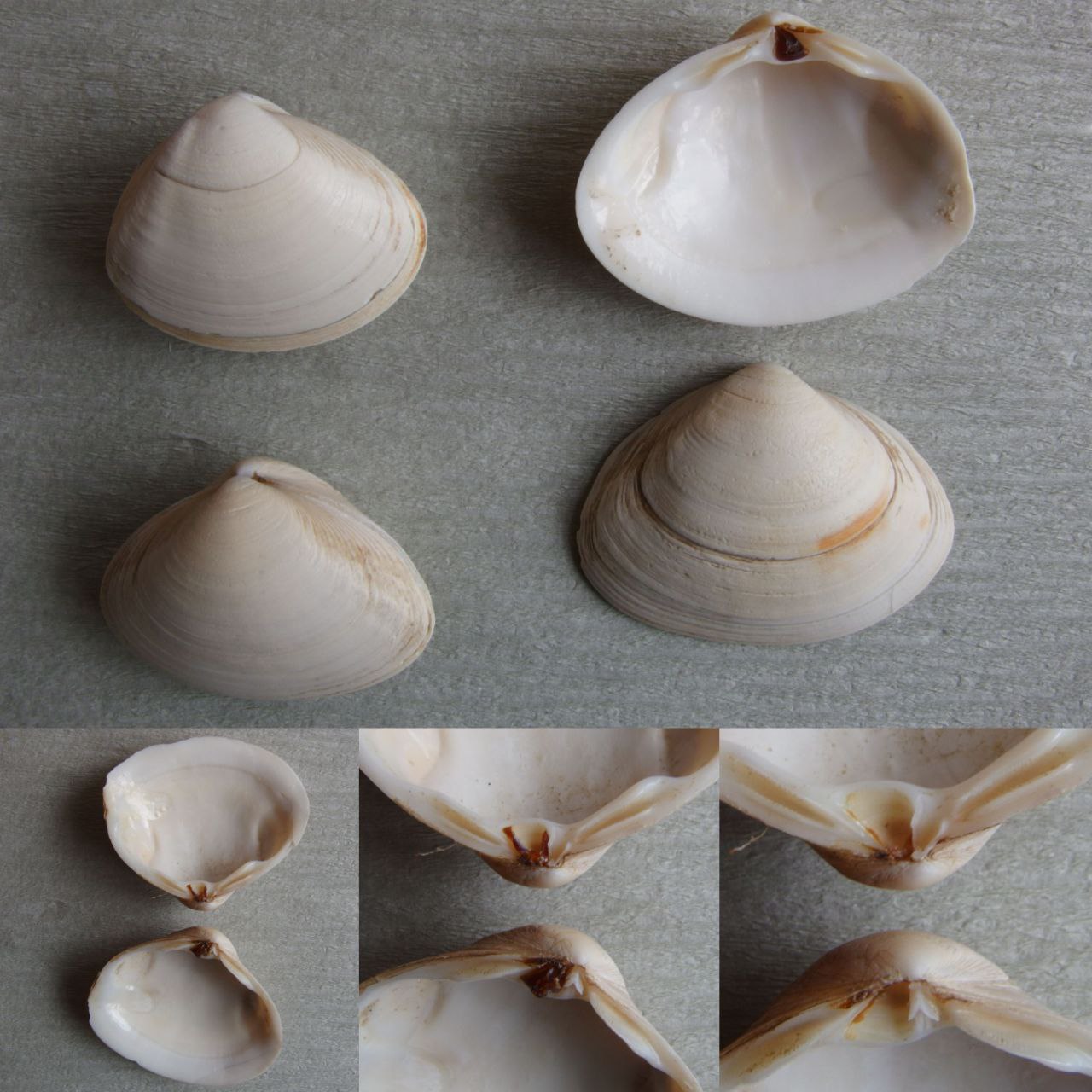
Spisula solida | surf clam
Up to ~5.5cm.
Almost triangular, lunula and area usually demarcated. The anterior end more rounded, fine growth lines apparent in most specimens. With a small, tapering pallial sinus and striations on the lateral teeth as is characteristic of the genus Spisula.
A porcelain off-white or yellow, the inside glossy. Older shells are often bleached or tinted reddish-yellow or blue. Not uncommonly found still articulated with intact ligaments.
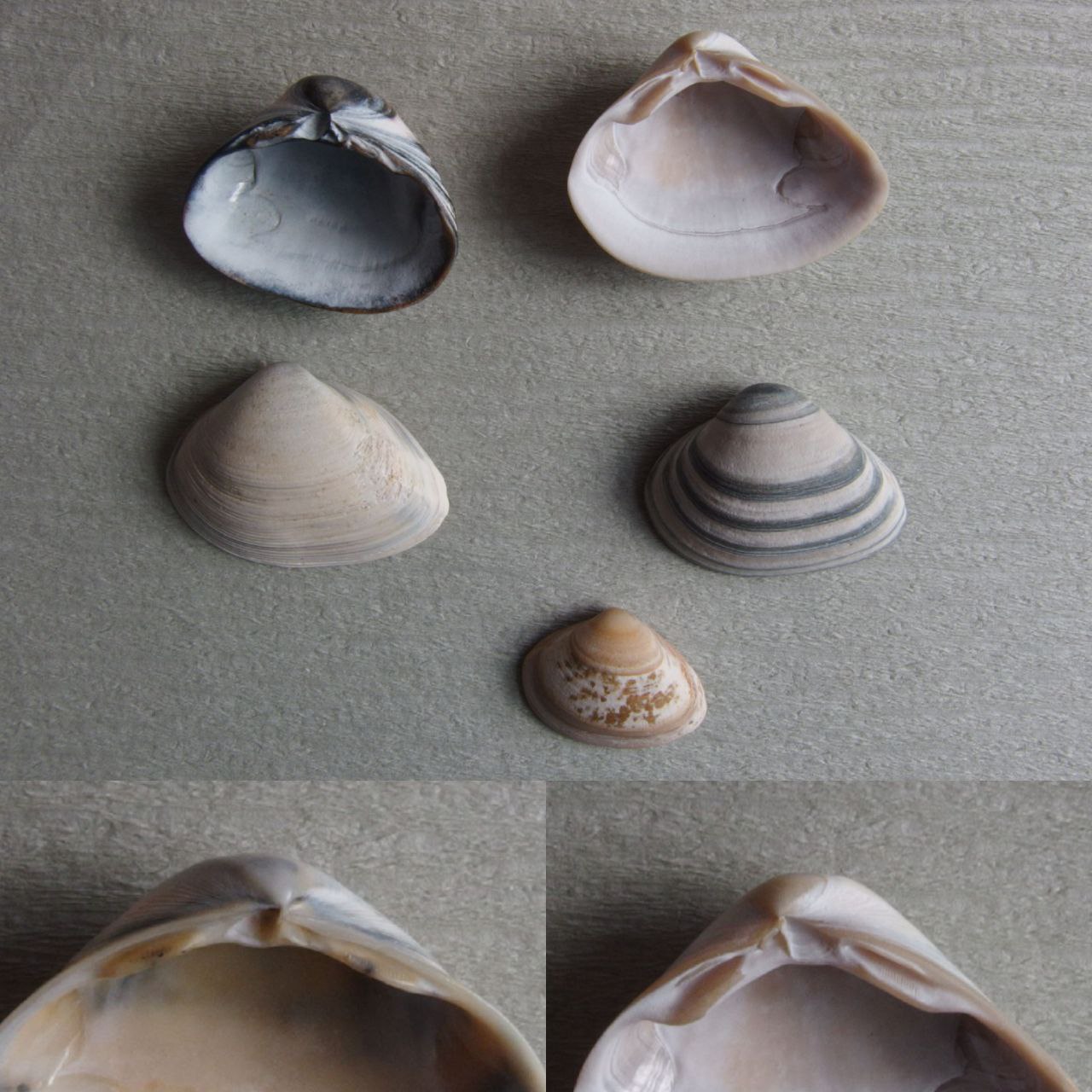
Spisula subtruncata | cut trough shell
Up to 3cm.
Solid triangular shells very similar to Spisula solida, but often convexer. Extremely variable in shape, especially fossil specimens. Lateral teeth striated. Commonly displaying a deformity caused by parasitism called 'Amrumer Delle', in which the lower margin and upper surface curves in more or less strongly (see last image below).
The outer surface yellow-ish or a light brown, the inside smooth and lighter. The periostracum of similar hue, but darker. Older specimens often with bands of various colours.
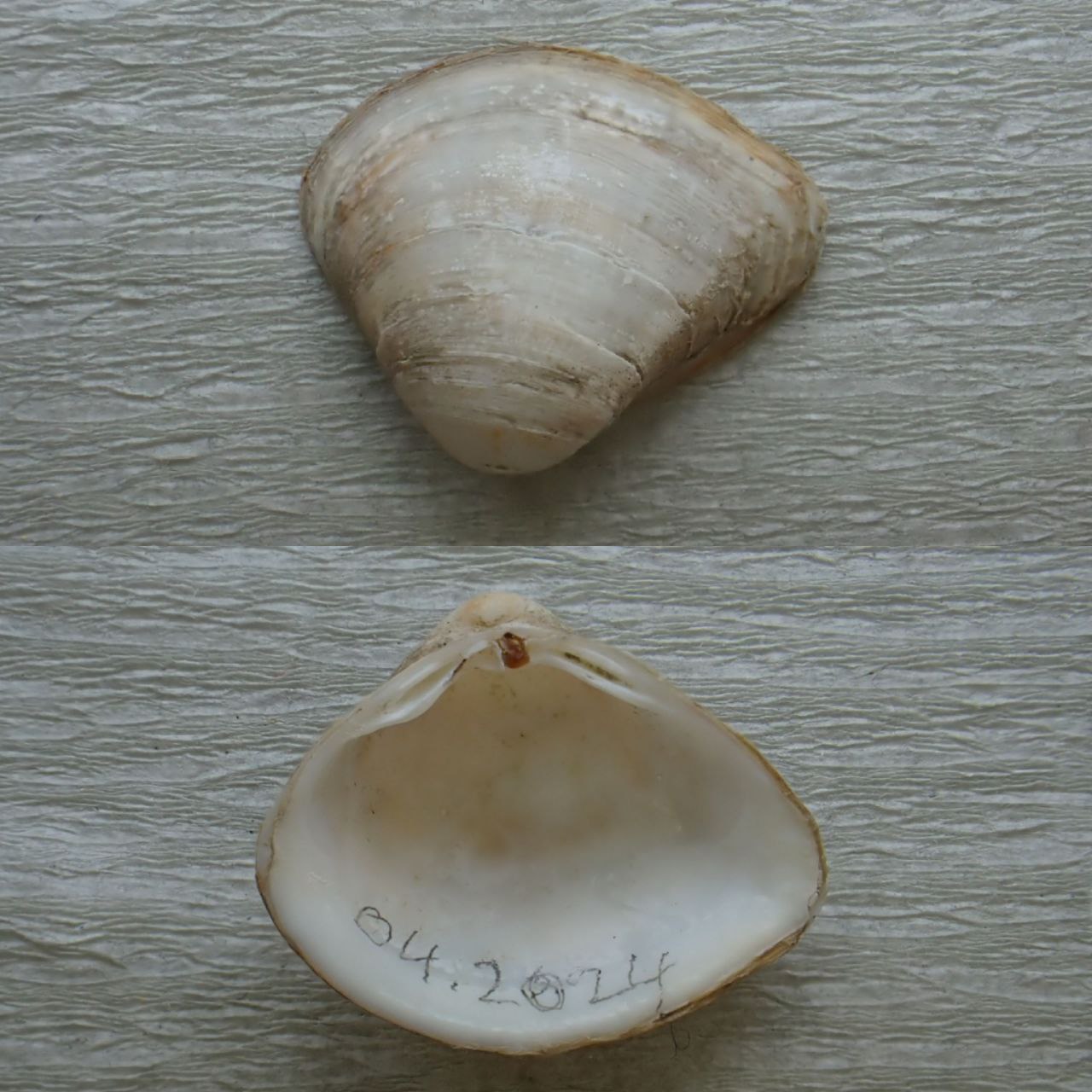
Mulinia lateralis | dwarf surf clam
Up to 1.5cm.
Triangular small shells with a pronounced crease running along the posterior. Very similar to Spisula subtruncata, but lacking an external or even particularly prominent ligament.
The outer shell beige or yellow-ish, ranging from porcelain-like to partly translucent. The species was introduced from North America and prefers more brackish waters than native trough shells. So far a very rare sight in the wadden sea.
Heteroconchia > Imparidentia > Venerida > Petricolinae
Petricolinae
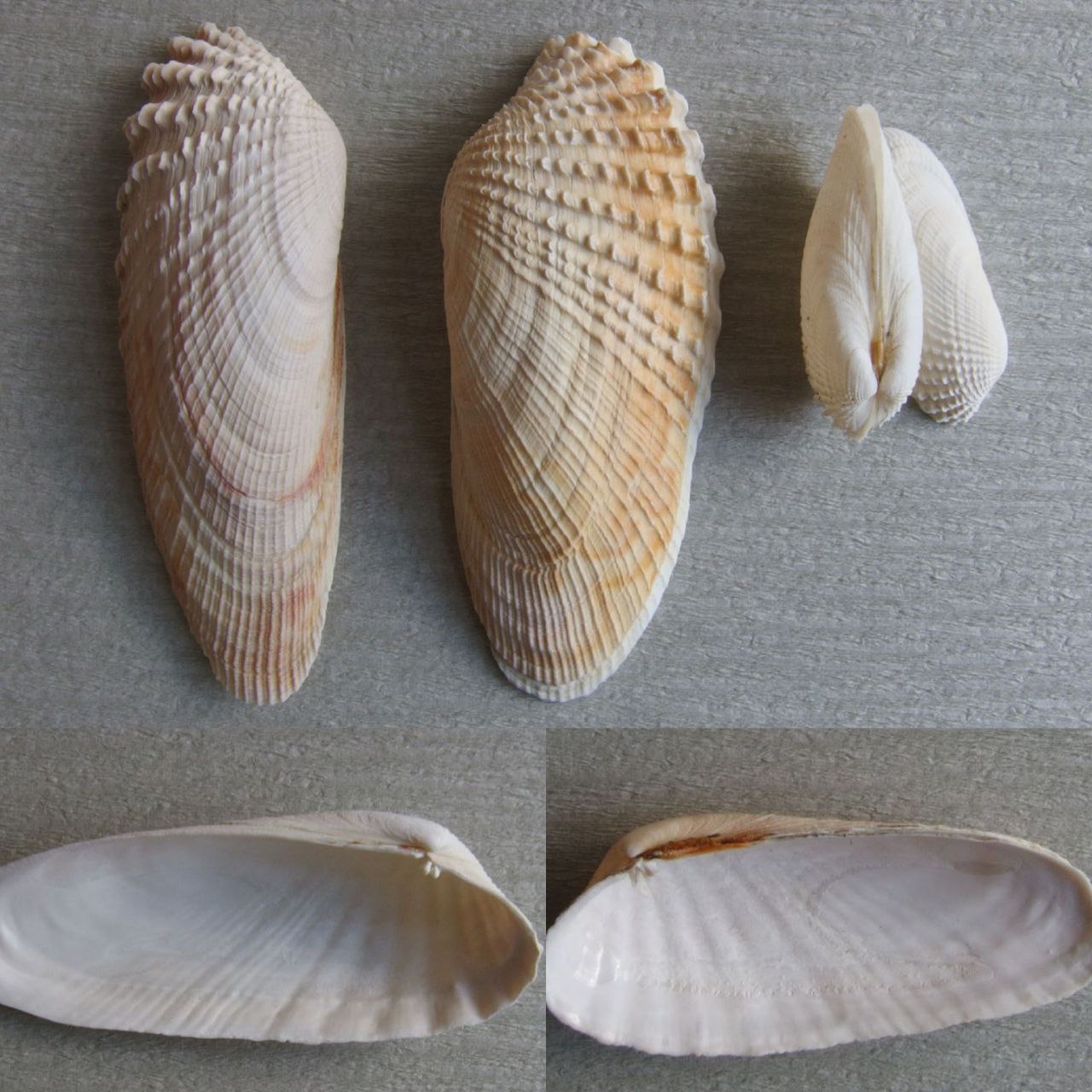
Petricolaria pholadiformis | false angelwing
Up to 6.5cm
Elongated thin shells set with concentric and radiating ridges, around 10 especially pronounced ribs on the anterior end. 3 cardinal teeth in the left valve, 2 in the right.
White or yellow-ish, rarely ranging to a bright orange. The inside smoother, although the ridged on the other side are still apparent. Can occasionally still be found in situ, more often than other (real) boring clams. Introduced from North America at the beginning of the 20th century.
Heteroconchia > Imparidentia > Venerida > Veneridae
Veneridae
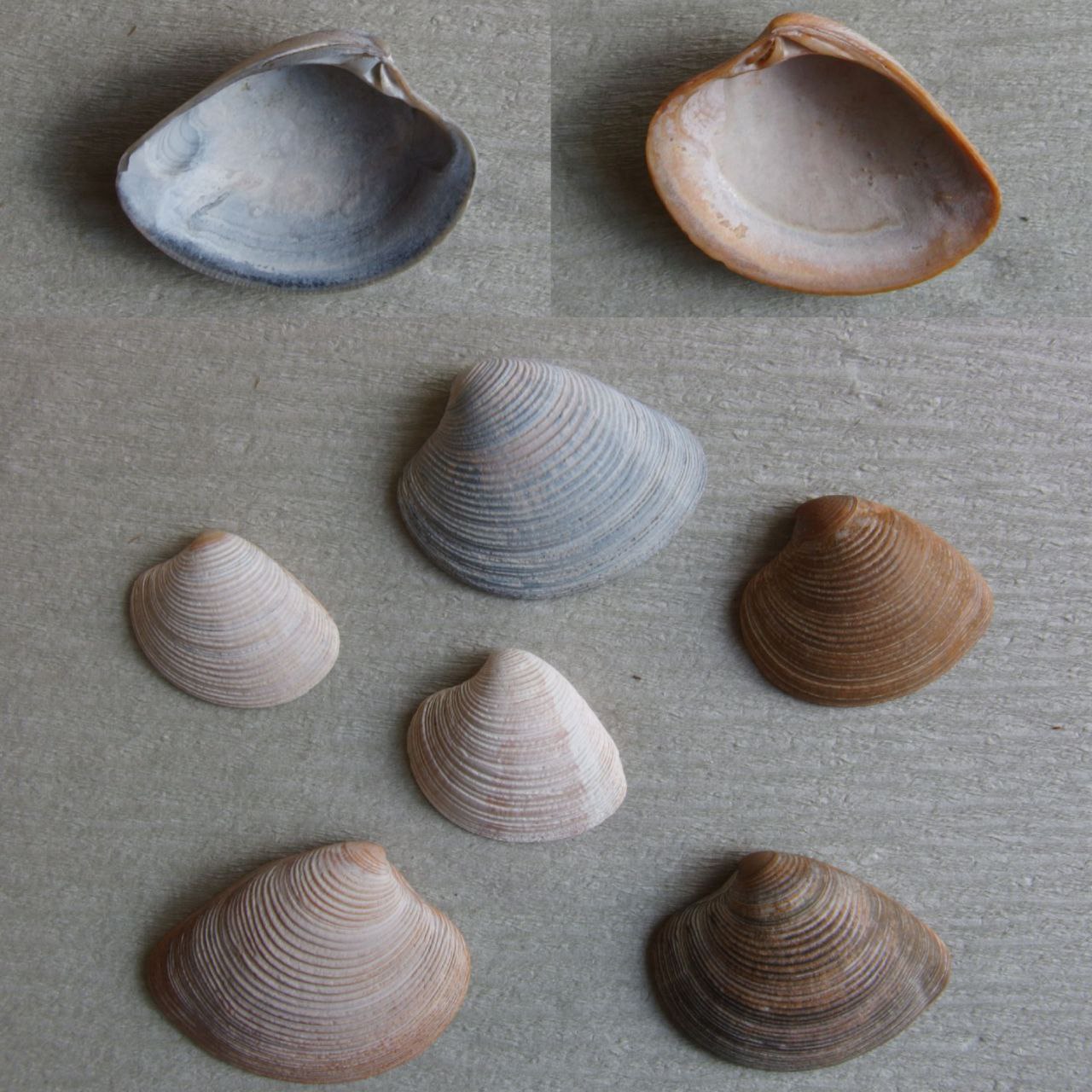
Chamelea striatula | striped venus clam
Up to ~3cm.
Almost triangular very flat shells with a bent, forward pointing umbo. Pronounced concentric ribs and a crenelated inner margin. The thick shells are only very rarely found broken or bored into. Three cardinal teeth per valve as is typical of venus clams.
Light brown or beige with darker zig-zag patterns or rays. Older or fossil shells typically unicolour, brown, grey or blue - these make up the vast majority of specimens found on Juist. Distinct from the rounder, more convex mediterranean Chamelea gallina.
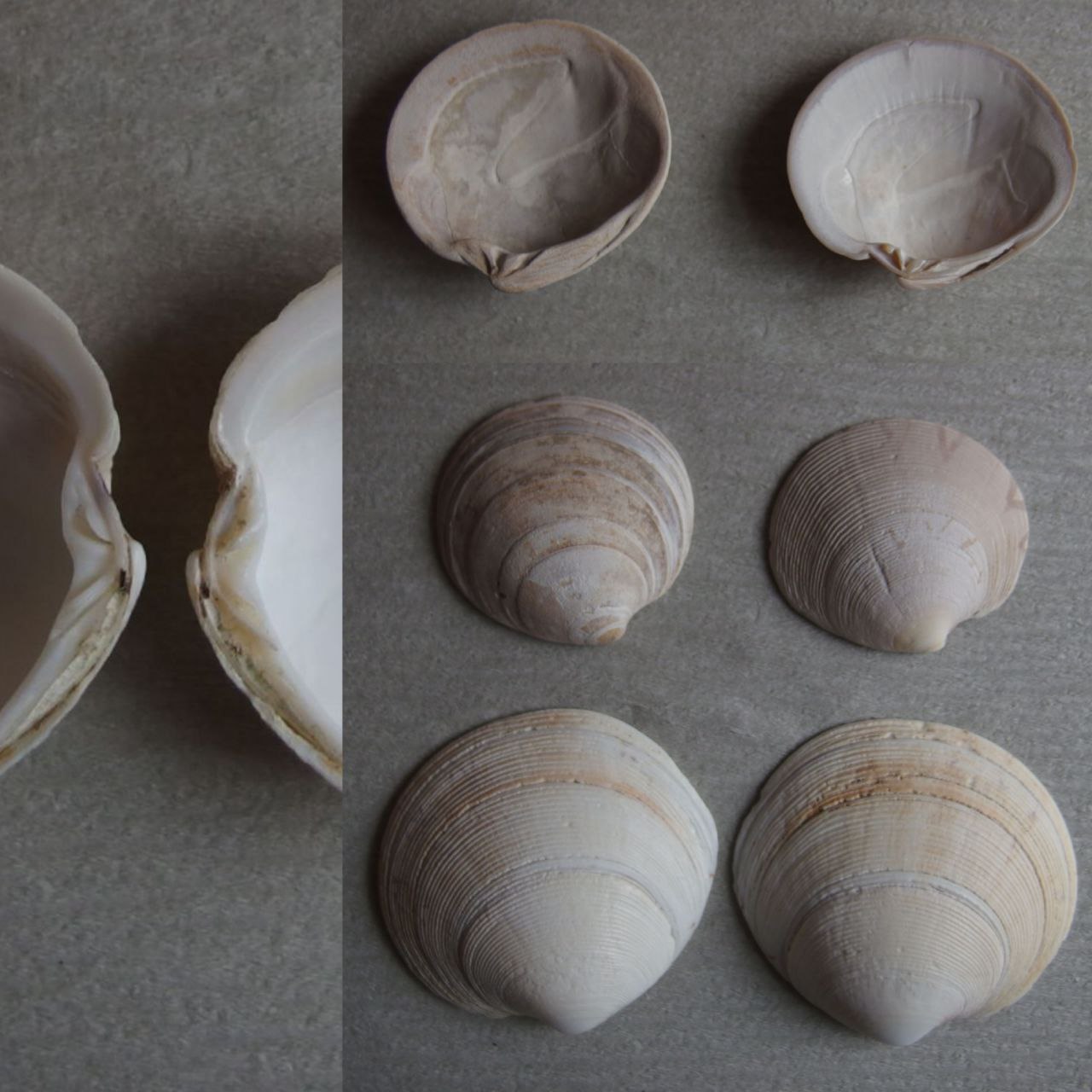
Dosinia exoleta | rayed artemis
Up to 6cm.
Thick nearly circular shells with a forward pointing umbo and visible growth lines.
The outer surface off-white or yellow-ish with a pattern of darker zig-zags. The inside glossy and lighter. Typically found as fossils, but especially recently also recent.

Timoclea ovata | oval venus
Up to 1.5cm.
Tiny, roughly triangular shells with radiating ribs almost resembling a cockle. Flat, usually with visible concentric growth rings. Easily distinguished from a cockle by the hinge, which is flat with 3 cardinal teeth as is characteristic of venus clams.
Brown or grey; so far we have only found fossil specimens on Juist.
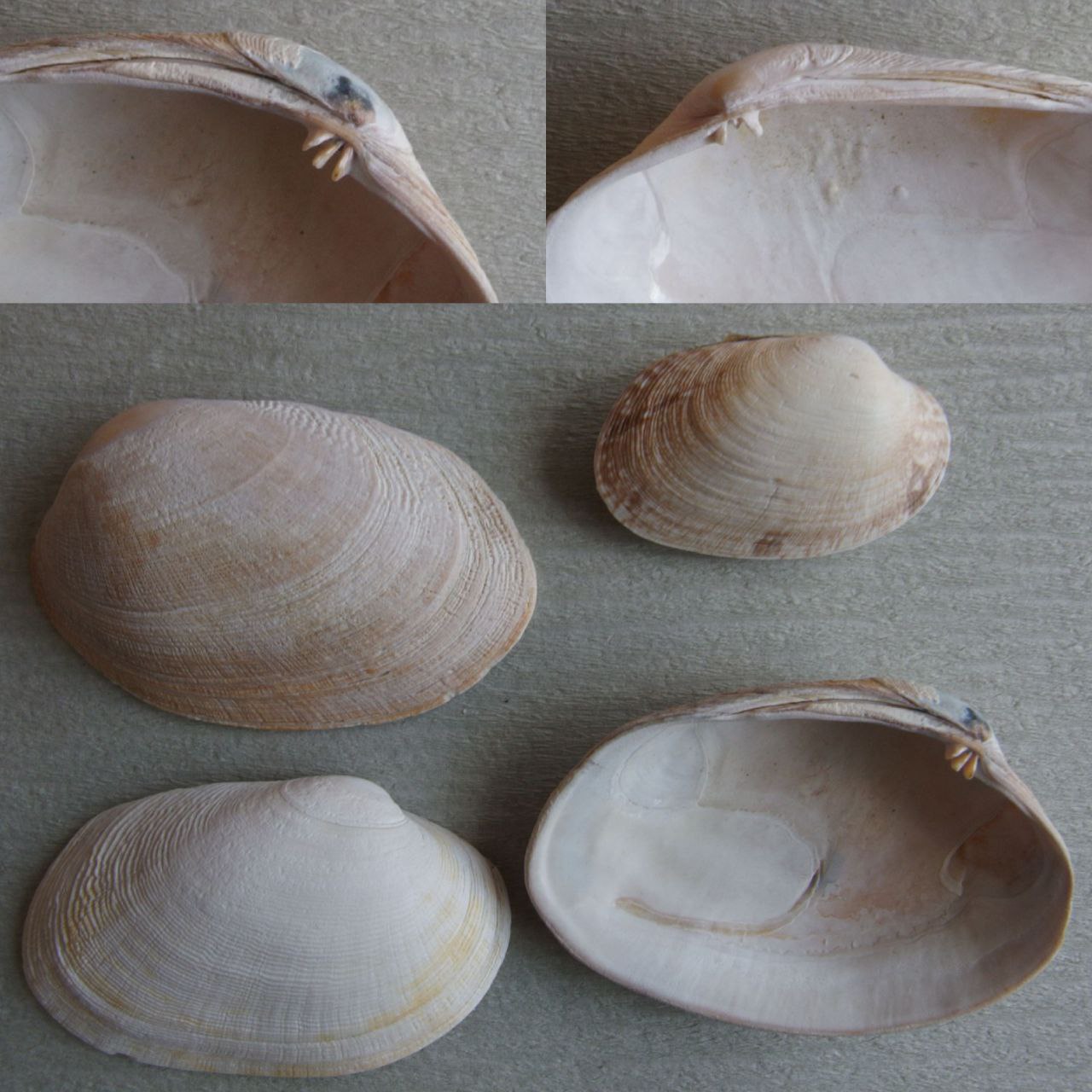
Venerupis corrugata | pullet carpet shell
Up to ~6.5cm.
Angular carpet shells with slight concentric and radiating ridges which are the most pronounced right behind the umbo. 3 cardinal teeth in each valve which overhang the hinge plate. The pallial sinus is large and angular.
The outside surface beige, light brown or yellow-ish with darker patterns, the inside lighter, sometimes purple. Smaller, articulated specimens are not infrequent.
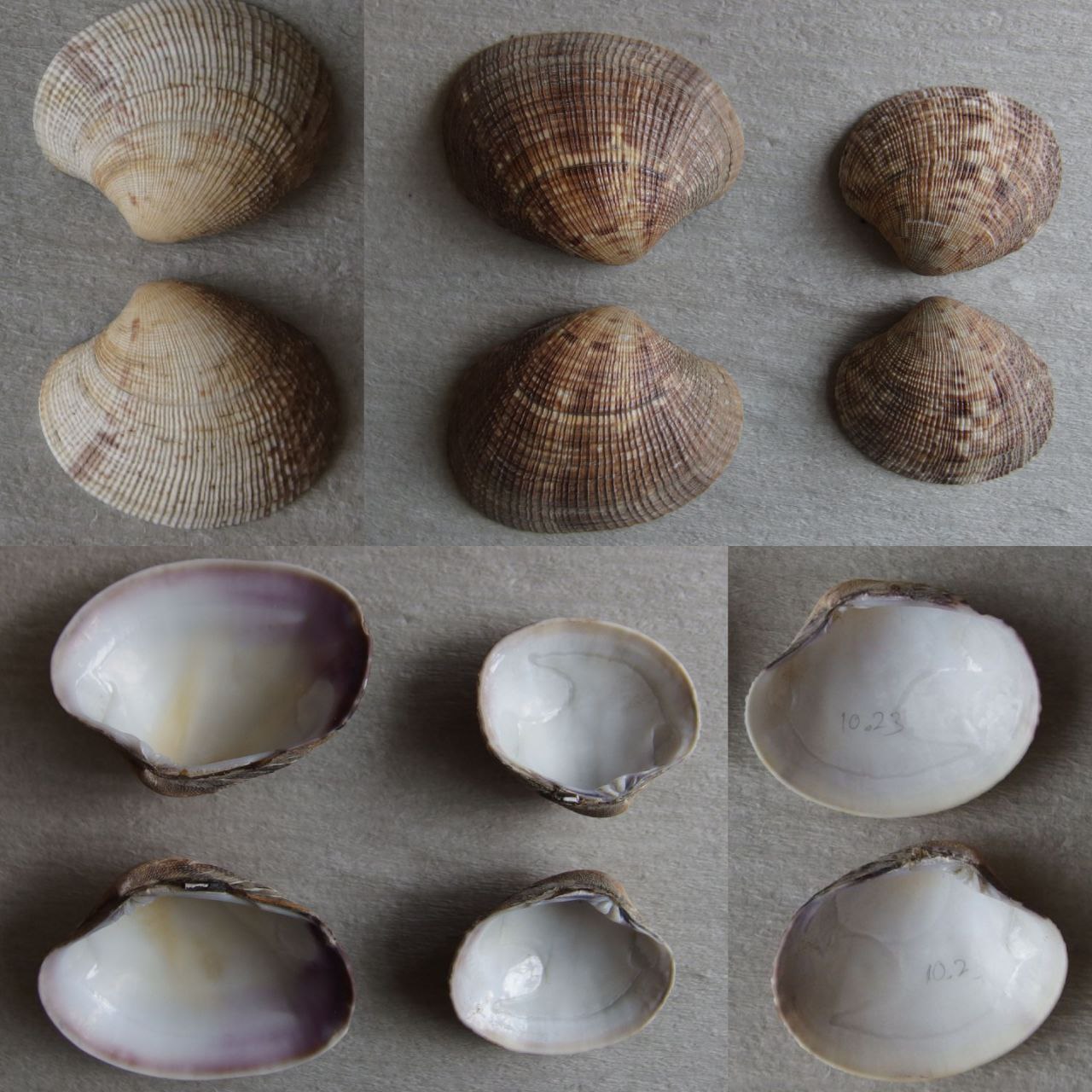
Ruditapes philippinarum | manila clam
Up to ~6cm.
Solid variably shaped carpet clams with typically extremely pronounced concentric and radiating ridges. Occurs along a gradient of two archetypes: one very round and convex with a very thick shell, the other thinner, an elongate shape more akin to Venerupis corrugata. The pallial sinus tapers and is much smaller than that of our native carpet shell. The 3 cardinal teeth in each valve do not overhang the hinge plate. Typically found still articulated.
Highly variable in colouration, typically off-white with dark brown or black patterns. The inside often yellow or purple. Brought to Europe as a commercially exploited resource, the species reached the wadden sea around Juist in 2023.
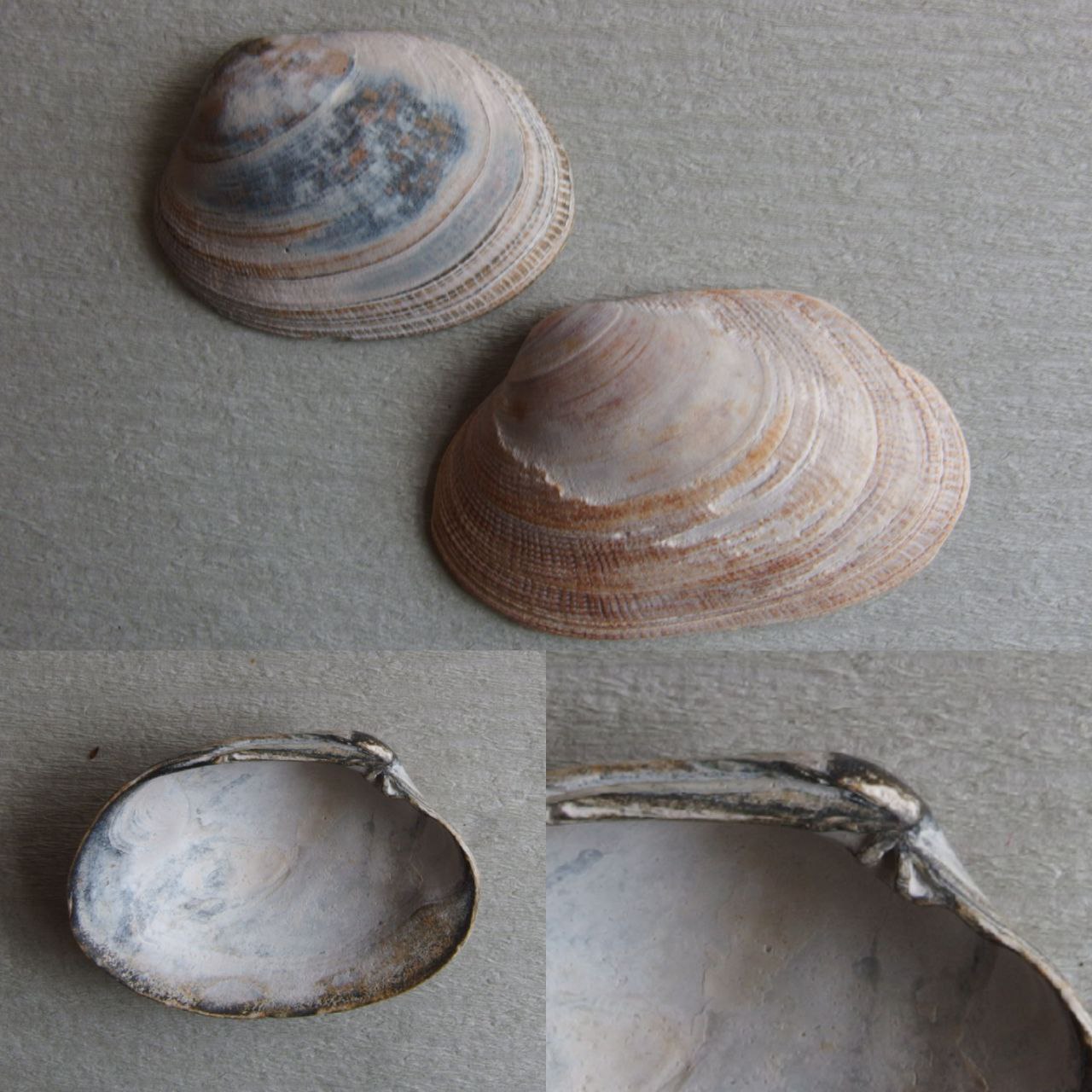
Ruditapes decussatus | grooved carpet shell
Up to ~6cm.
Nearly oval carpet clams with pronounced radiating and concentric ridges. They resemble the introduced Ruditapes philippinarum, but only occur as fossils this far north. The small tapering sinus distinguishes them from fossil Venerupis corrugata.
Usually blue-ish, grey or brown. Very rare, but found more frequently at the island's extremities.
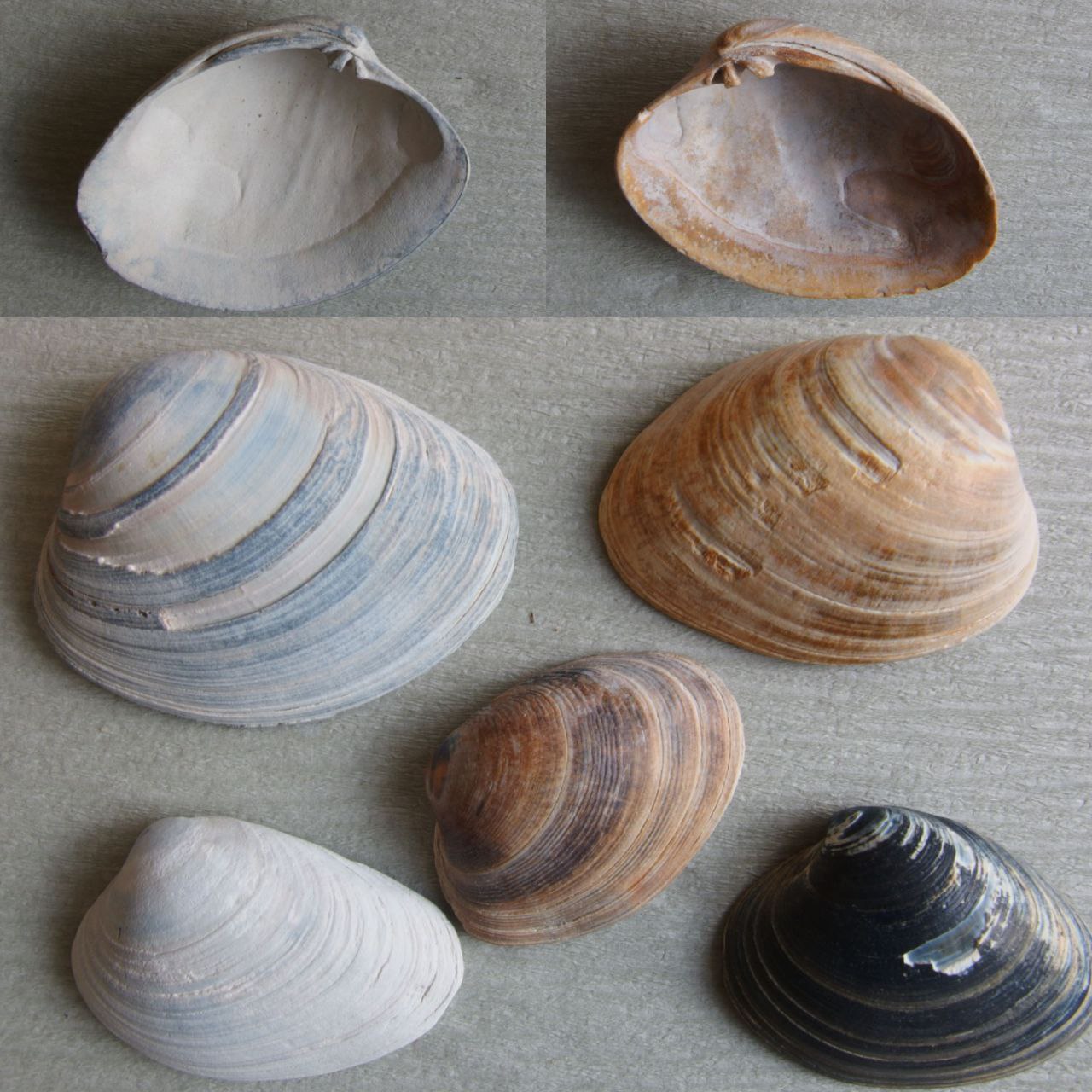
Polititapes senescens | fossil carpet shell
Up to ~7cm.
Elongate fossil carpet shells with a pointed posterior end and a forward pointing umbo. Varying from oval to almost triangular in shape. Only concentric ridges are present, the pallial sinus is rounded and only the middle tooth of the 3 cardinal teeth in each valve notably overhangs the hinge plate.
Commonly brown, blue-ish or shades of grey. This eemian fossil species closest relative is likely Polititapes aureus, which lives in warmer waters. Not an uncommon find, but rarely in good condition.
Sources you might find helpful:
- WoRMS - the authority on up to date bivalve taxonomy
- idscaro - a wonderful rundown of mediterranean mollucs, including reference images and historical sources
- Peeterke - reference material for a lot of fossil bivalves (dutch)
- Natural History Museum Wales - a wonderful anatomy overview plus good reference material of recent shells
- MarLIN - some information about how the actual animals live, but a limited number of species
- Girscher 1938 - overview of Juist's cockles, venus clams and trough shells (german)
- 114 Strandvondsten - overview of beach finds (dutch)
- Strandvondsten: Terminologie - list of dutch bivalve terms
- DORIS - every article includes a 'similar species' section (french)
- Mollusca Types - has photos of some british species' types
- Natuurtijdschriften - access to nearly all bivalve literature ever published in dutch! AND searchable
- Shellers from the Past & Present - database on people who have published about molluscs and what they published
- Pectinidae - a whole website about scallops
Who are you anyway?
I'm a 25 year old biology student from Germany (they/them please) who got super into bivalves in pandemic times. I'm not too fond of modern social media, so learning to make my own website was the logical course of action! If you have any questions, pleas for help, death threats or corrections, please address them to ploengchen@gmail.com :)
You can also find me on my tumblr blog, which functions as a more illustrated version of this list.
